After breakfast at the W, we visited the huge Monument to Victor Emmanuel II followed by the Palazzo Venezia. After lunch, we visited the Basilica of San Giovanni in Laterano, the cathedral of the Pope. It was night by the time we left and got two gelatos on the way back to the W.
Morning
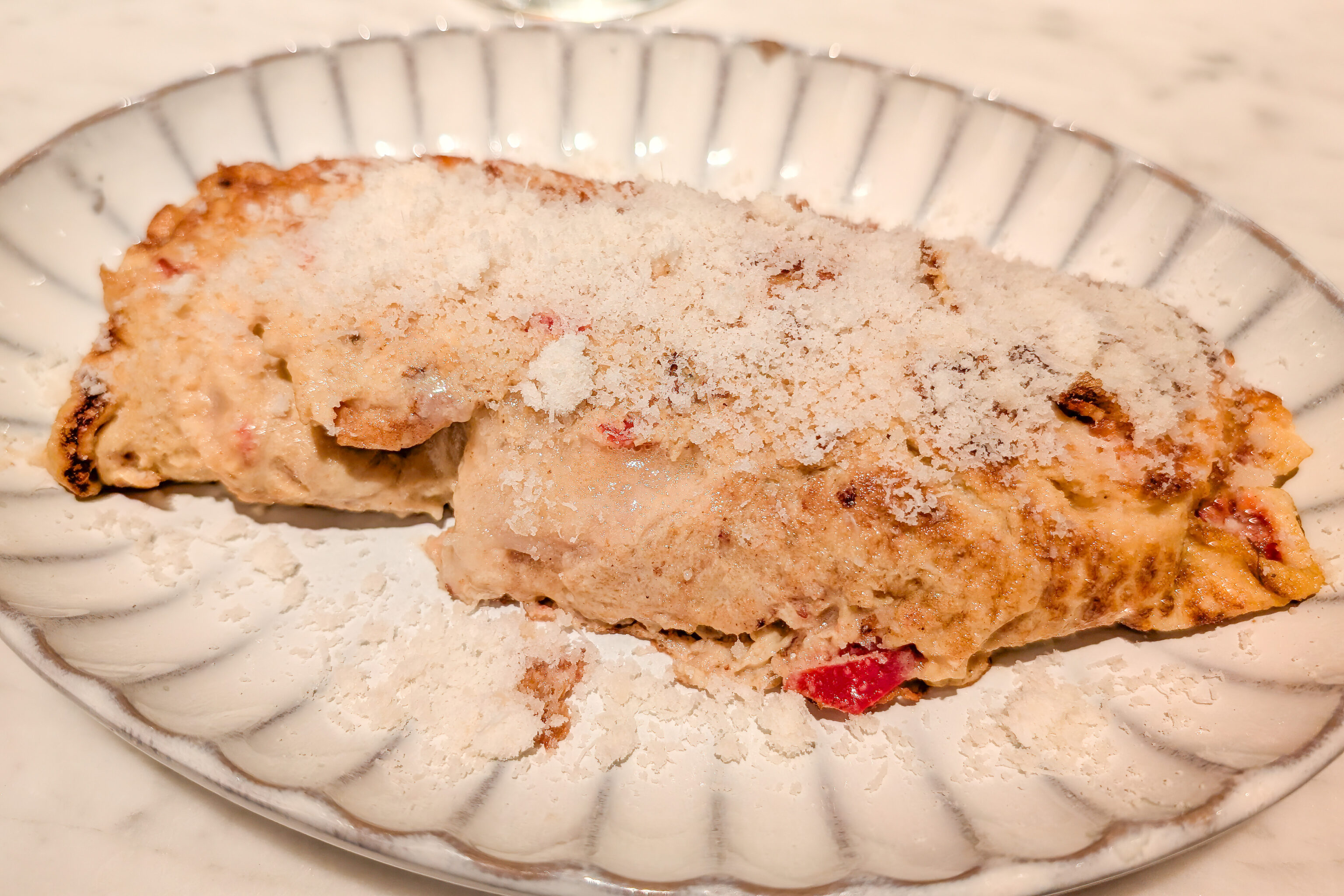
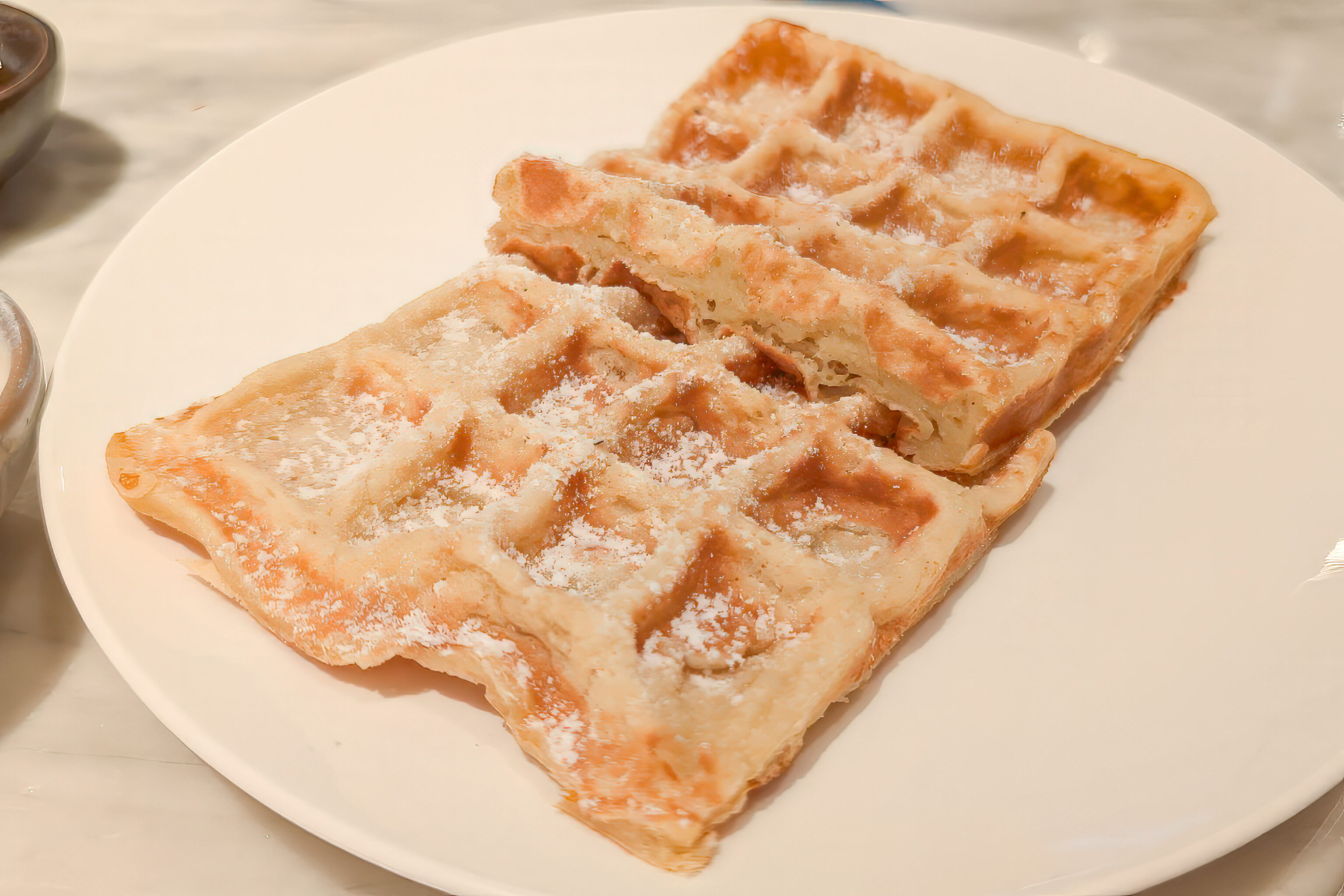

After waking up at the W Rome, we went downstairs for breakfast. We ordered an omelette and the waffles with raspberries. The omelette seems to very depending on who is preparing it.
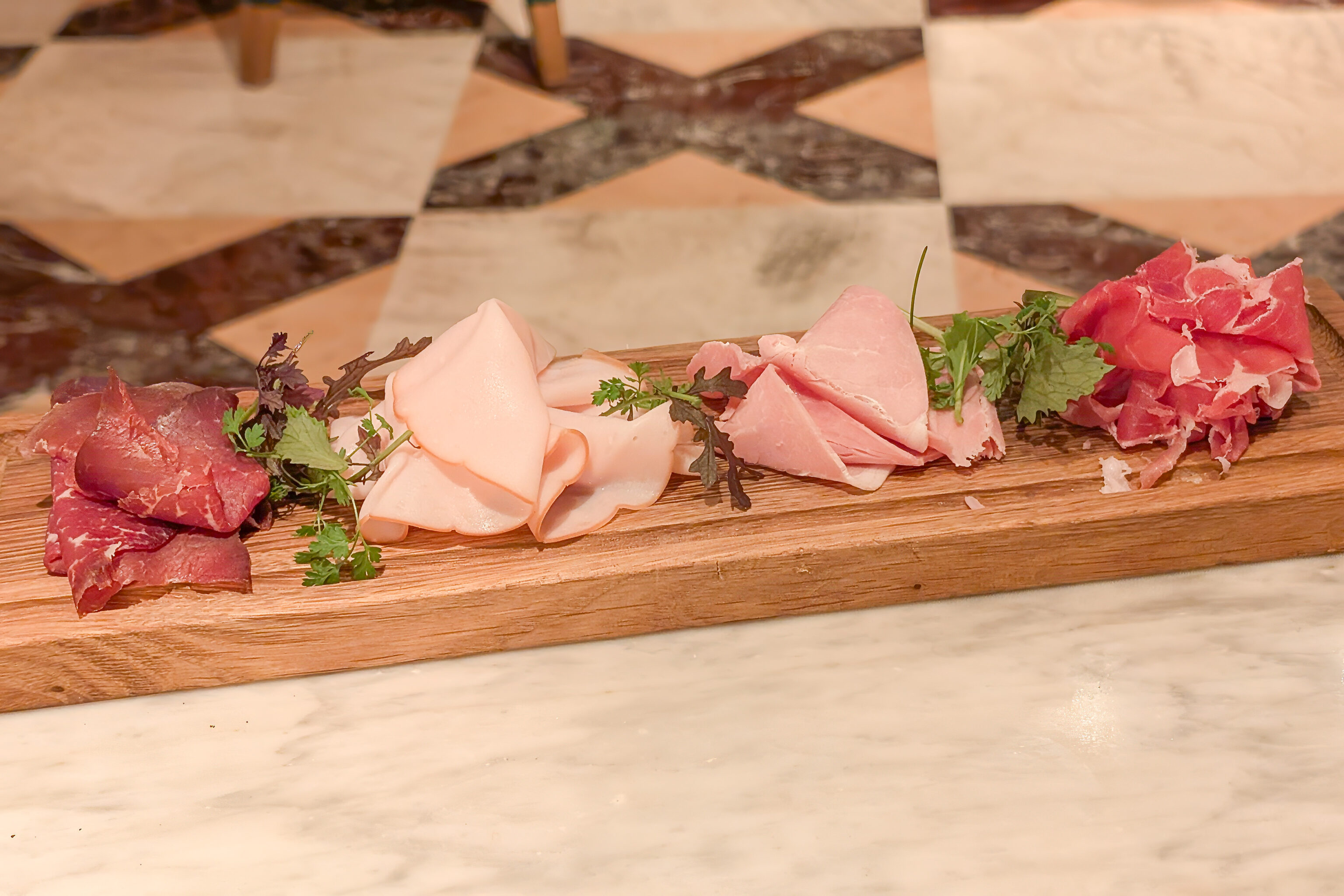
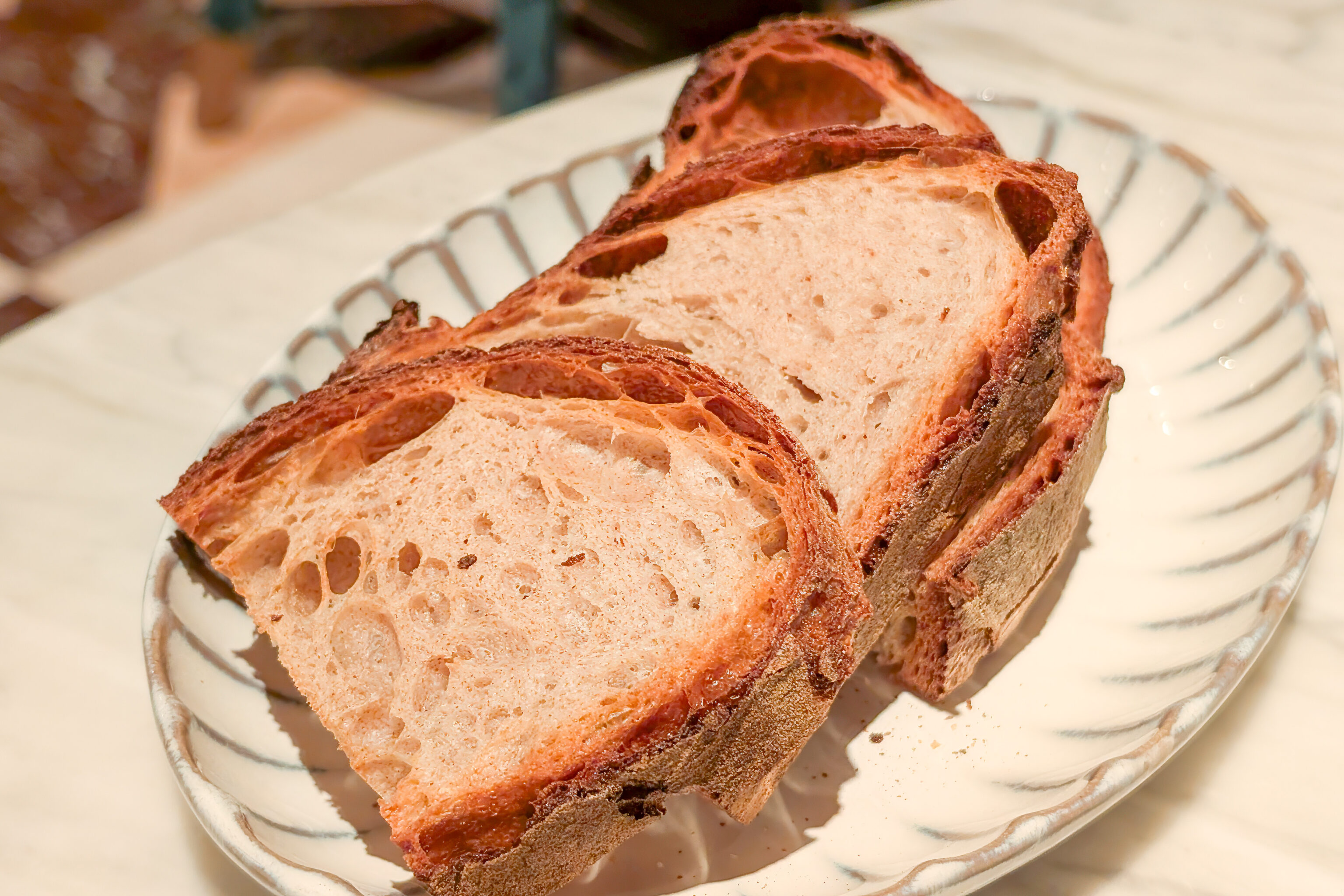

We also ordered the Selezione di Salumi, which comes with Parma ham, bresaola, ham, roasted turkey, and also ordered some toast and bacon.
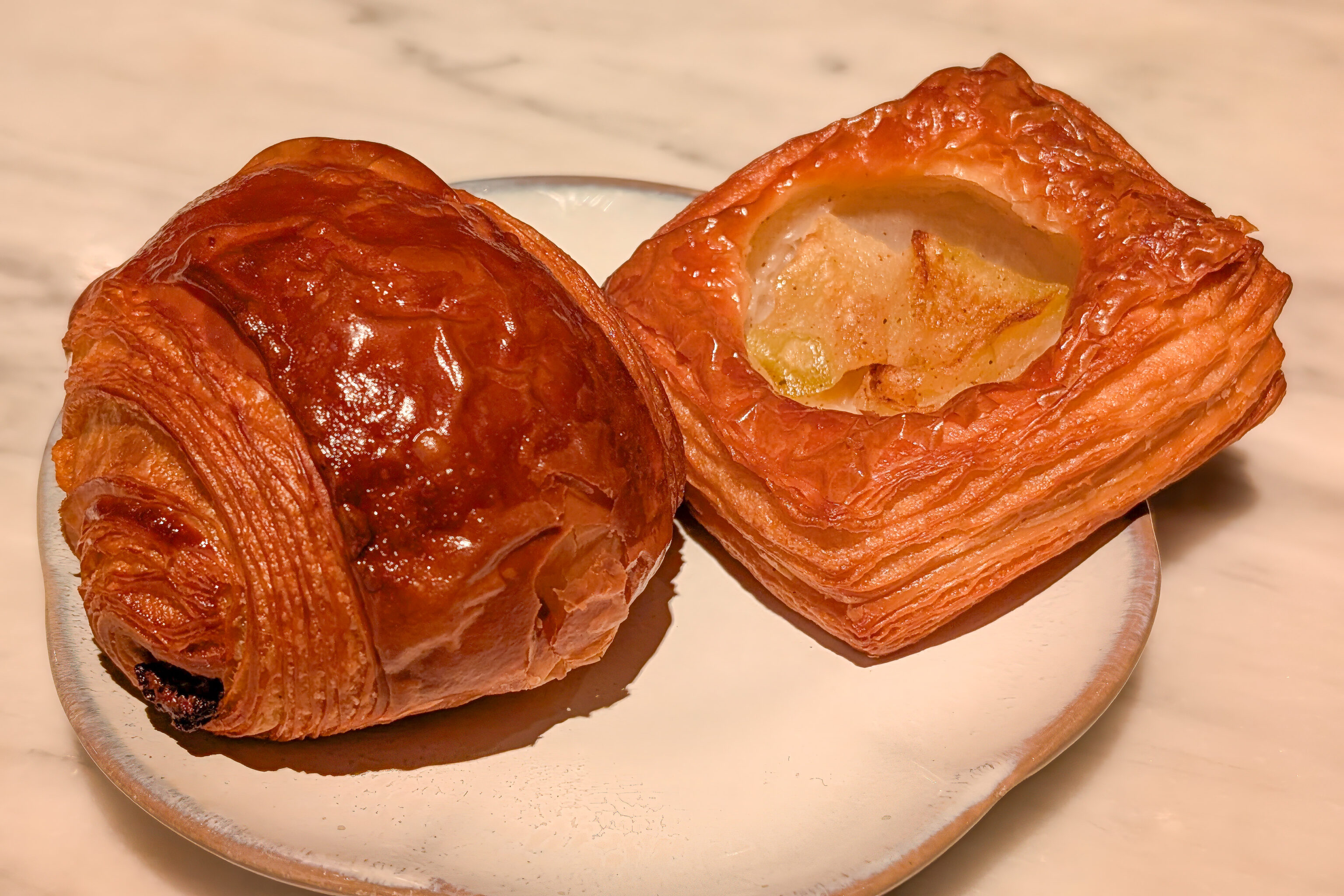

We also had some pastries that were offered and some cereal.
Monumento a Vittorio Emanuele II
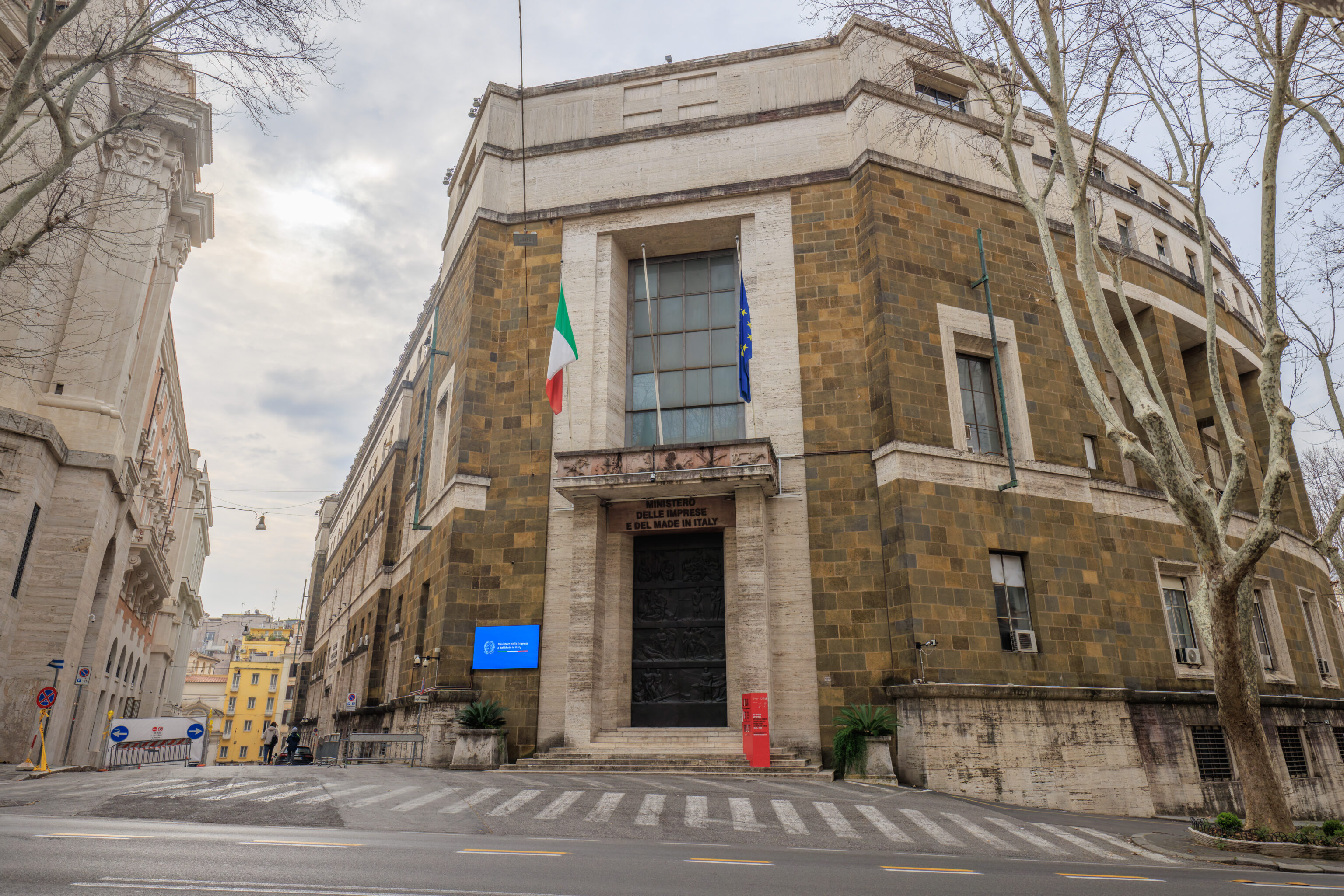
We went to a bus stop by the Piazza Barberini to take a bus over to the Monumento a Vittorio Emanuele II (Monument to Victor Emmanuel II). We came upon this building, the Ministero delle Imprese e del Made in Italy (Ministry of Business and Made in Italy).
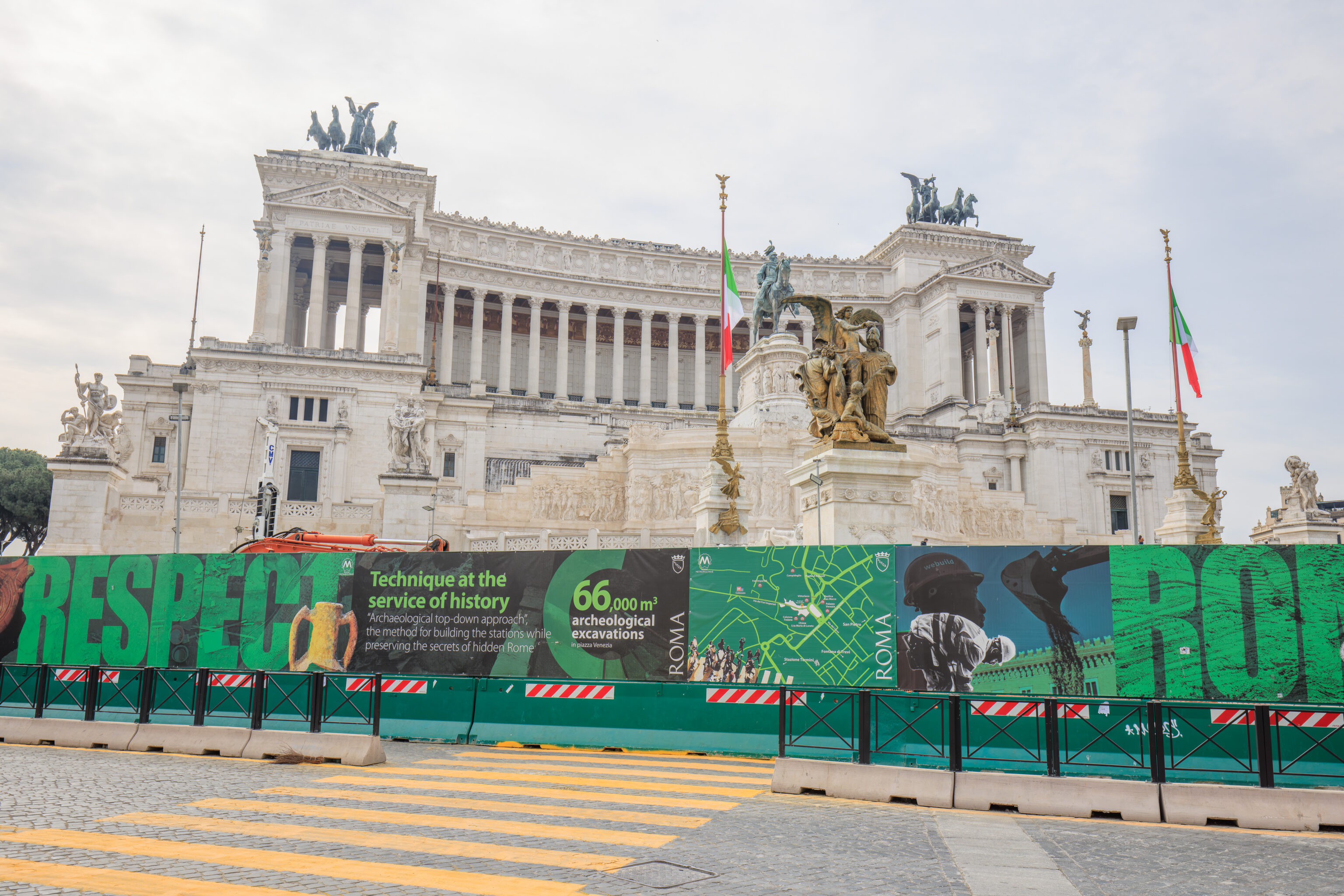
We arrived by the Monumento a Vittorio Emanuele II (Monument to Victor Emmanuel II) near where we switched busses yesterday evening on our way back to the W. We walked south to get to the monument.
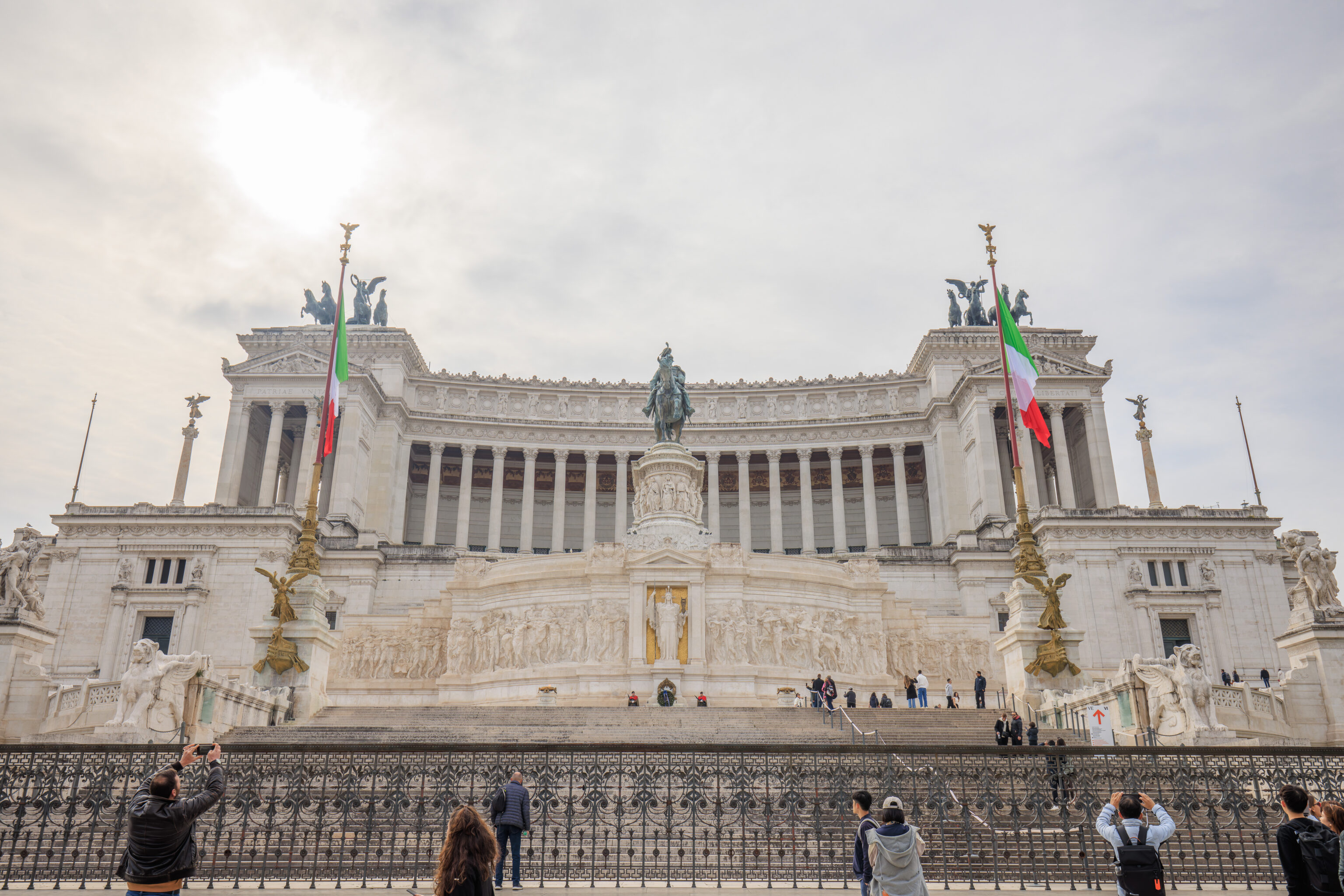
We crossed the street and ended up in front of the fence that spans the north side of the monument. We entered via an entrance to the right. The left side of the monument was closed off, leaving just one path up via the right side. Entrance to the monument building is free, though some places inside require tickets, which can be purchased on site.
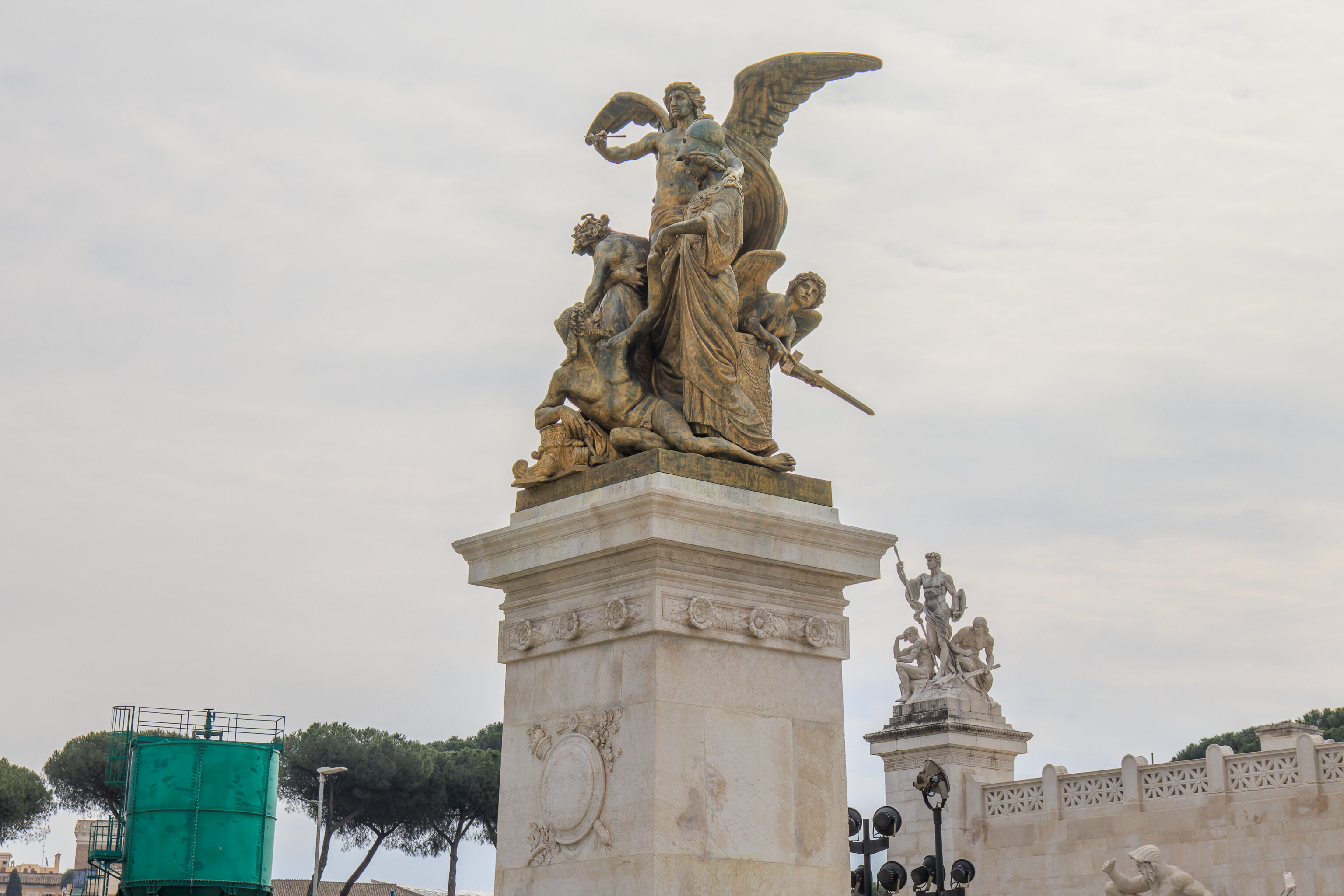
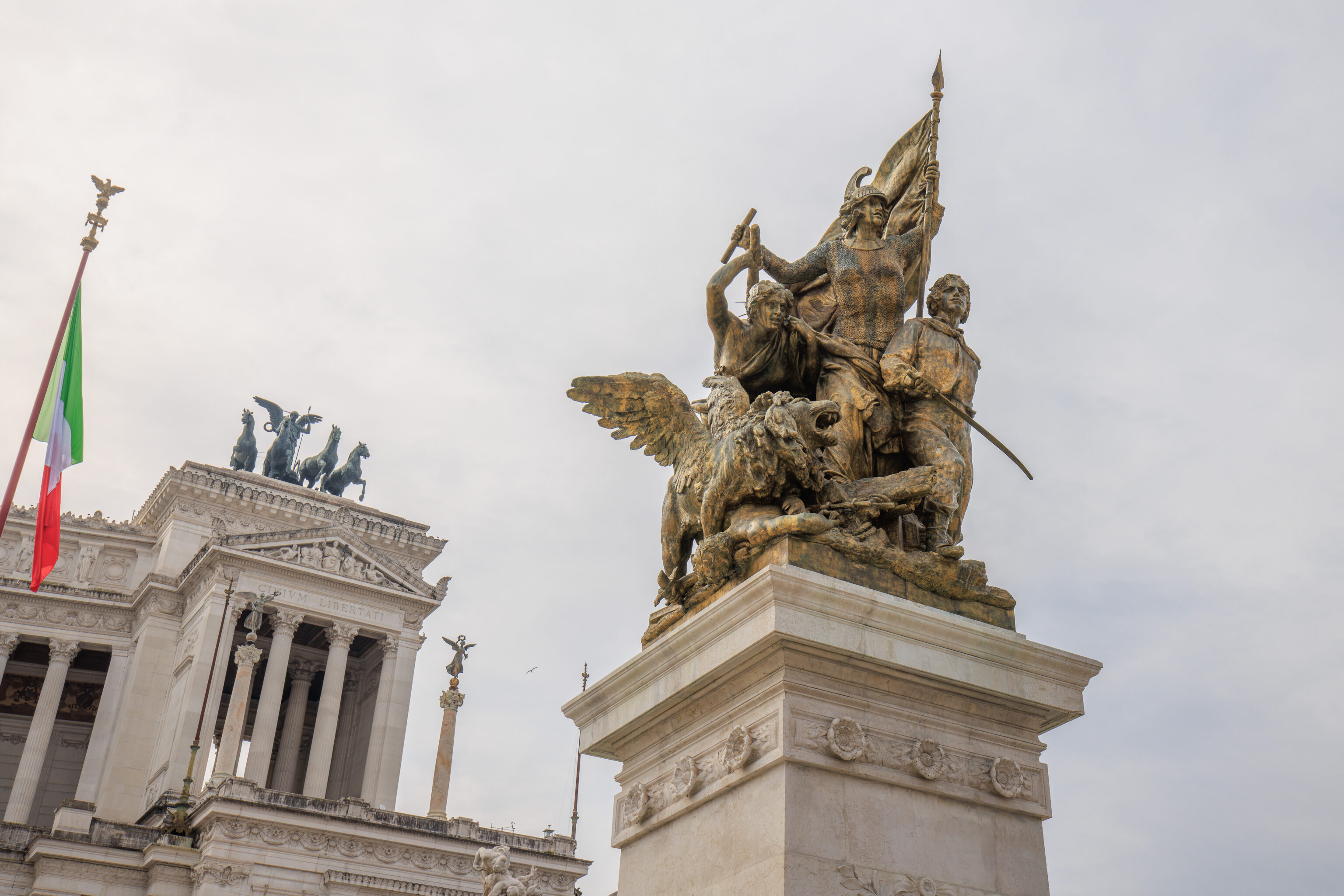

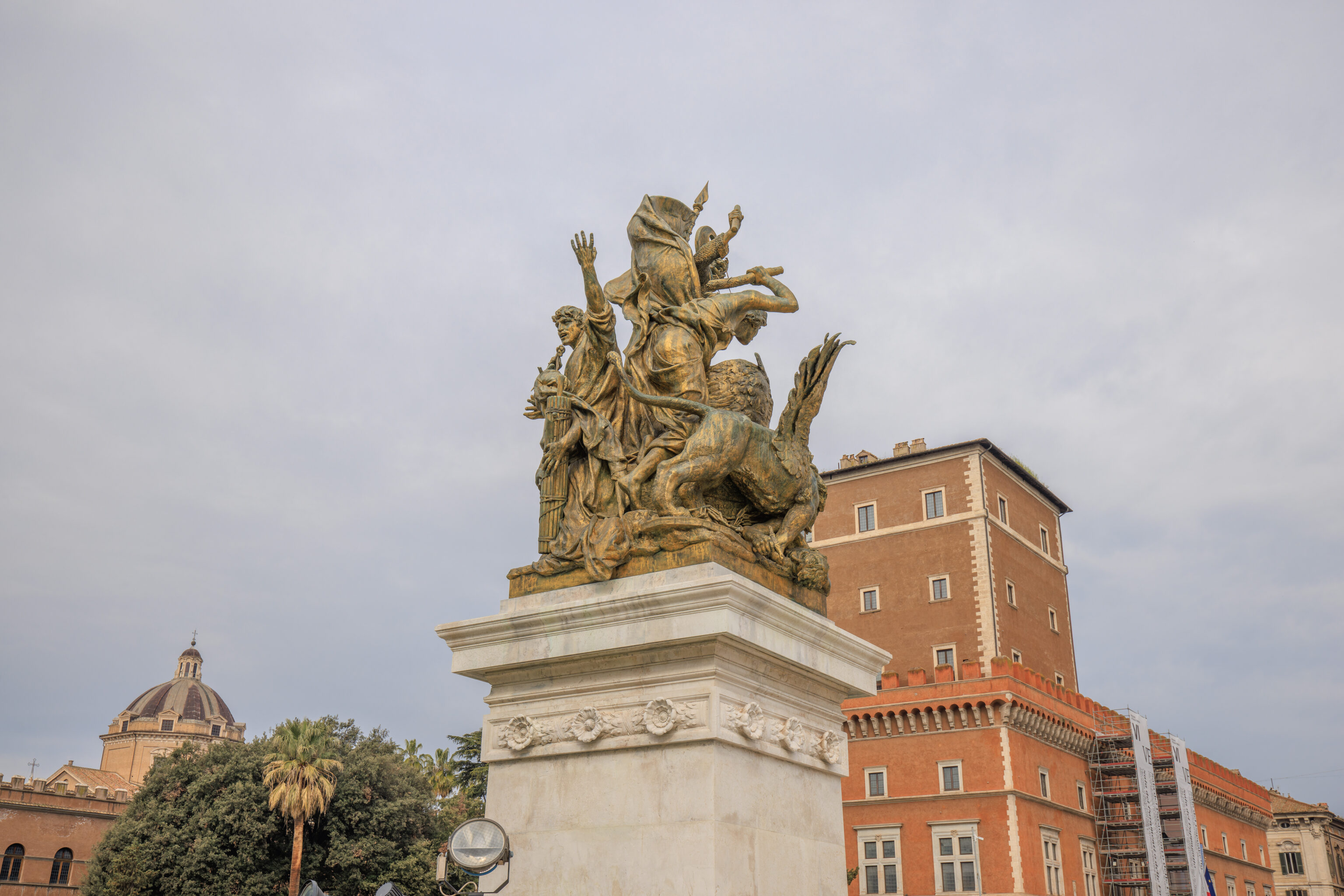
The monument has many sculptures in front.
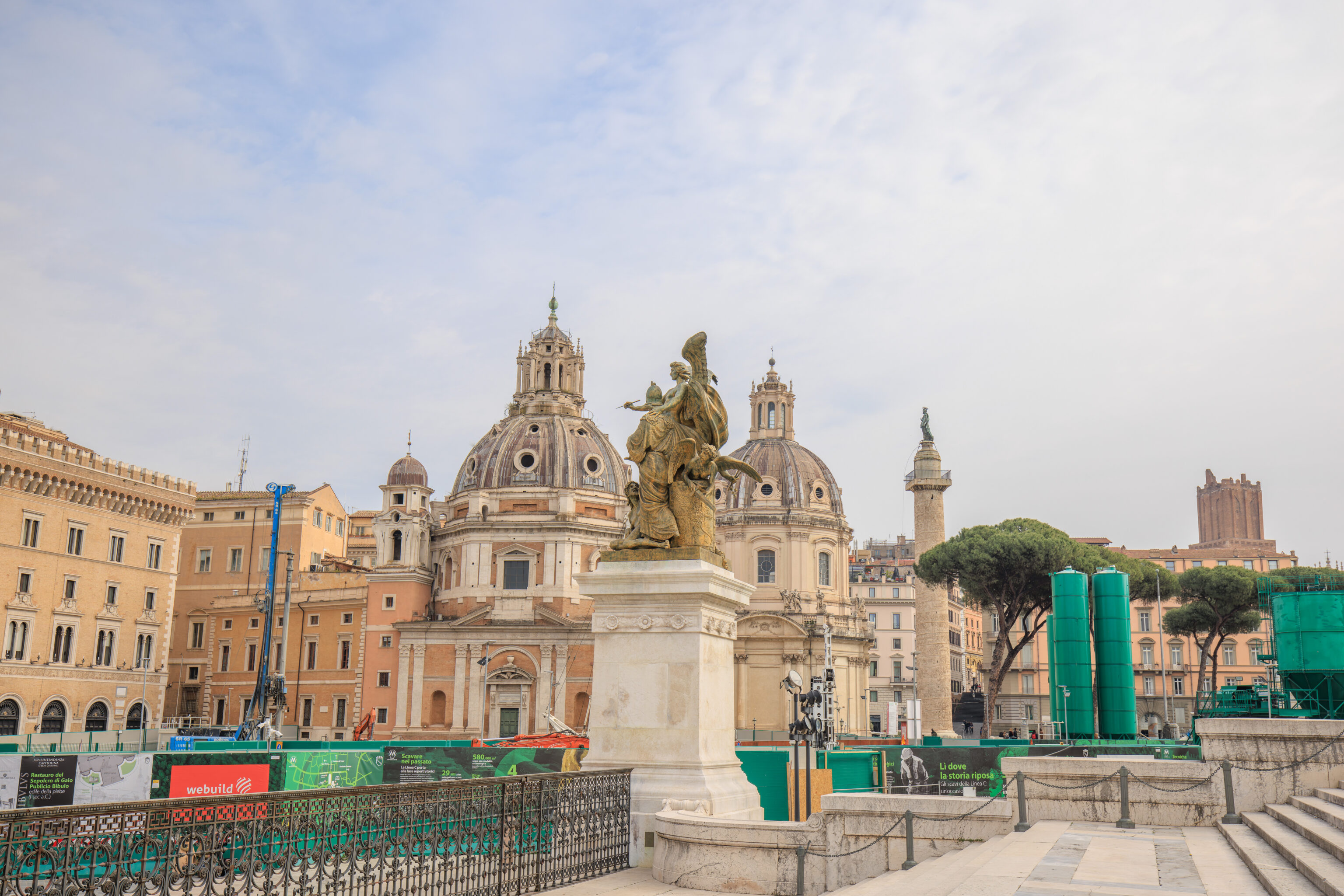
We started walking up the stairs in front of the monument.
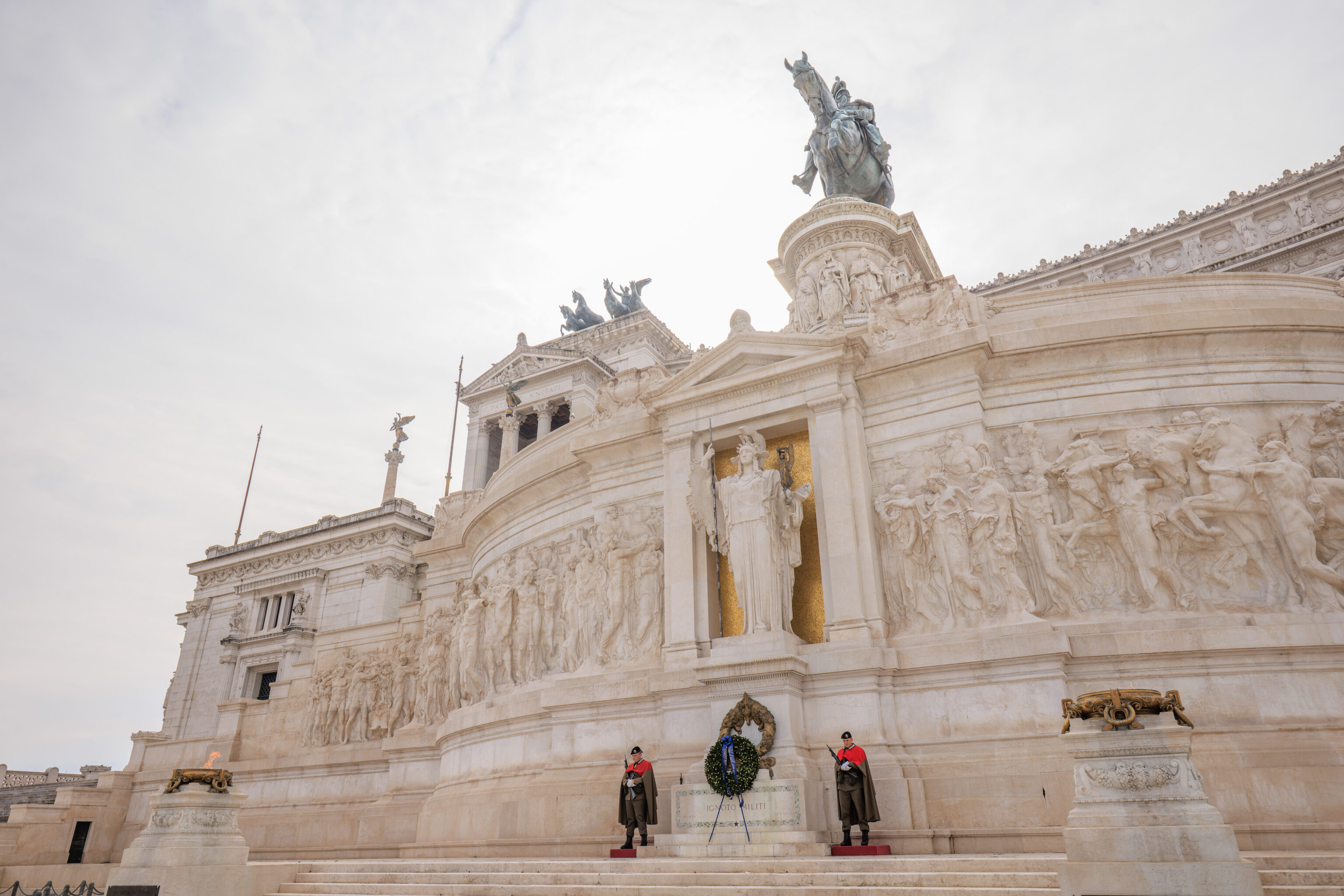
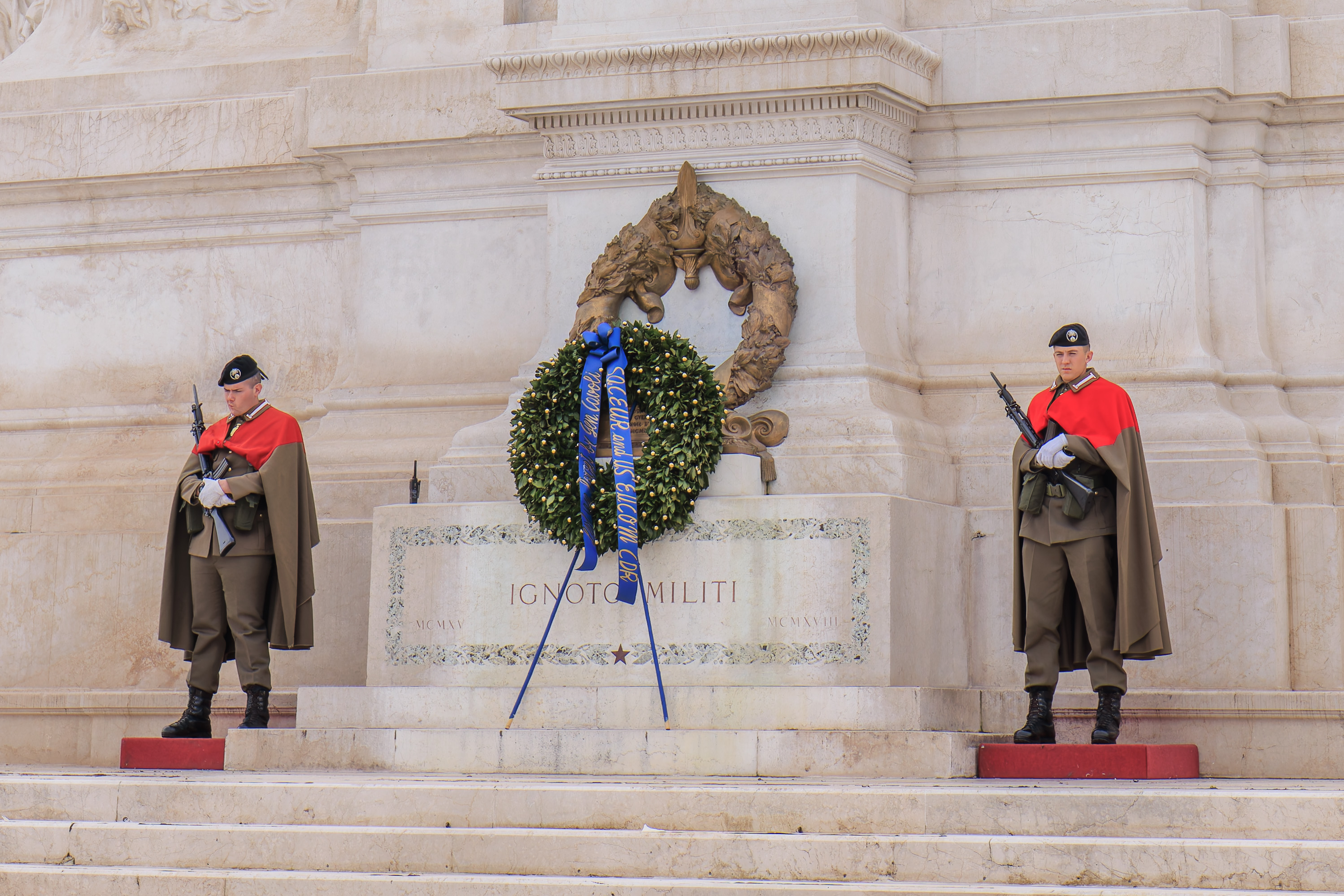
Two soldiers stood at the top of the first set of stairs at the Altare della Patria (Altar of the Fatherland). This serves as an altar to the goddess Roma (Rome) as well as the Tomba del Milite Ignoto (Tomb of the Unknown Soldier).
A nearby sign explains the marble sculptures in this area:
The four marble groups on the balustrade represent the founding values of the Kingdom of Italy at the beginning of the twentieth century, namely Strength, Concord, Sacrifice, and Law, from east to west. These groups were created by some of the best-known Itallan sculptors of the time: Augusto Rivalta, Lodovico Pogliaghi, Leonardo Bistolfi, and Ettore Ximenes, respectively. The first three completed their work in 1911, while Ximenes finished in 1912. Among these, Bistolfi's Sacrifice stands out for its great symbolic power. The sculptor depicts a soldier who, despite being close to death, continues to aspire to liberty. Supported by Slavery, In the form of a second man in shackles and chains, and by the female figure of The Comforting Family, The Sacrifice receives a kiss, or the final farewell, from The Genius of Liberty. The Sacrifice is considered one of the masterpieces of Italian Liberty style: the artist was able to avoid the risks of empty rhetoric, managing to instill real humanity in the characters.
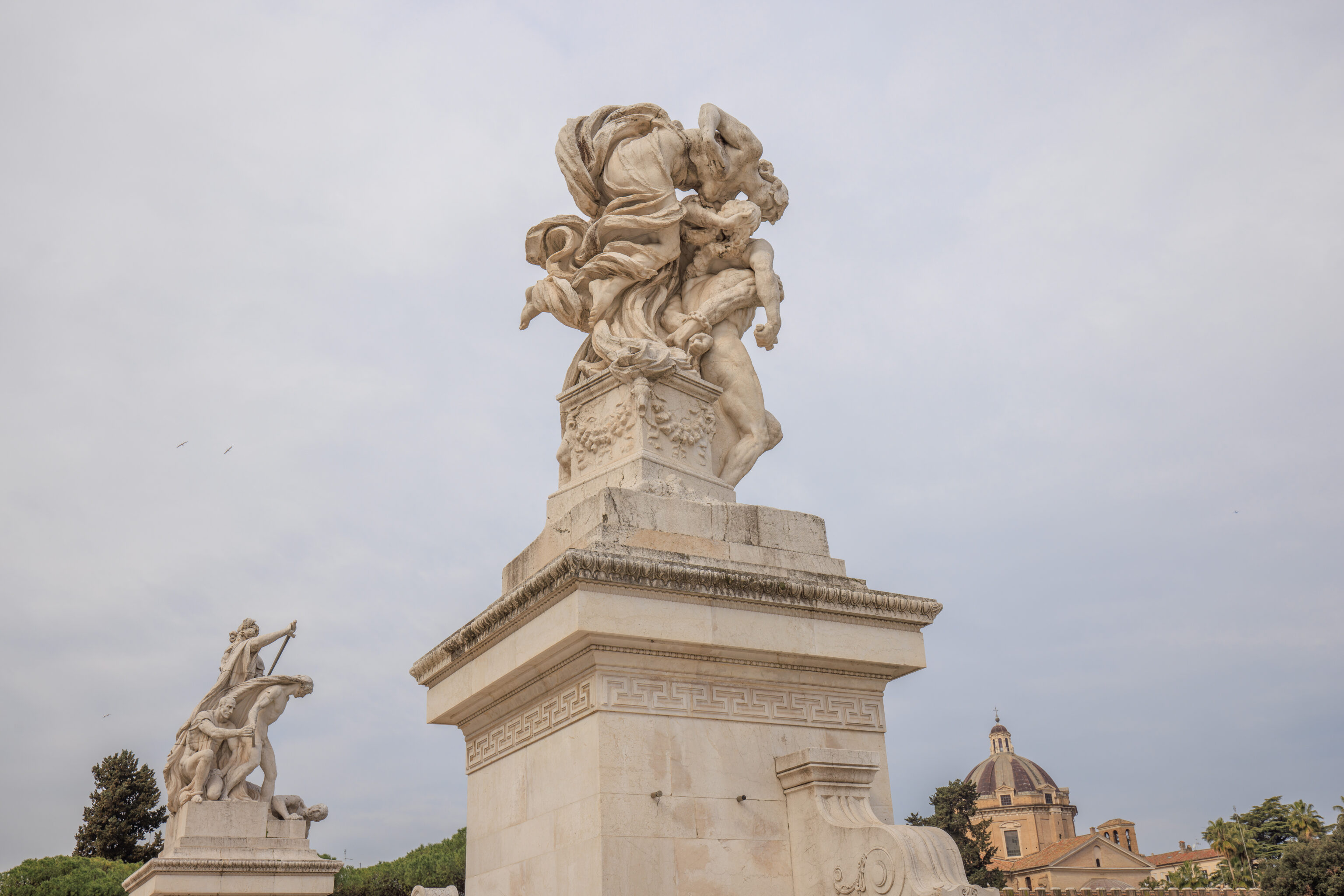
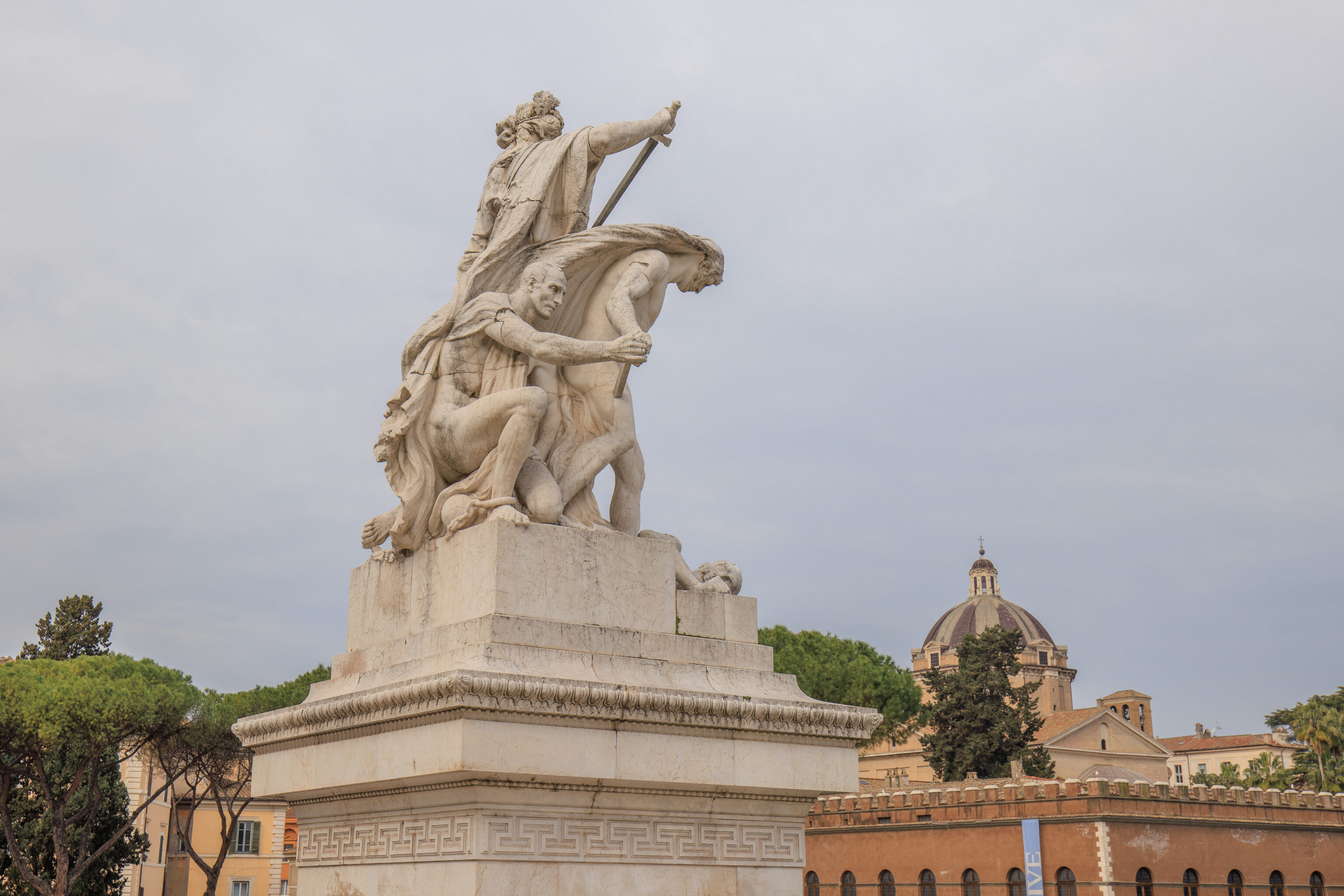
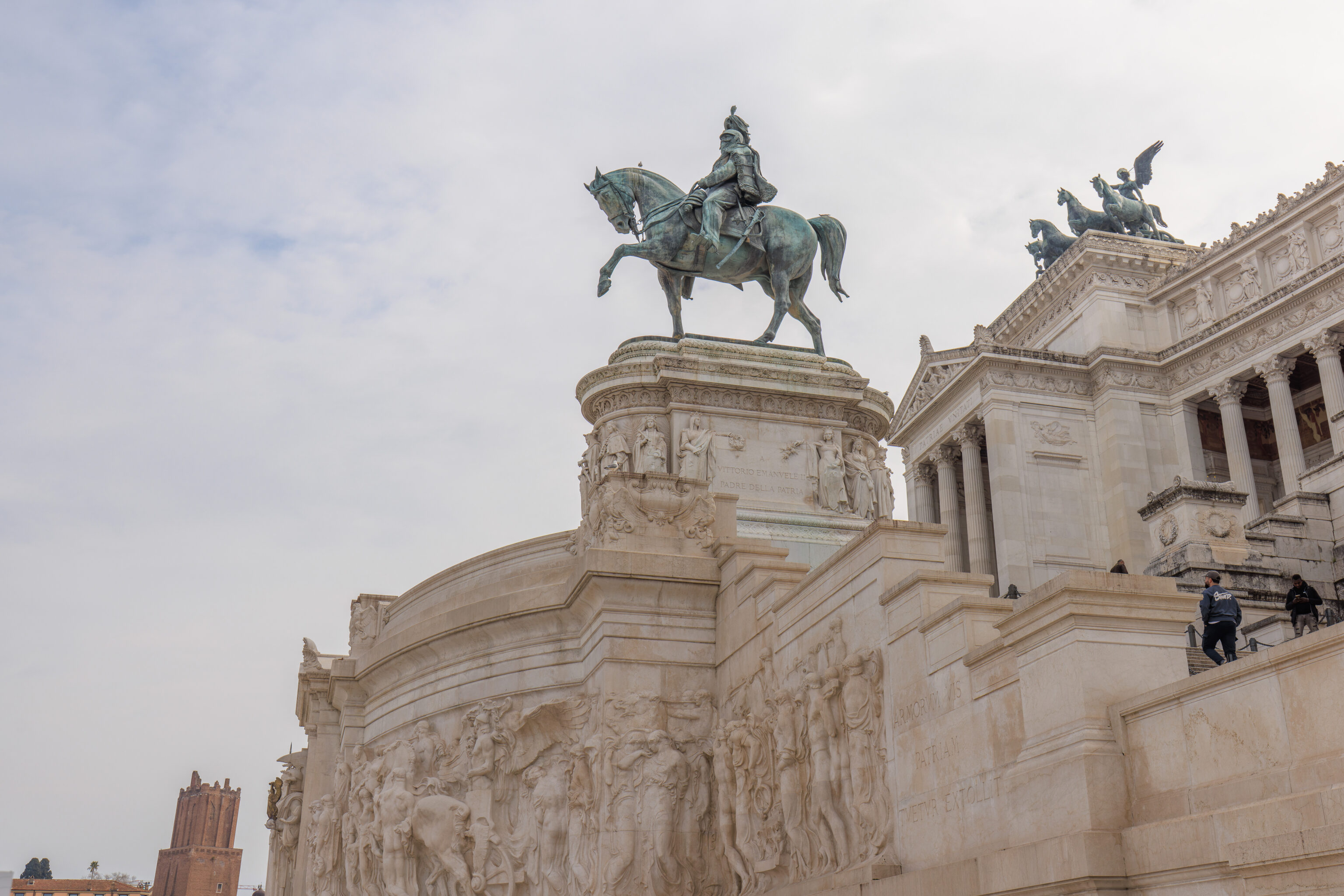
We continued up to the next level where there is an equestrian statue of Vittorio Emanuele II.
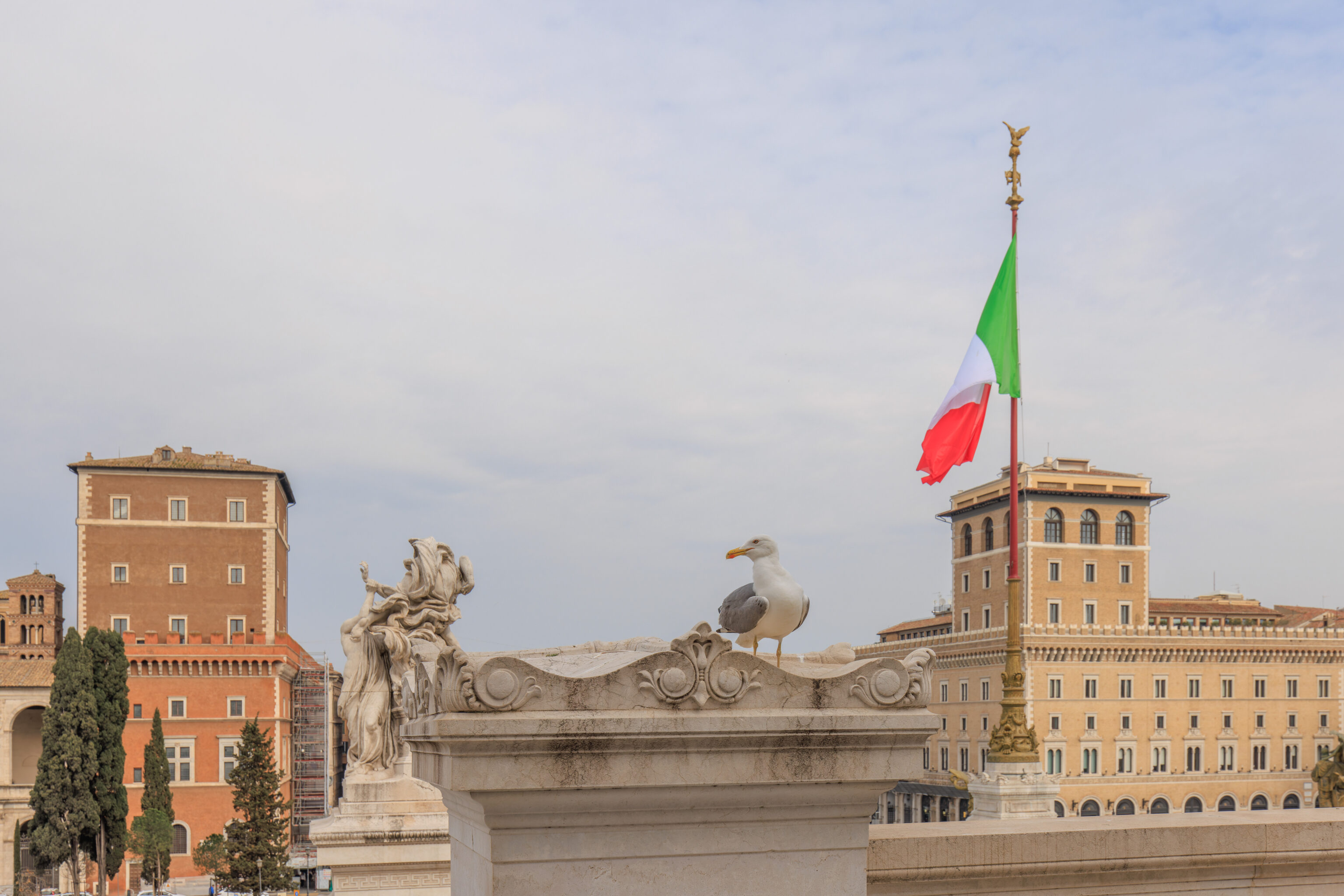
We came upon a gull who gladly posed for us.
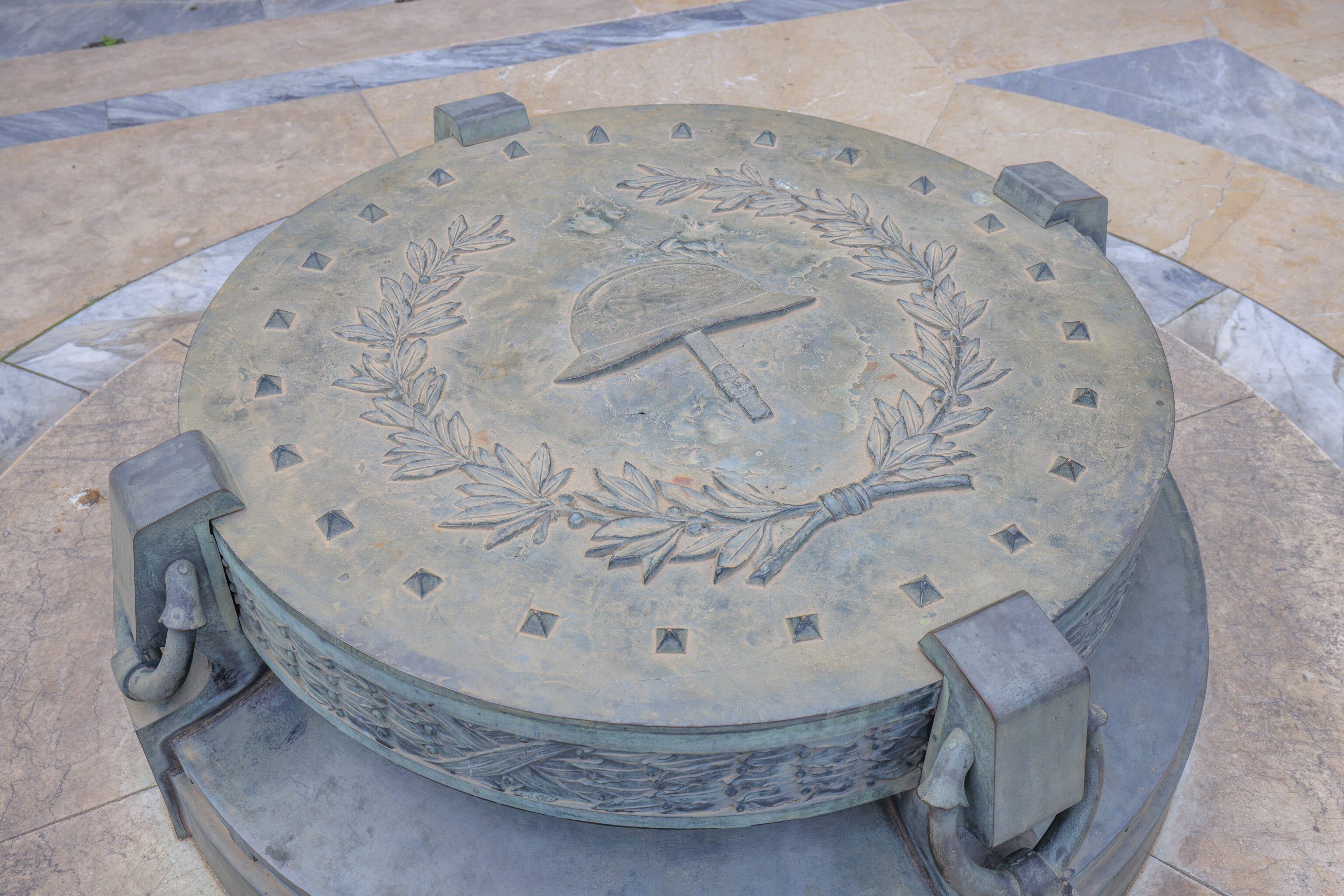
Is this some sort of memorial to soldiers?
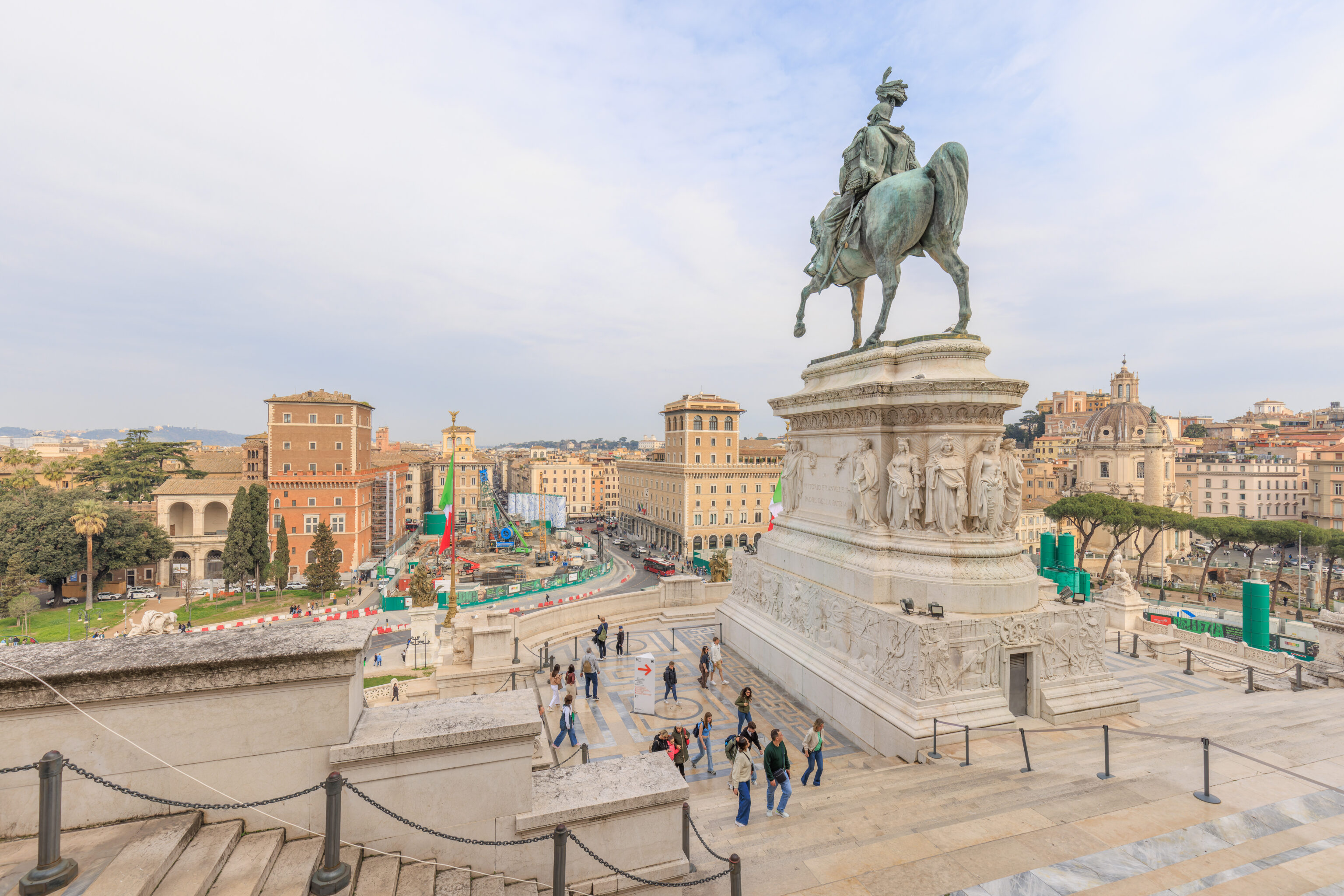
We continued walking up one more level.
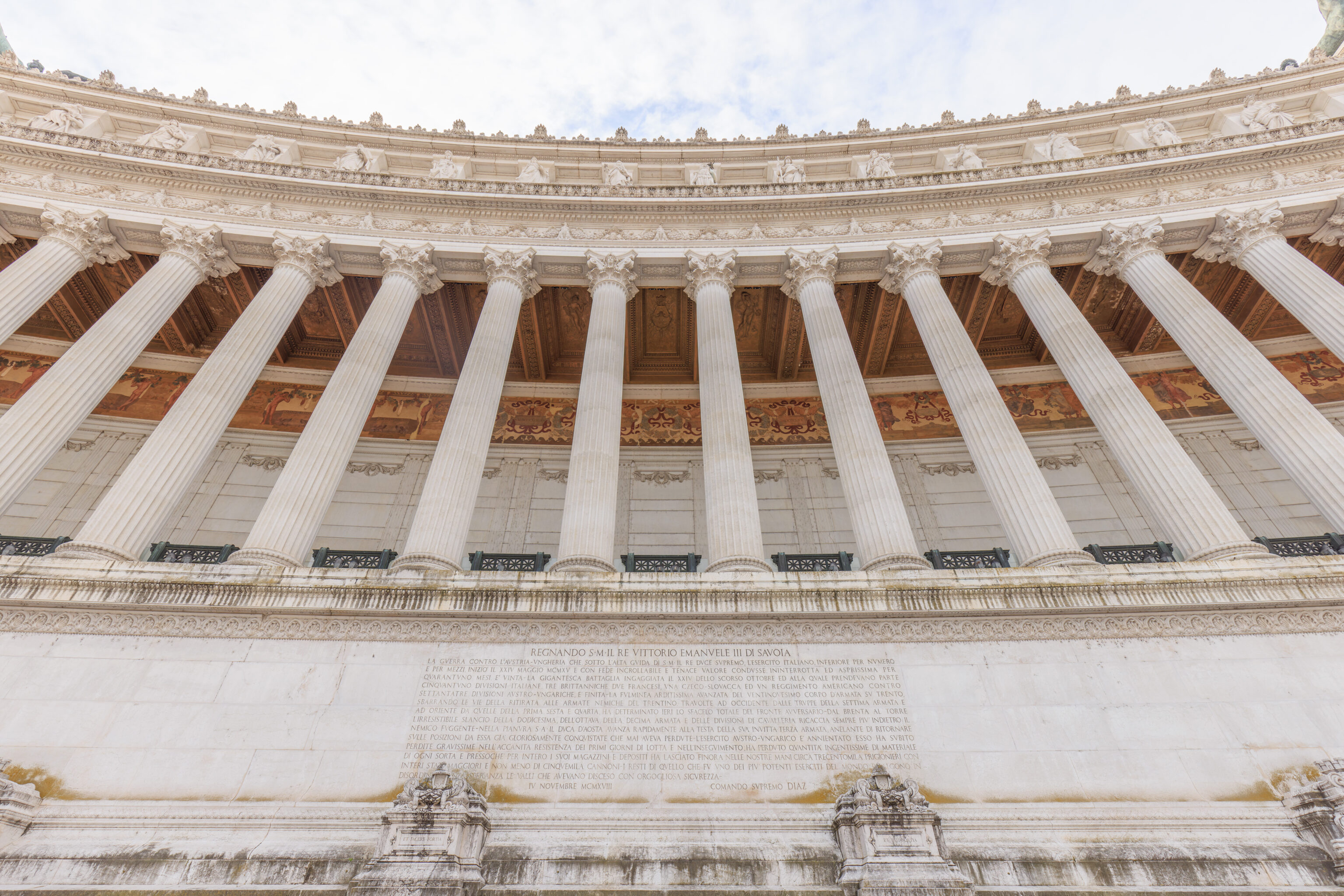
From here, we could see a walkway above in the huge columned structure of the monument.
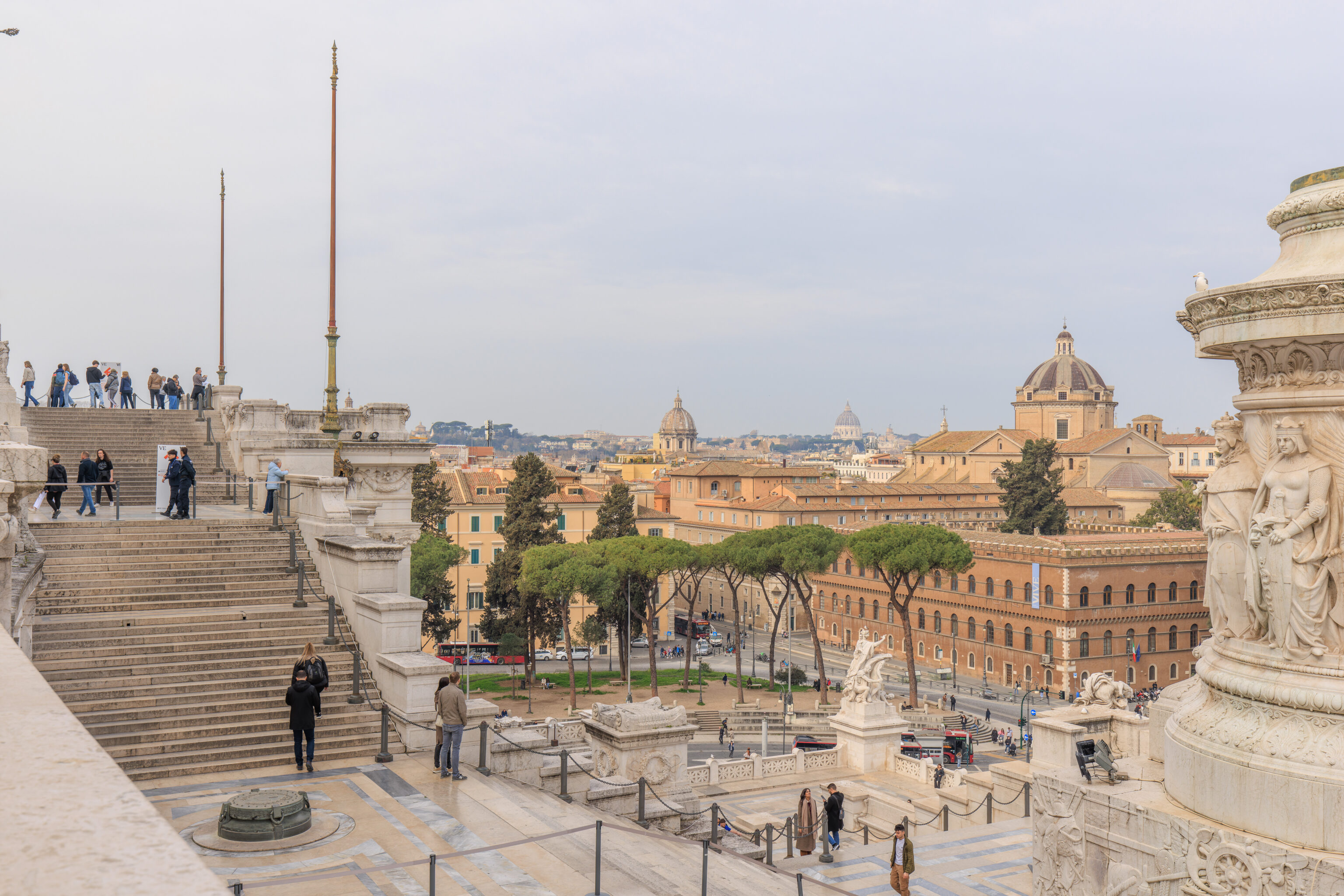
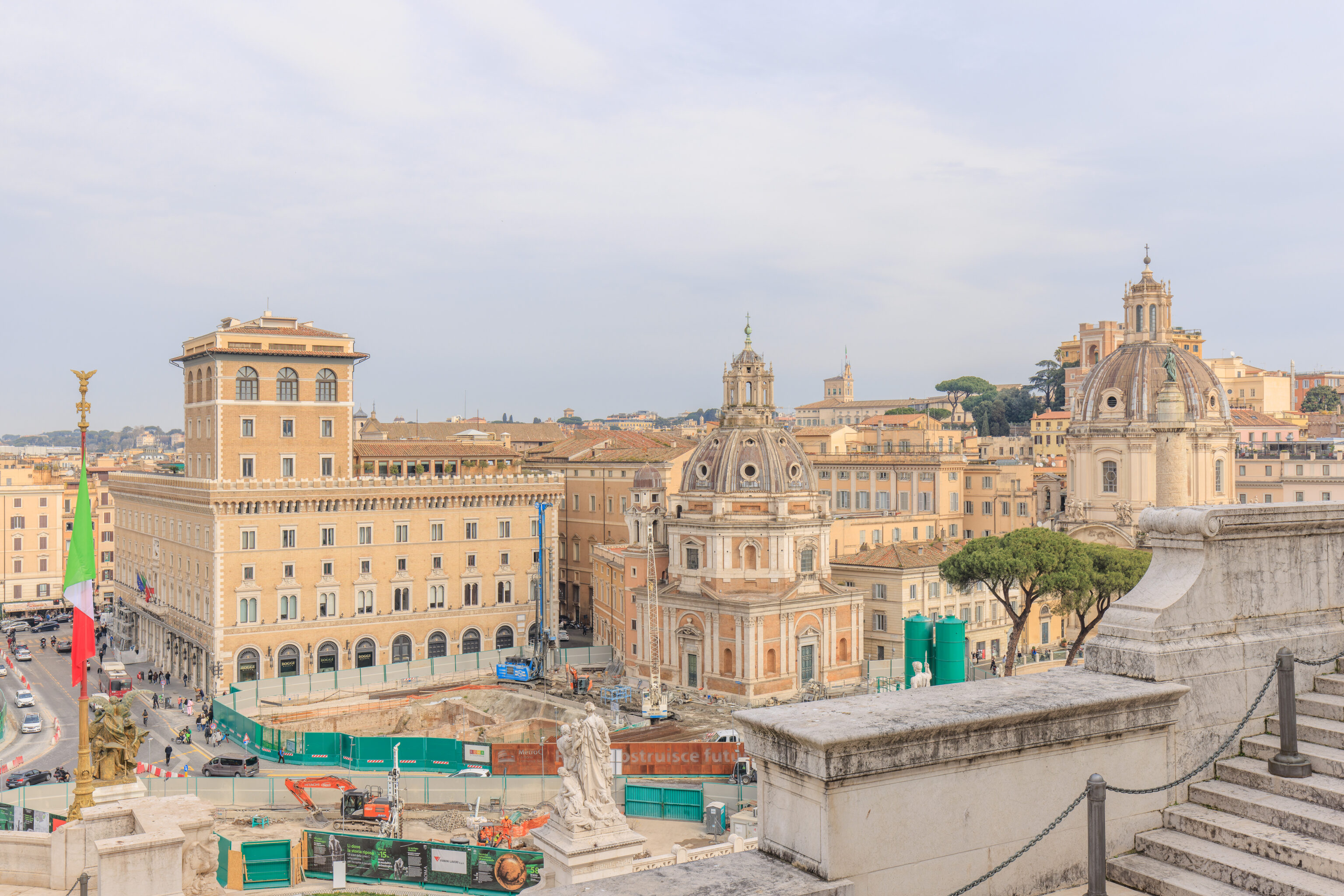
This level is high enough that it has a pretty good view.

We continued to the eastern edge of the monument. From here, looking to the southwest, we had a view of the Colosseum along with some of the ruins of the Roman Forum, which we just visited yesterday.
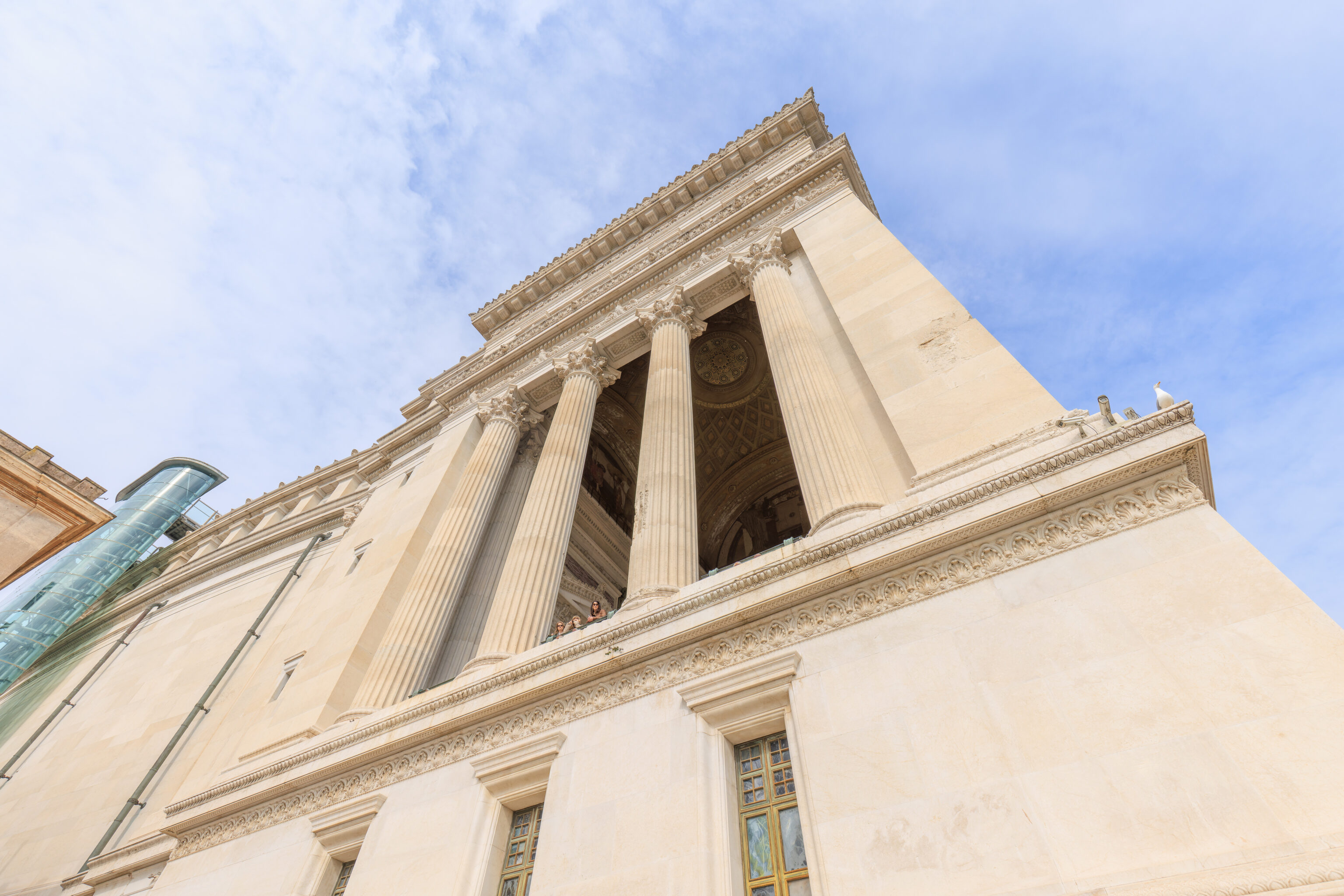
We continued around the monument to the southeast. Looking up, we could see a bit of the interior of the monument.
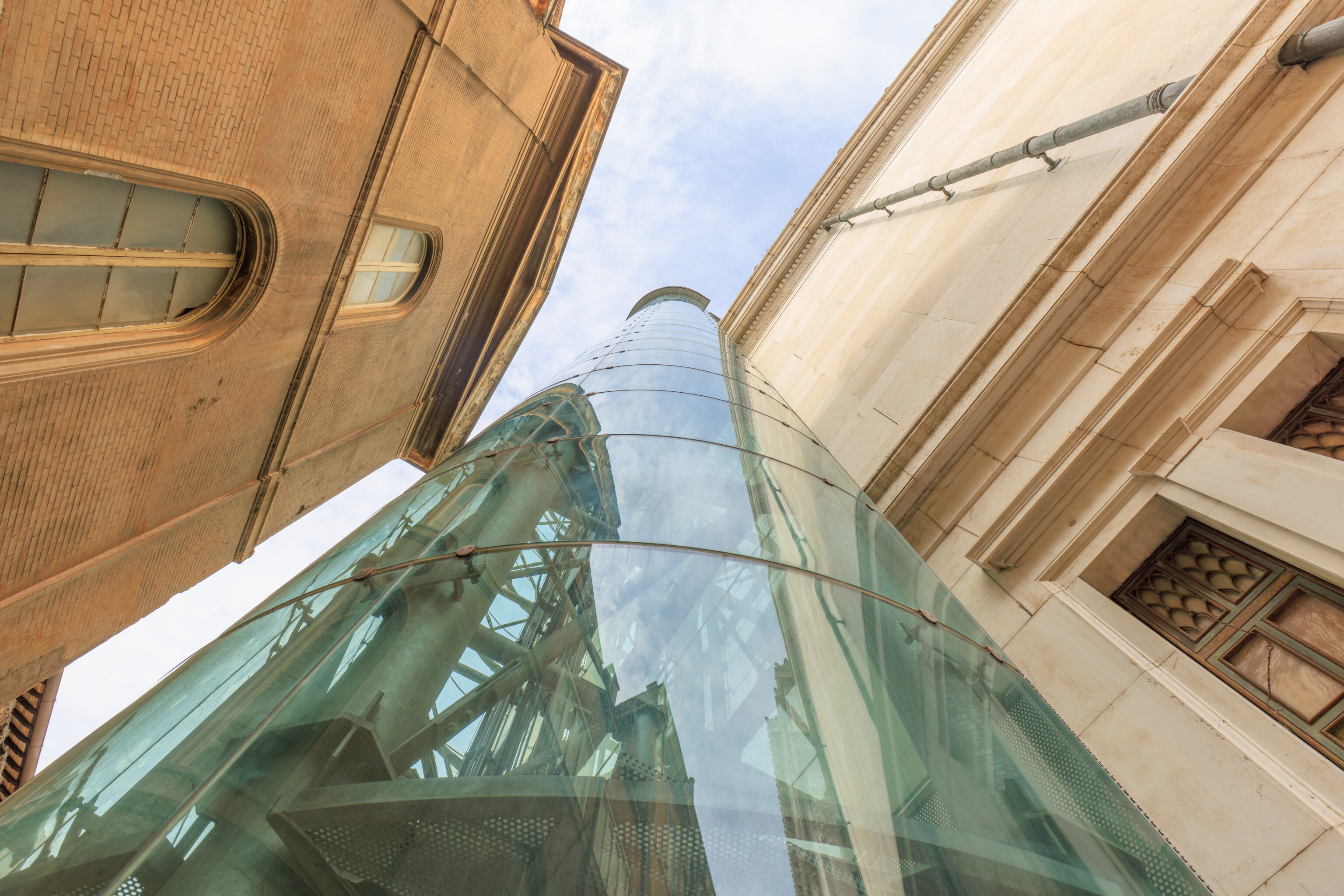
We purchased tickets on-site for the Terrazza delle Quadrighe, the panoramic terrace at the top of the monument. The Quadrighe in its name comes from the sculptures of chariots pulled by four horses atop the monument, referred to as quadriga. We headed up in this glass sided elevator.
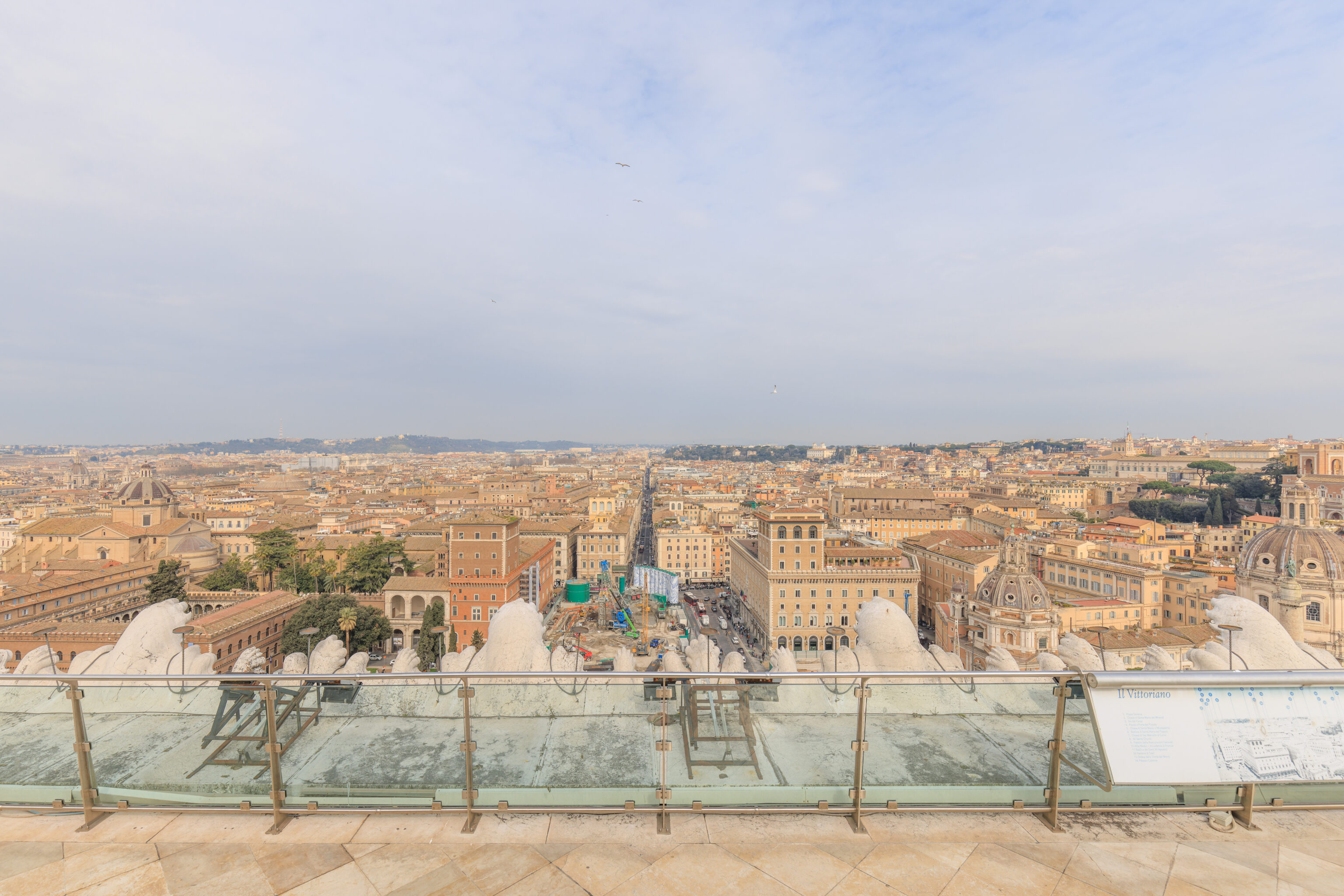
The view from the top was excellent! Rome doesn’t have skyscrapers and the tallest buildings are mostly things like church domes and towers. This was the view to the north from the elevator ramp, which is elevated a bit above the rest of the narrow terrace here.
The terrace is set back from the edge of the top of the monument. Thus, the view below is blocked by the decorative elements at the top of the monument.
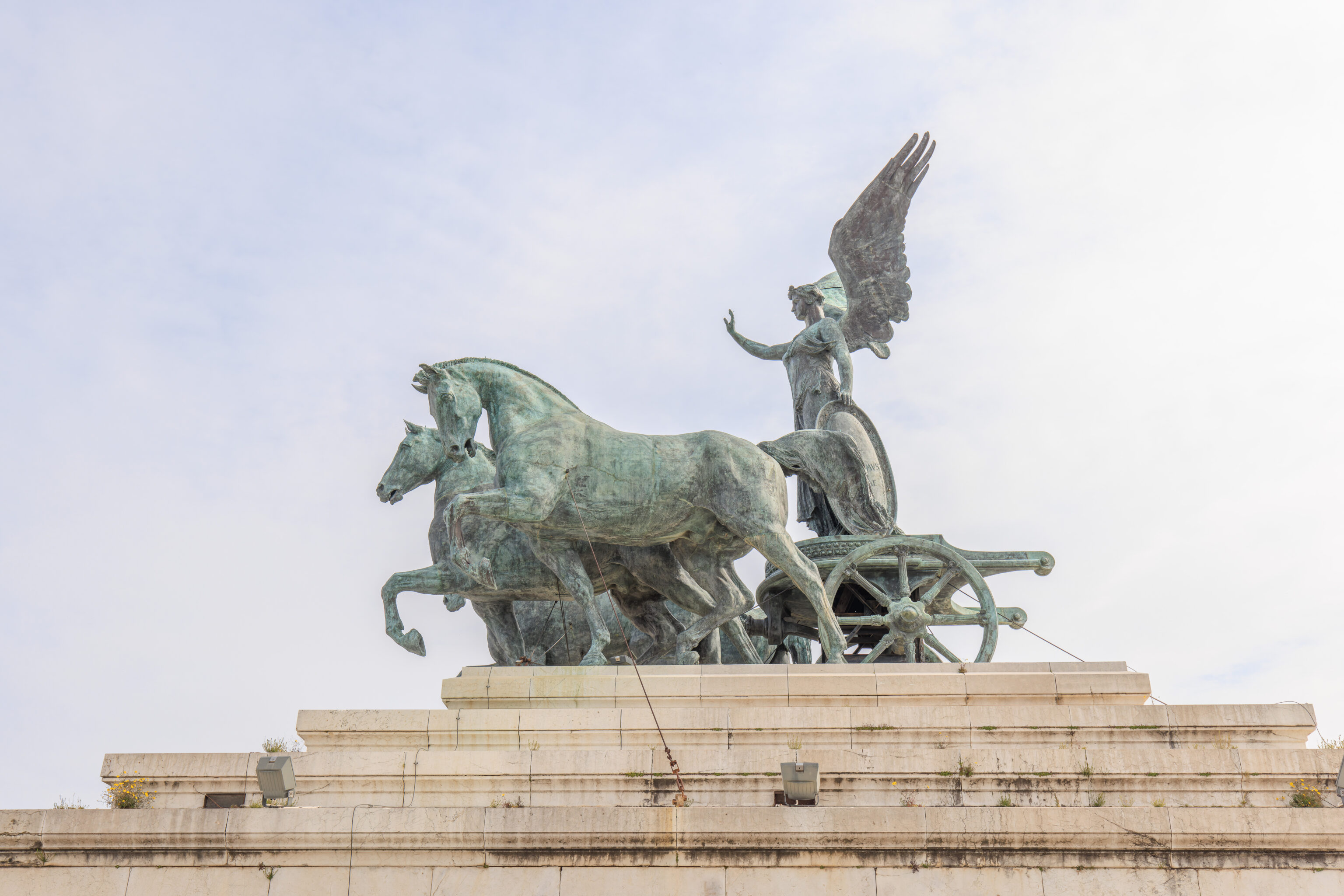

There are two quadriga on either side of the monument.

The view to the southeast, more south than east, shows much of the Roman Forum and Palatine next to it. The Colosseum is on the very left and partly out of frame. The building with the tower on the right is the Palazzo Senatorio (Senatorial Palace). This building first housed Rome’s municipal government in 1143. Specifically, it seems like it housed the city senate.
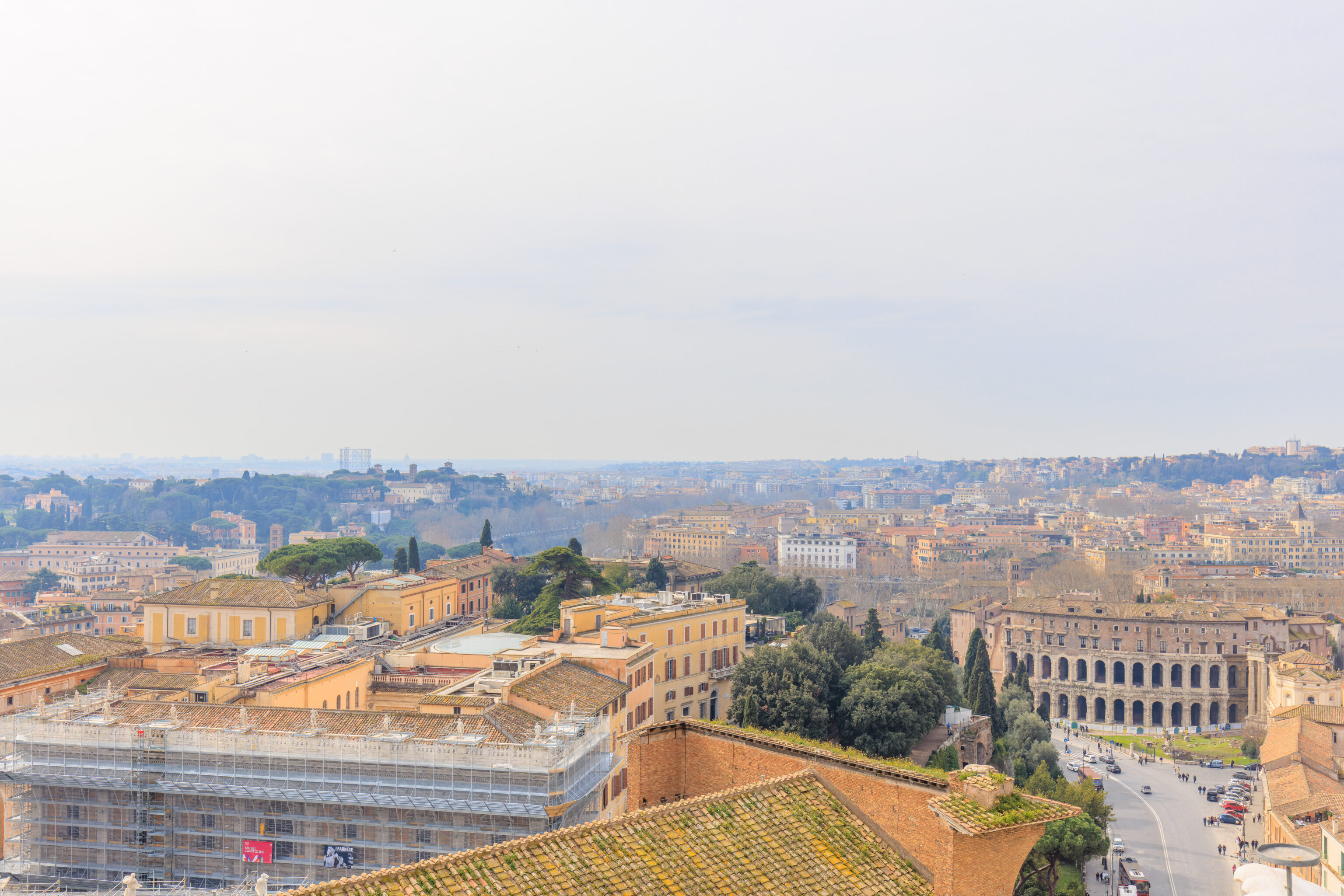
Looking to the southwest, we can see the tops of other buildings on the Capitoline Hill, which the Palazzo Senatorio is also on. The building at the bottom right with many small arches is the Teatro di Marcello (Theatre of Marcellus). Its construction was initiated by Julius Caesar but he was assassinated before construction began.
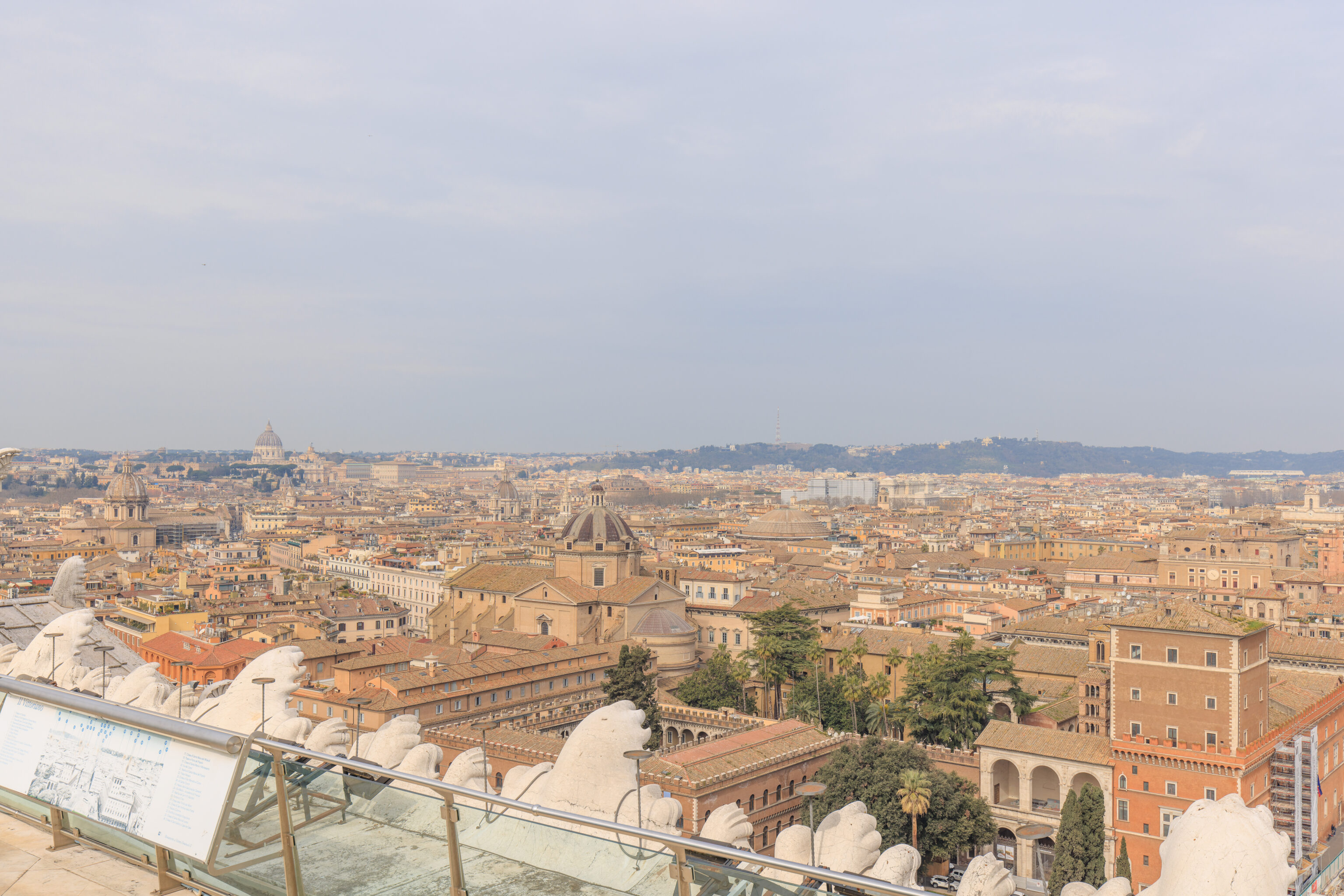
To the northwest, we can see the large dome of the Basilica di San Pietro (St. Peter’s Basilica) on the left. The Castel Sant’Angelo, which we visited three days ago, is visible just left of center. Its a bit hard to find as its not tall enough to be easily visible. The Pantheon‘s large concrete dome is just to the right of the castle. We visited the Pantheon two days ago. The church in the foreground just left of center is the Chiesa del Gesù (Church of Jesus), which we’ve also visited already.
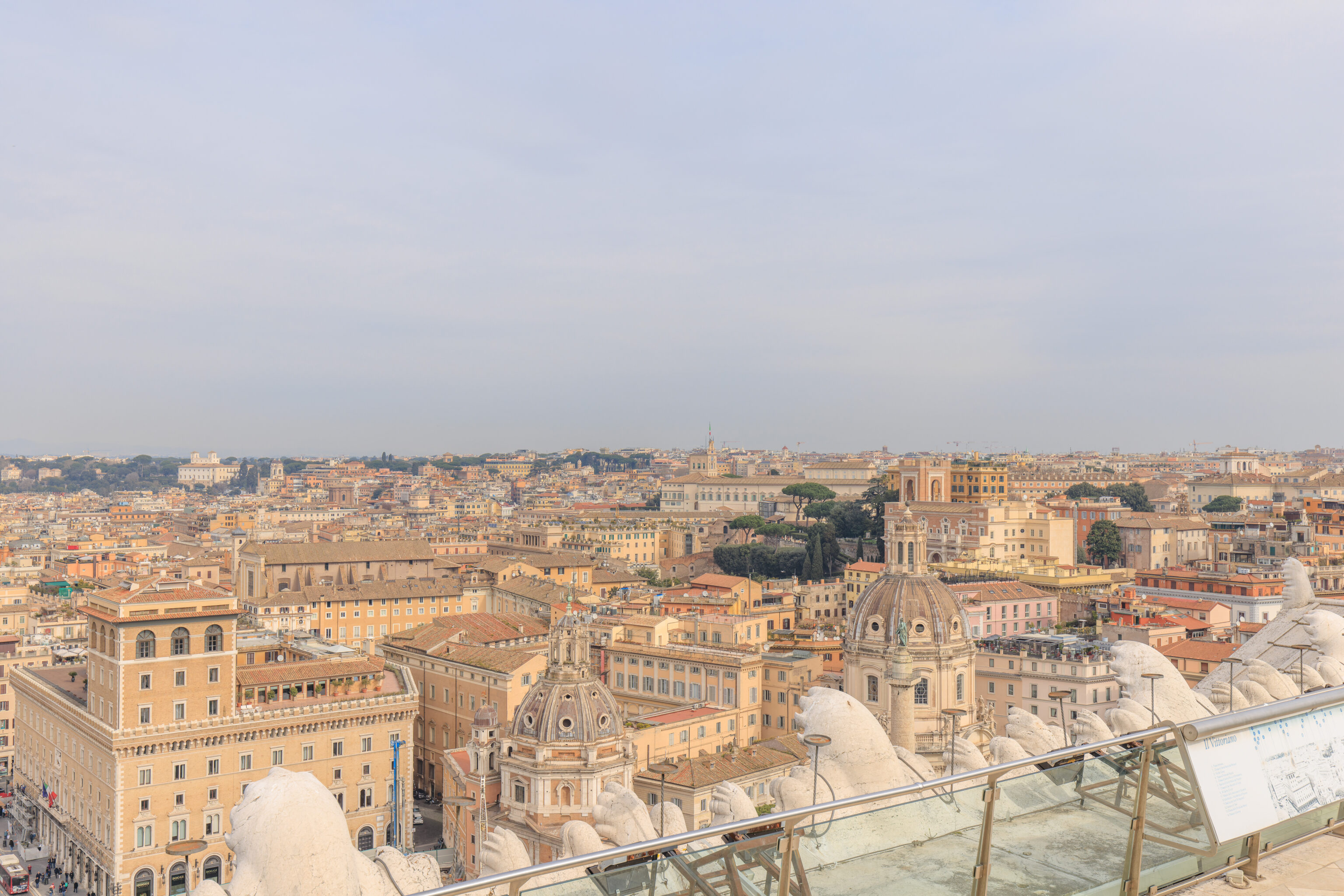
Nothing stands out to us to the northwest, though the W is out there somewhere.
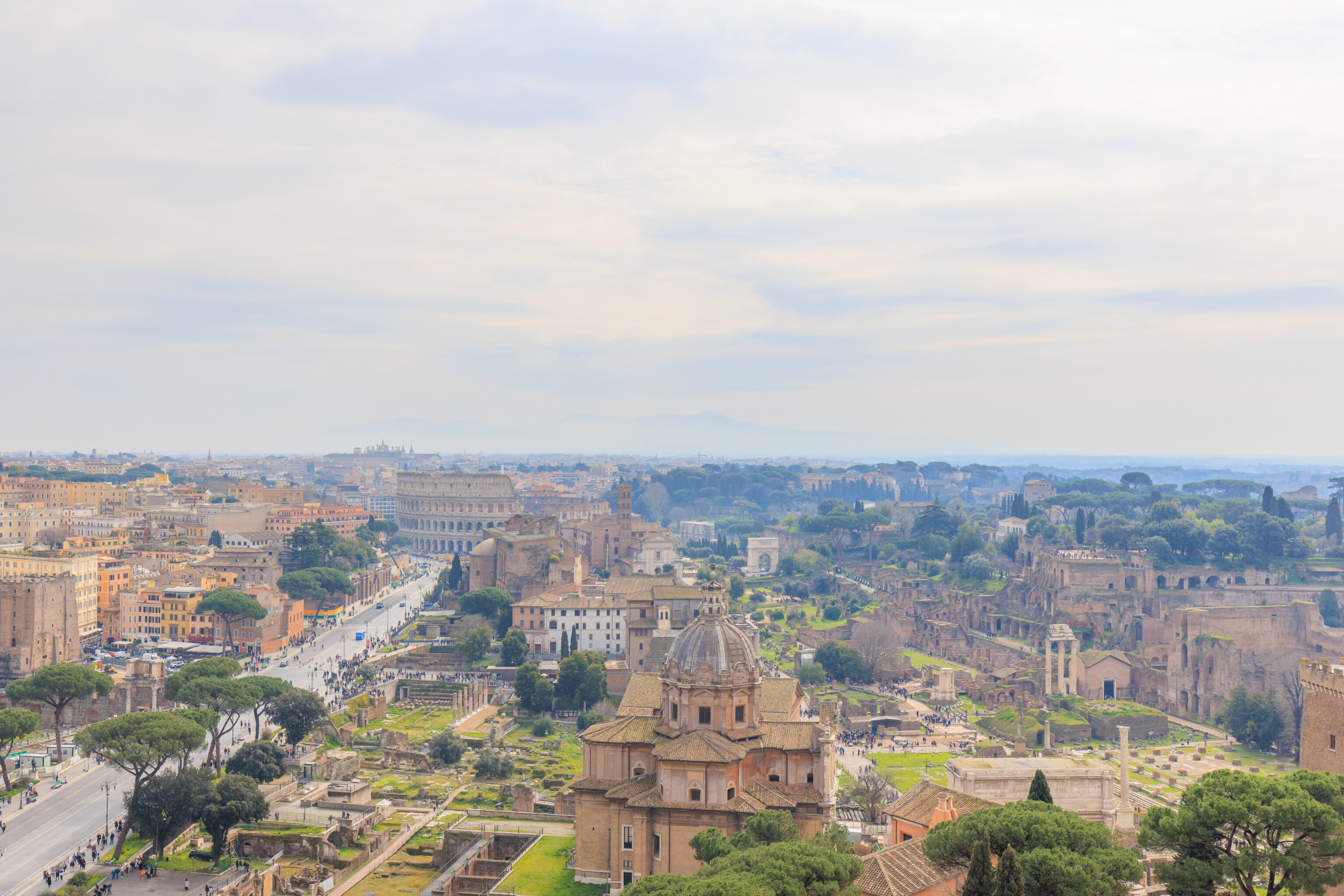
One final view from the top looking southeast more or less at the Colosseum with the Roman Forum and Palatine visible as well.
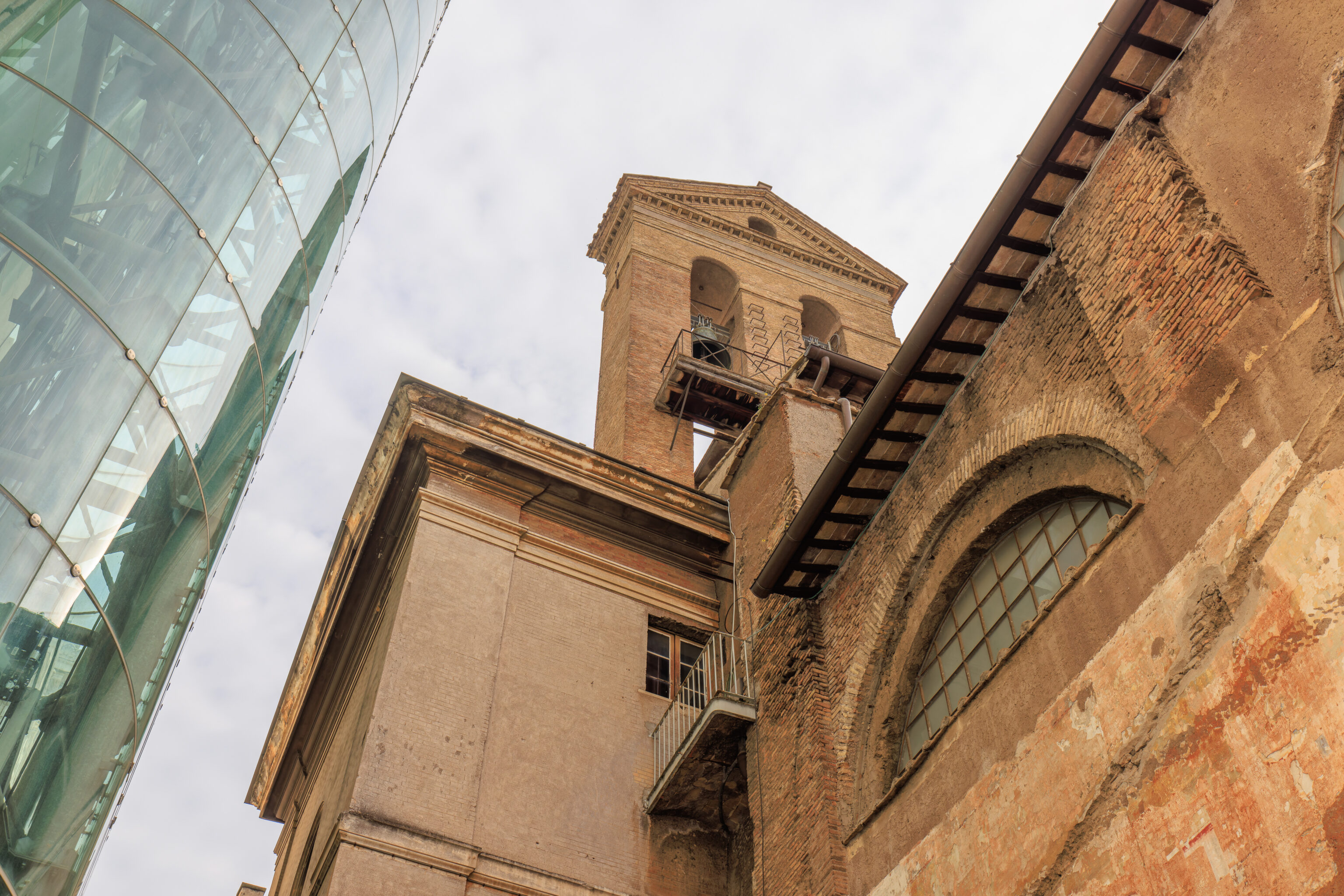
We headed back down to continue walking through the monument. There is a church next door, the Basilica di Santa Maria in Aracoeli (Basilica of Santa Maria in Aracoeli), which seems like it is attached to the monument, though there might not be a way to walk there directly.
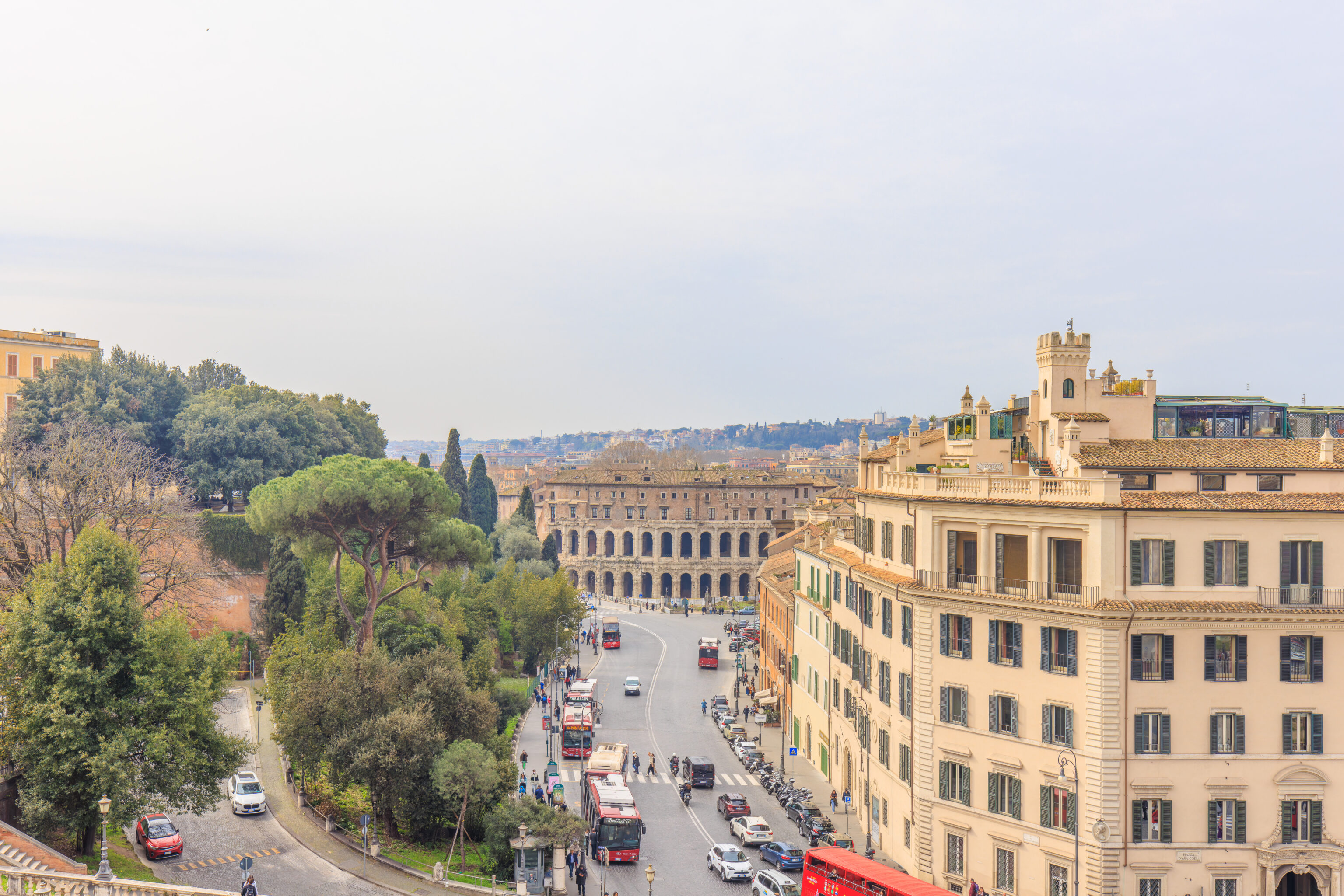
We continued on to the west side of the monument. Looking to the southwest, a different perspective to the view we had of the Teatro di Marcello from above.
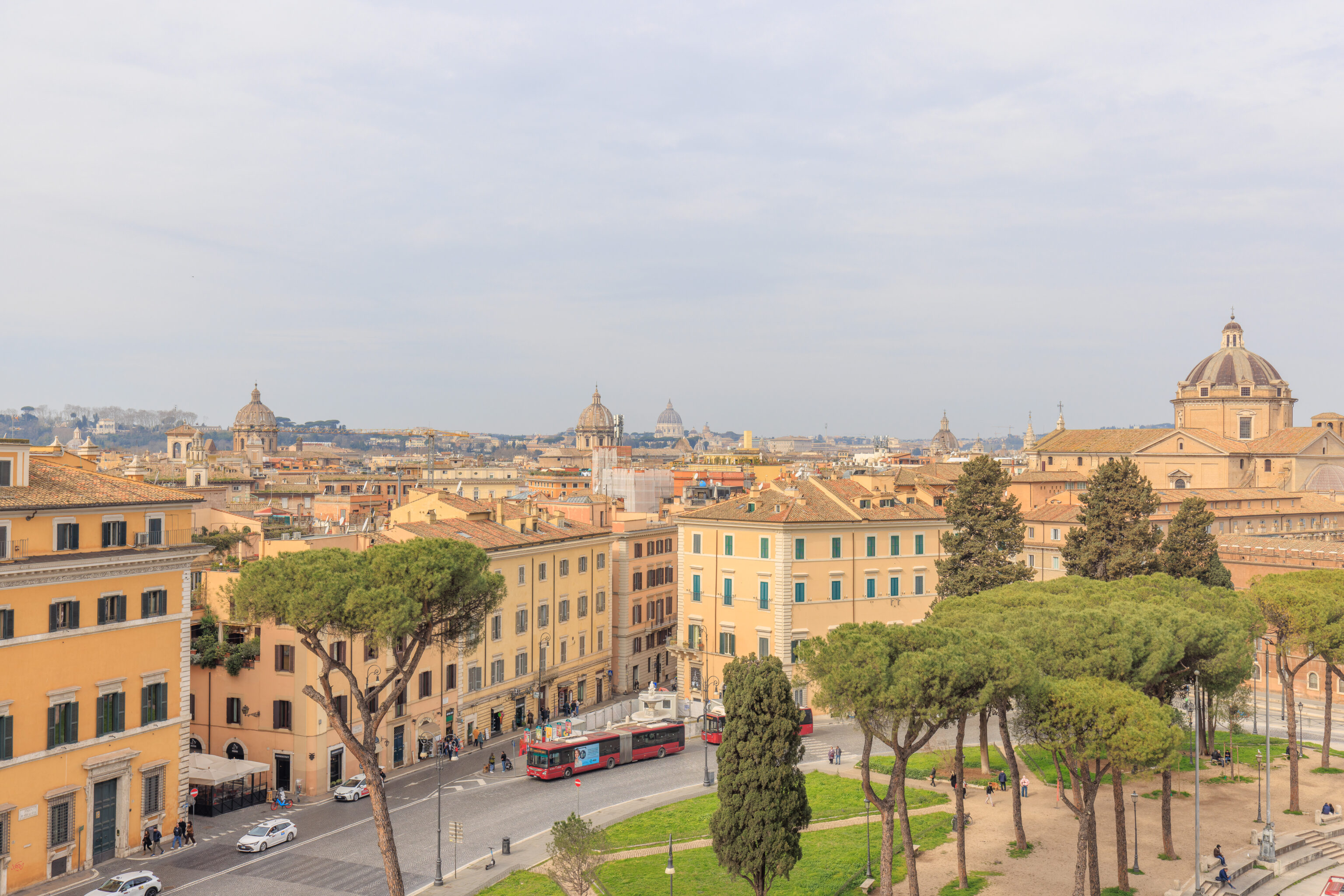
Looking to the northwest, the dome of Basilica di San Pietro seems less prominent compared to all the other domes of churches which are physically much closer to us here.
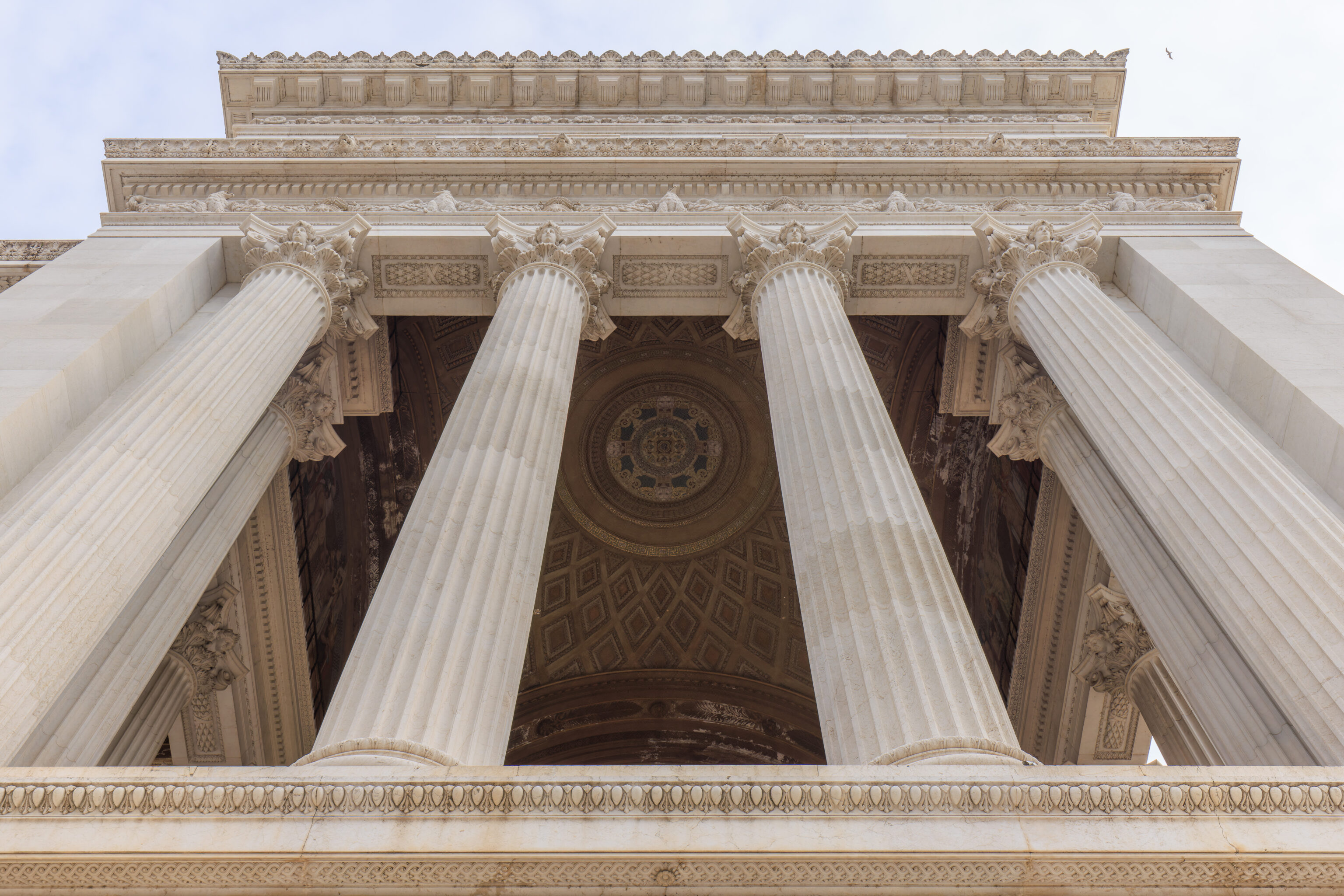
Like before when we were on the east side of the monument, we could see into it when looking up.
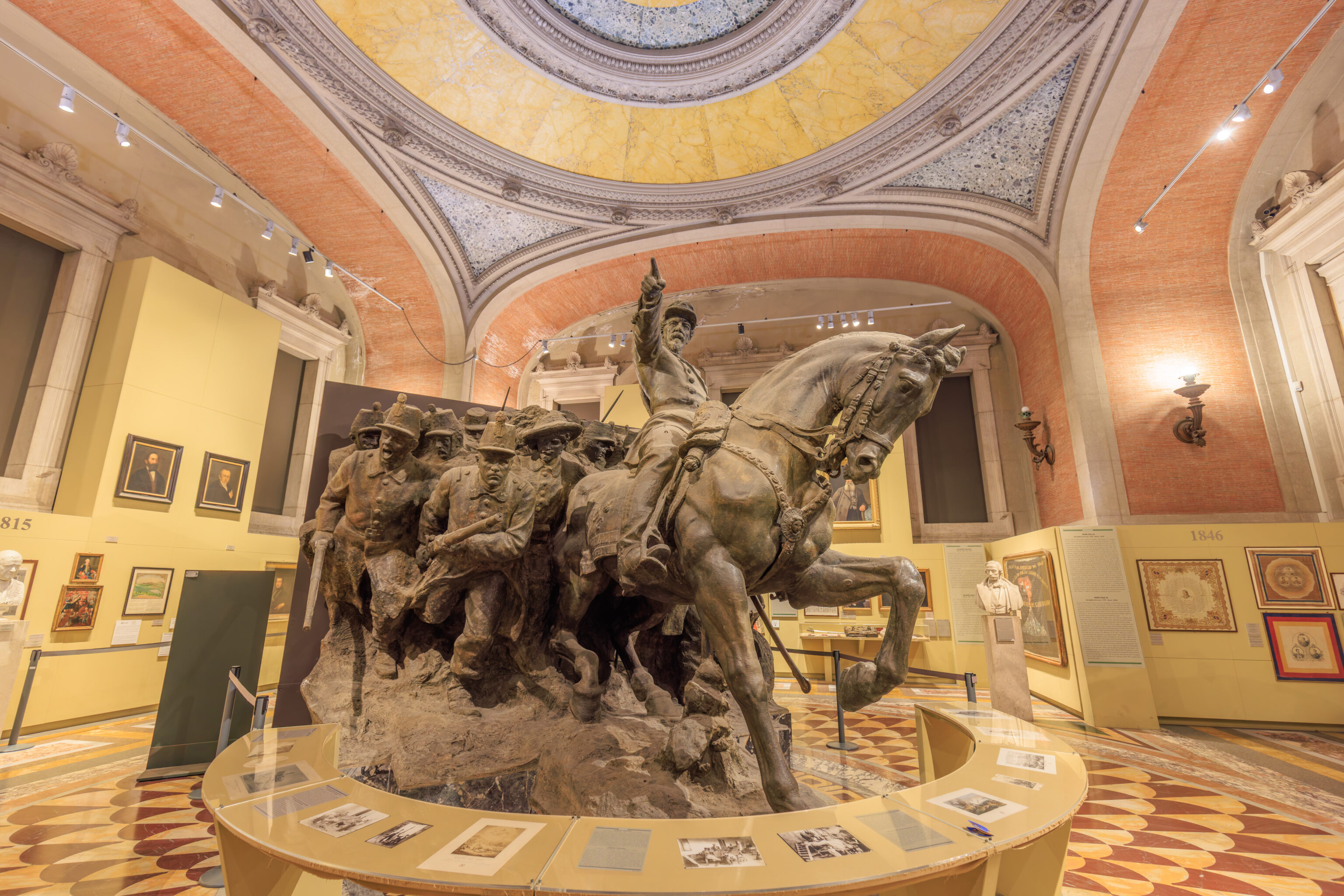
Continuing along the path through the monument, we actually came upon the exit to a museum space. We had passed by the entrance earlier on the east side. We decided to go there to check it out as our tickets for the viewpoint above the monument included access to this museum.
Upon entering, we saw this sculpture. It is a plaster model used during the construction of a monument to the Battle of Castelfidardo. One of the panels around the sculpture reads:
SCALE MODEL BY VITO PARDO FOR THE MONUMENT TO THE BATTLE OF CASTELFIDARDO
This plaster and wood scale model was made in preparation for the bronze monument to General Cialdini and the soldiers who died in battle on 18 September 1860 at Castelfidardo in the Marches. It was commissioned in 1910, to mark the 50th anniversary of the battle, and inaugurated on 18 September 1912 at a ceremony attended by King Vittorio Emanuele III. Vito Pardo's sculpture was reassembled in part (the general and the first soldiers) in 2006 in the Museo Centrale del Risorgimento's first hall to offer a totally new view of General Cialdini on horseback, leading the attack, at the same level as his soldiers, The bronze Castelfidardo sculpture is part of 6 m high and 12 m long monumental complex located on a 160 mq mountain built out of travertine blocks. The entire monumental complex sits atop a hill, and is accessed via avenues at the end of which stand majestic wrought iron gates (the Gates of the Laurels), which were also designed by Vito Pardo.
This battle was fought by Sardinia against the Papal States during the unification of Italy. Ultimately Sardinia became the Kingdom of Italy with Vittorio Emanuele II of the House of Savoy as the King.
The sculpture depicts Enrico Cialdini, who commanded the Sardinian army:
ENRICO CIALDINI
(Castelvetro [Modena], 1811 - Leghorn, 1892)
Aged twenty, in 1831 Cialdini took part in the Parma and Modena riots. After being sent into exile, he was recruited into Dona Maria's Portuguese army, and then in 1835 joined Maria Cristina's Spanish army. In 1848 he joined the Sardinian Army to fight in the war against Austria. In 1855, he led a Piedmont Brigade during the Crimean expedition, fighting alongside the Turks against the Russian army. He reached the rank of general in the Piedmont Army, and was decorated for his heroics in the battle of Palestro in 1859. In 1860, he fought in the Marches and Umbria campaign against the Papal army, winning the battle of Castelfidardo which led to the annexation of these regions by the Kingdom of Vittorio Emanuele II. Just a few months later, he played a key role in the siege of the Fort at Gaeta, where Francis Il and Maria Sofia of Bourbon had taken refuge. The siege came to an end in February 1861 when the Kingdom of the Two Sicilies finally fell, marking the beginning of the Kingdom of Italy.
There is some text that gives a brief description of this battle:
THE BATTLE OF CASTELFIDARDO (1860)
On 18 September 1860, the Sardinian Army commanded by General Enrico Cialdini was marching towards southern Italy to join Giuseppe Garibaldi when they clashed with the papal army commanded by General Lamoricière, en route from Narni and Spoleto to Ancona, in the Marches, via Tolentino and Macerata. After being defeated on the battlefield and forced to fall back to Ancona, the papal troops resisted shelling from land and sea, before totally capitulating on 29 September. In the wake of this victory, a general uprising led to a plebiscite and the subsequent annexation of the Marches and Umbria to the Kingdom of Italy.
There is also some text about the sculptor, Vito Pardo:
VITO PARDO
(Venice, 1872 - Rome, 1933)
Sculptor Vito Pardo was born in Venice on 25 March 1872. When very young, he attended painting courses and studied sculpture and architecture at the Academy of Fine Arts in his hometown. At the age of 14, he took a three-year sculpture course with Antonio dal Zotto. In 1893, he received an award in Monaco for his bust of Christopher Columbus. In 1895, he won a prize at the Venice biennial for a portrait of his mother. In 1900, he made his giant nude "Pensiero dell'infinito". In 1901, he went to work at Giulio Monteverde's studio, where he stayed for seven years. He then opened his own studio in Rome at Via Piemonte. In 1905, he became an honorary professor at the Urbino Academy of Fine Arts. After all of his work at Castelfidardo making the equestrian monument to General Cialdini, the Cancellate degli Allori, the commemorative plaque for the 50th anniversary of the Battle of Castelfidardo in the lobby of the civic building, and the city's coat of arms, the Municipality granted him honorary citizenship. Vito Pardo died in Rome in 1933.
The museum has many panels that discuss Italian history around the unification period, along with various artifacts and busts of the people involved.
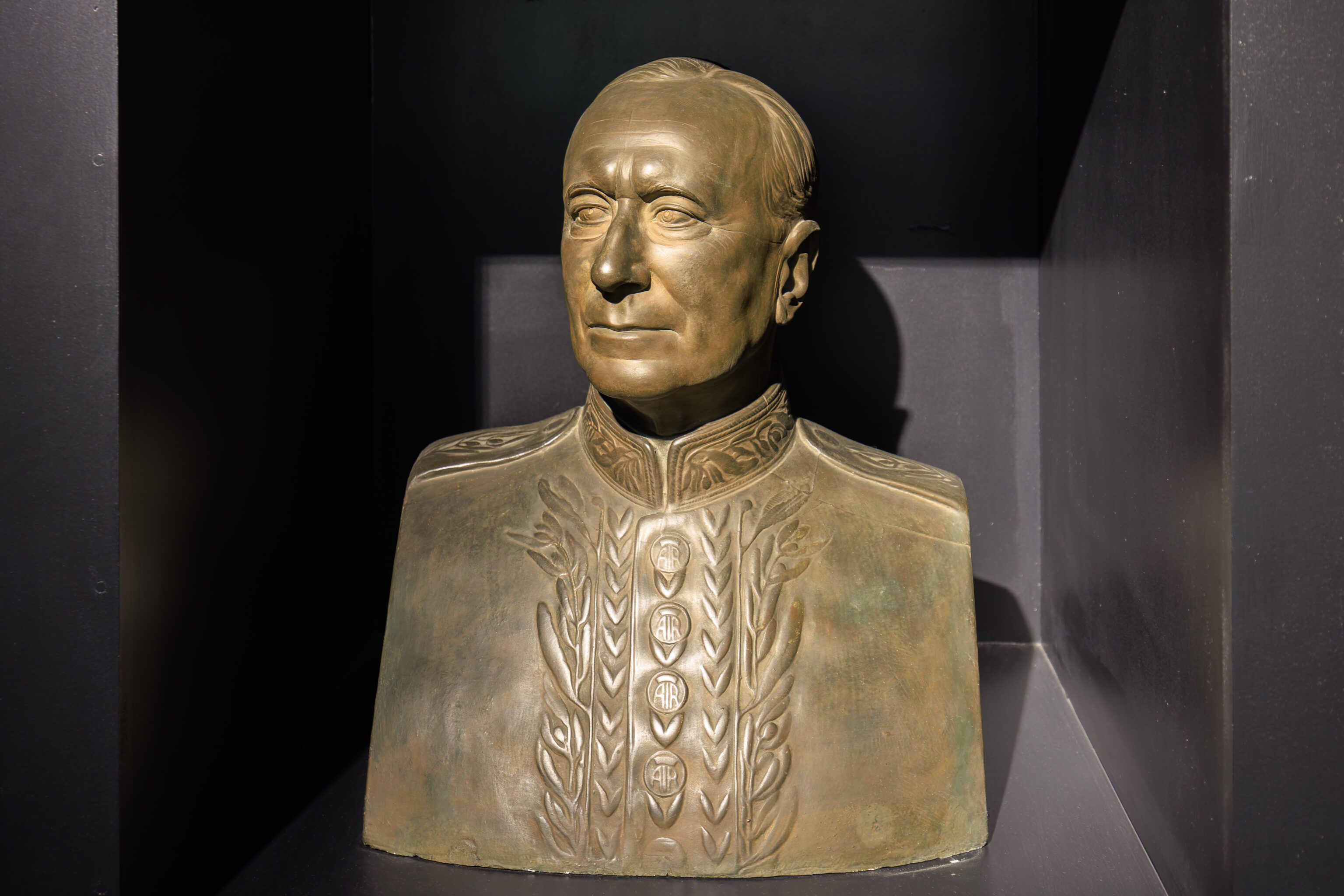
After we exited the museum, we resumed the route that we were on before. We came upon an exhibition on Guglielmo Marconi, the inventor of the wireless telegraph.
Like the previous section of the museum that we just walked through, this portion was extremely heavy on text. The very first panel is included here:
GUGLIELMO MARCONI
TO SEE THE INVISIBLE
Born in Bologna 150 years ago, Guglielmo Marconi was one of the greatest inventors of all time. Thanks to his wireless telegraphy, he forever changed our way of communicating, ferrying the world
towards the modern age and leaving an extraordinary legacy to the generations that followed.
In 1895, a rifle shot fired into the air by his butler - who was informing him he had received the wireless signal sent from the attic of the inventor's country house in Pontecchio beyond the Collina dei Celestini - is considered the birth certificate of wireless technology, the evolution of which is still part of our daily lives - from cell phones to Bluetooth, from television to GPS, from drones to satellites.
While Hertzian waves were already known to physicists of the late 19th century, it was the young Guglielmo who saw their potential to transmit messages, bridge distances, and overcome any sort of obstacle, including oceans, mountains, and - why not? - even the Earth's curvature.
His genius and innovative spirit paved the way for scenarios that were unimaginable at the time: Marconi's waves not only facilitated global distress calls, such as those of the Republic (1909) and Titanic (1912) ships, but also voices, news, music and, ultimately, knowledge.
Marconi's research embodied a secular vision of technological culture. His sincere love for humanity was a driving force that propelled his passionate commitment to serving the community and searching for the common good through scientifc progress.
On his 150th birth anniversary, the exhibition "Guglielmo Marconi. To See the Invisible" pays homage to one of the most illustrious Italians of all time. Articulated along several narrative lines, it presents Marconi as a man, his discoveries, his entrepreneurial flair, and his genius, set in the time when he was the protagonist.
Documents, photographs, period films, original objects, and multimedia installations enrich the eight sections of the exhibition to lead us to the discovery of a man who was able to anticipate the future, a visionary who impressed a turning point in history with his research and intuitions and winning - the first Italian ever - the Nobel Prize for Physics at just 35 years of age in 1909.
The exhibition is set up simultaneously in two venues: at the Vittoriano - where his first experiments as a young scientist at Villa Griffone are retraced, together with his entrepreneurial adventure that started in England, his transatlantic conquest, his institutional career and diplomatic activity, without neglecting the more worldly aspects linked to his international fame - and Palazzo Venezia, where his most intimate and personal life is explored, unveiling glimpses of his family life, but also his intense relationship with the sea, up to the ideal and technological heritage that Marconi has left as a legacy to the third millennium.
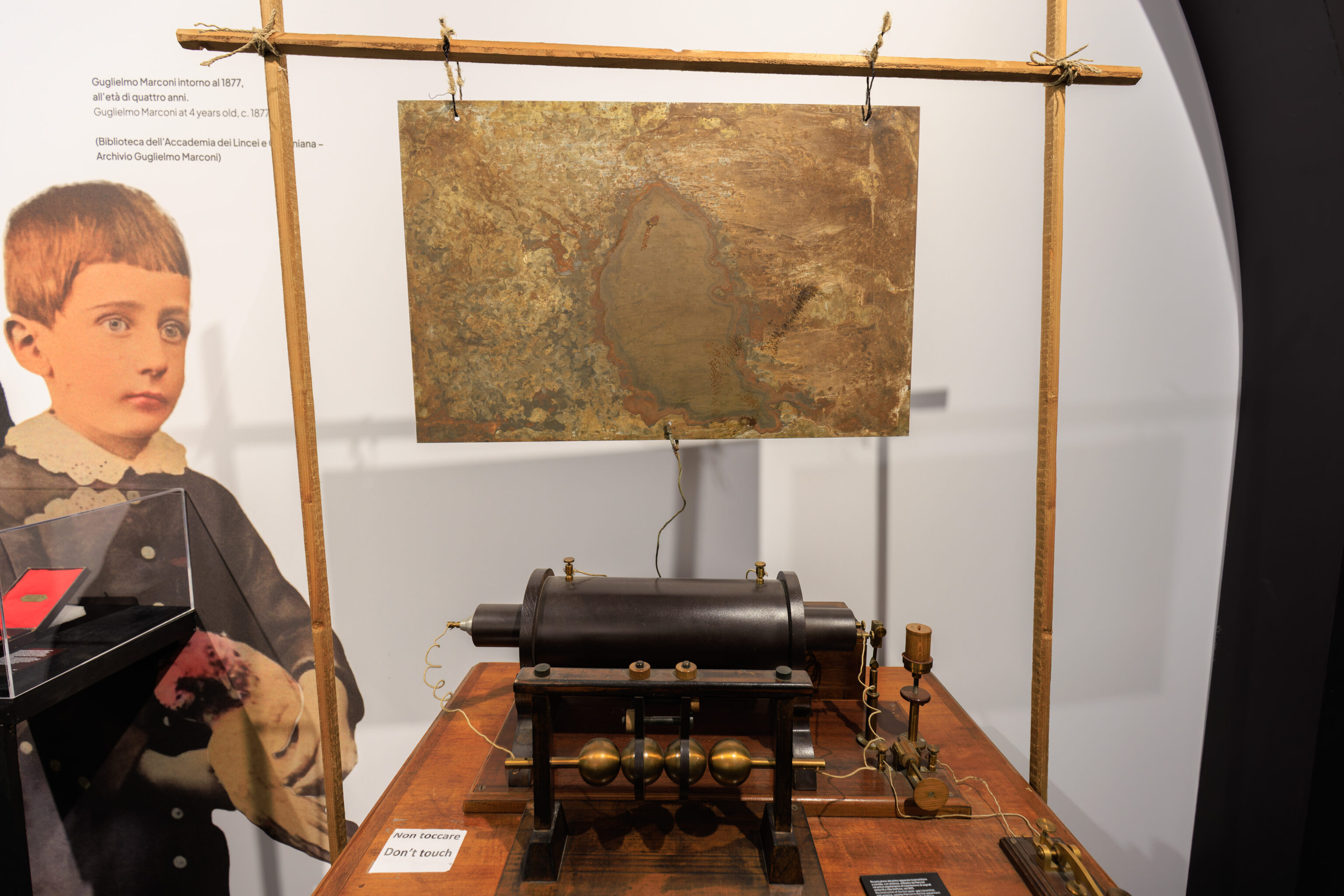
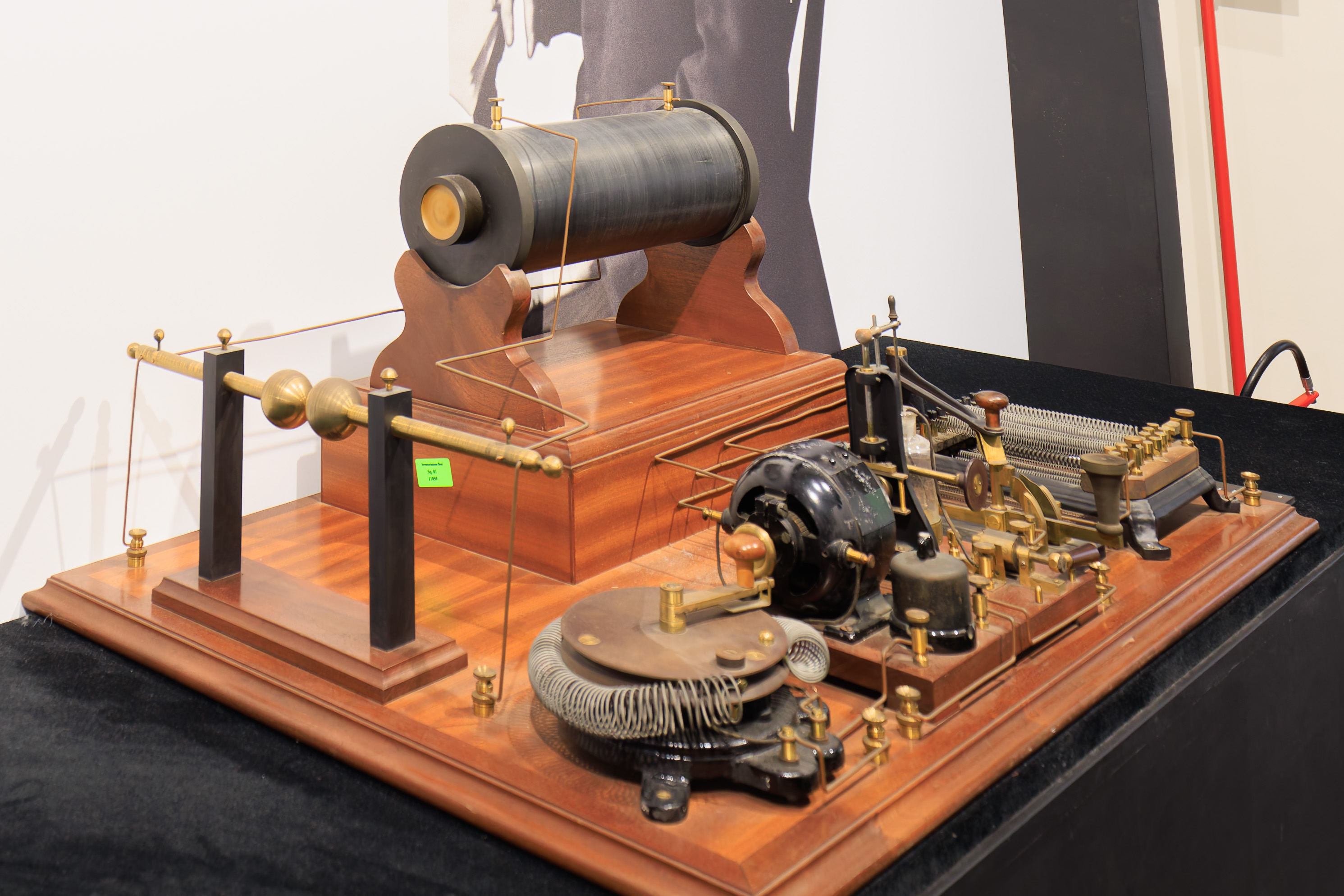
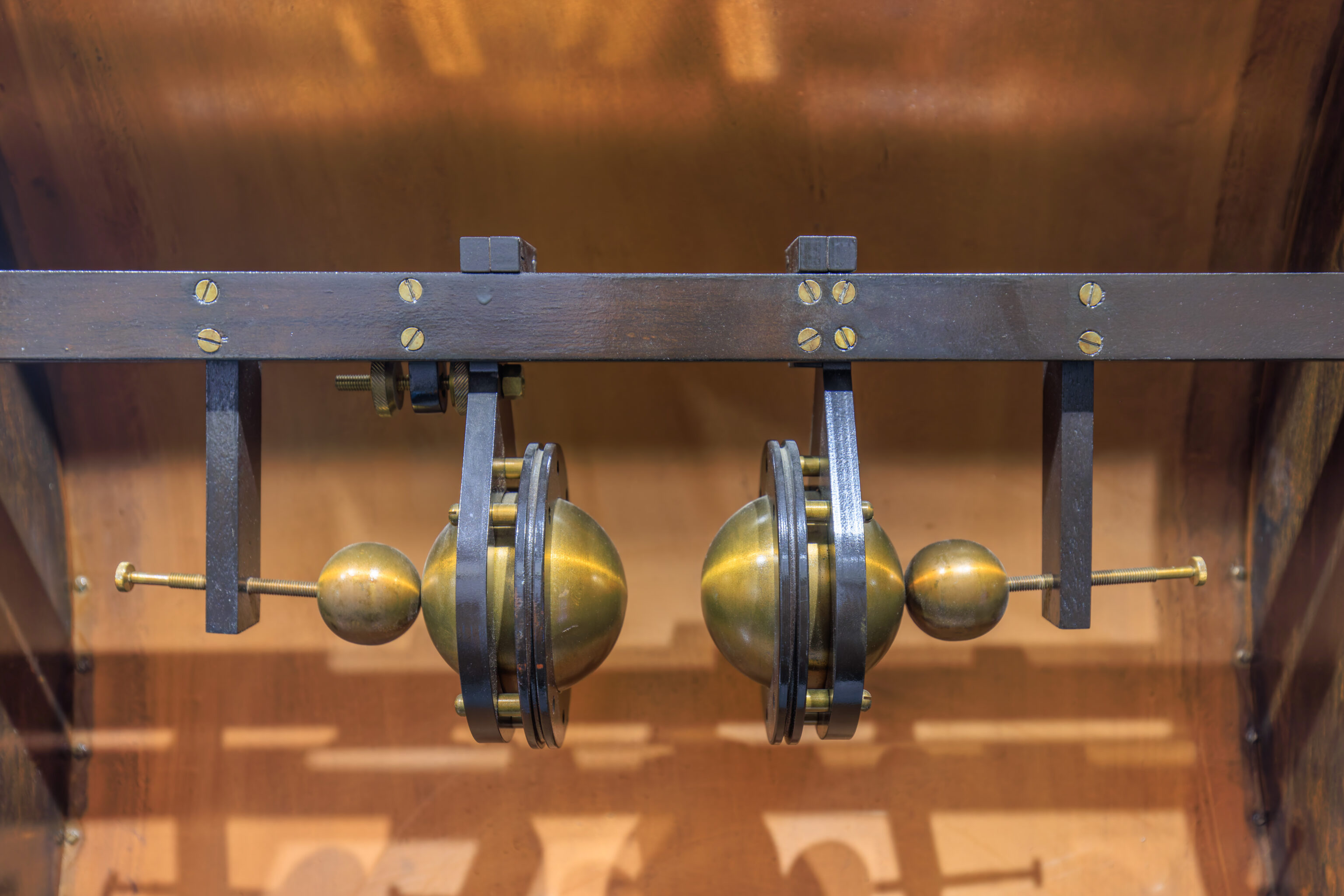
By modern standards, Marconi’s first wireless telegraphs were pretty primitive. But, for the first time, instant communication was possible without the use of wires. Or, as close to instant as was possible with Morse code.
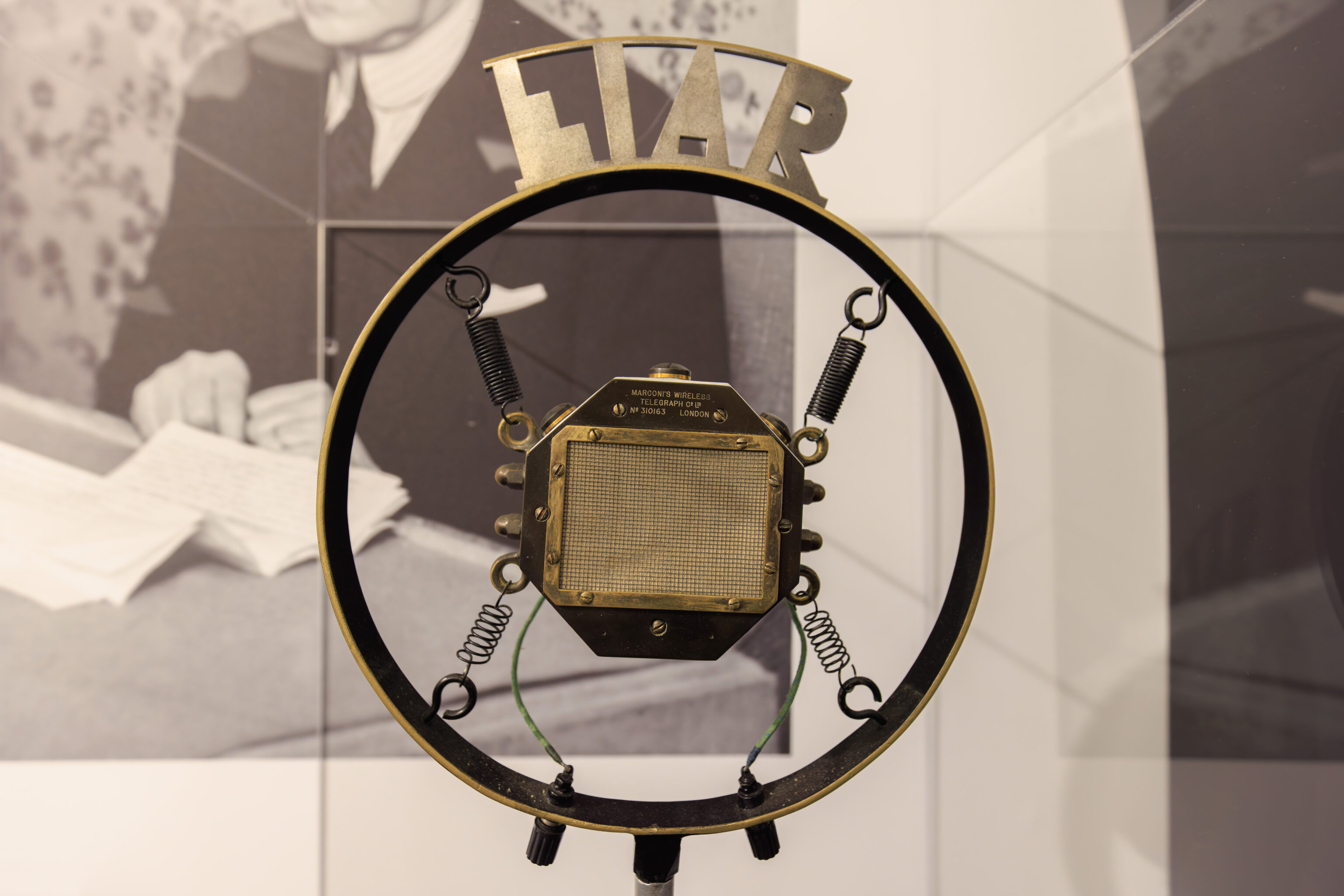
Soon, Marconi was able to transmit sound over wireless, making things like the BBC possible.
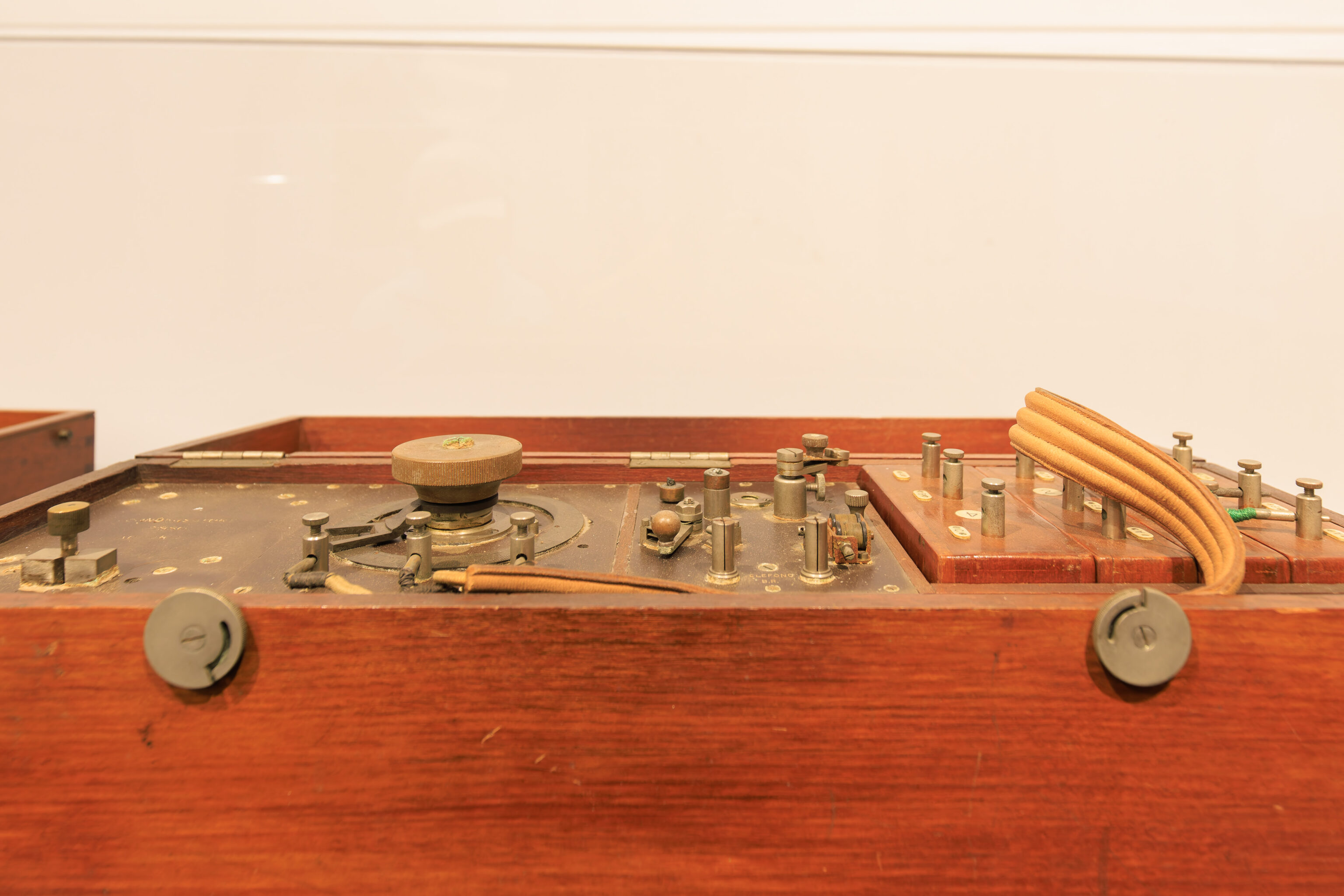
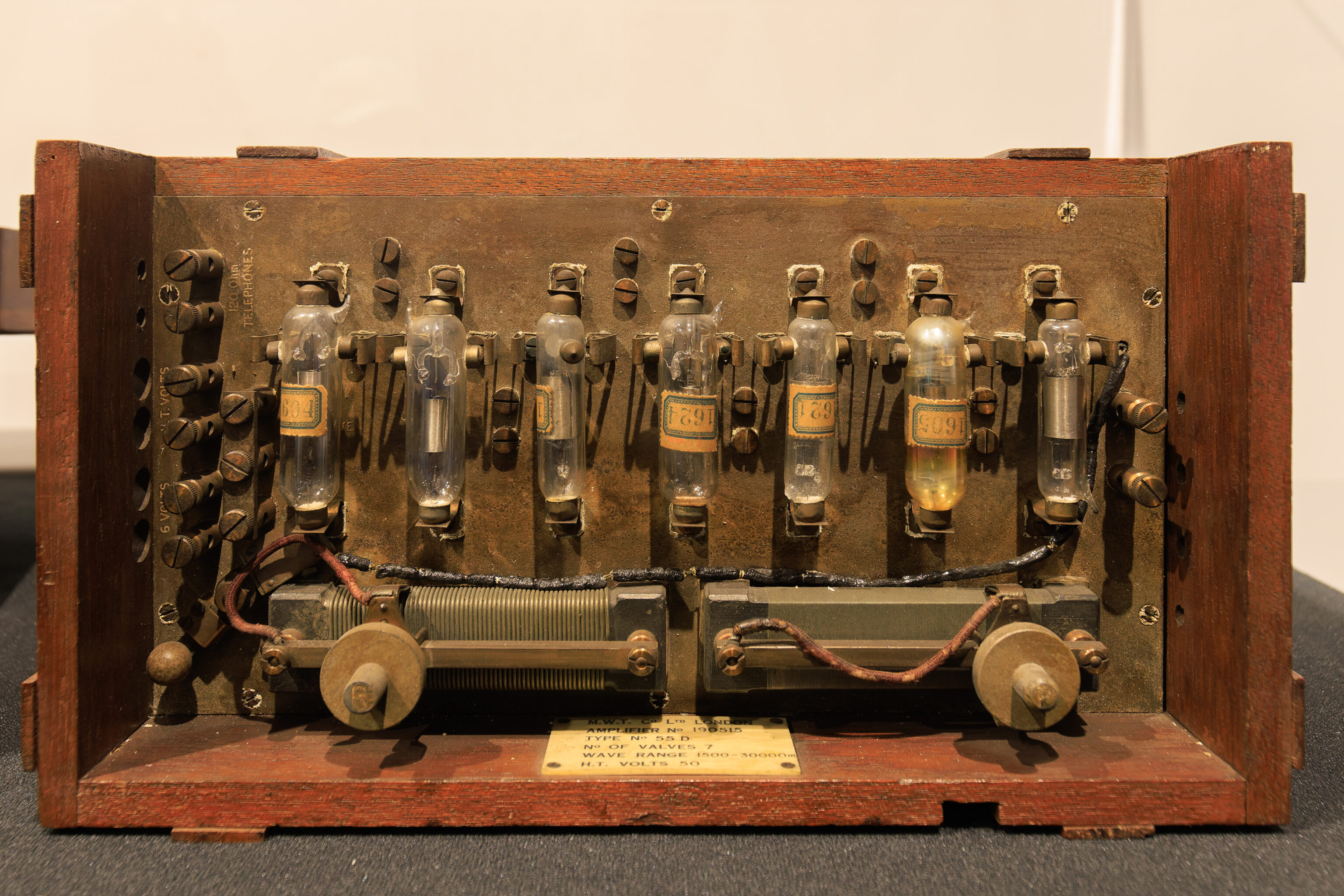
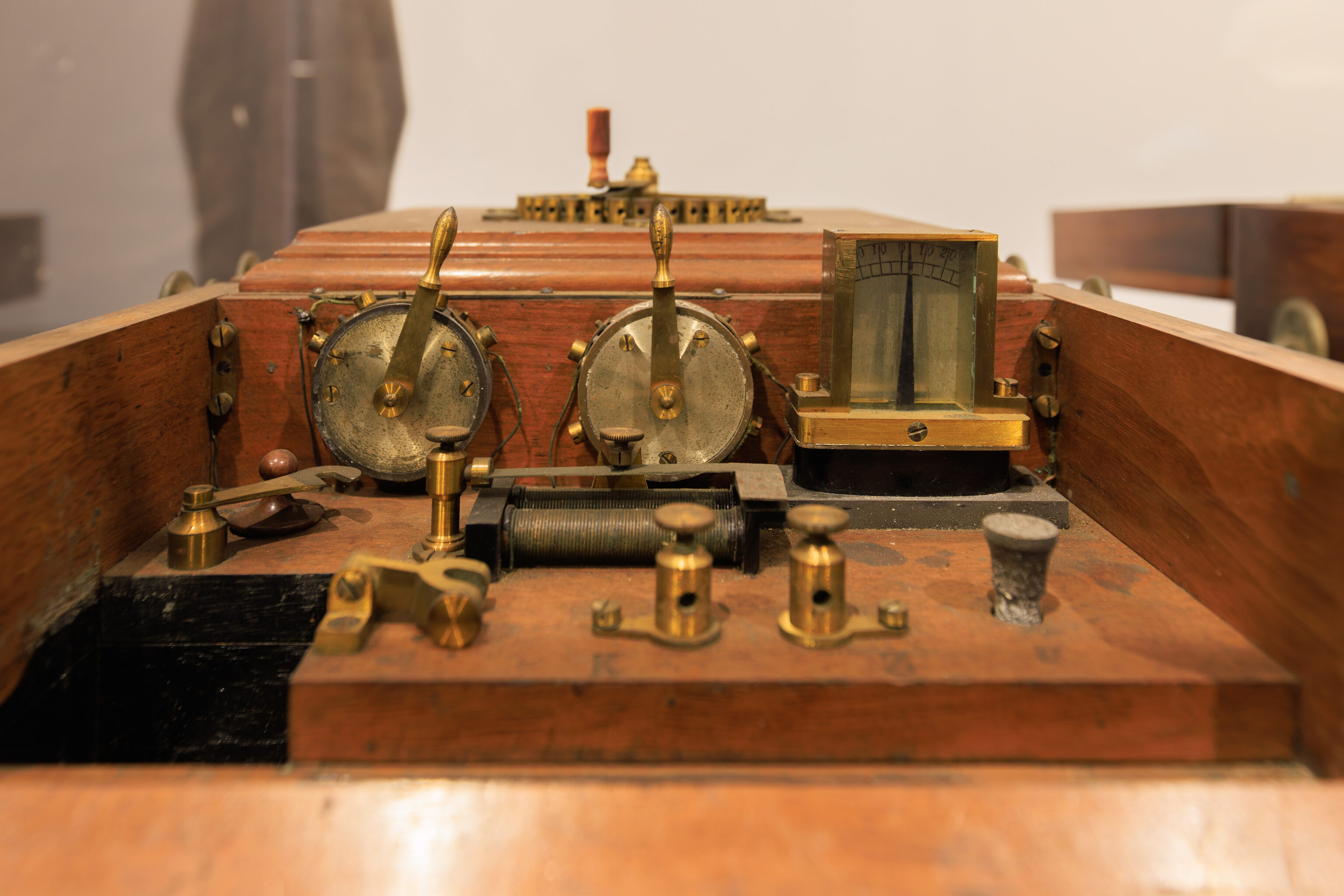
Various Marconi devices…
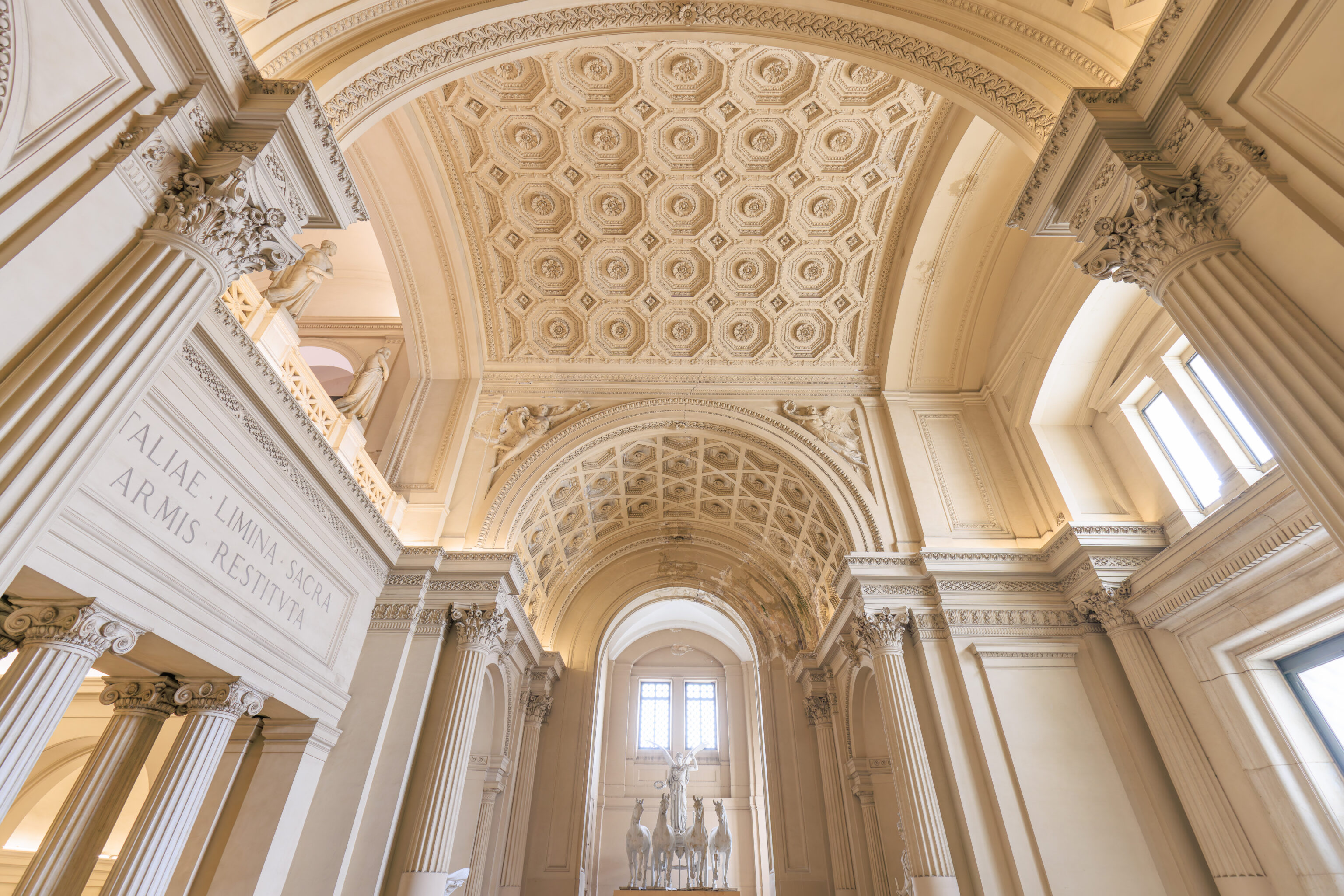
We continued on after walking through the Marconi exhibition.
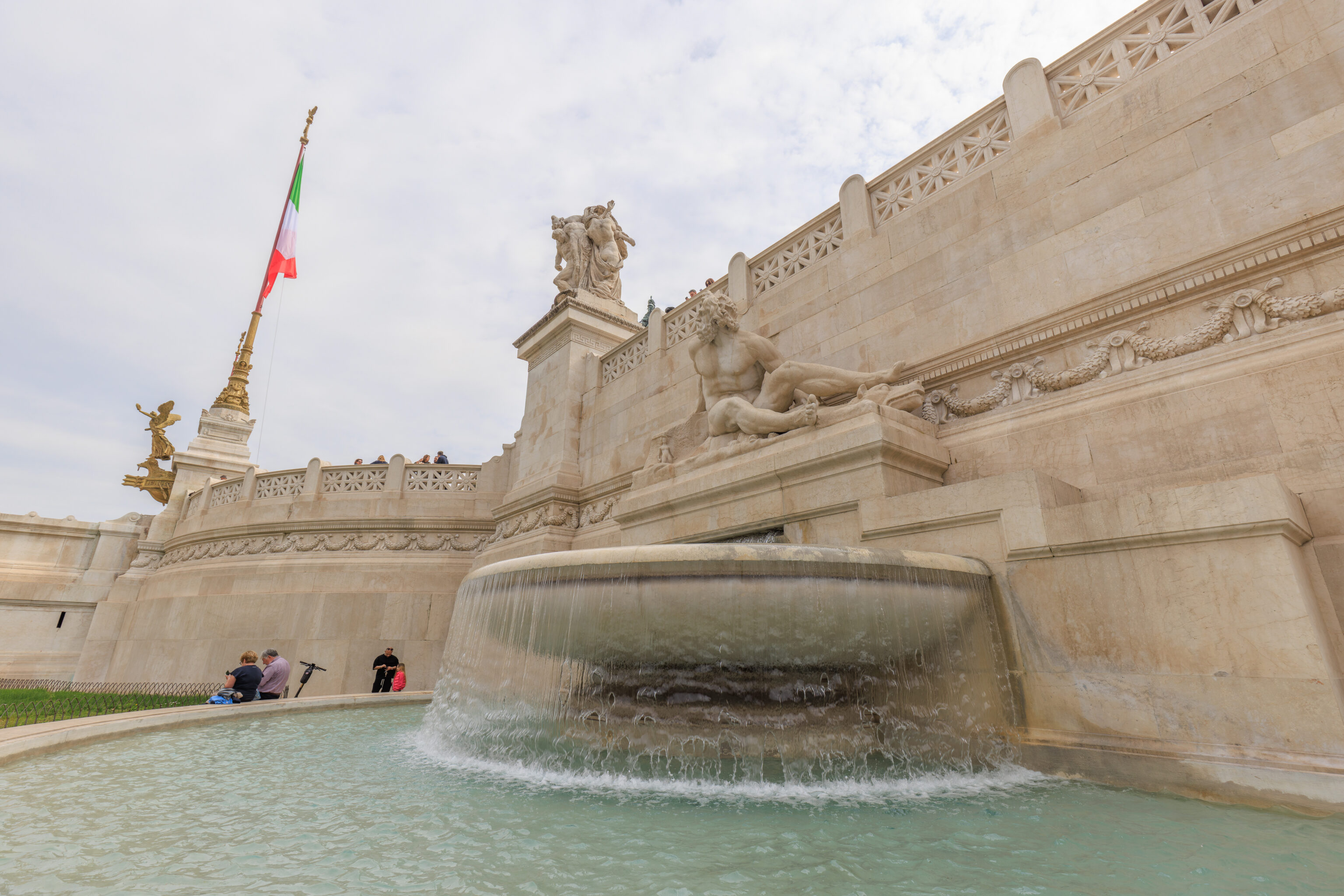
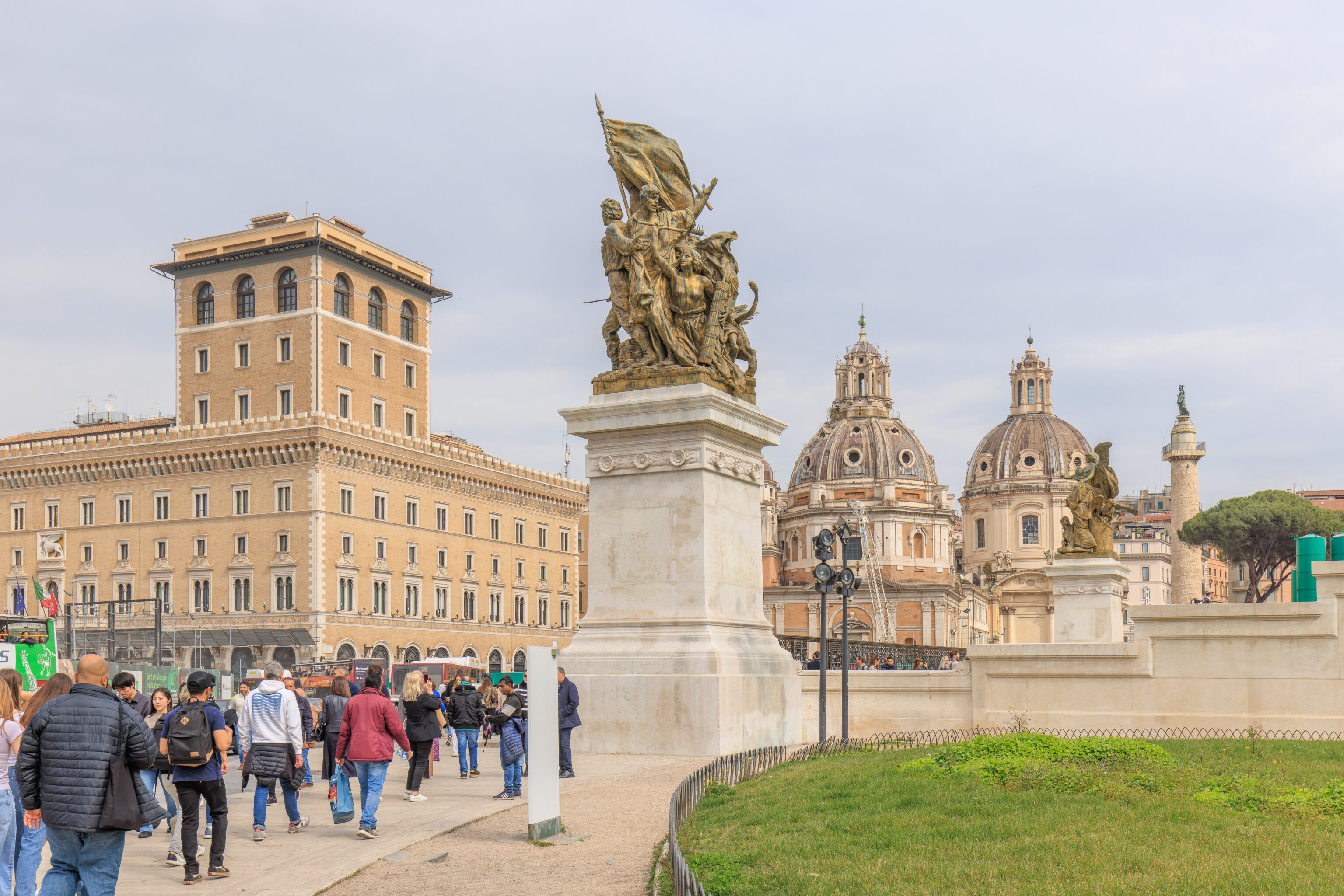
After winding around the inside of the monument, we ended up outside. We didn’t see everything inside, in particular, we seem to have missed the wide columned corridor that we saw while on the exterior front of the monument.
Palazzo Venezia
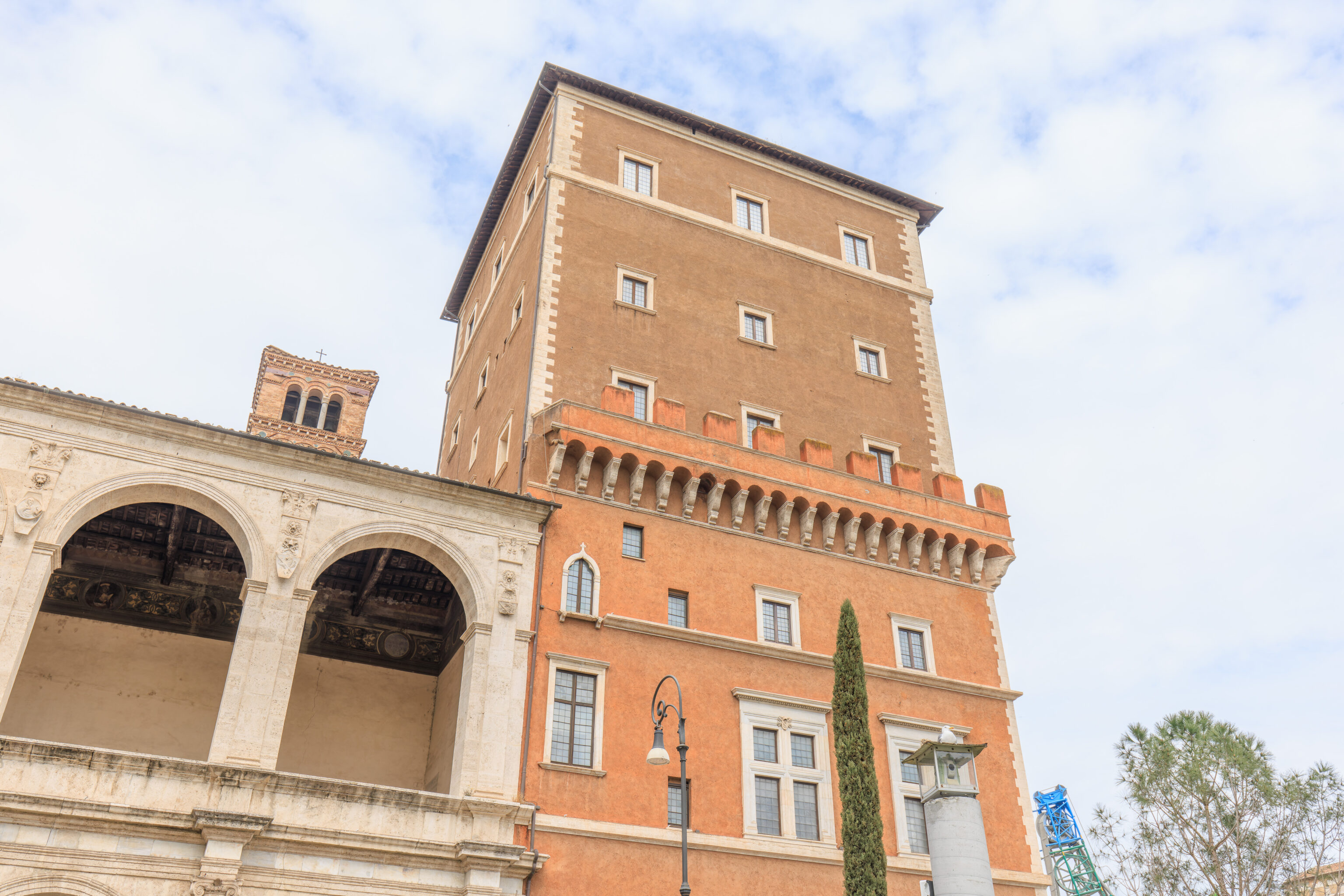
We decided to head over to the Palazzo Venezia next as the tickets that we purchased at the Monument to Victor Emmanuel II. This building currently houses the Museo Nazionale del Palazzo di Venezia (National Museum of the Palazzo di Venezia). The building dates back to the 15th century and has seen quite a bit of history. It was the residence of a future Pope, embassy of the Republic of Venice, and was used as a residence and office by Mussolini.
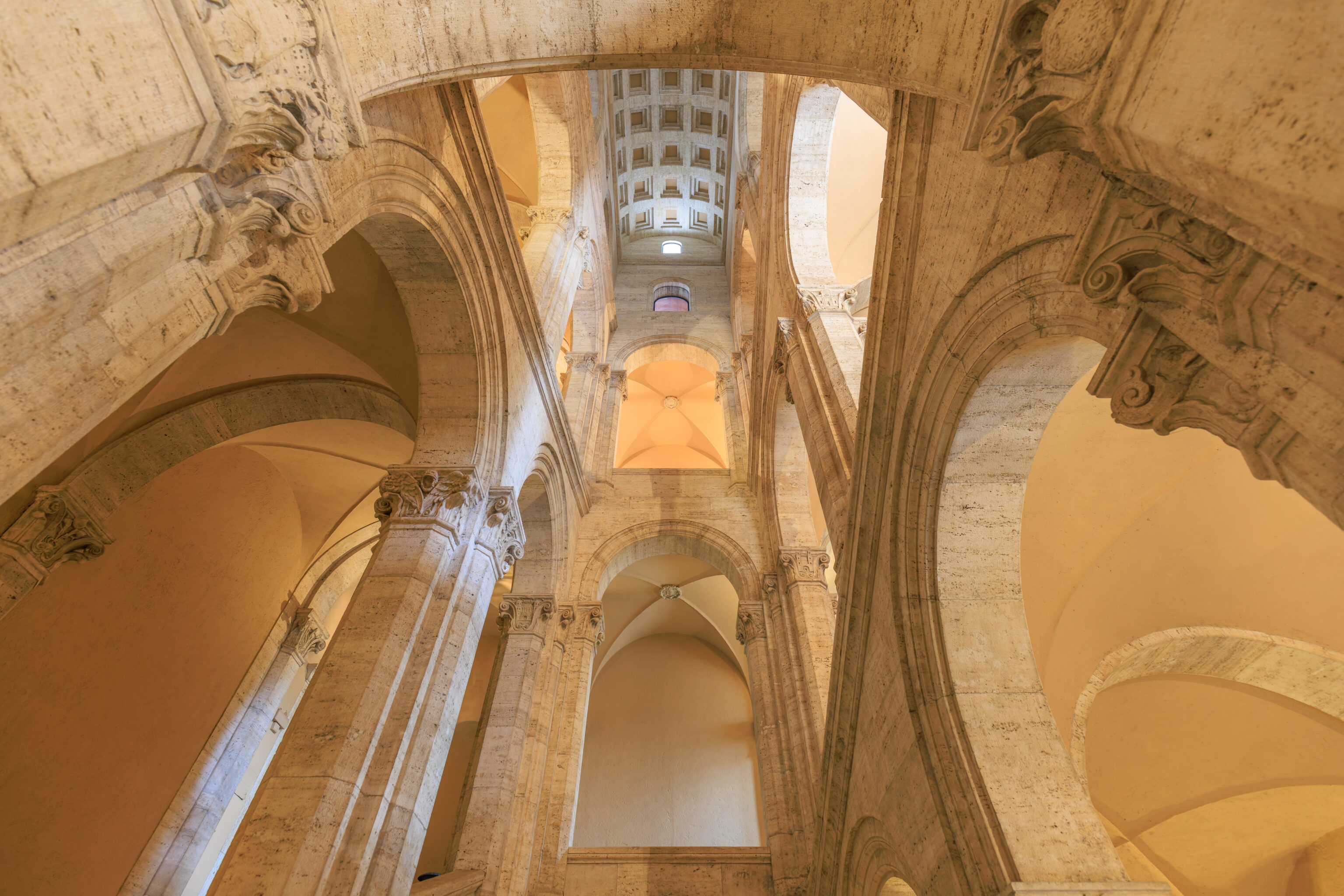
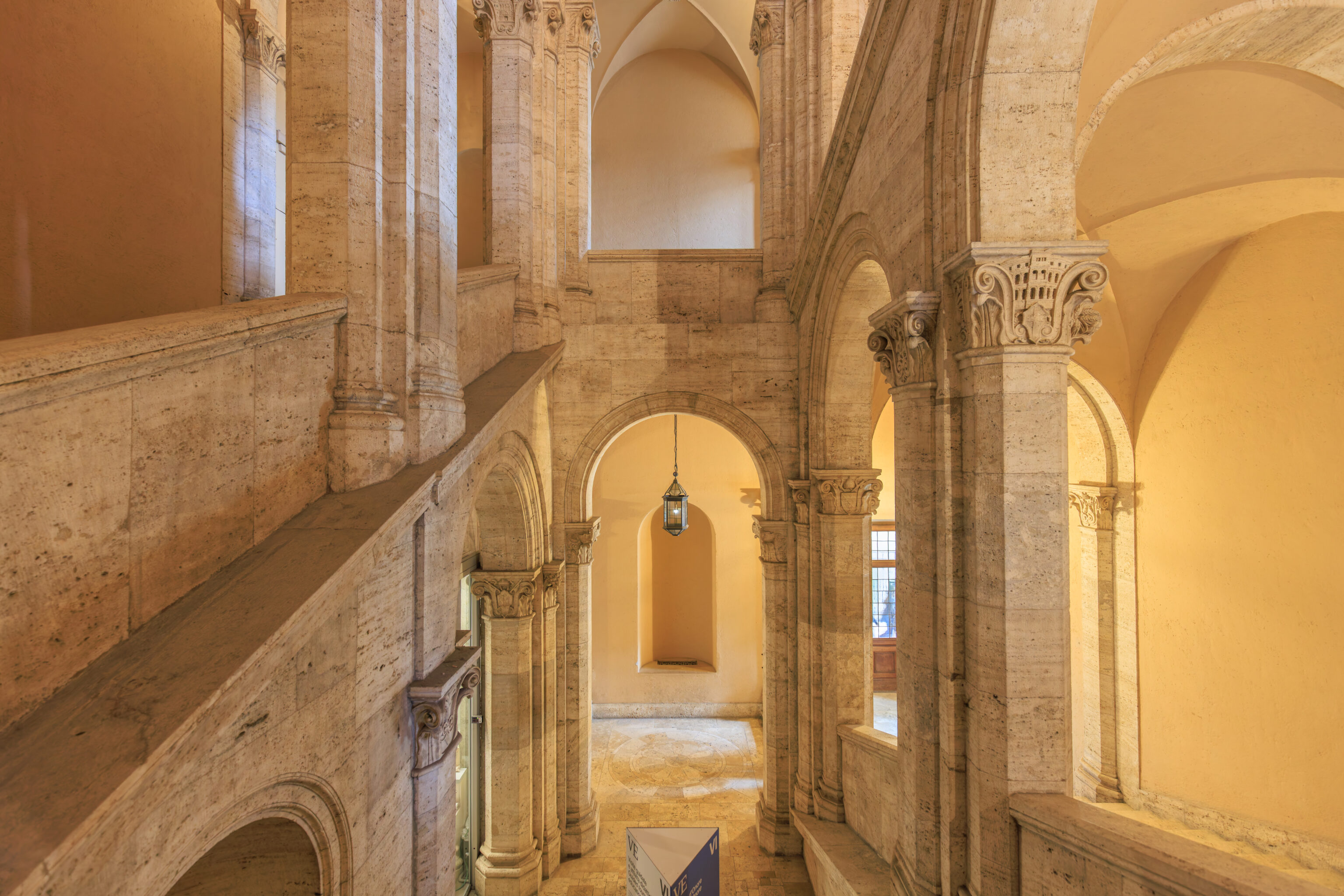
After showing our tickets, we ascended up to the second floor.
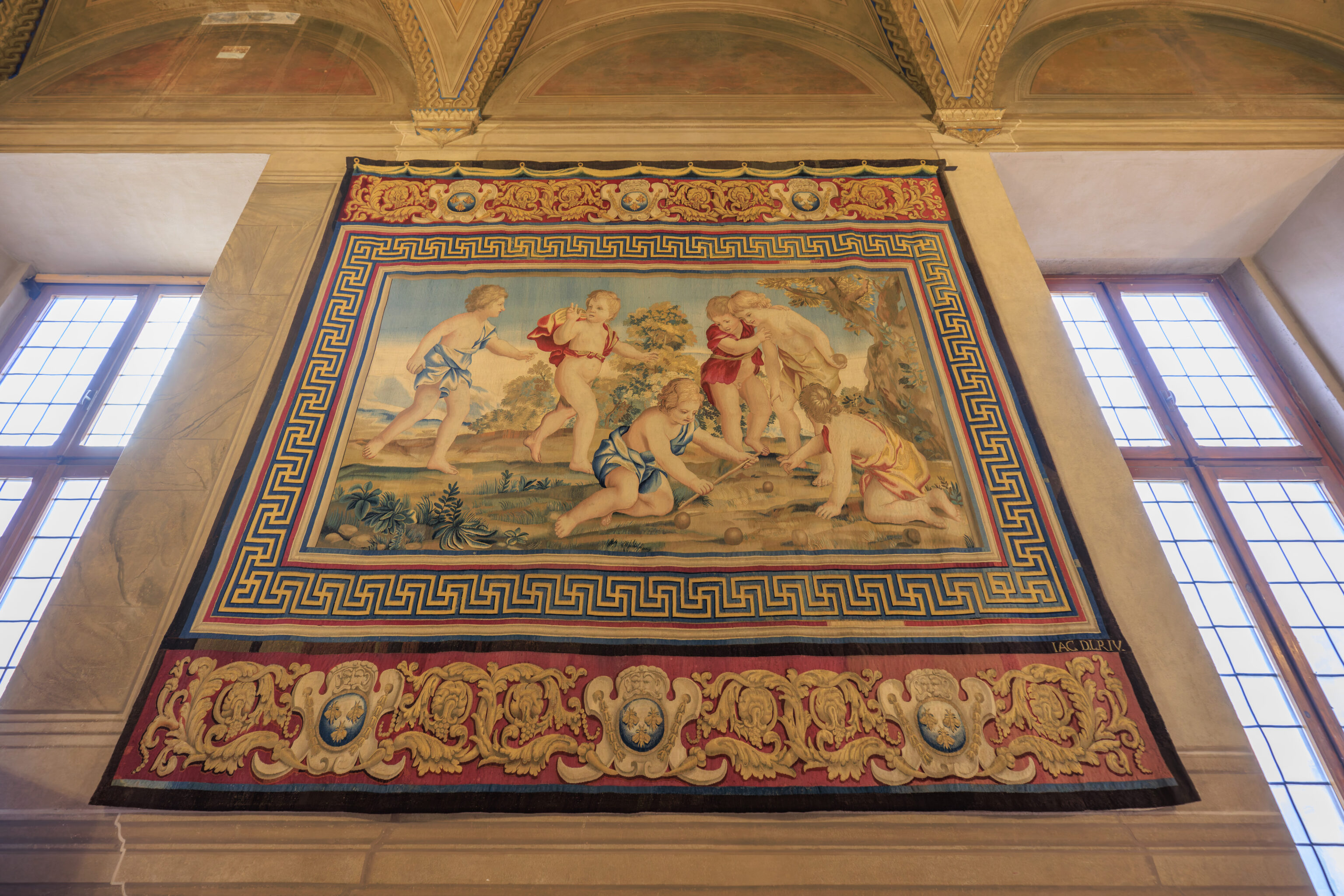
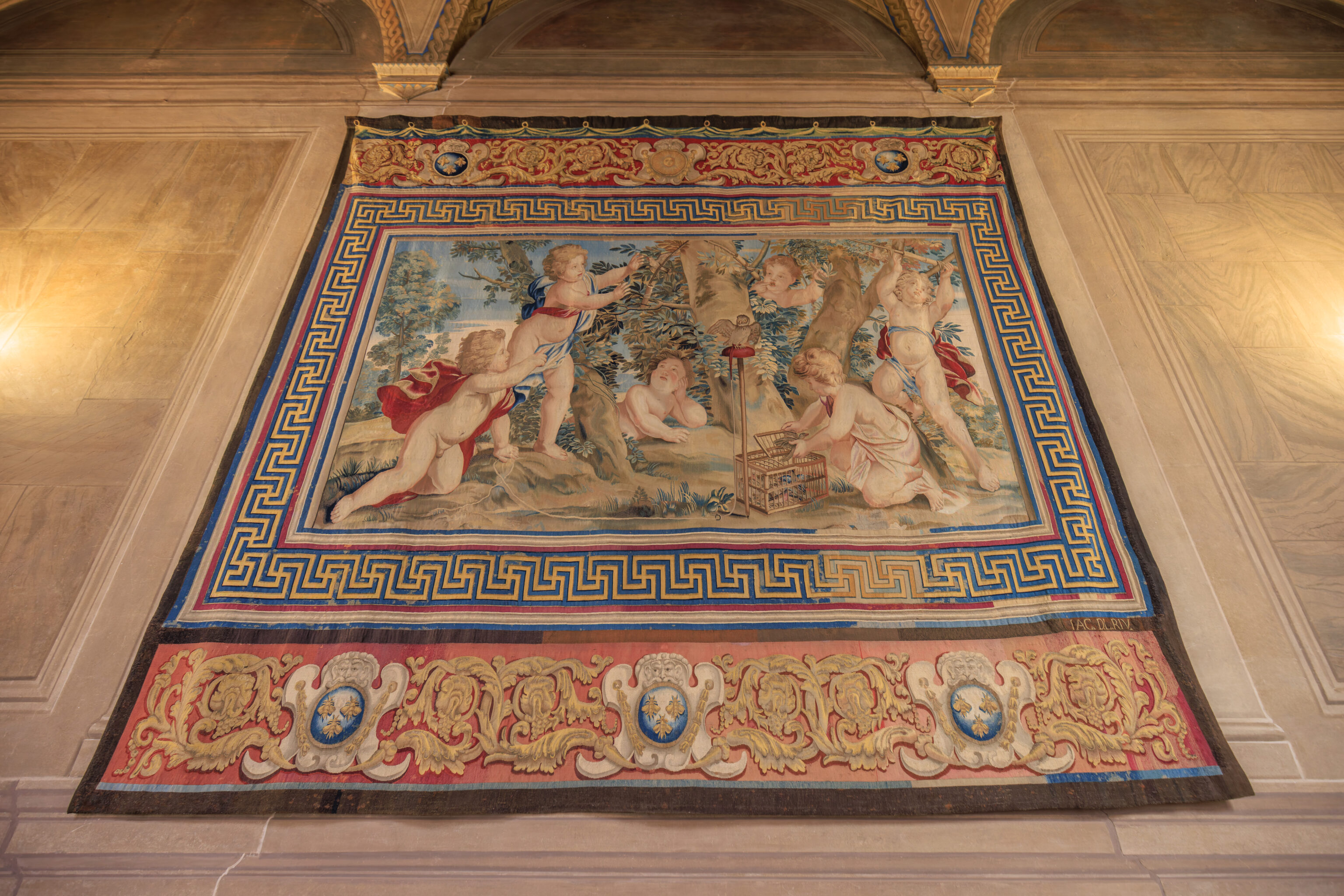
We passed by a room with tapestries.
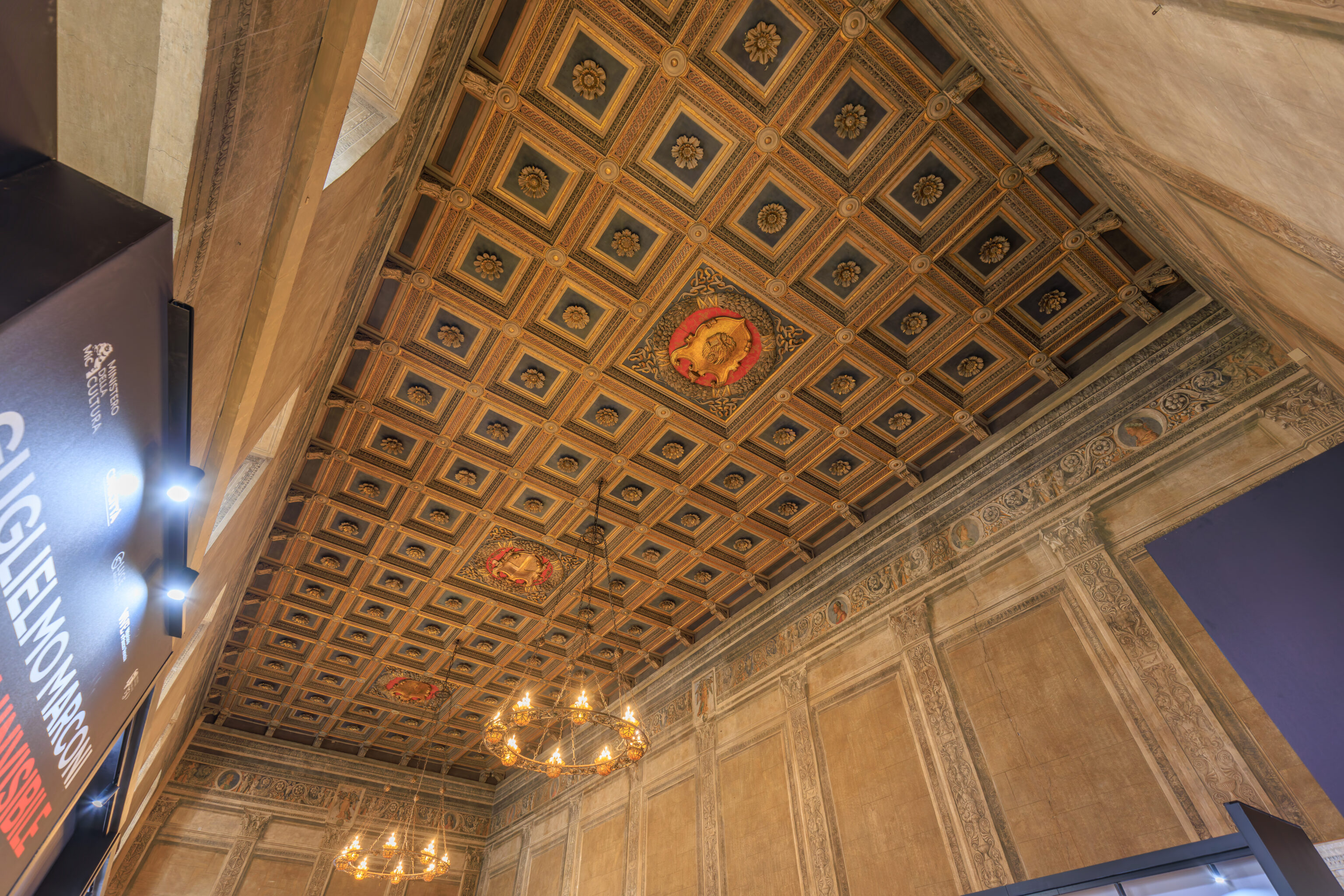
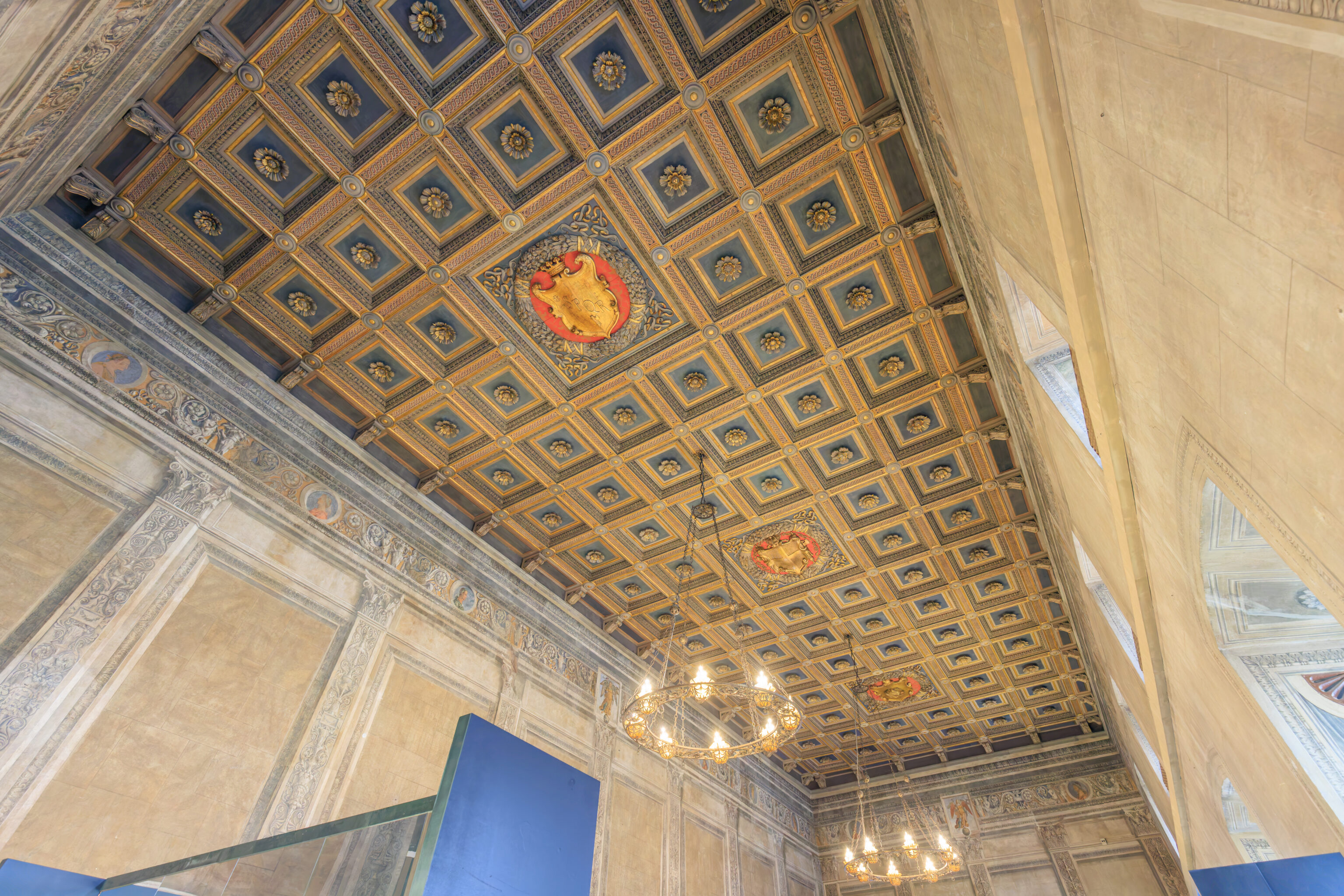
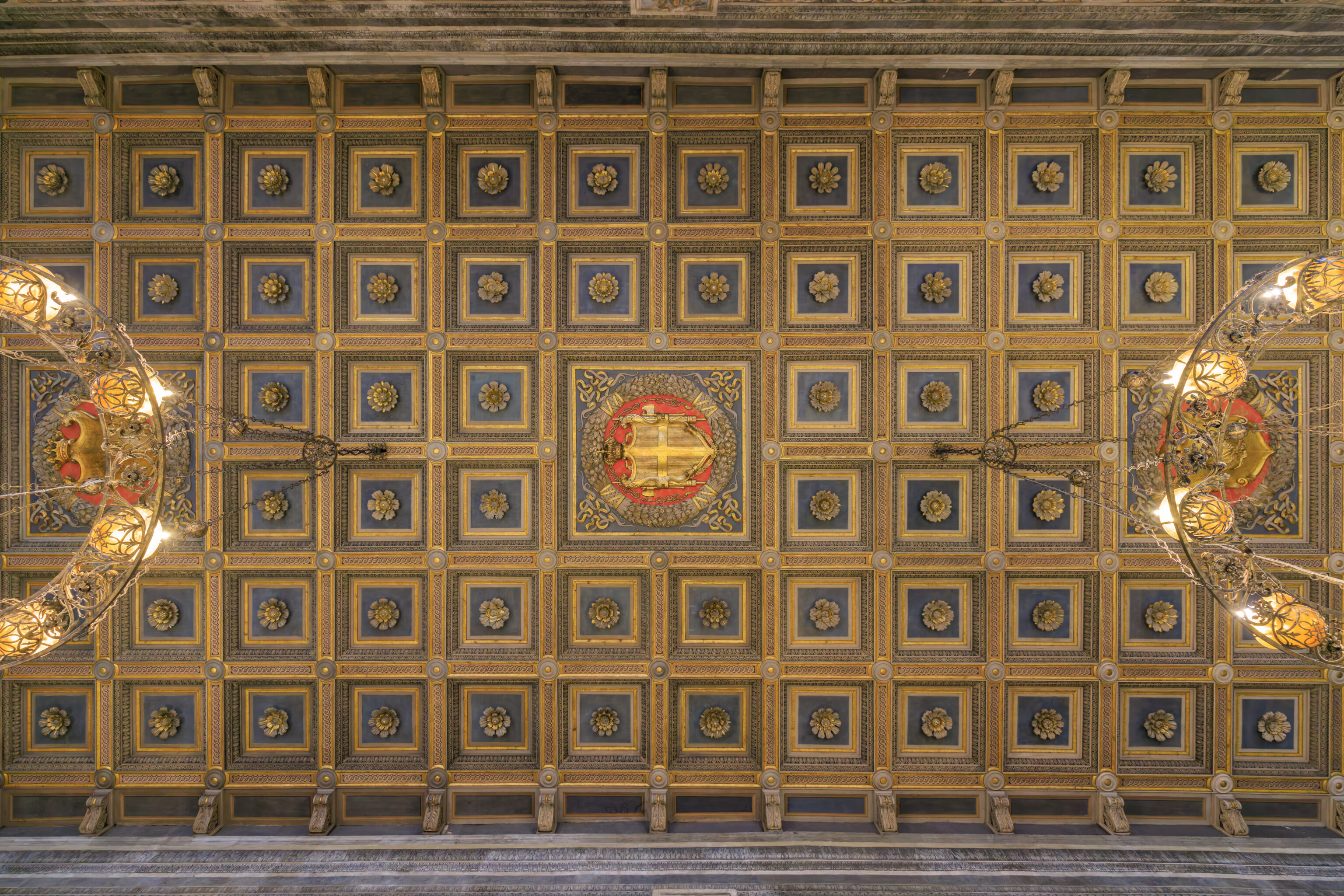
We ended up at the continuation of the Marconi exhibition that we saw earlier. It is located in the Sala Regia (Royal Hall), the largest room in the building.
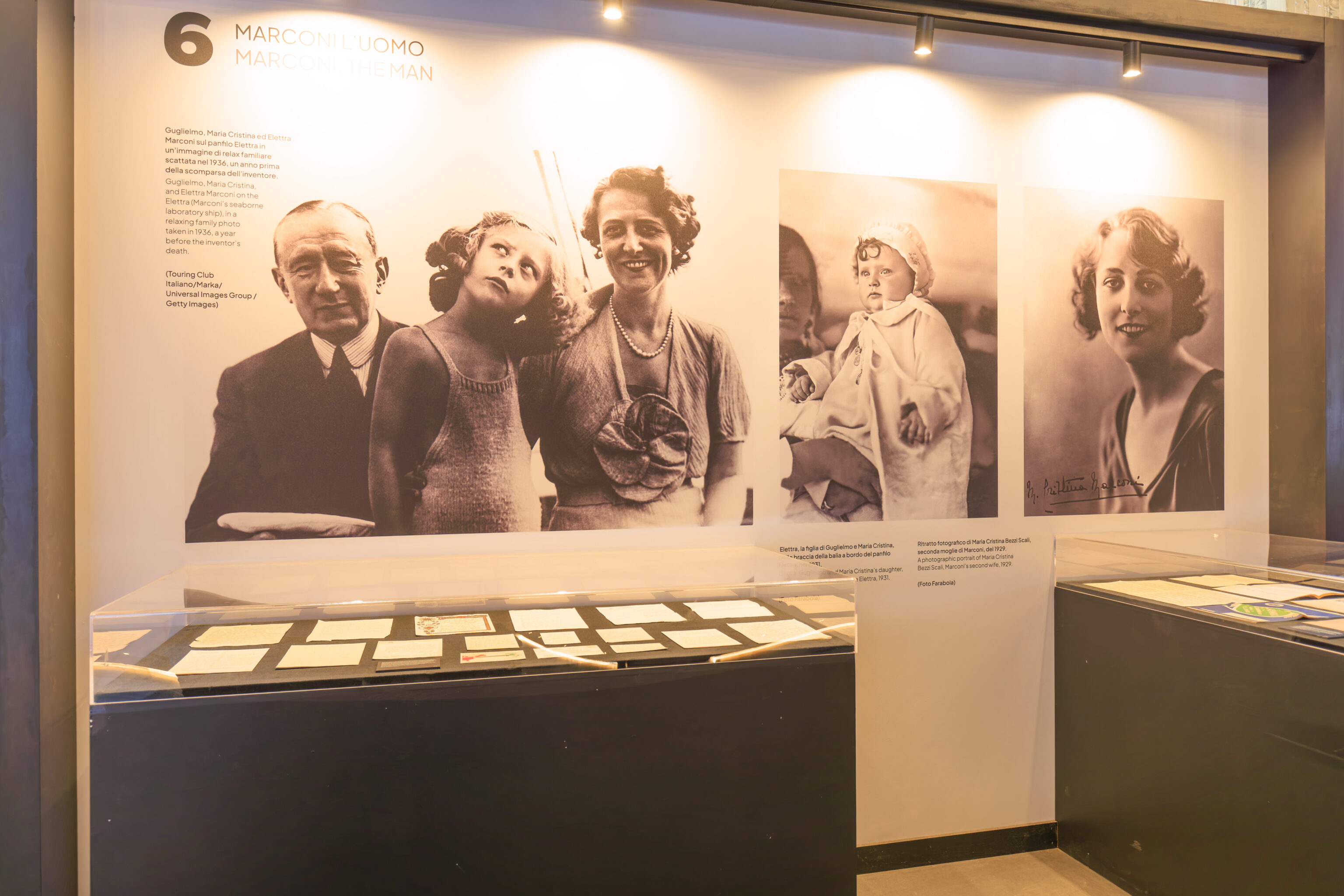
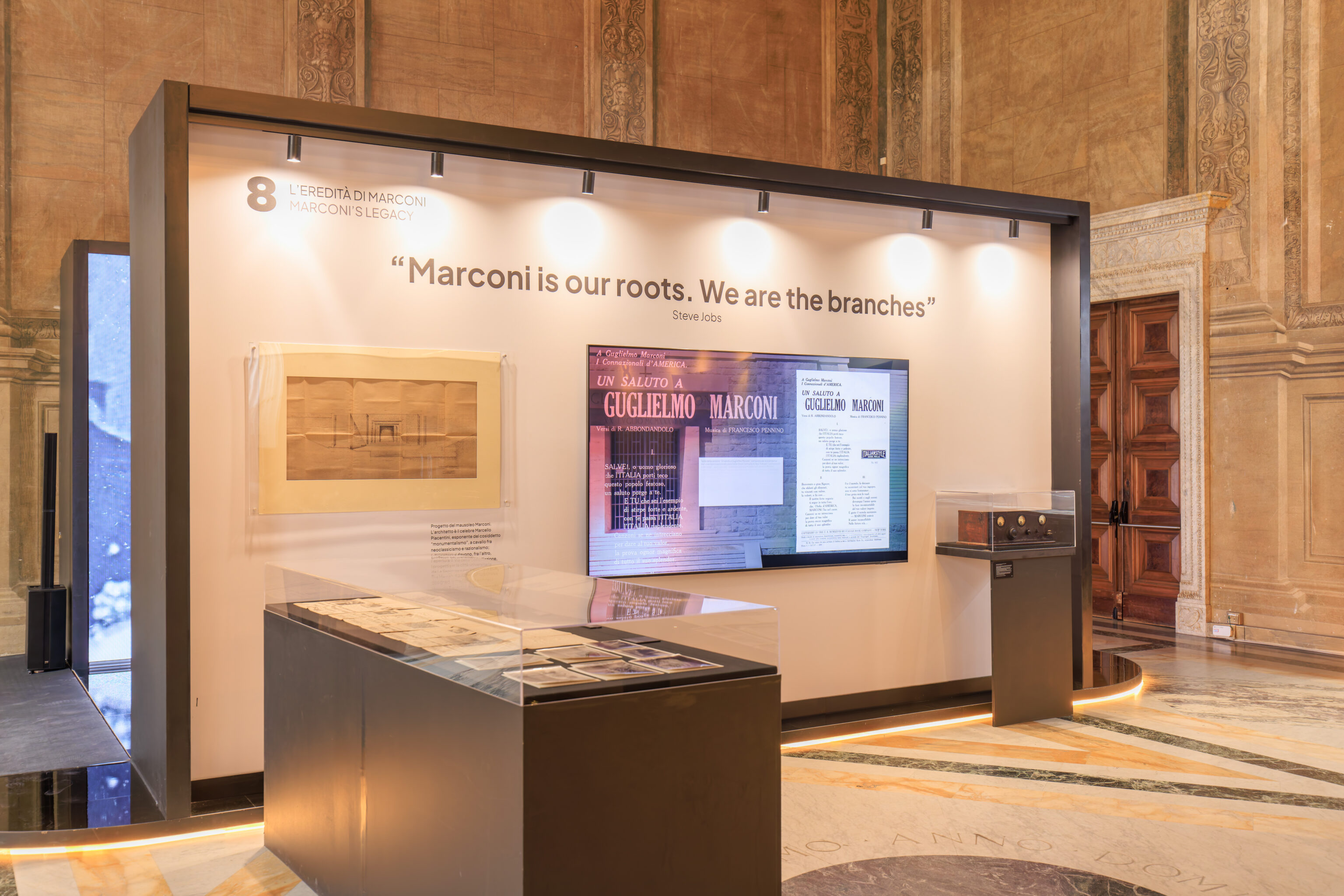
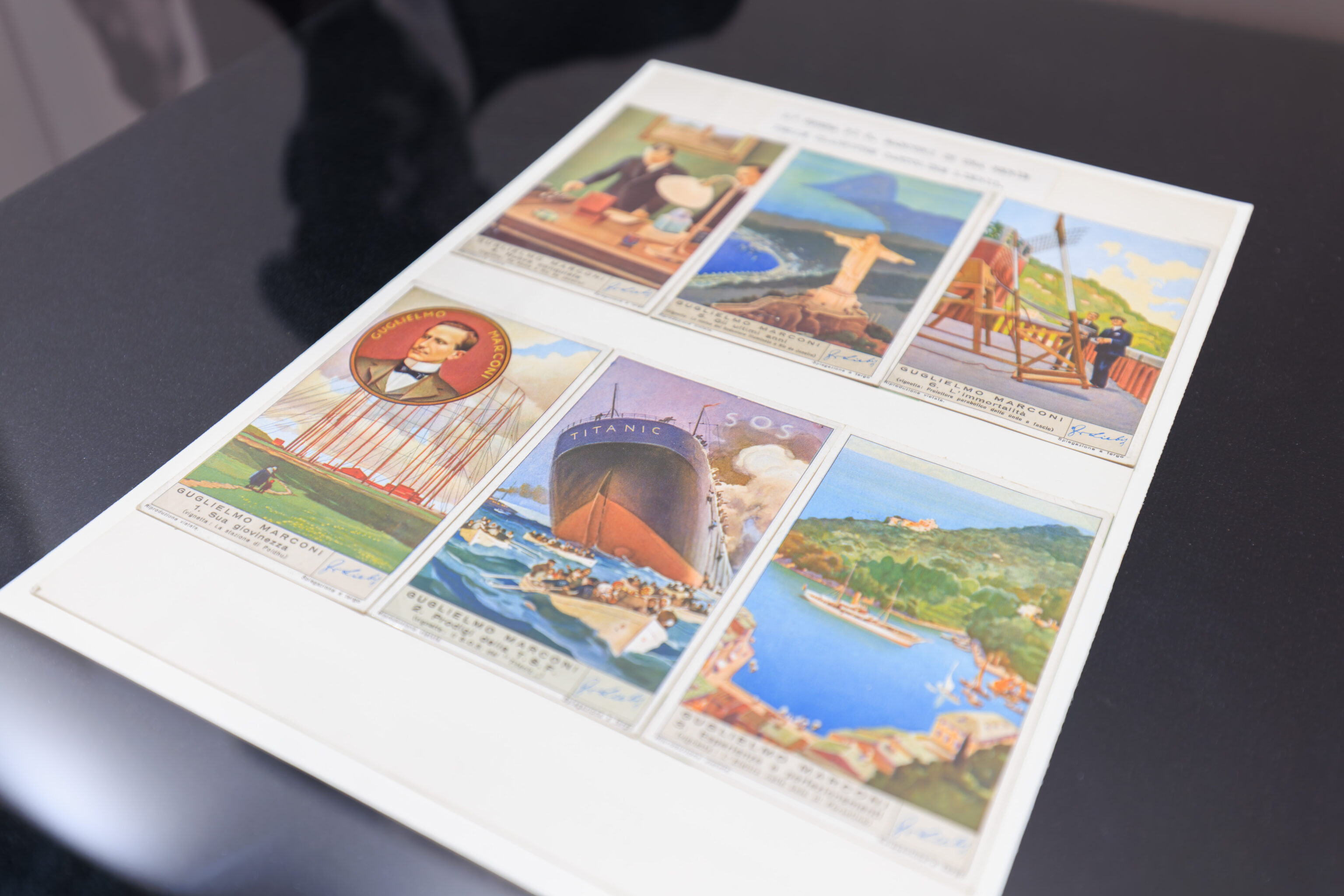
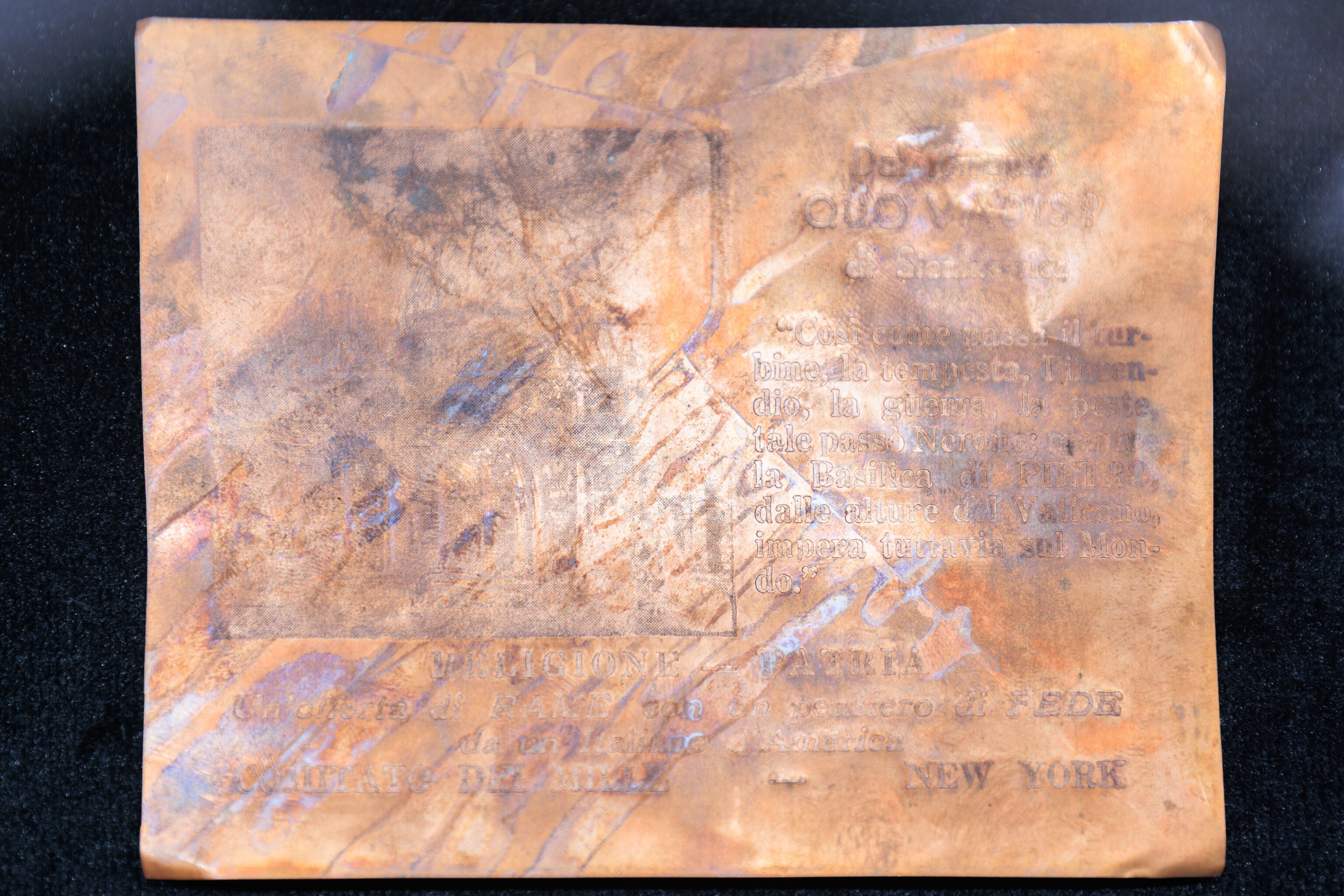
This exhibition section was also pretty heavy on text.

One section discussed the importance of Marconi’s radio was it was present on the Titanic as well as other ships nearby which were able to receive the distress signal from the ship and changed course to assist.
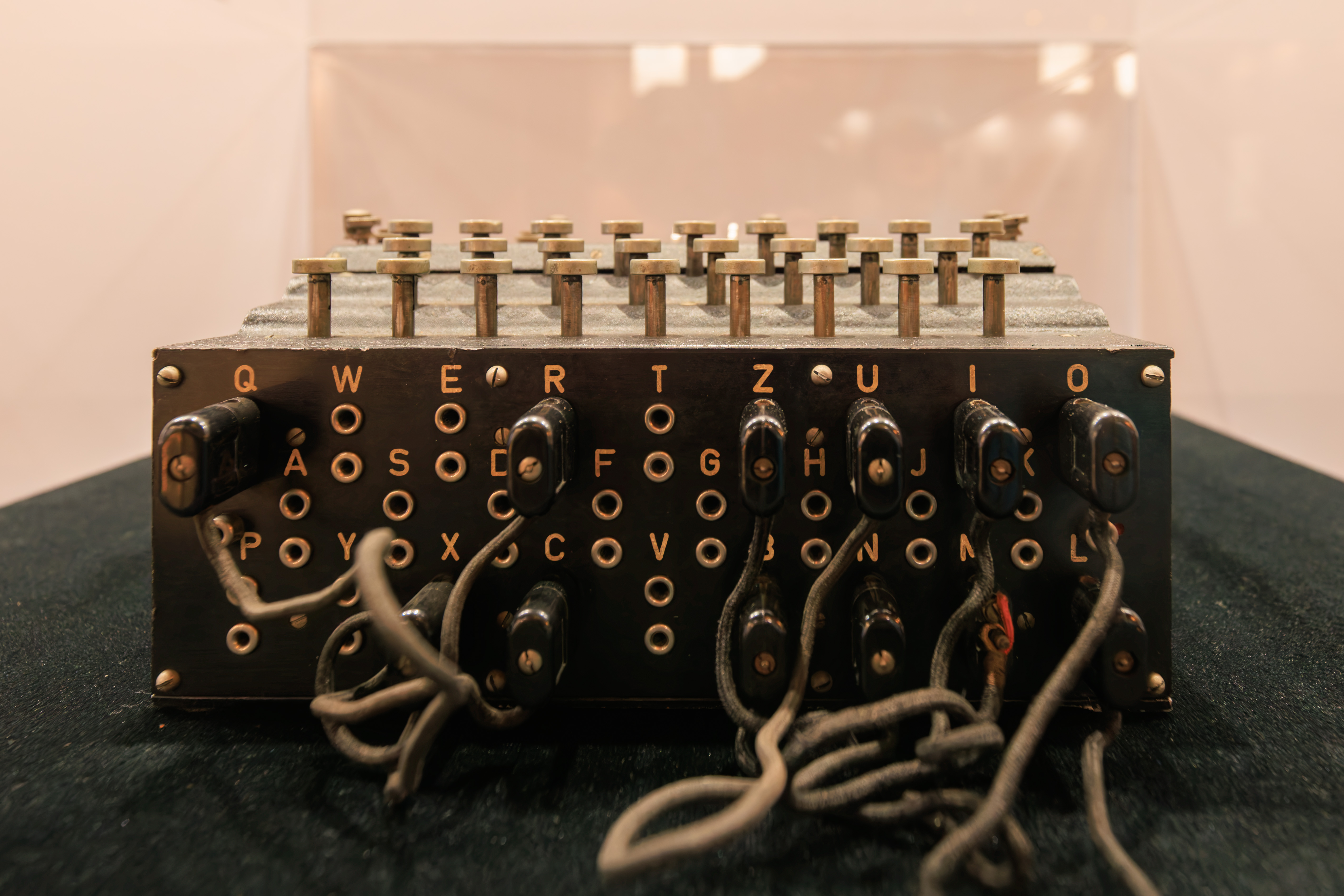
We recognized this device as a German Enigma machine, another example of wireless technology. We saw the efforts by the Allies to defeat the Enigma during a visit to Bletchley Park two years ago.
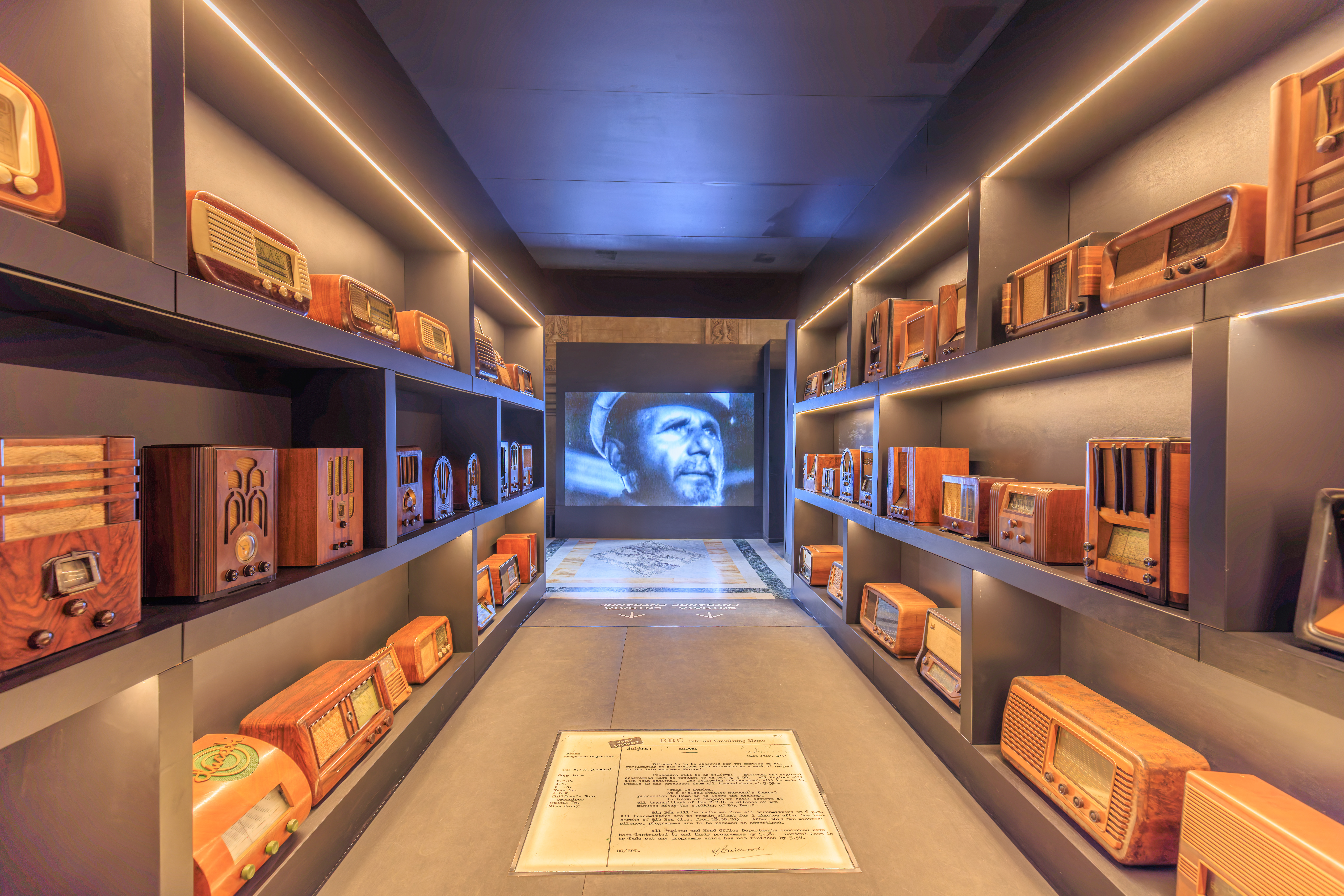
We exited the exhibition through this passageway that featured various radios on either side as well as a video on the wall ahead.
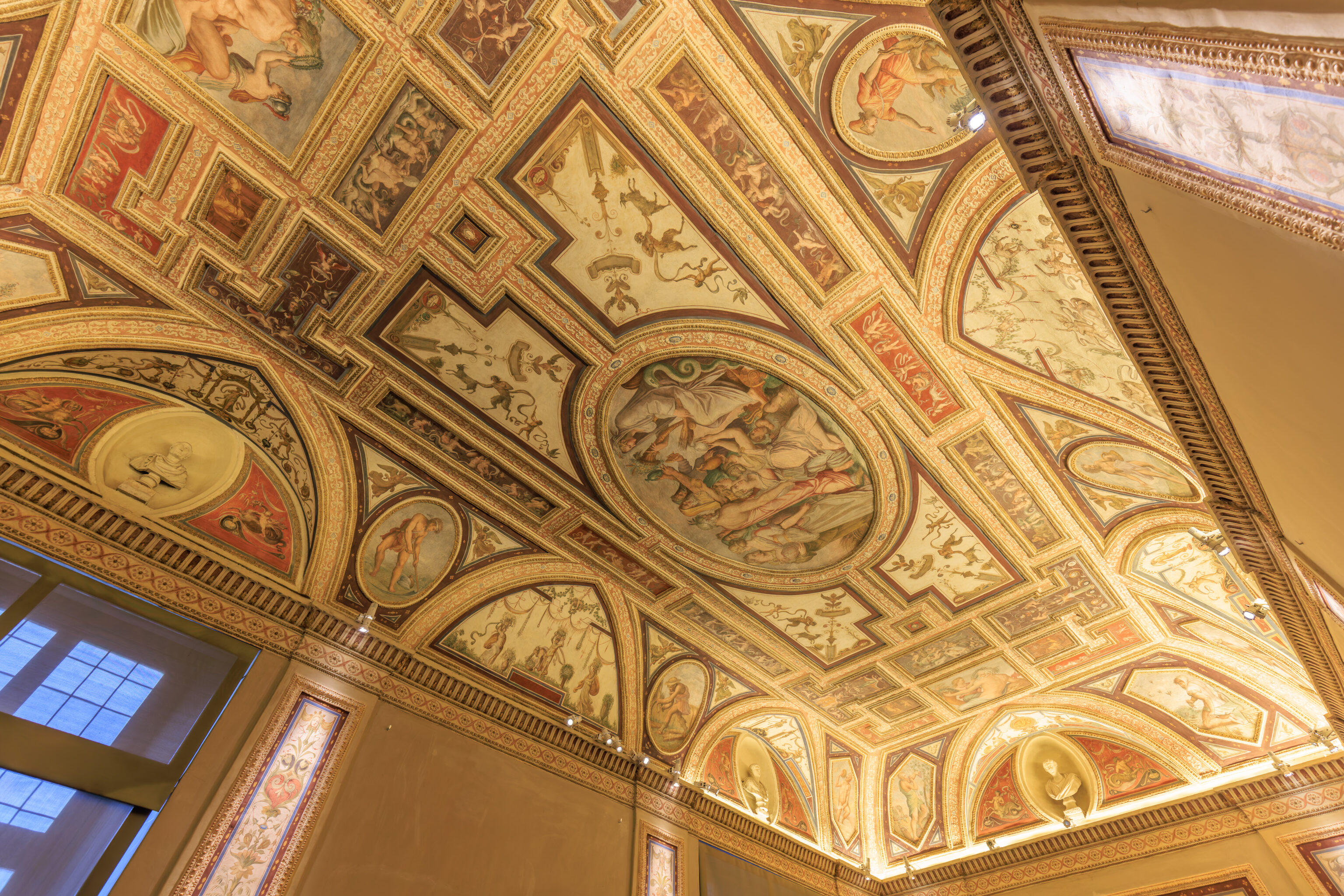
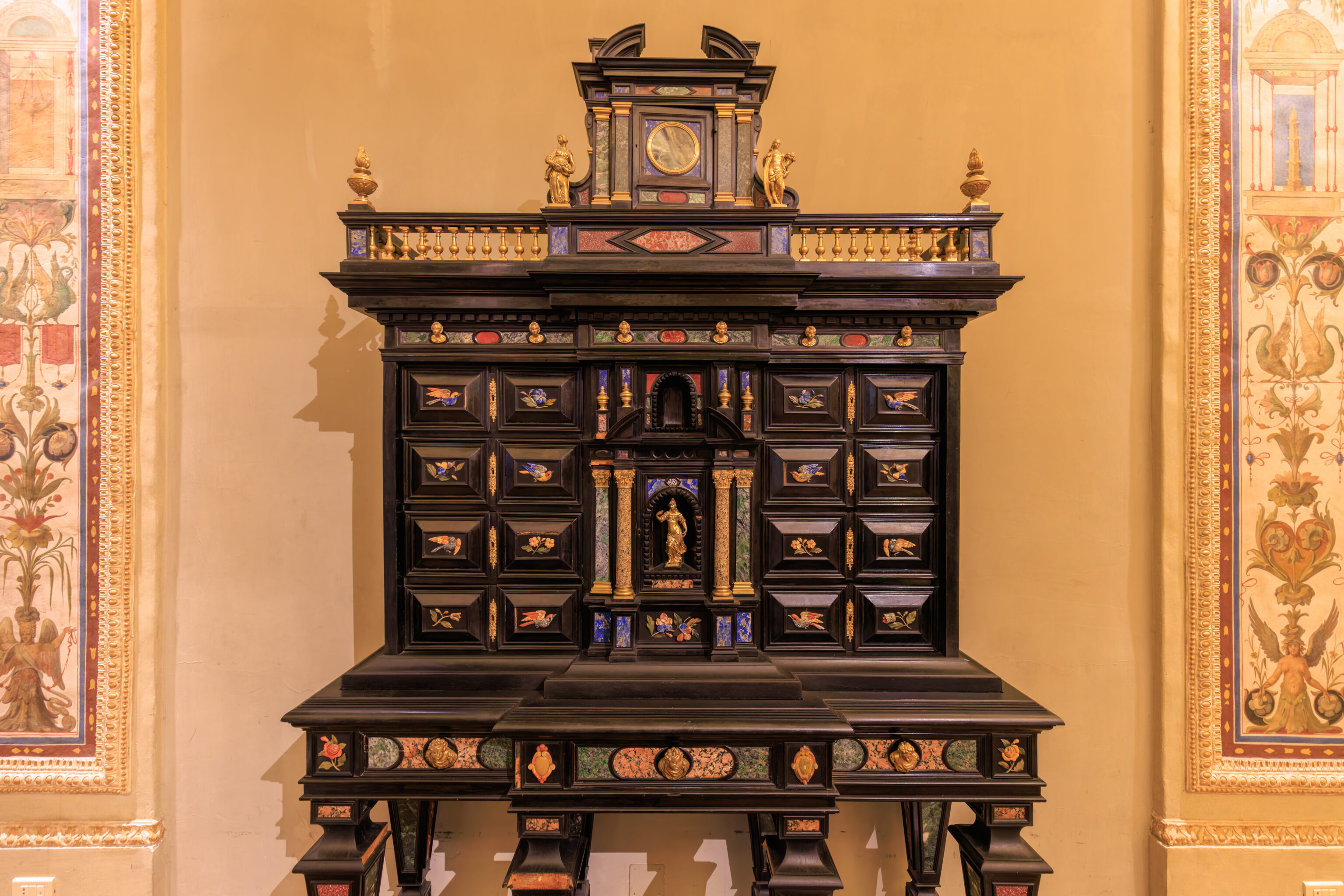
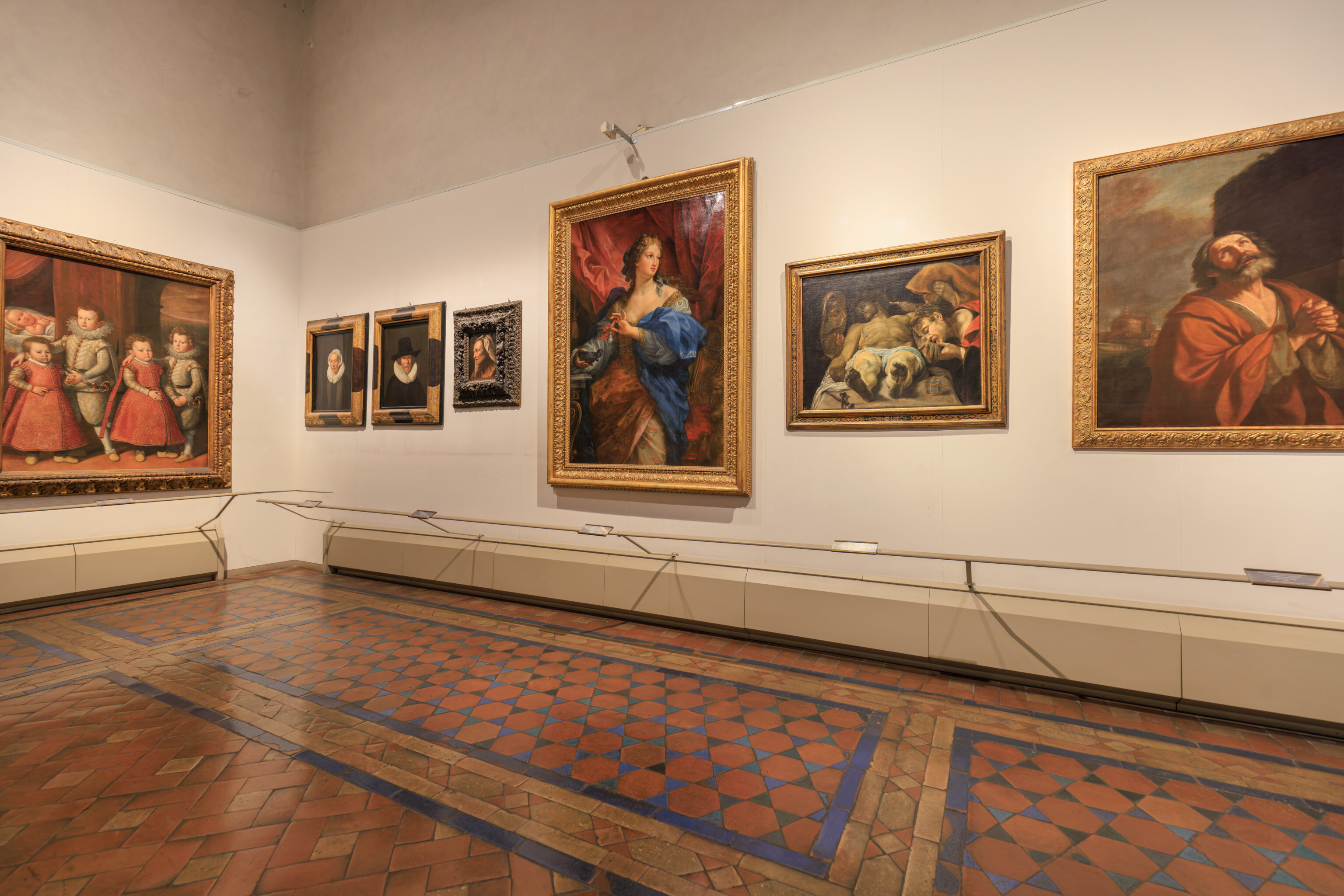
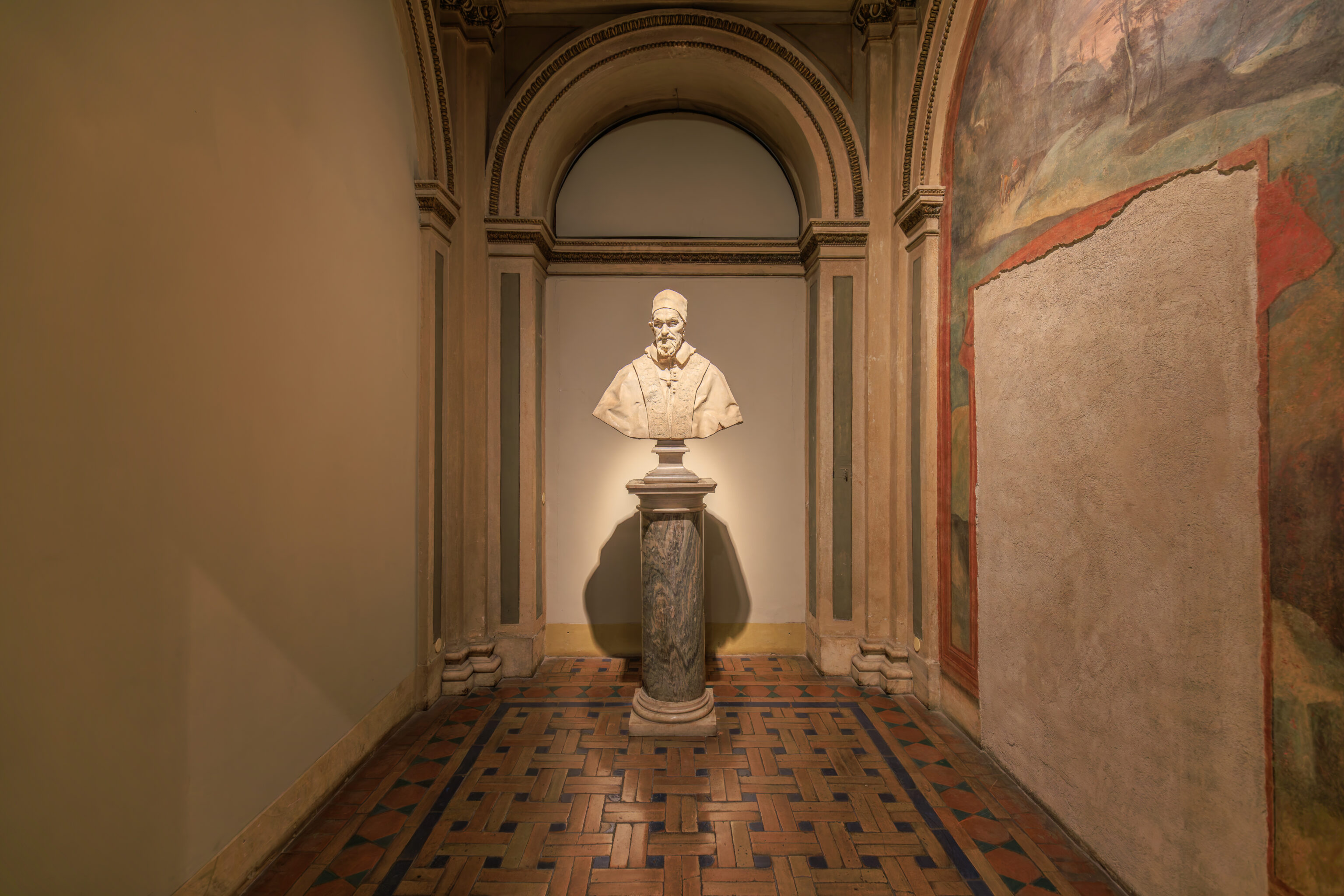
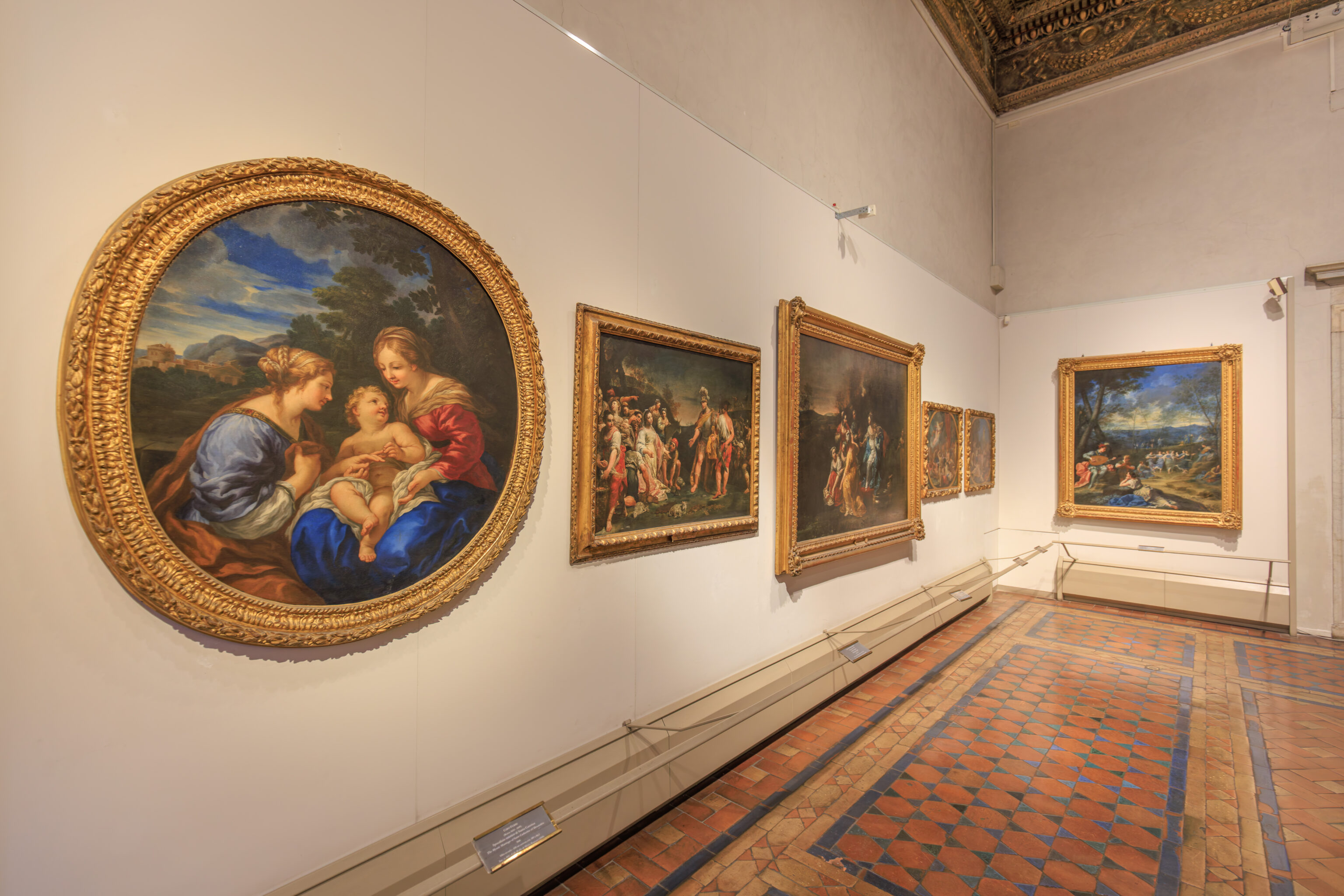

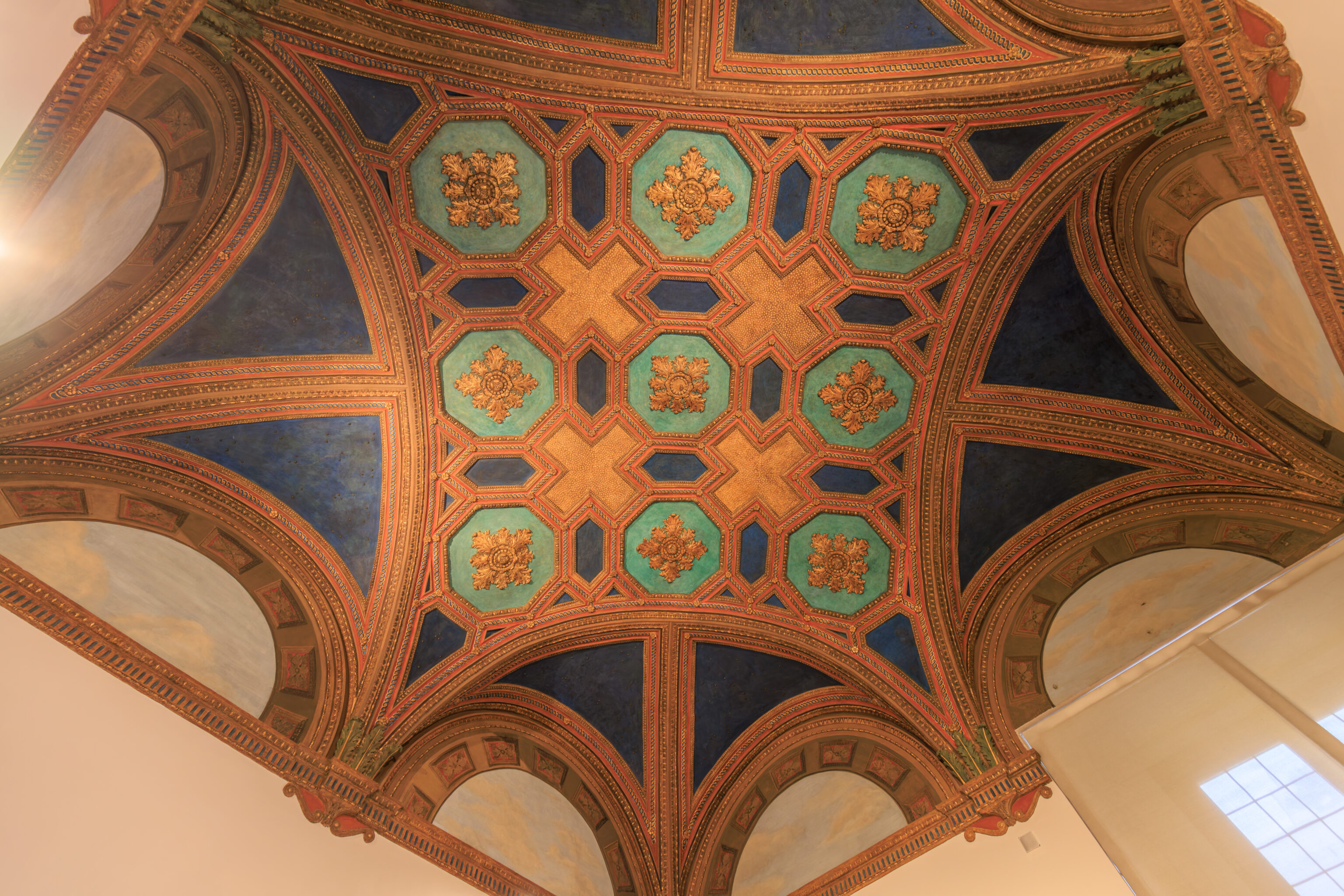
The remainder of the museum contained various works of art. Some of the rooms had a historic appearance while others did not.
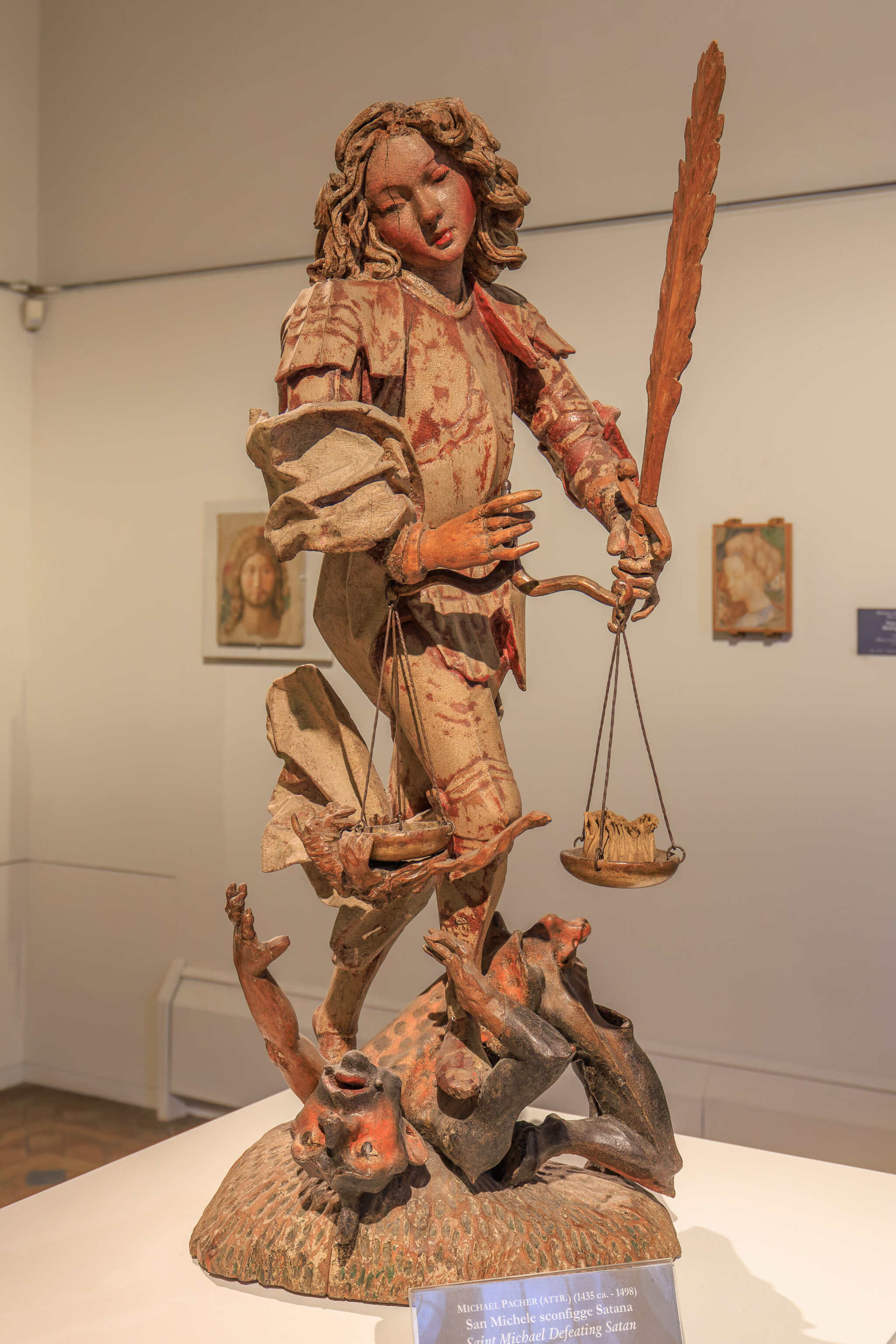
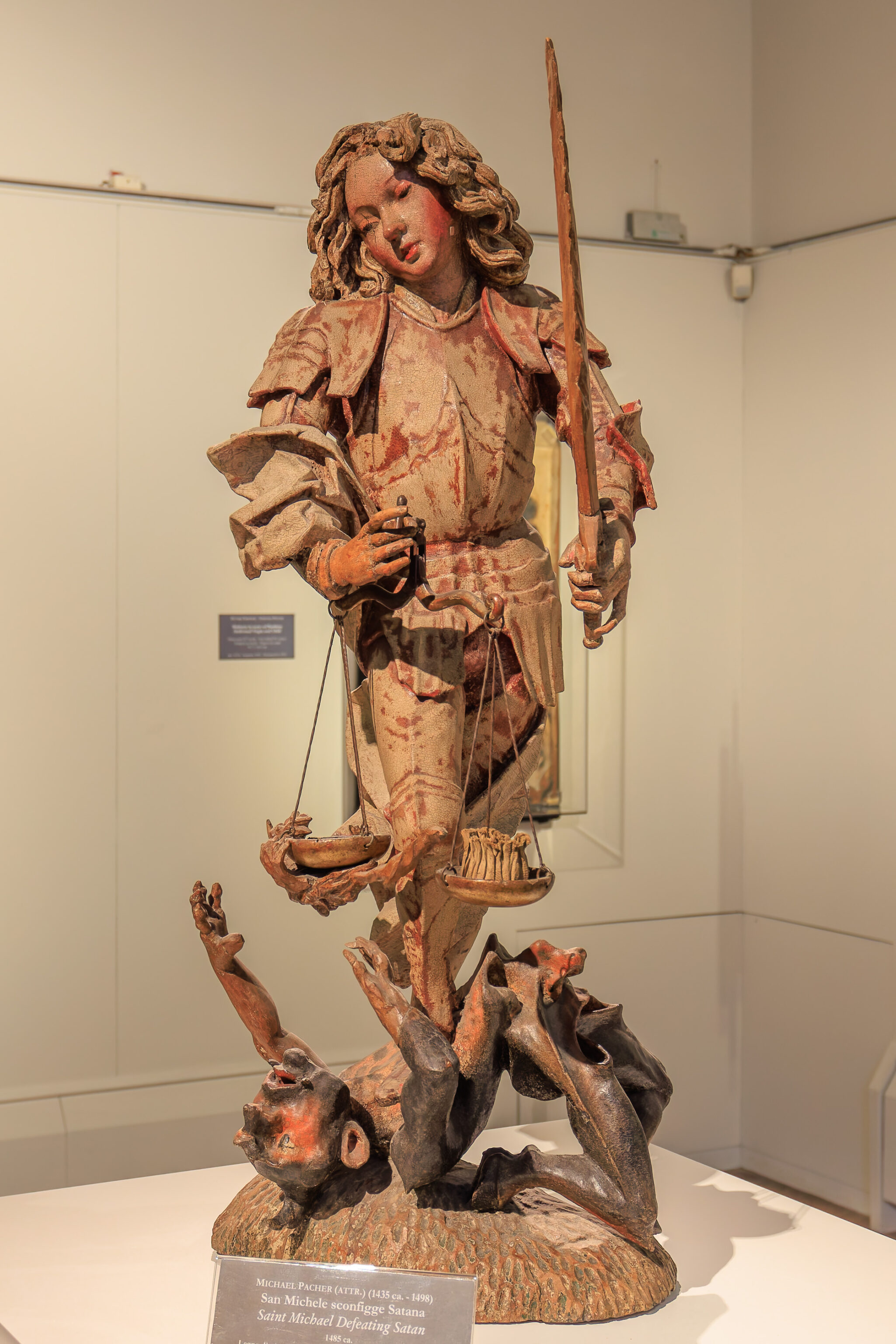
A sculpture from the 15th century depicting Saint Michael defeating Satan.
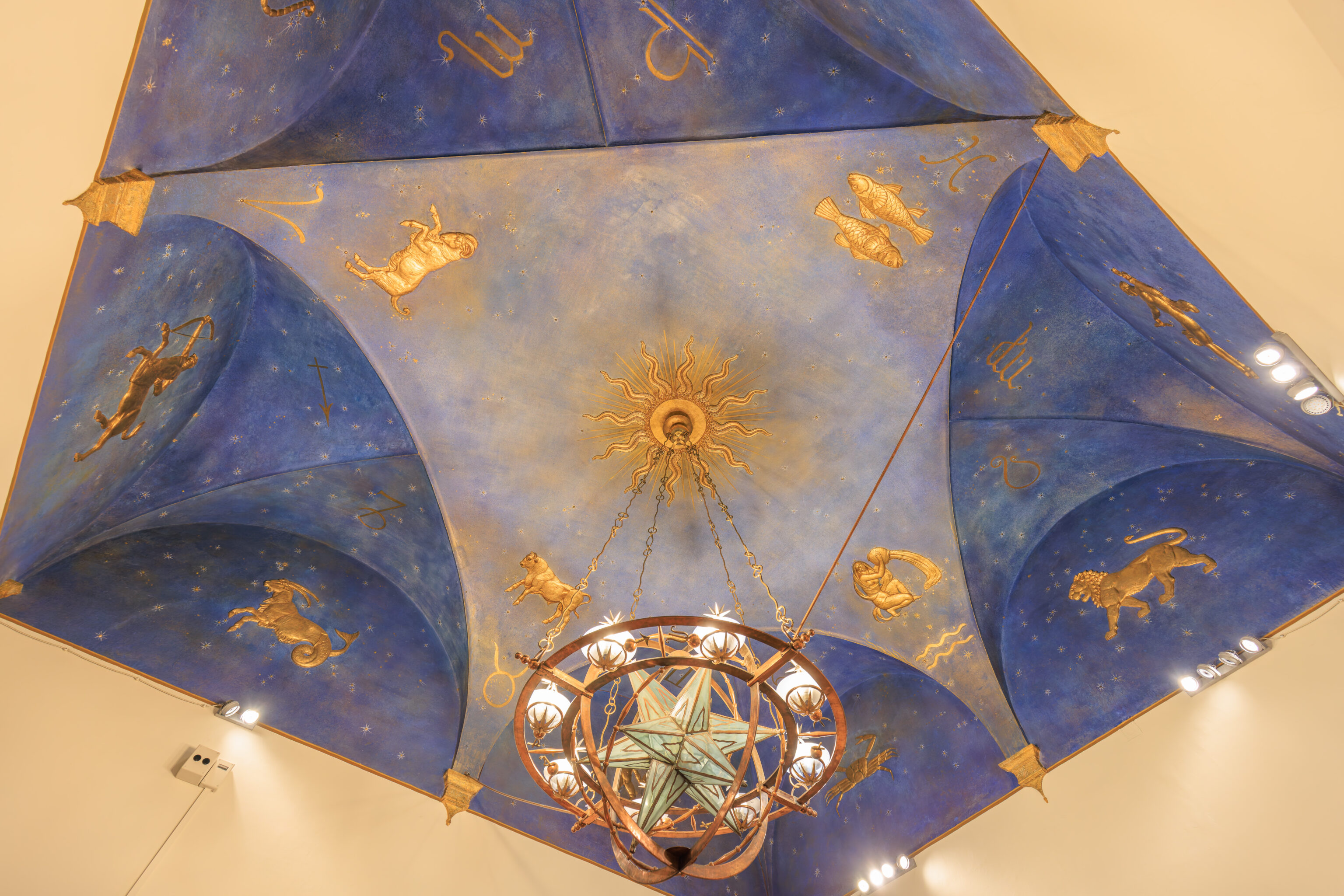
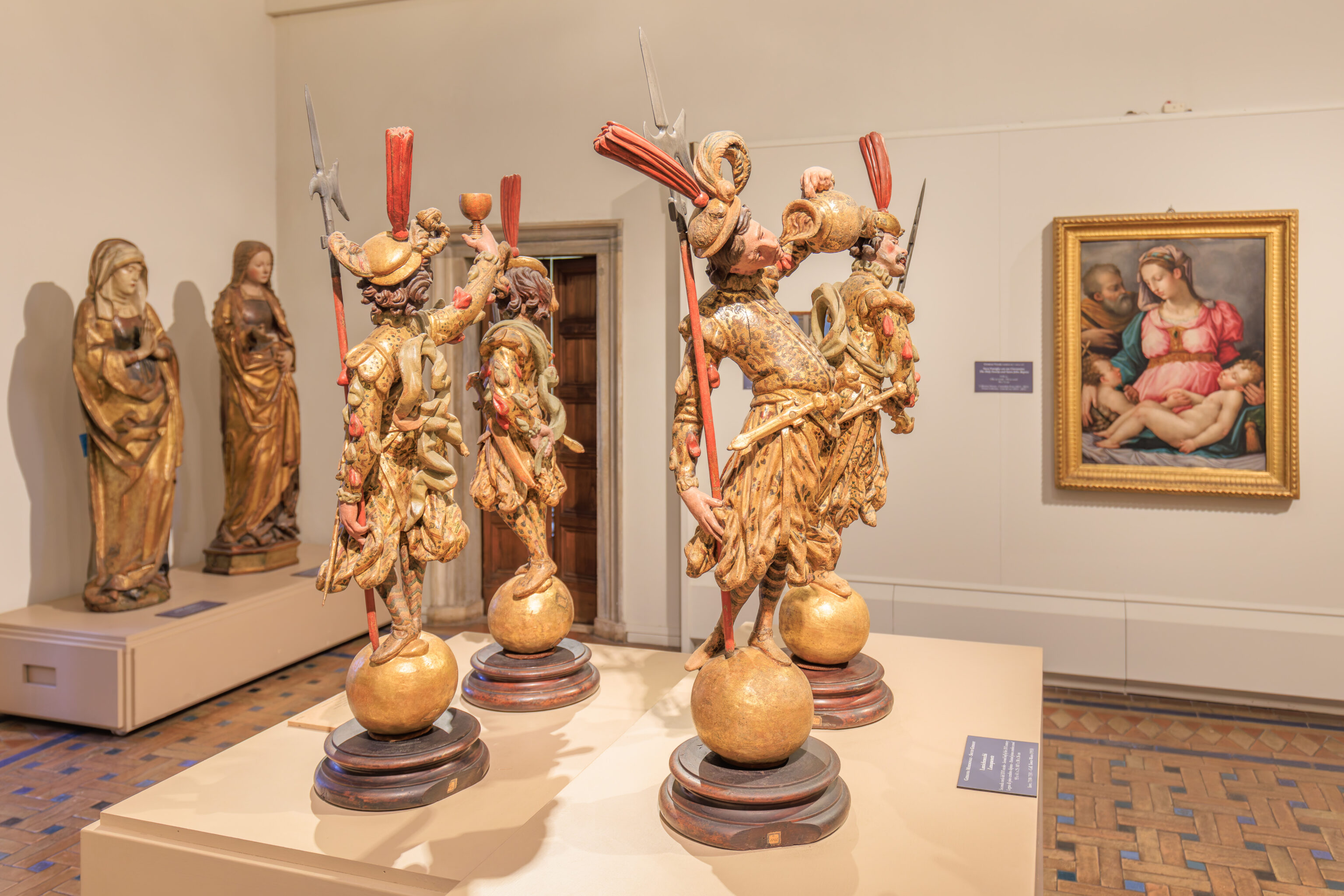
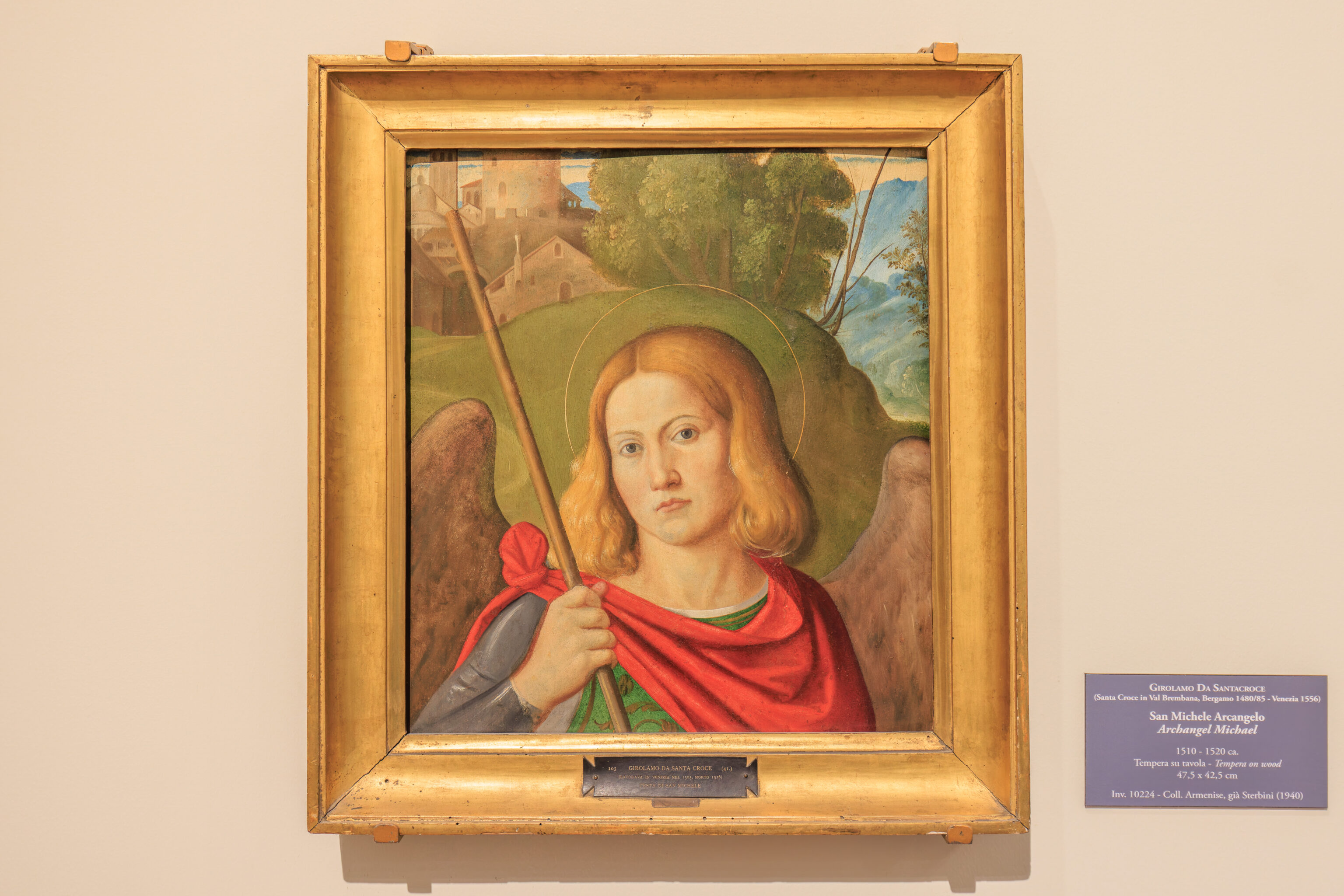
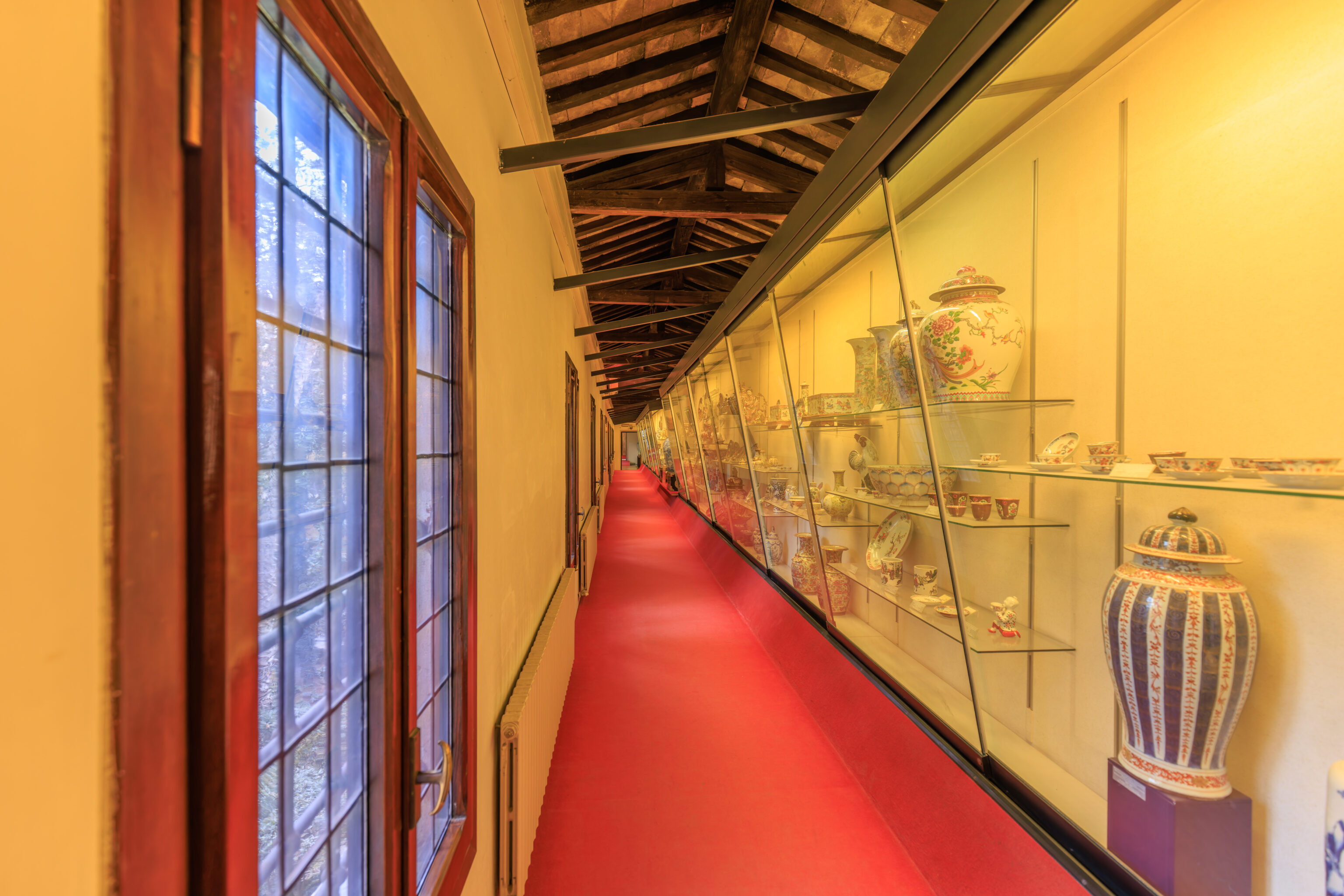
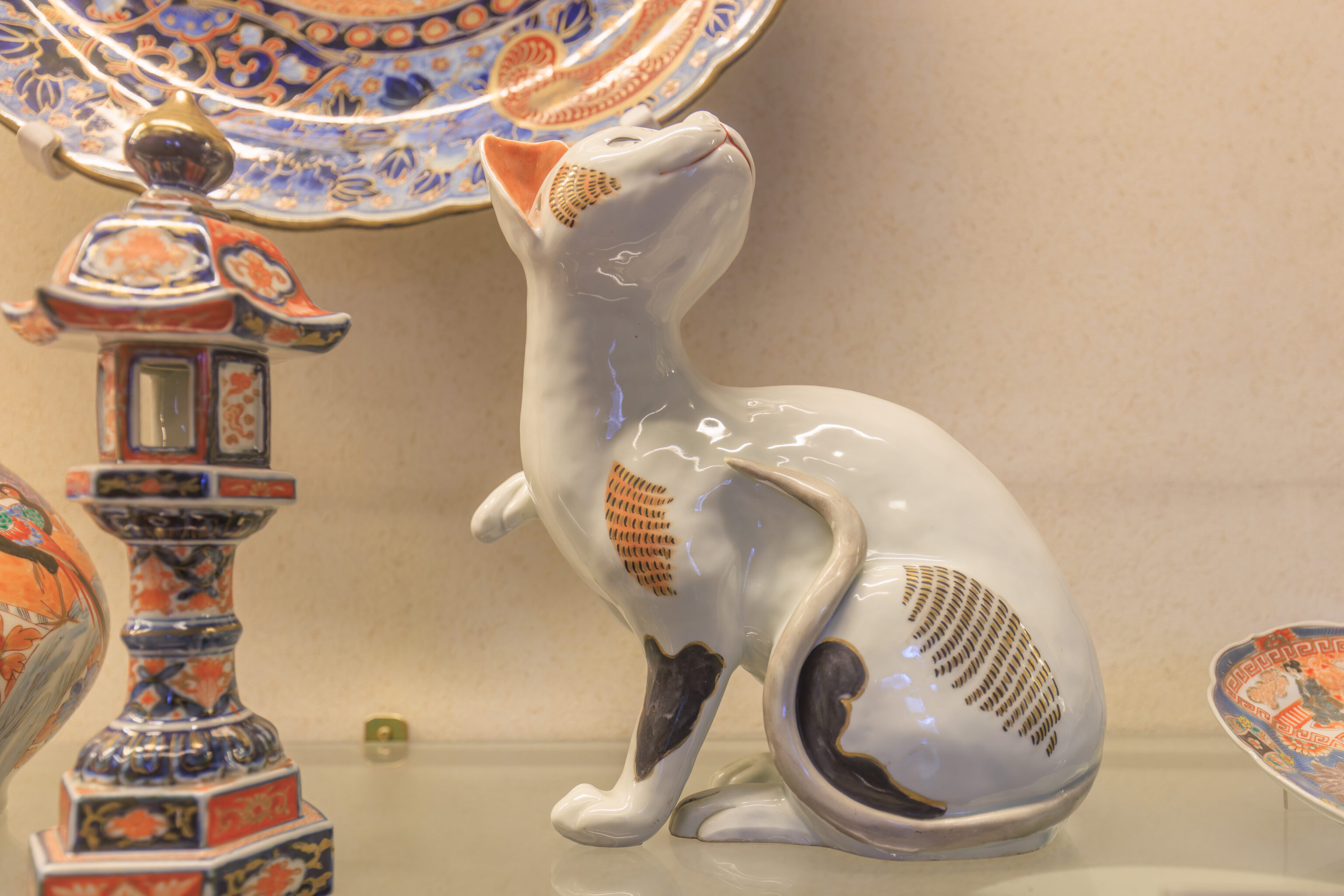
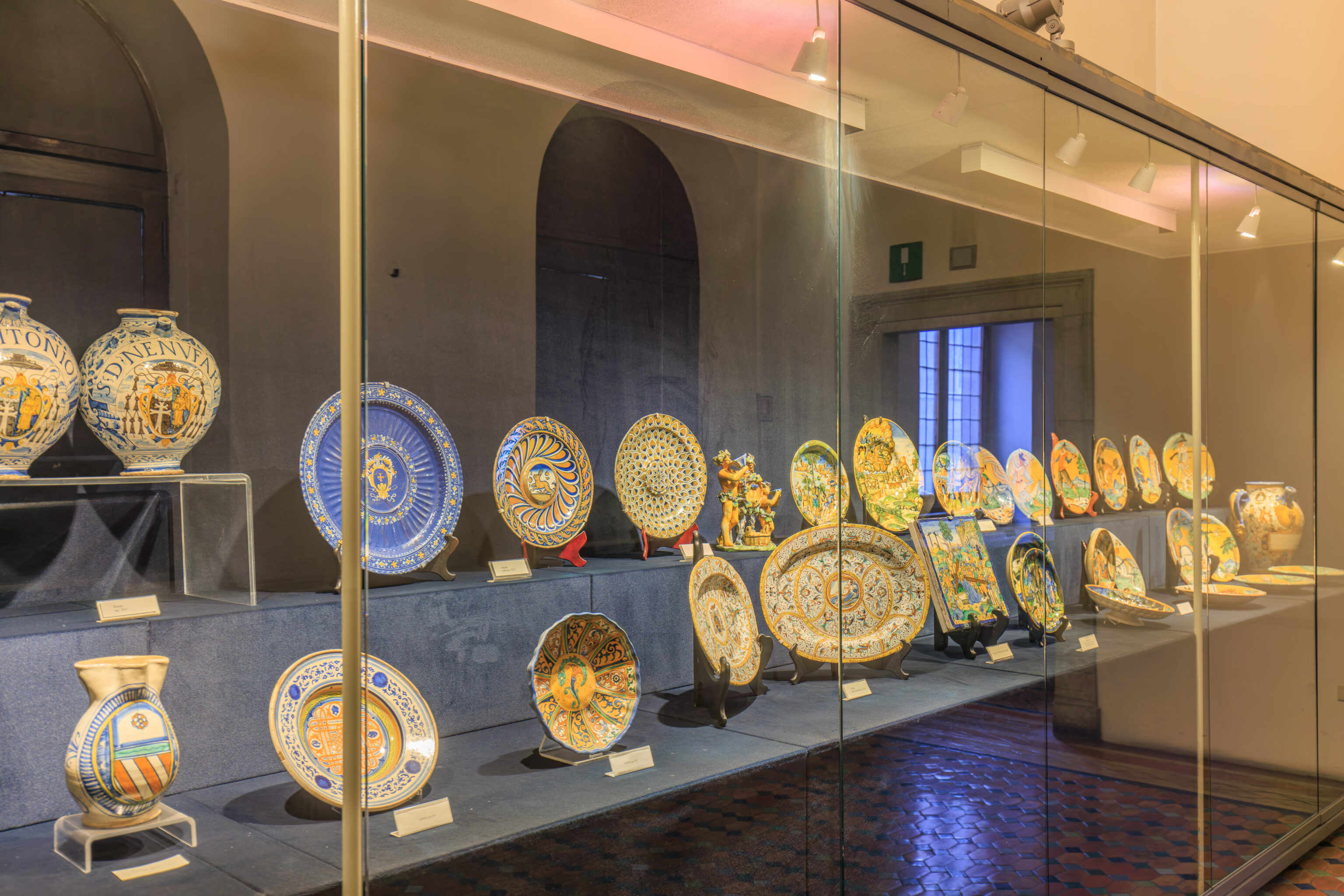
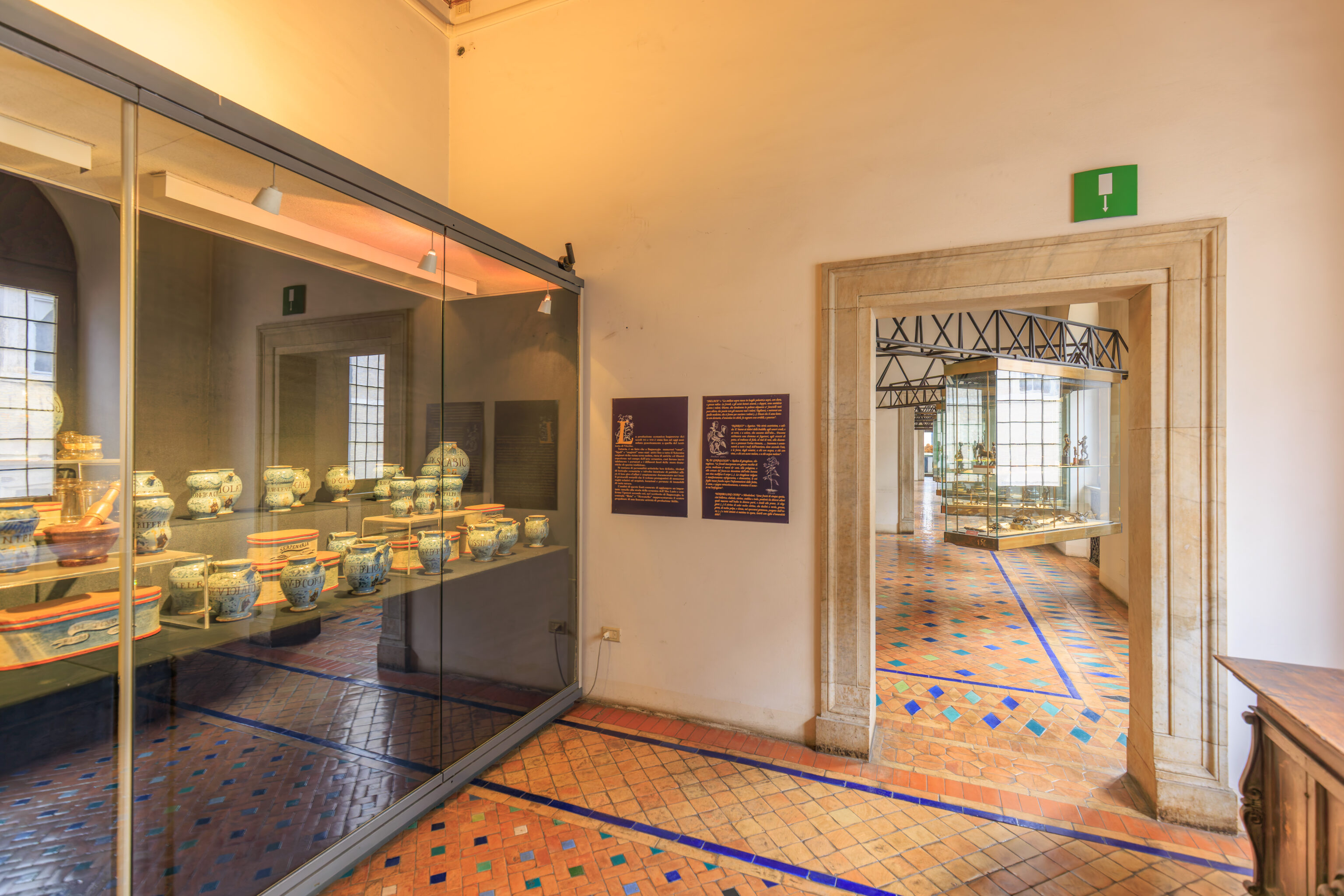
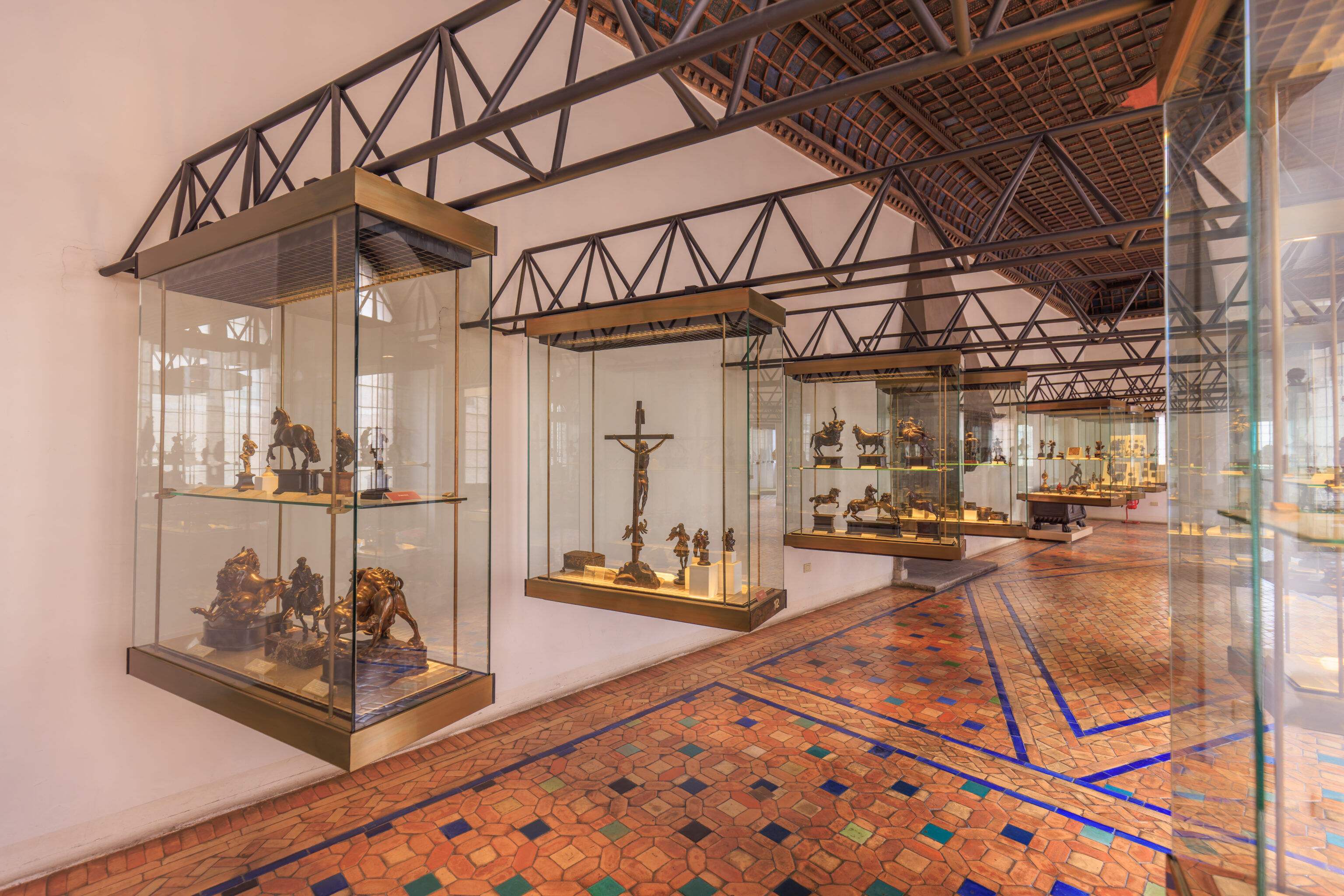
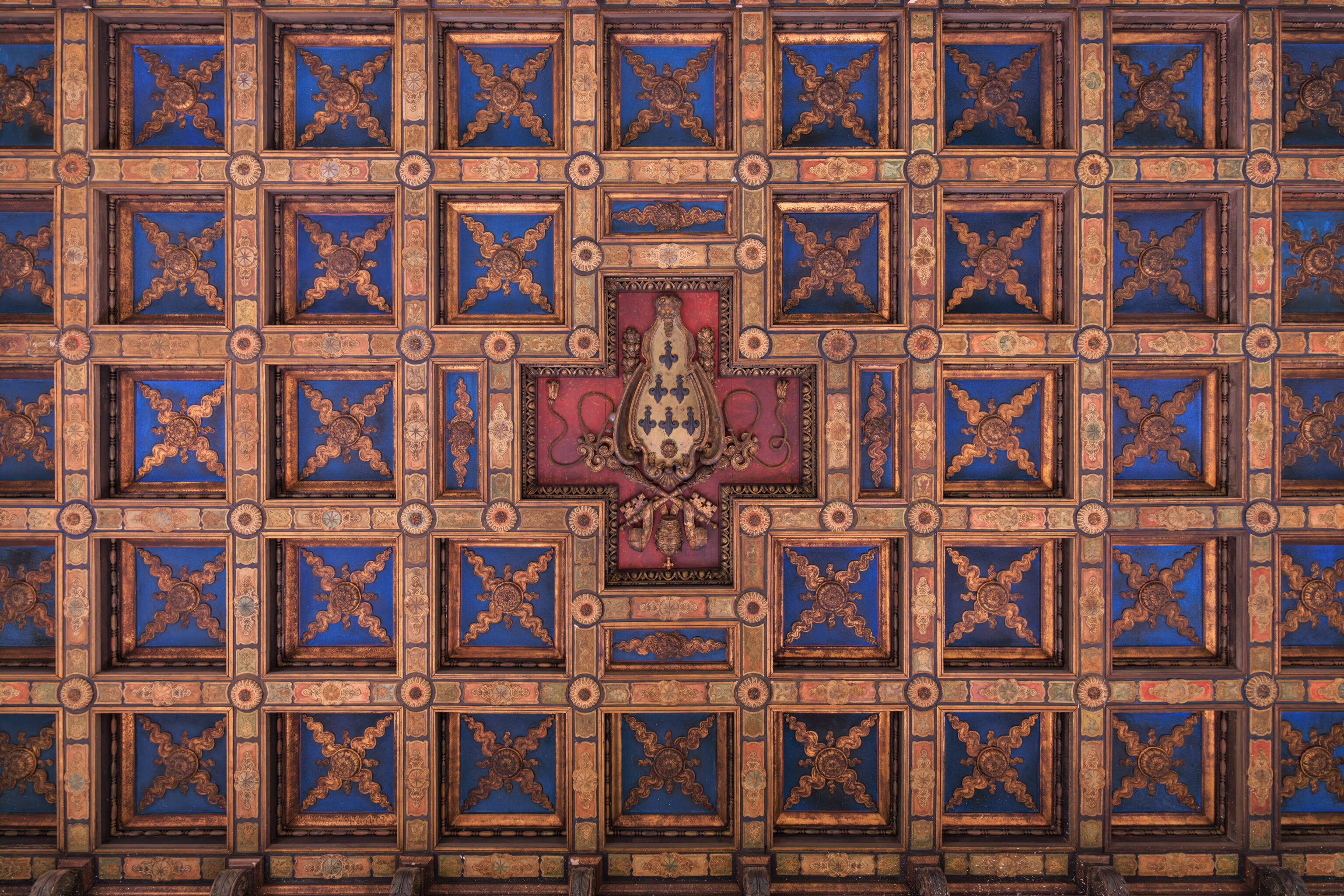
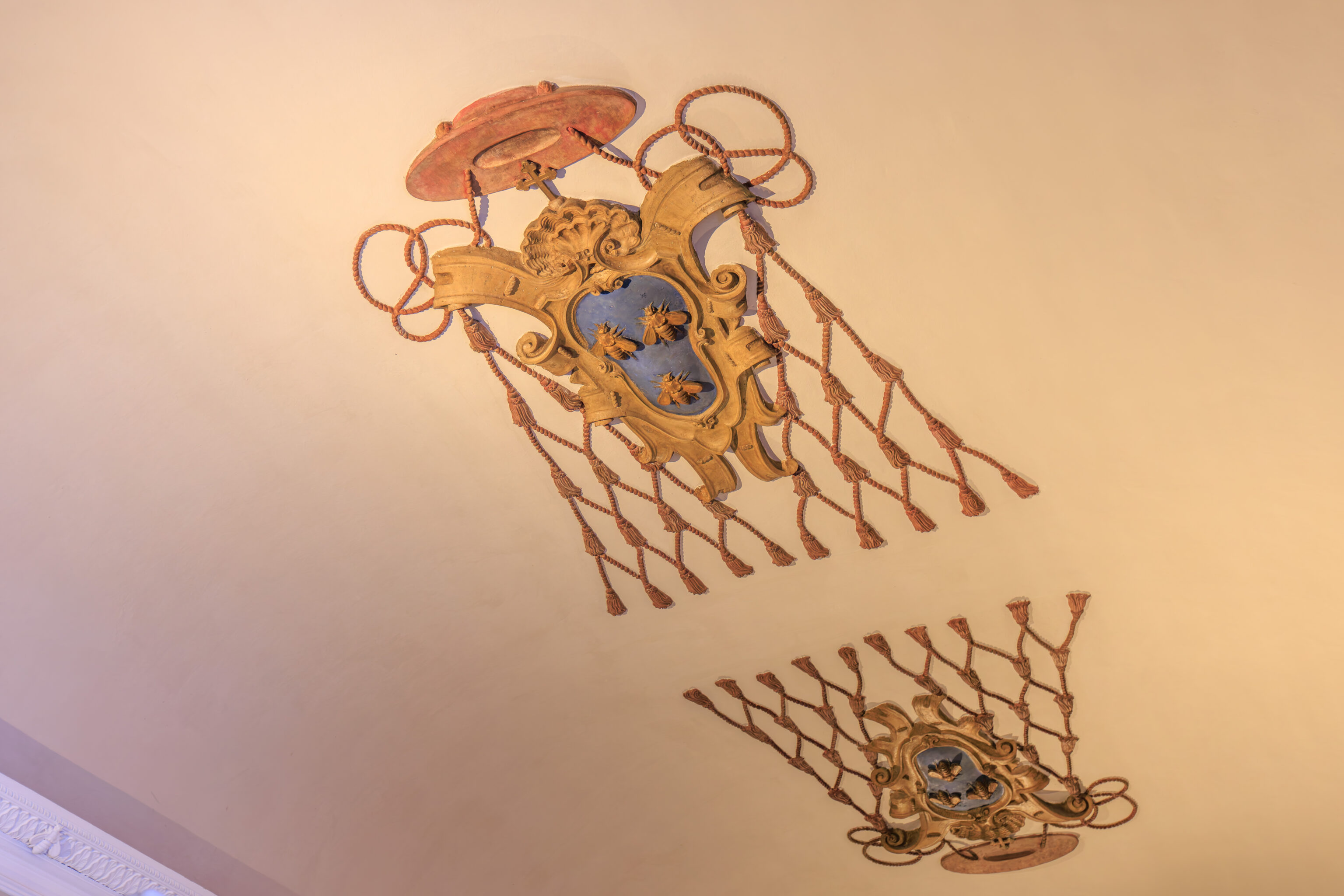
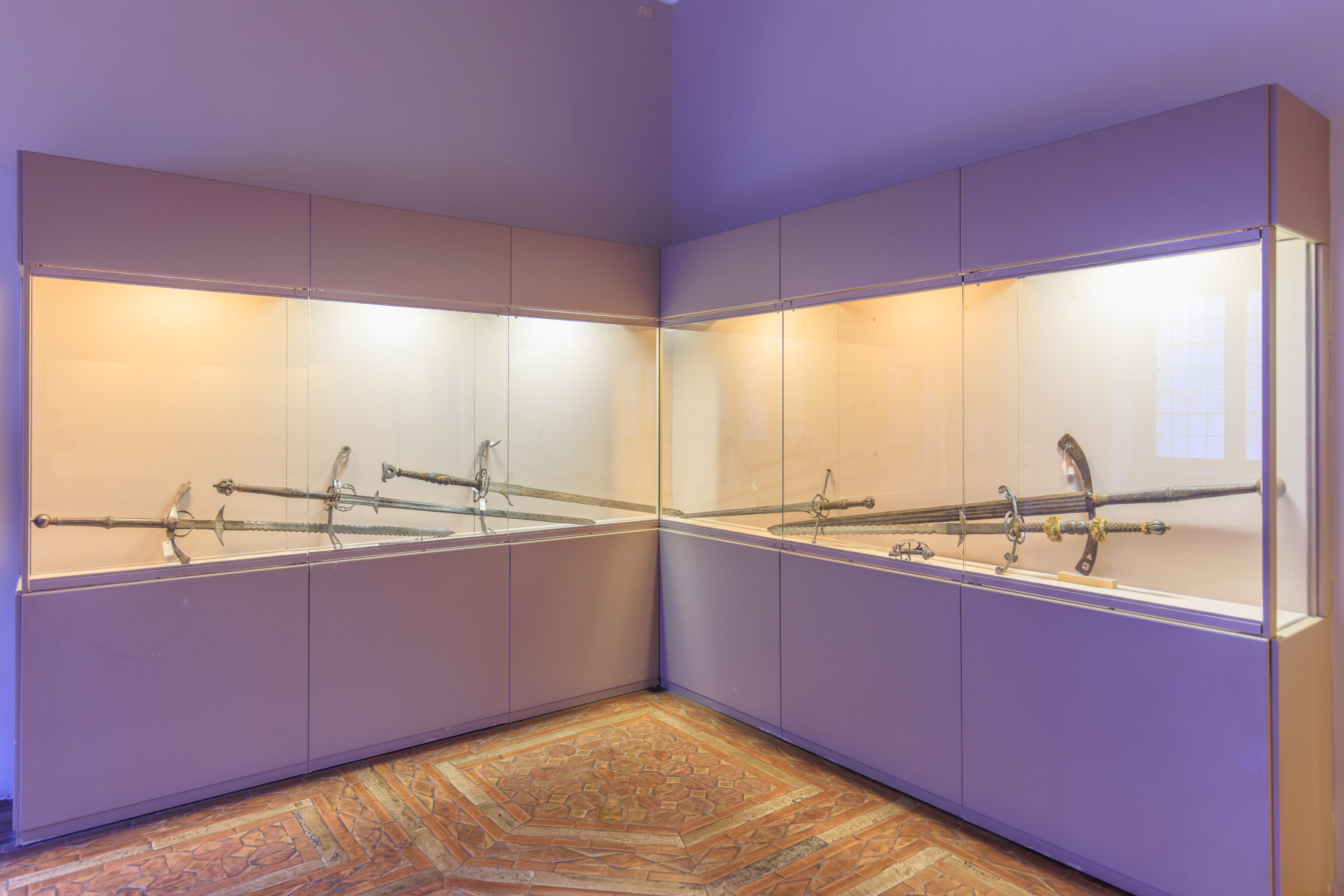
We quickly walked through the remainder of the museum.
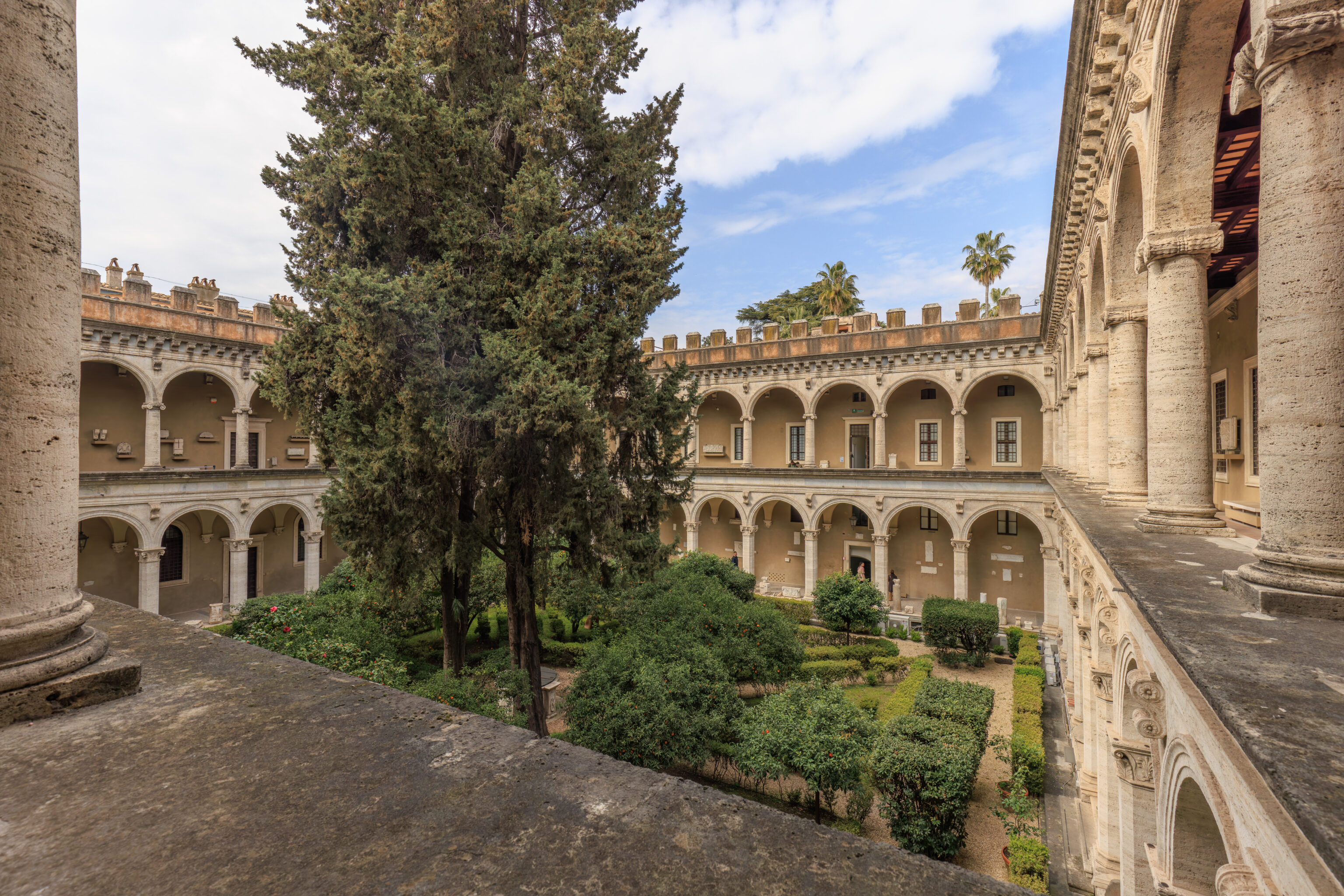
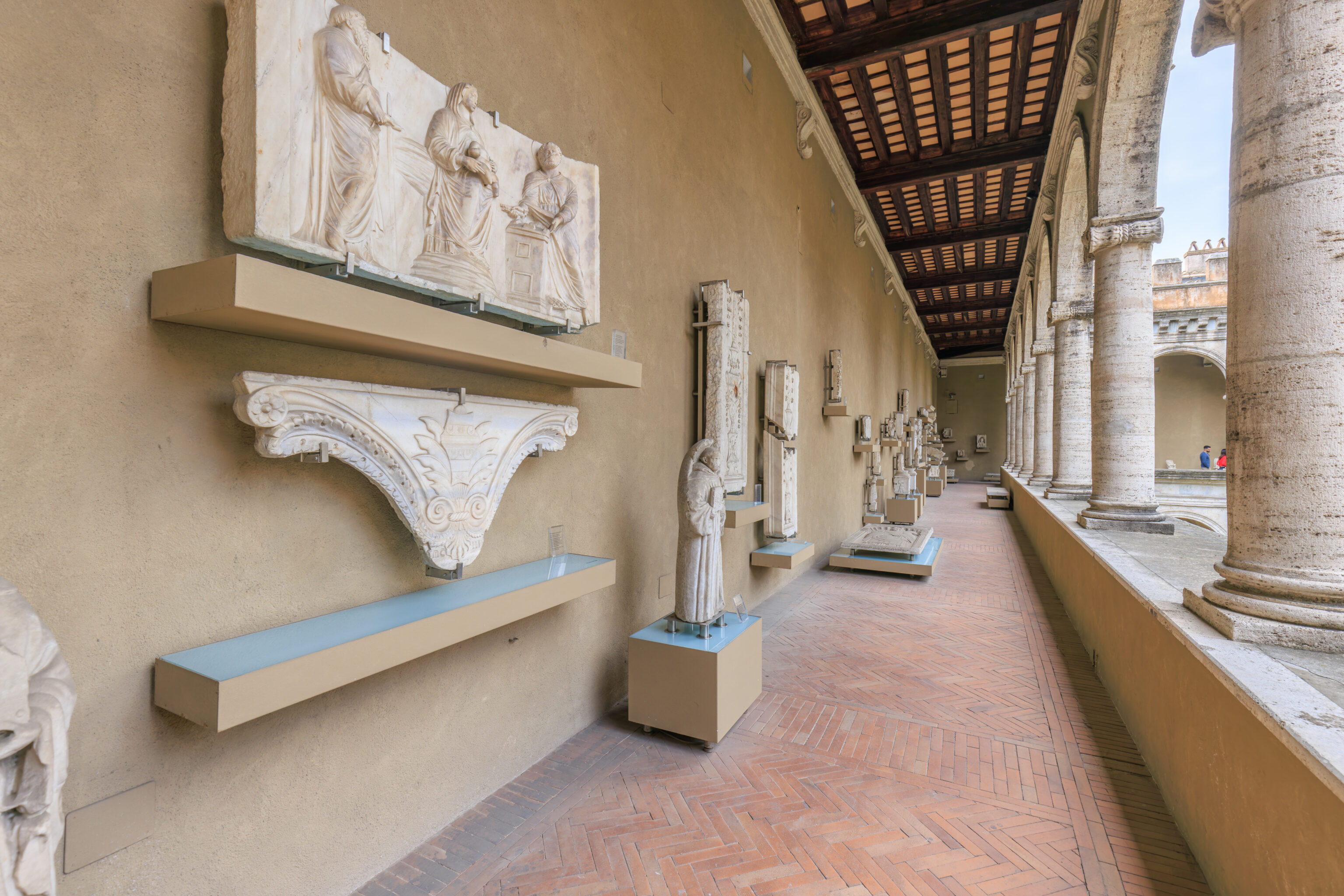
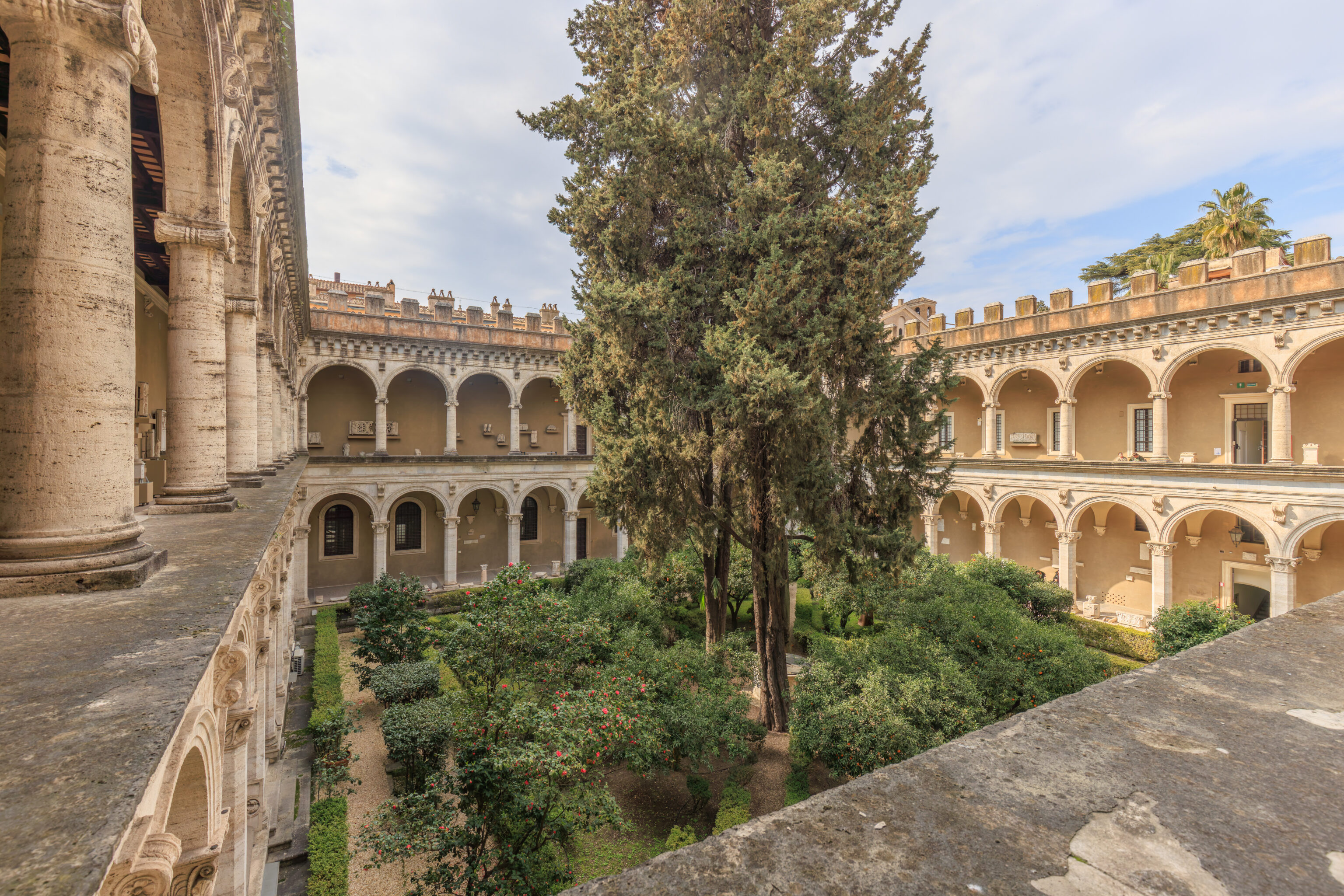
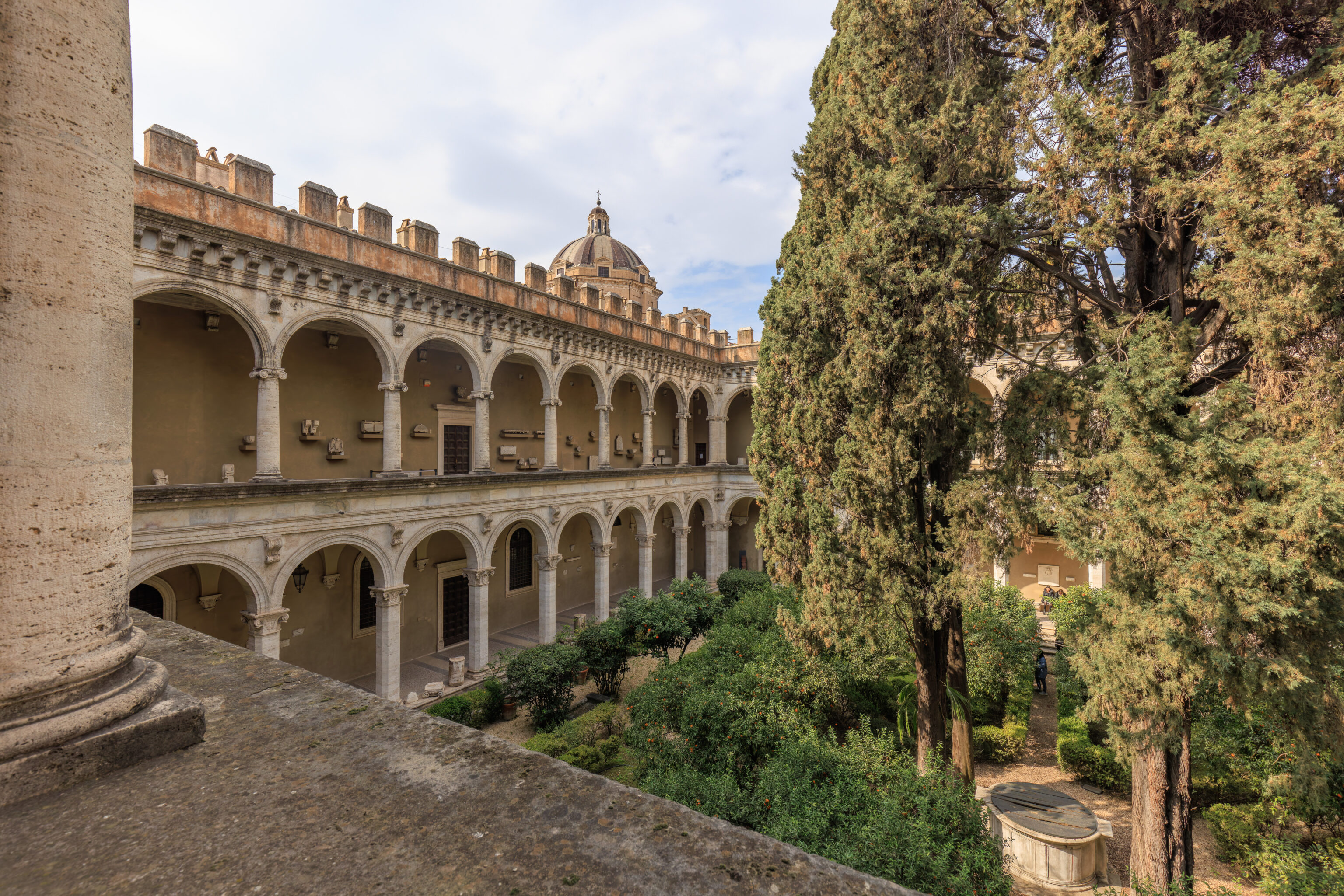
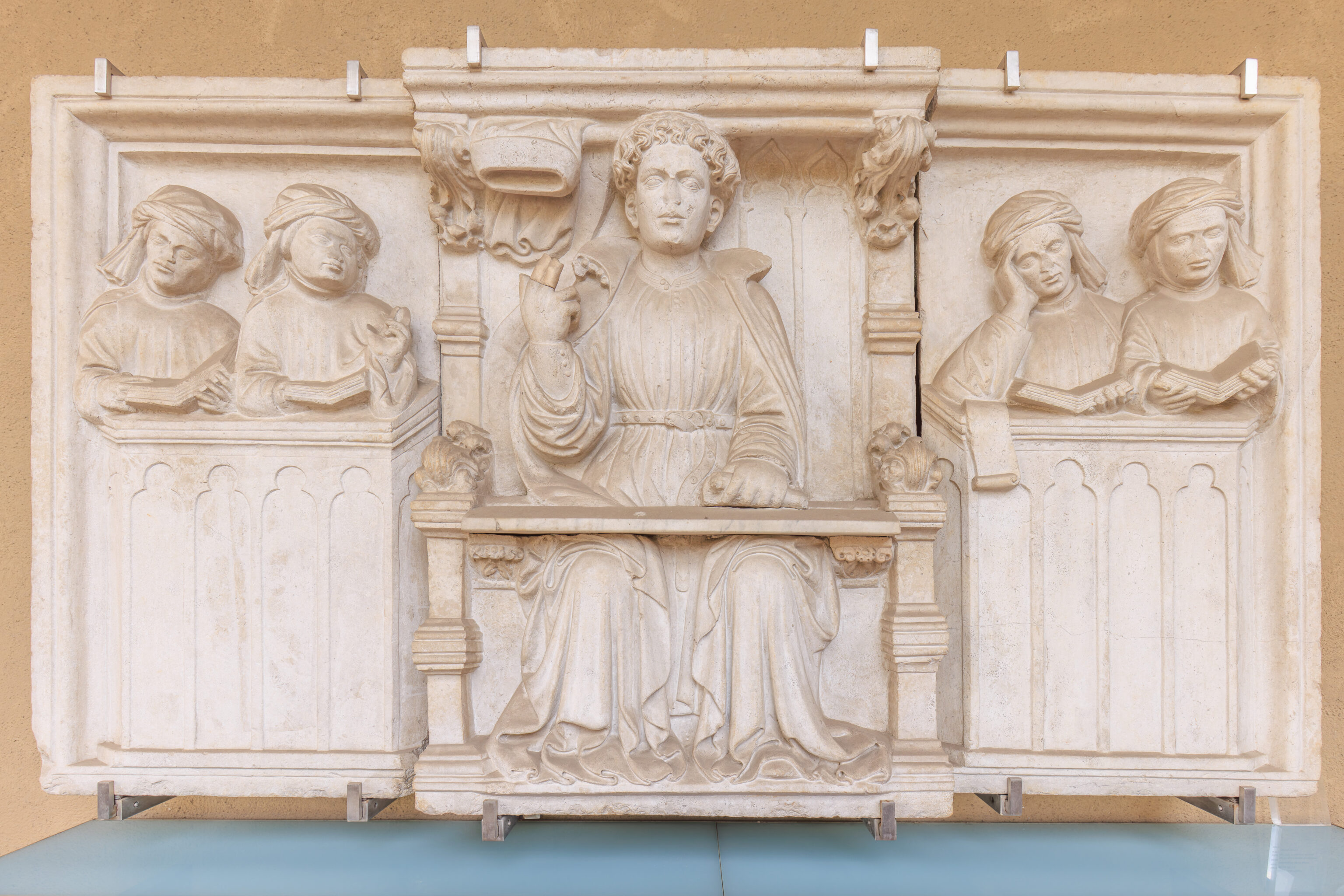
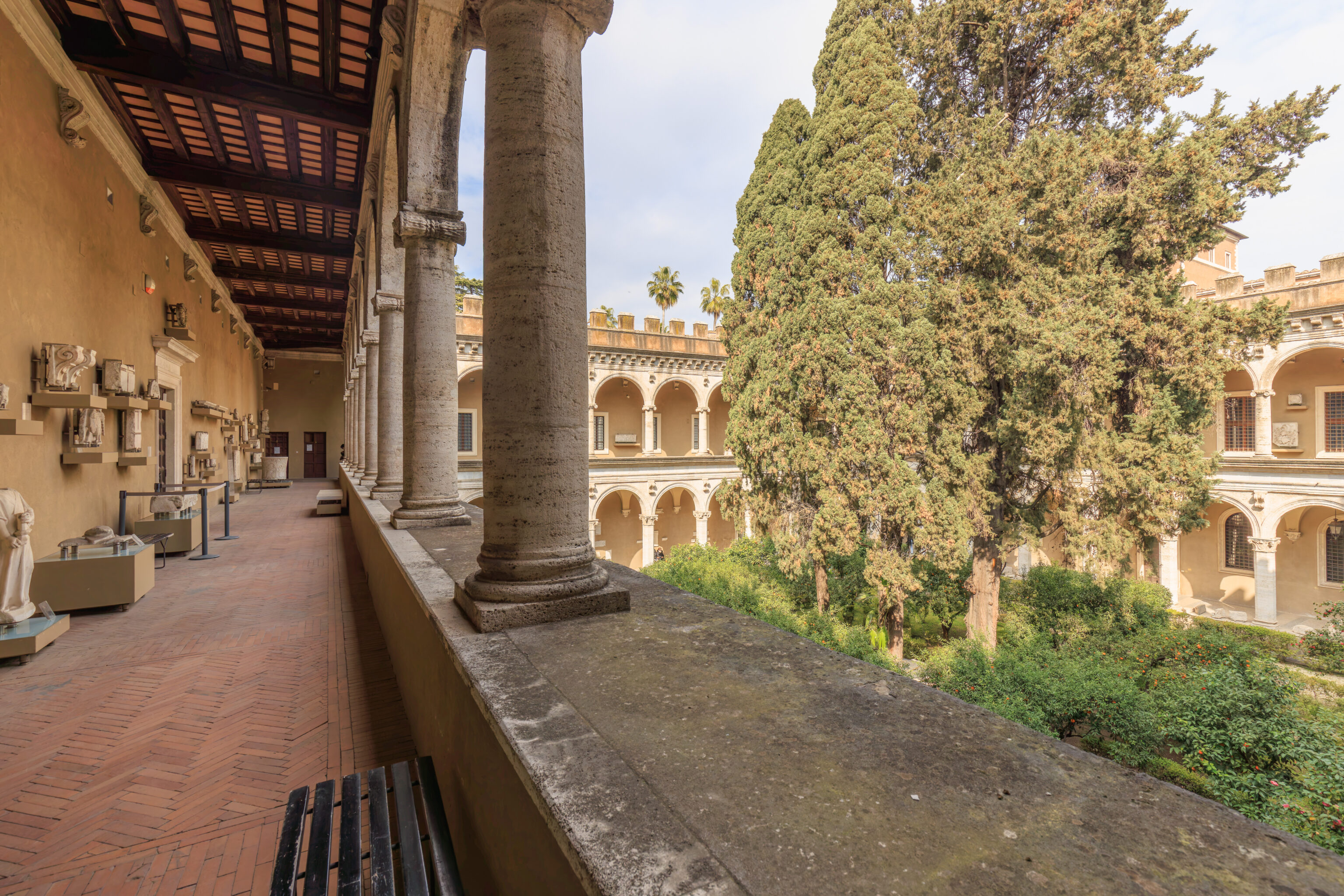
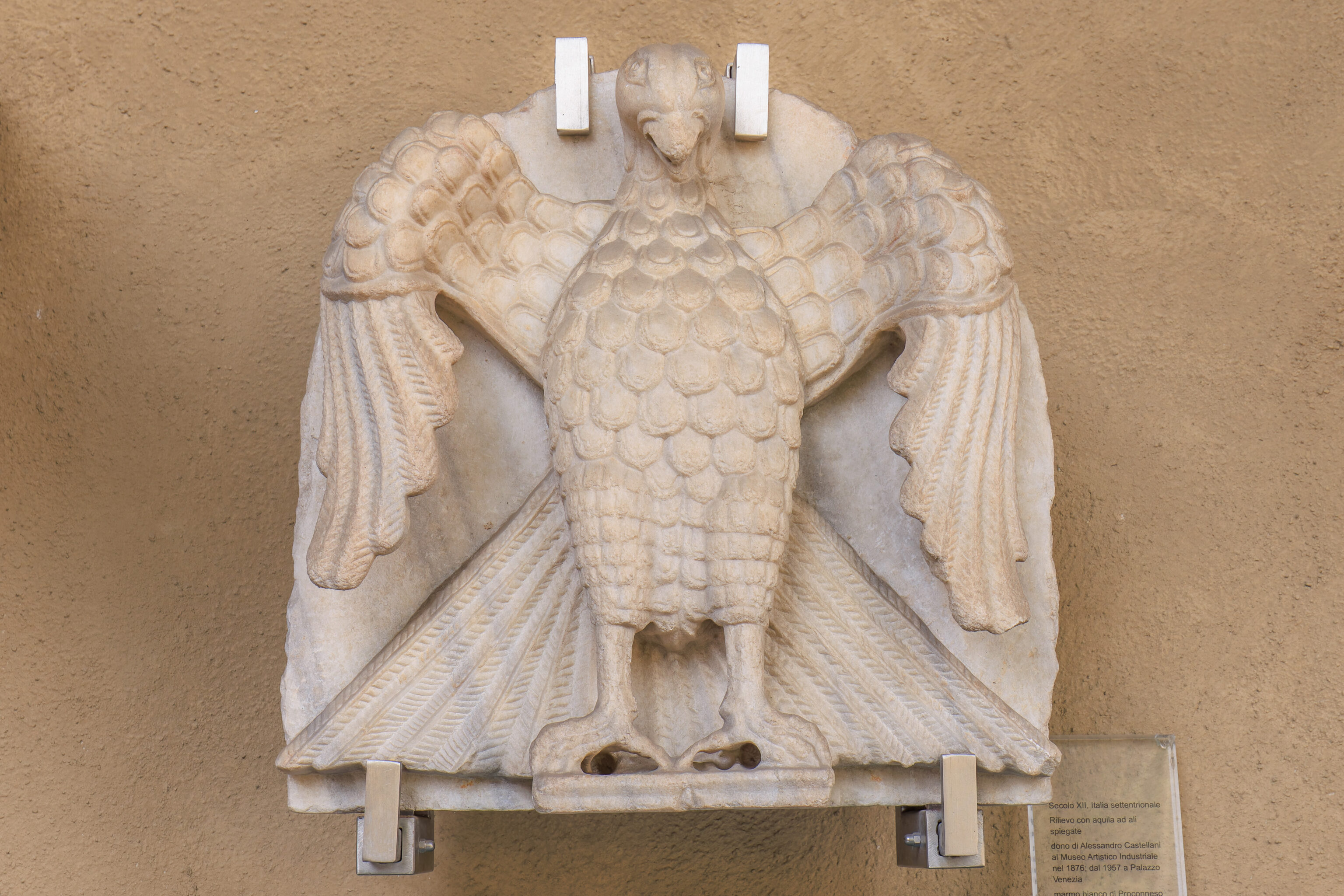
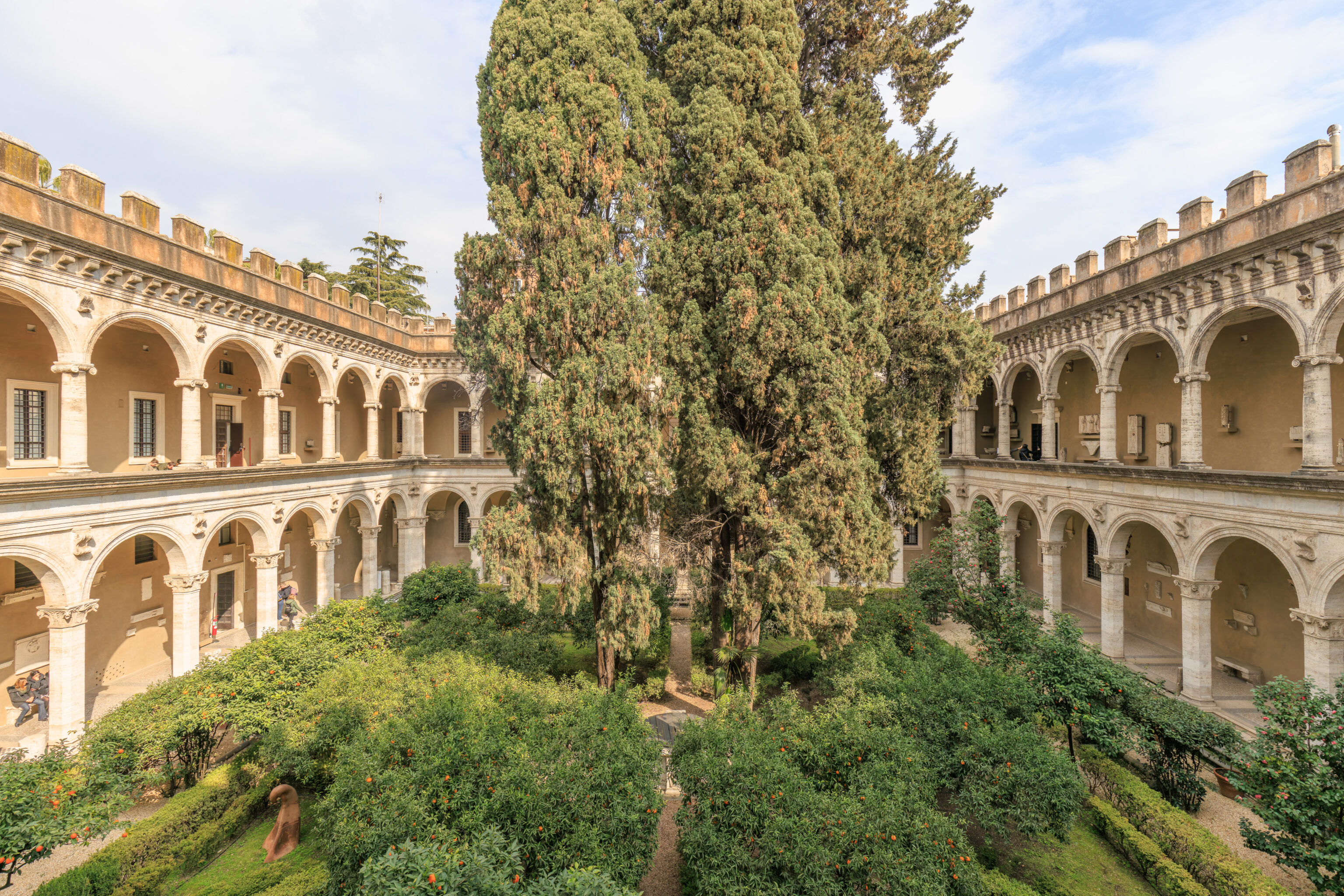
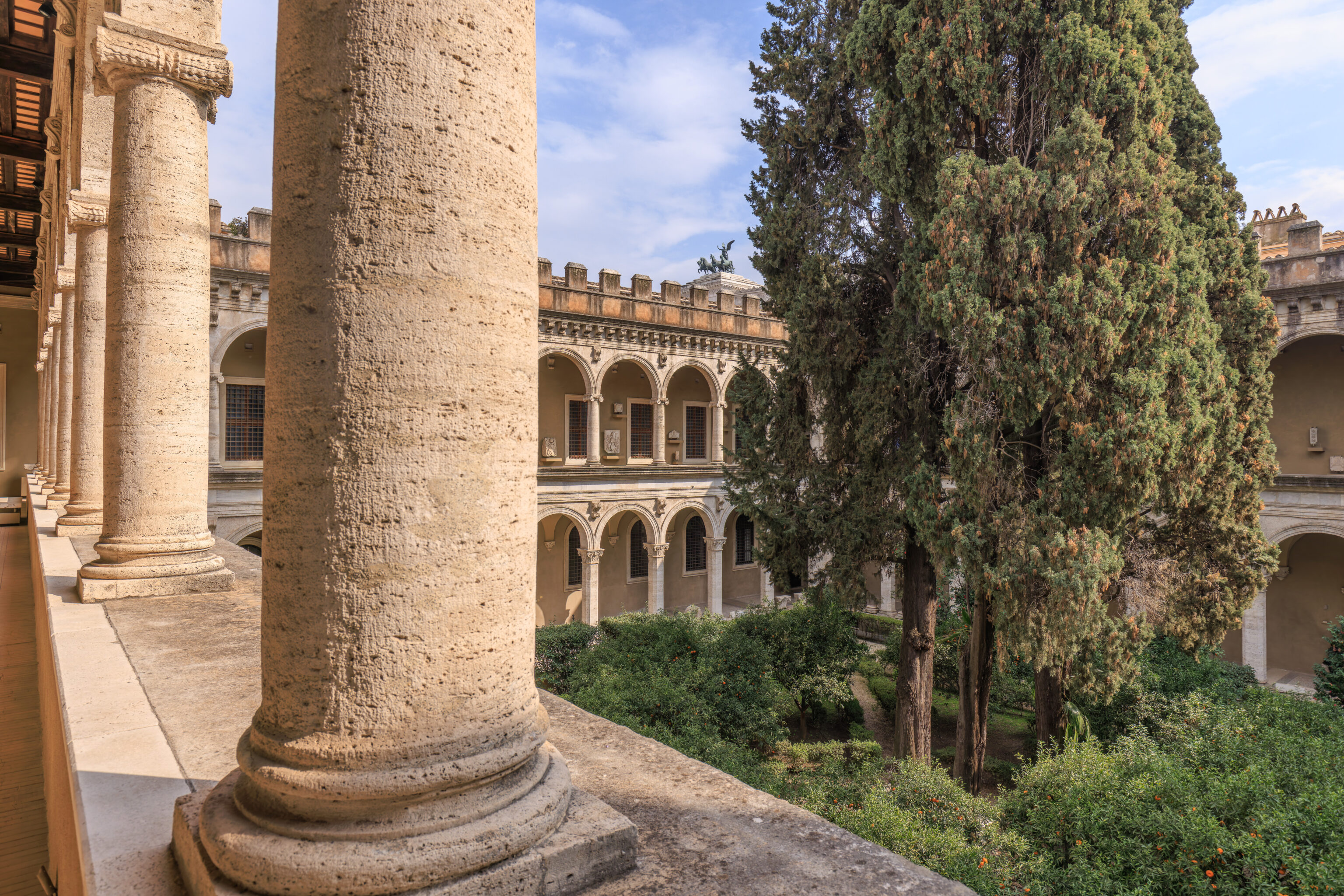
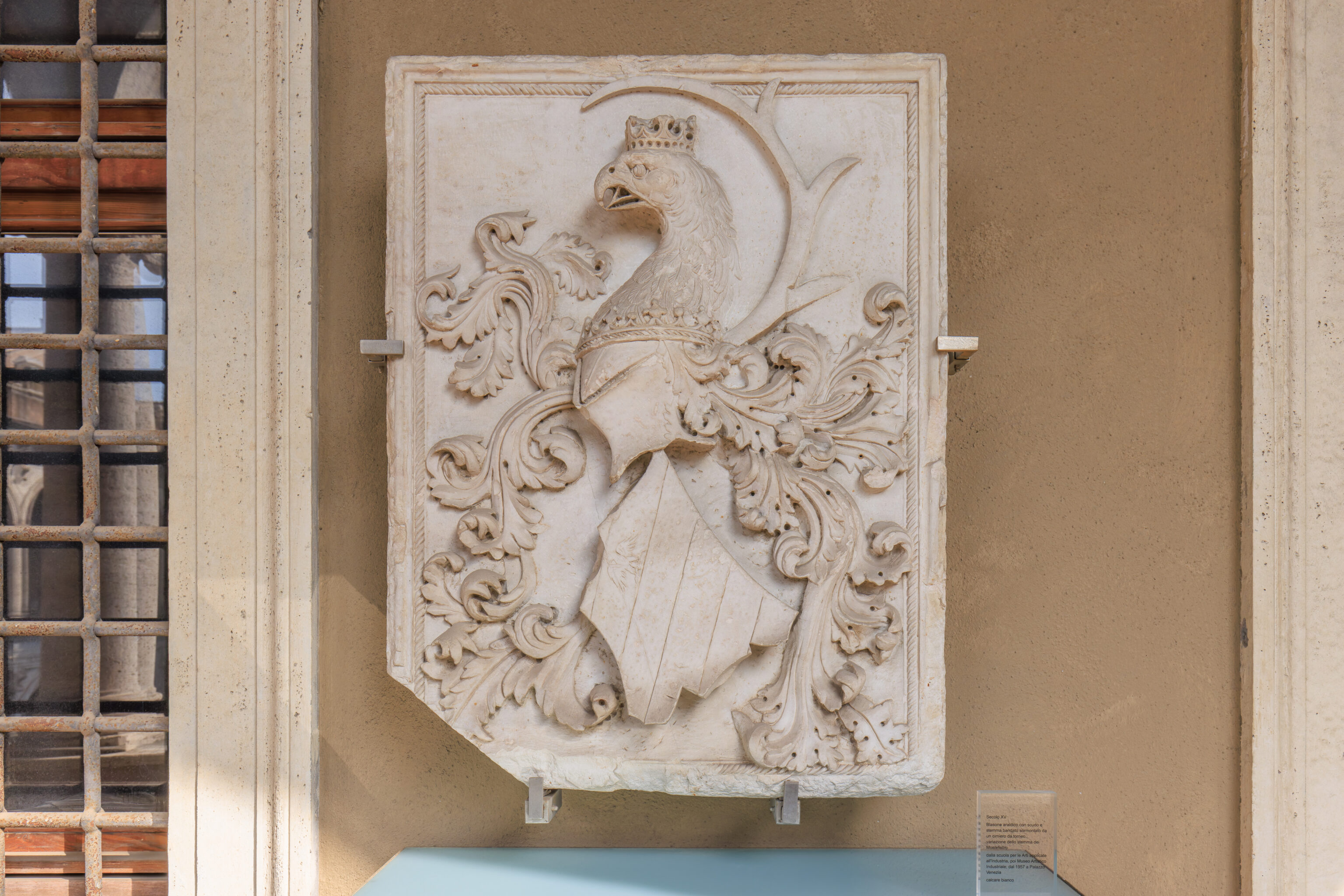
We ended up in an open area of the building overlooking a courtyard. There is likely some architectural term for this part of a building but we don’t know what it is. There were various sculptures on the walls as well as on the floor. There was also seating available.
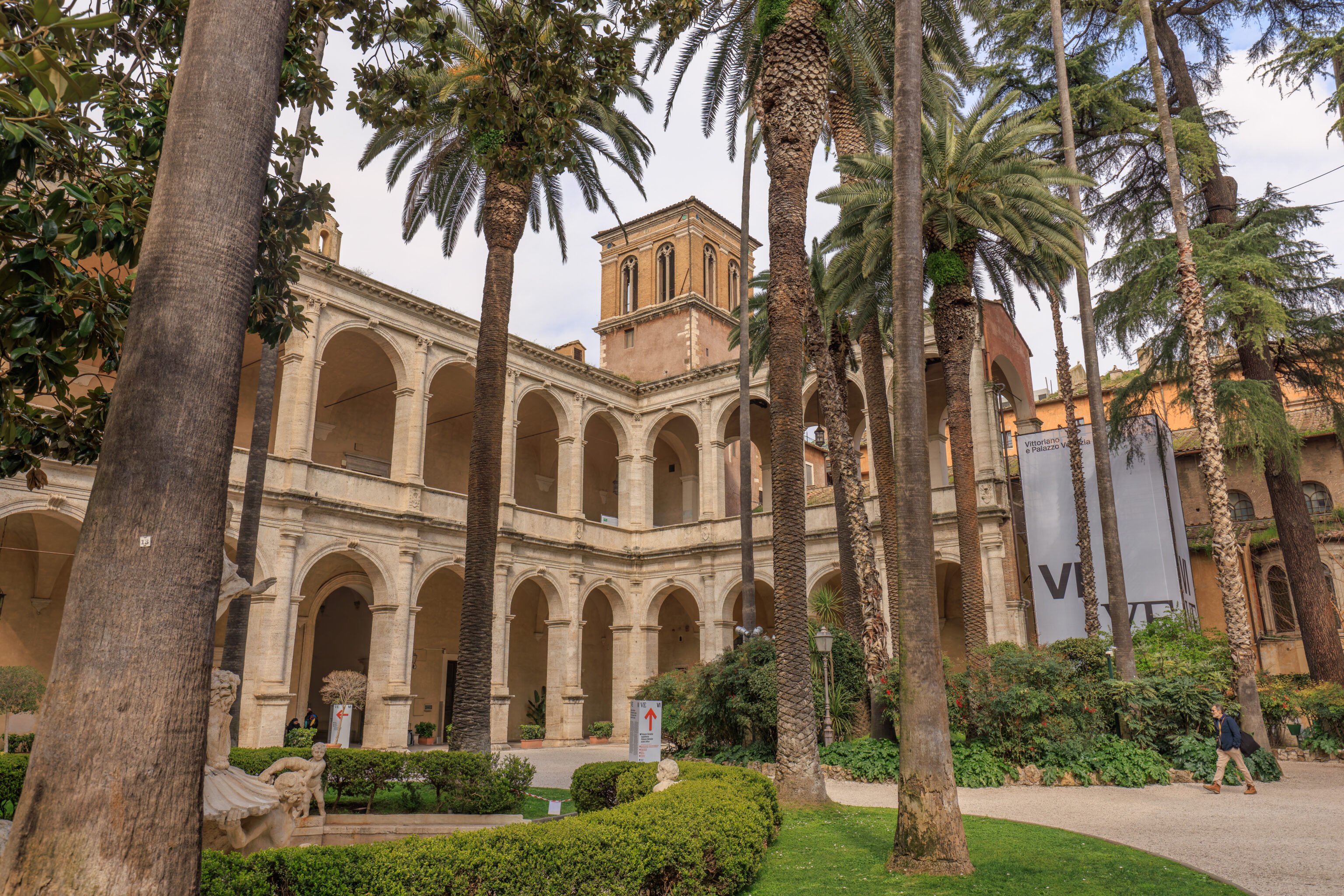
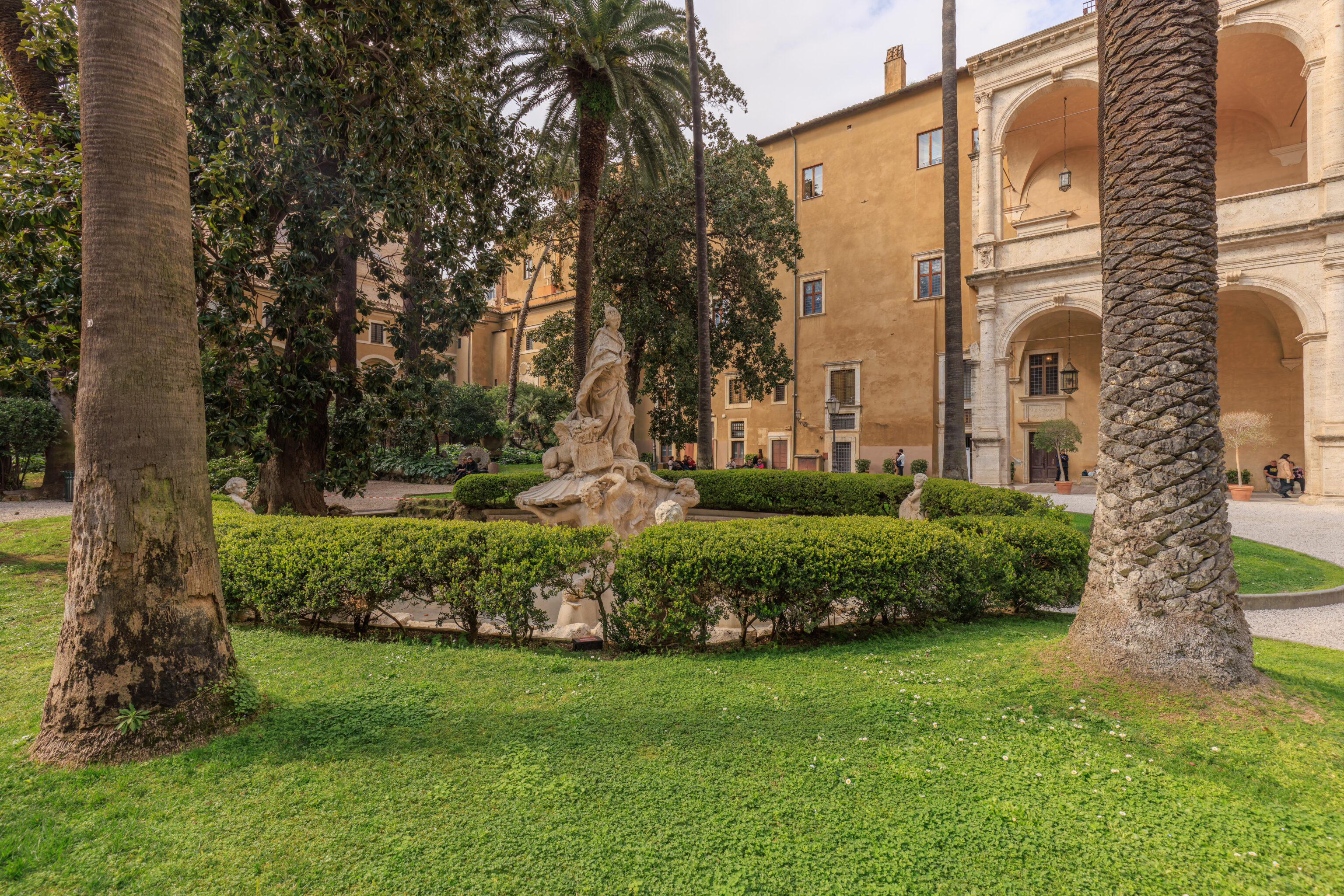
After returning to the ground floor, we exited the building and ended up in a different, much larger, courtyard. This space also had seating and could be accessed without tickets.
Lunch
We decided to have lunch nearby at Grano, near the Chiesa del Gesù (Church of Jesus) which was on the next block to the west. It was pretty busy with a queue, though it went quickly.

We decided to try the lasagna, our first in Italy.
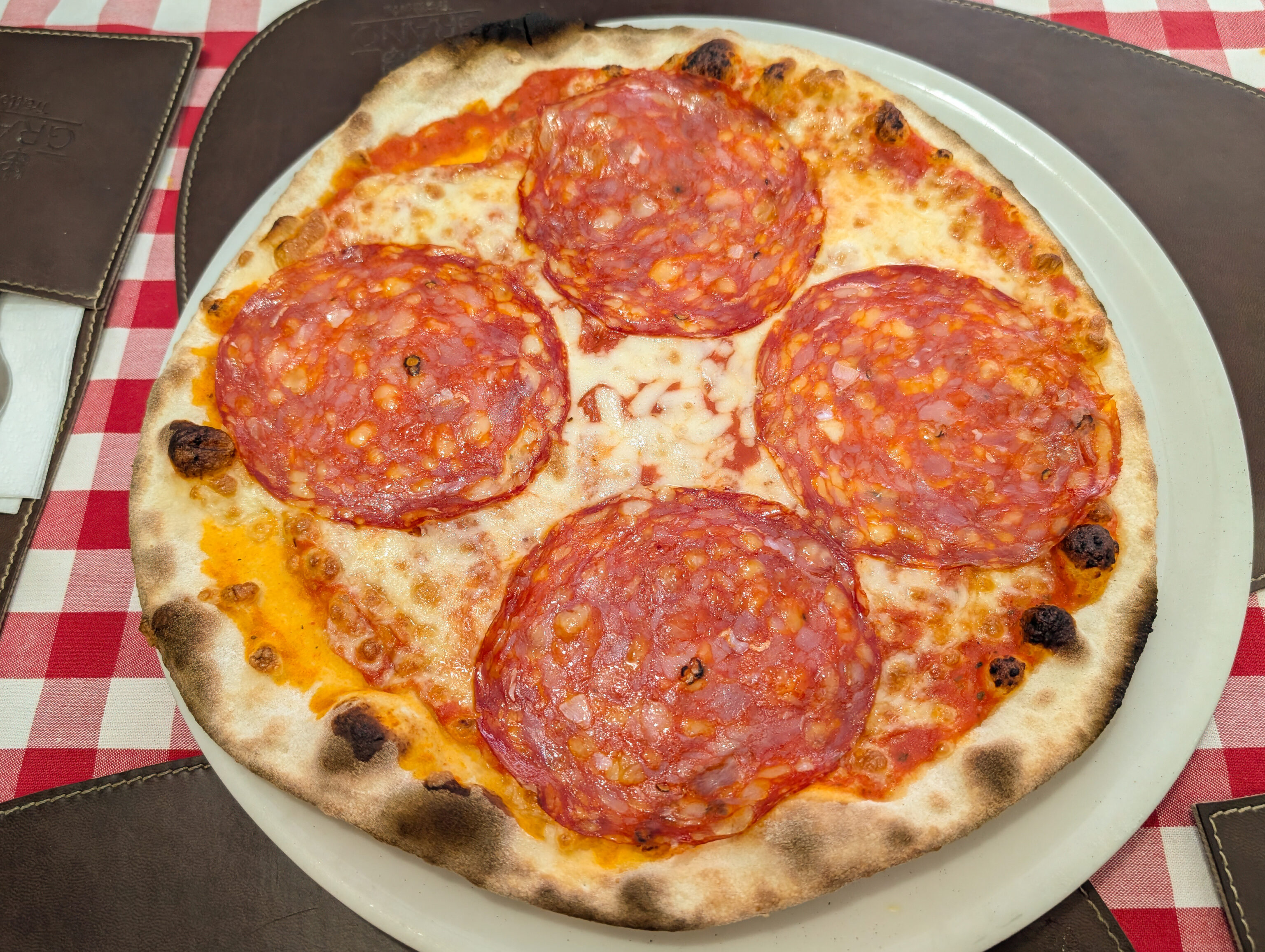
We also got the pizza diavolo. It was the very thin Roman style. The salami on the pizza was lighter flavored than we expected, probably due to how thin the large slices of salami were. It wasn’t anything like pepperoni, which is an American creation.
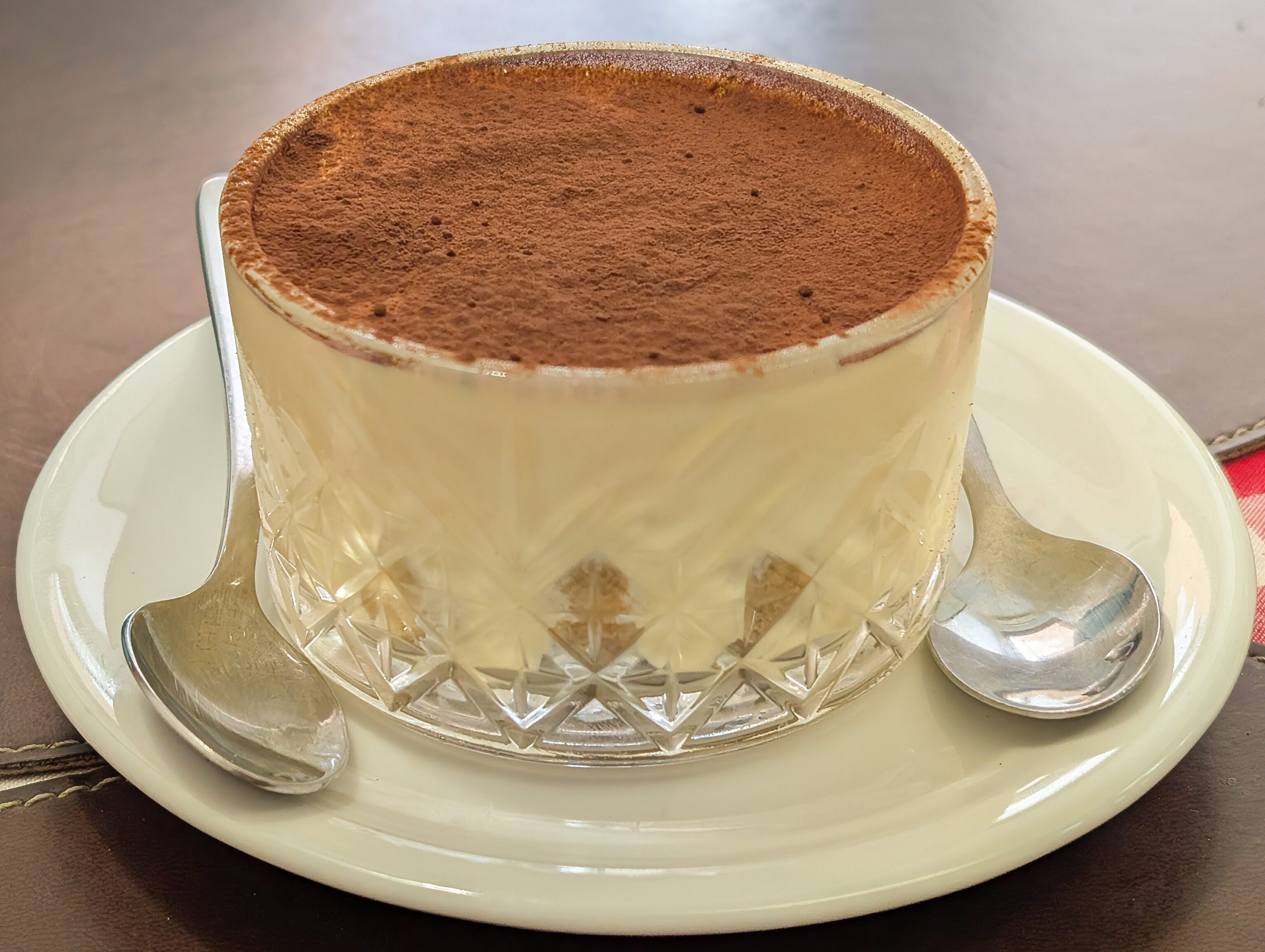
We also got a tiramisu for dessert, which like our two main dishes was also very good.
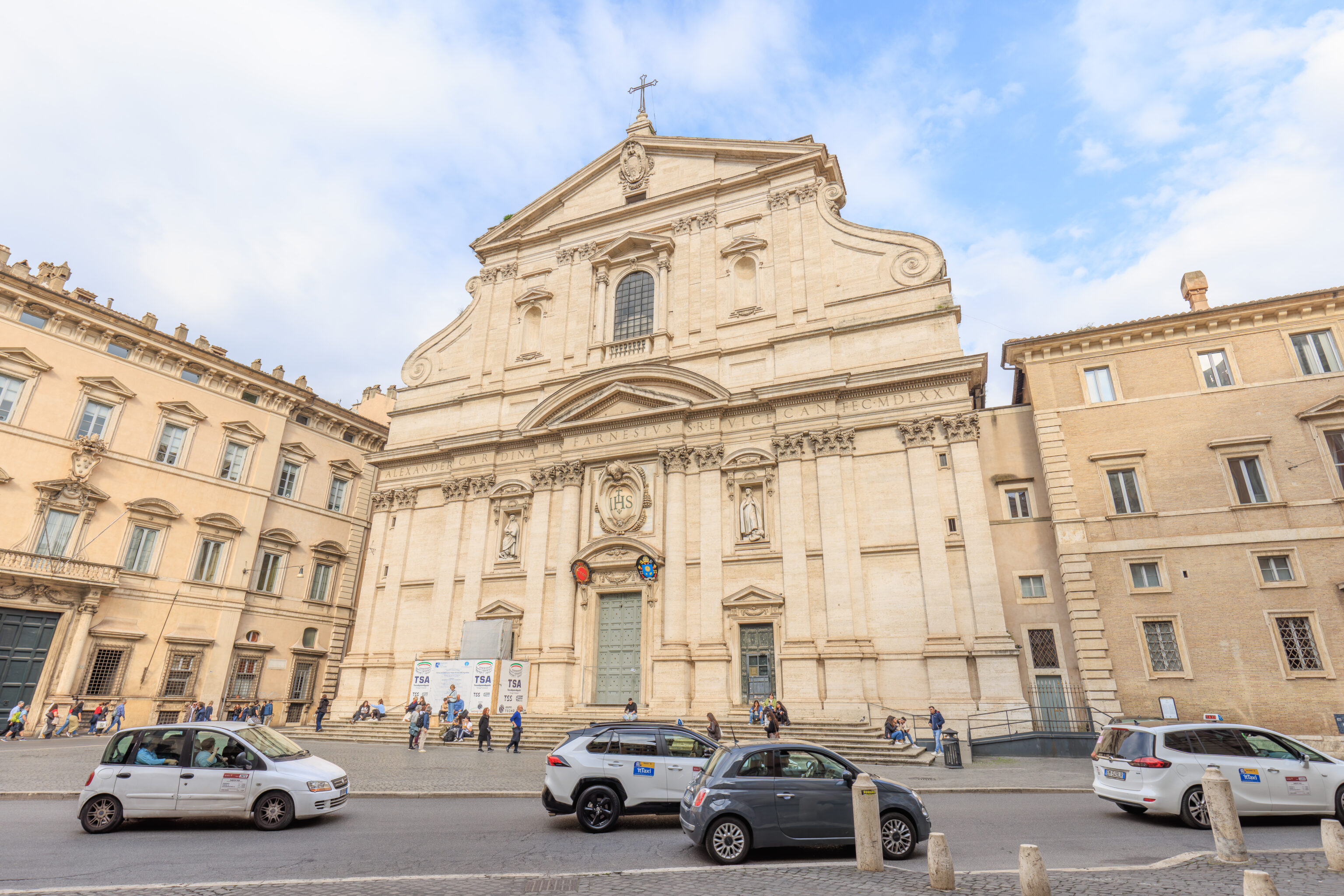
The Chiesa del Gesù, as seen from the front near the restaurant after we finished lunch.
Basilica di San Giovanni in Laterano
We decided to head over to the Basilica di San Giovanni in Laterano (The Basilica of St. John in Laterano). This church is a bit further away to the southeast past the Colosseum so we decided to take a bus over.
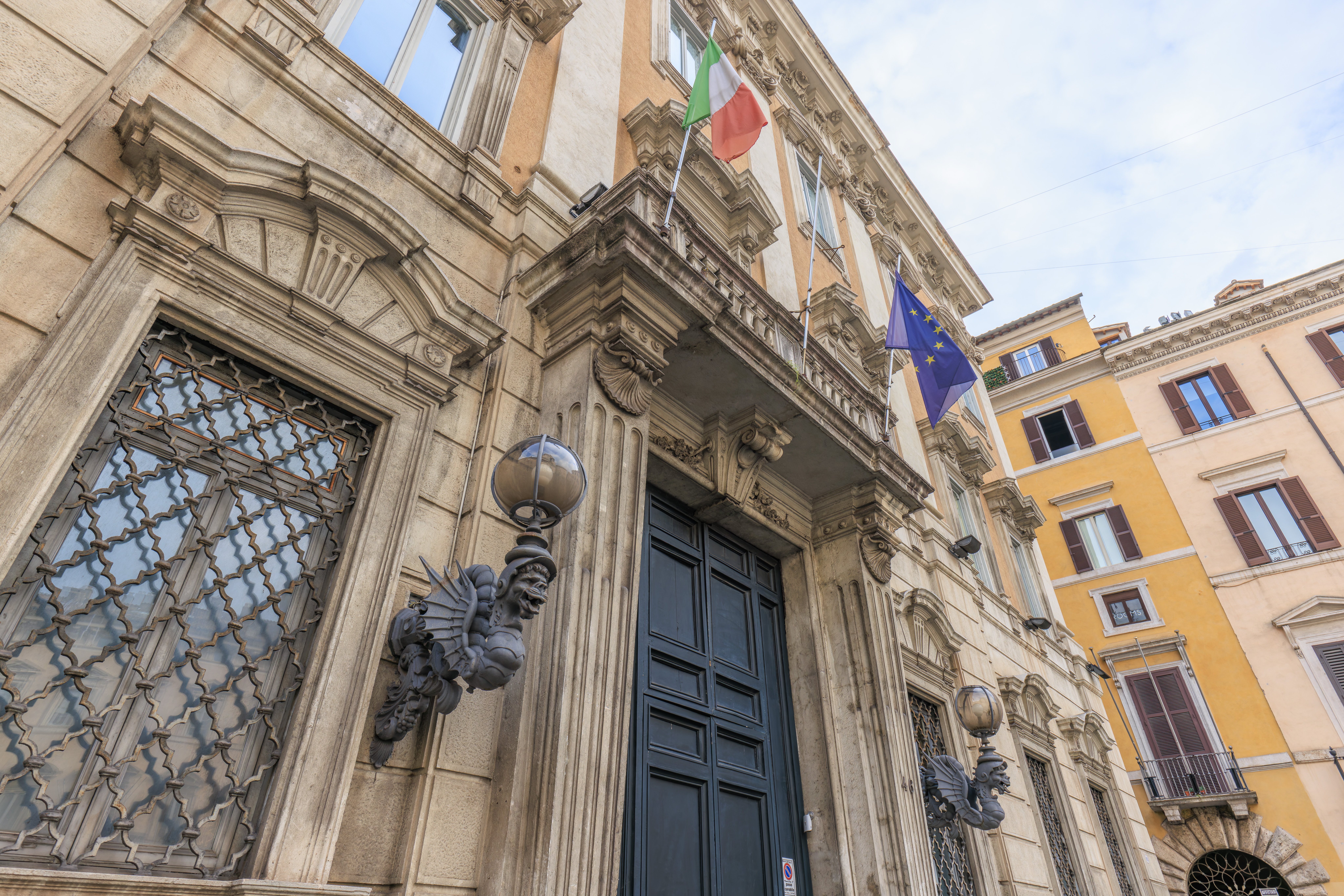
We noticed these lamps on a building by the Chiesa del Gesù.
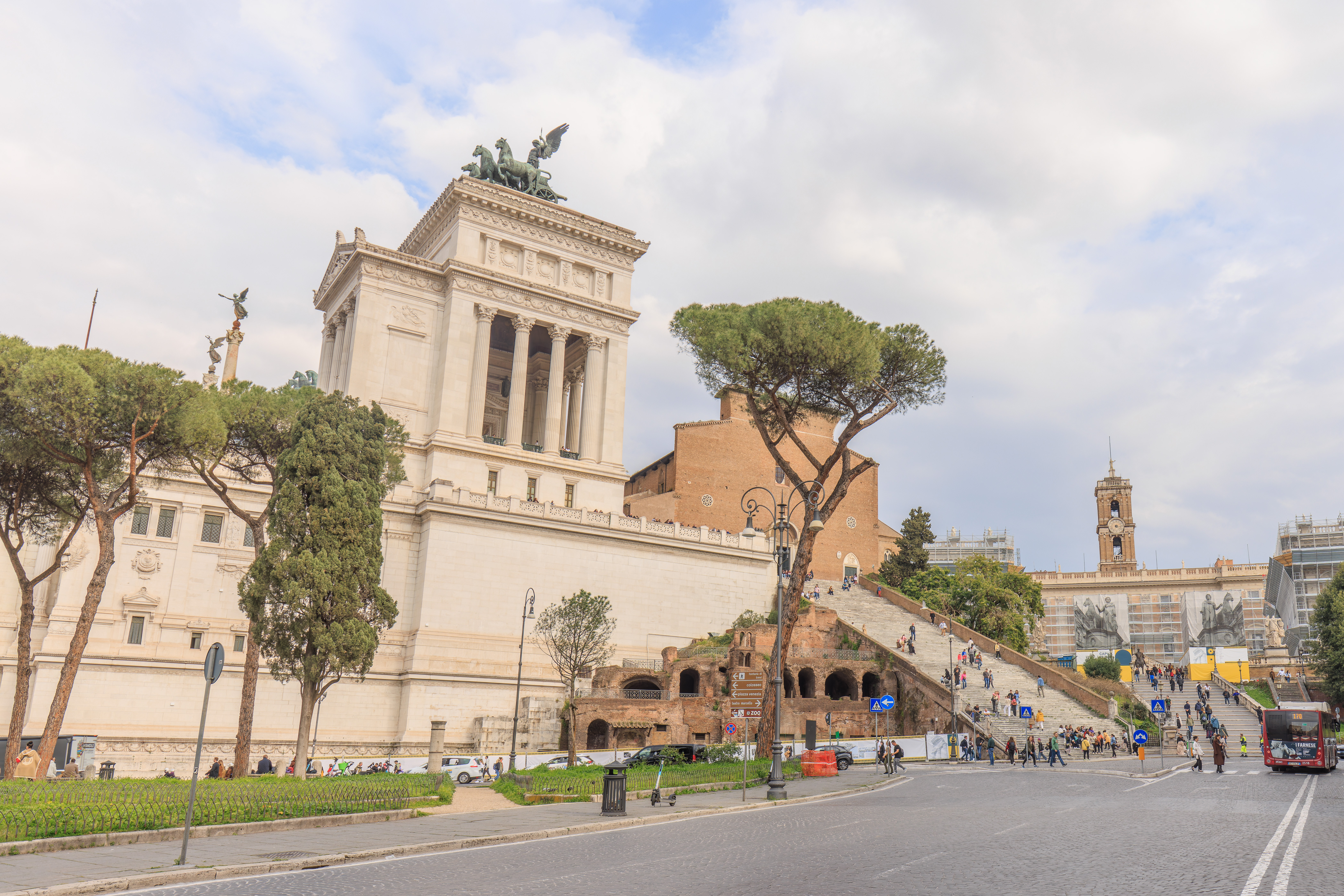
We walked to the Ara Coeli/Piazza Venezia bus stop, on the west side of the Monumento a Vittorio Emanuele II. There are a number of bus routes that connect these two locations.
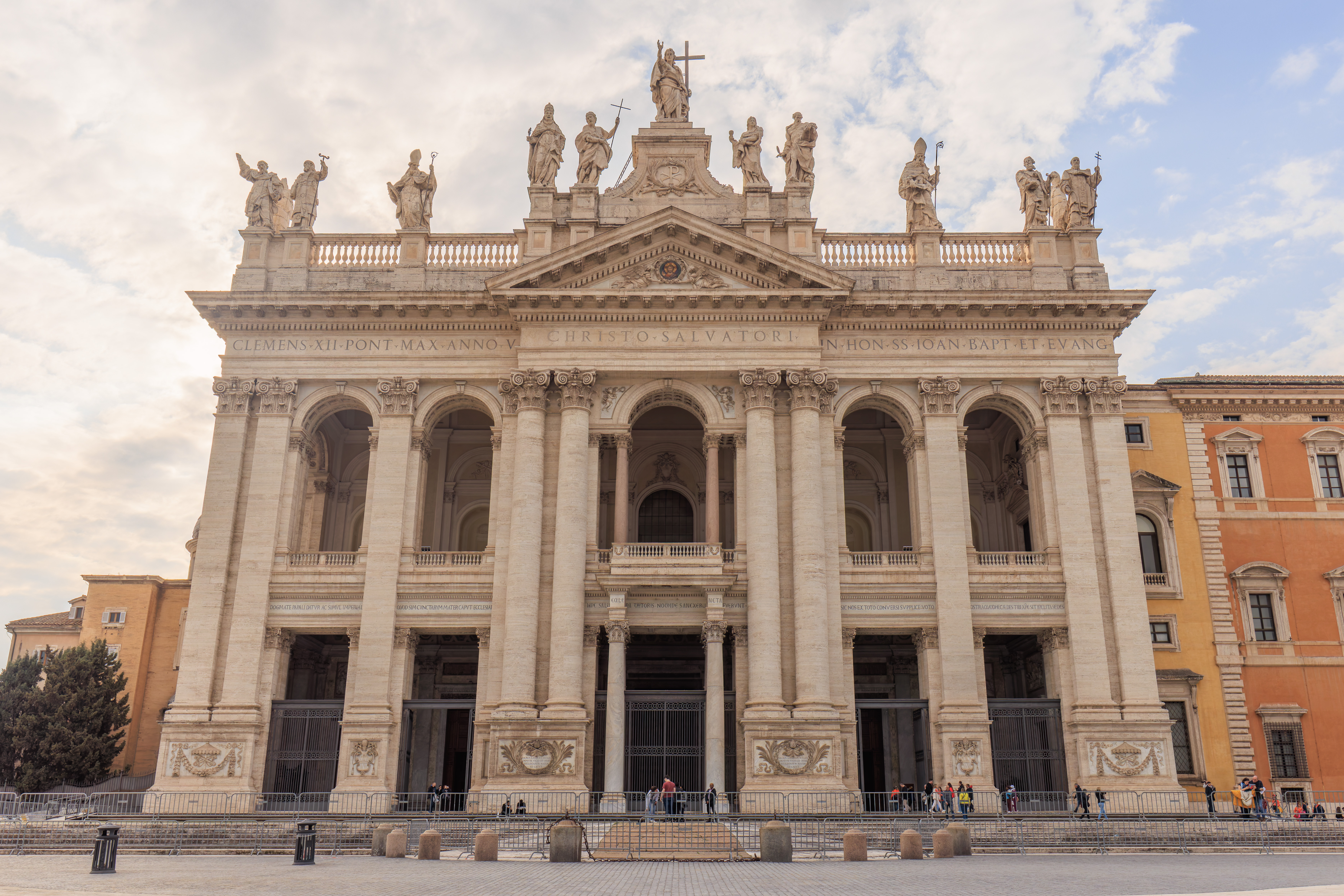
It took us about 30 minutes, including waiting time, to get to the basilica. This basilica is technically an archbasilica as it’s bishop, the Bishop of Rome, is the Pope.
Although this basilica is within Rome, it is considered to be Vatican territory, much like an embassy. There is a security checkpoint to enter though identification is not required.
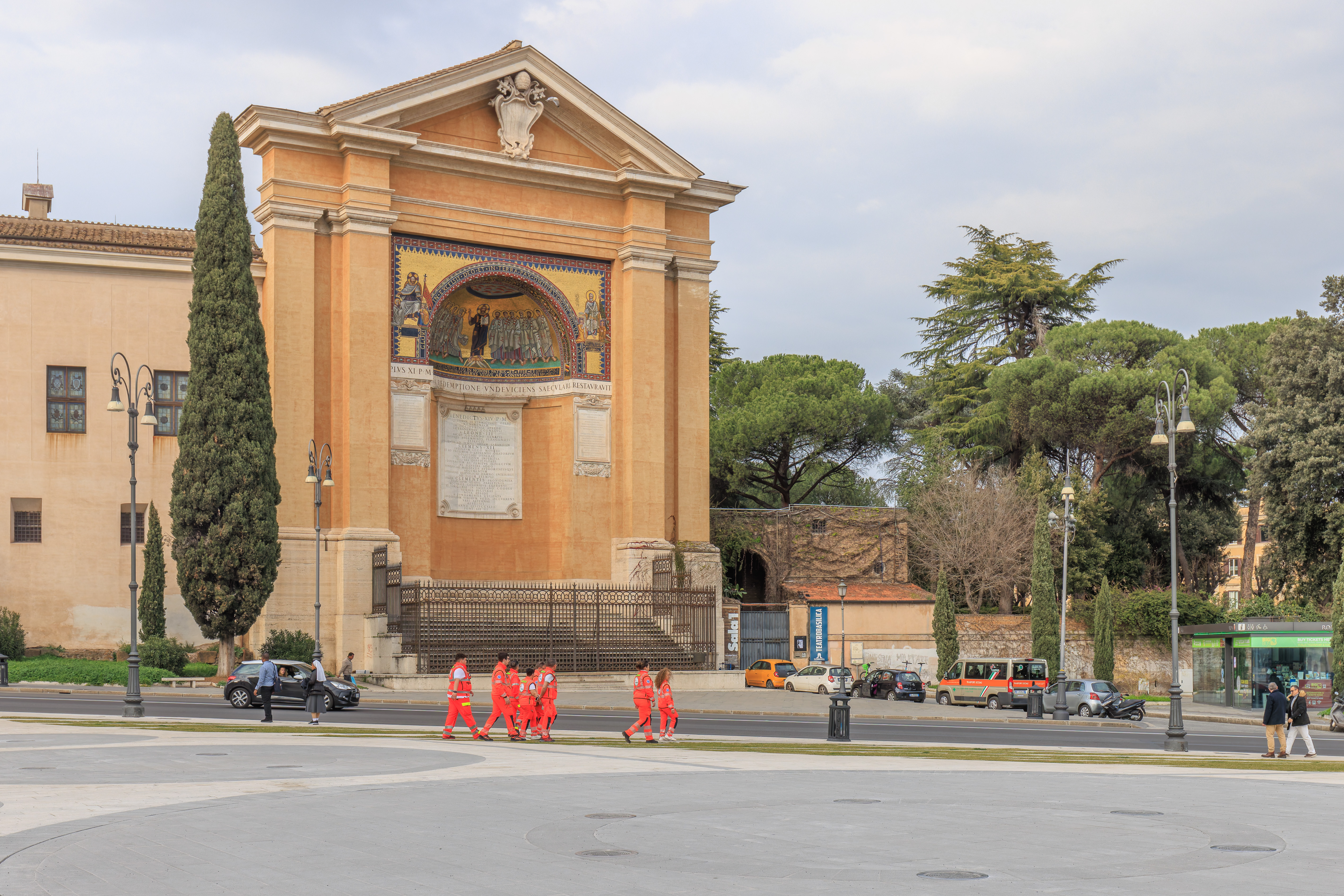
This structure across the street to the north is a reconstruction of part of the Triclinium Leoninum, a part of the original Palazzo Laterano. This palazzo originally stood here but was demolished.
One thing we noticed in Rome was various small groups of people walking around in uniform. Here, it the eight people in red outfits appear to be EMTs or something similar.

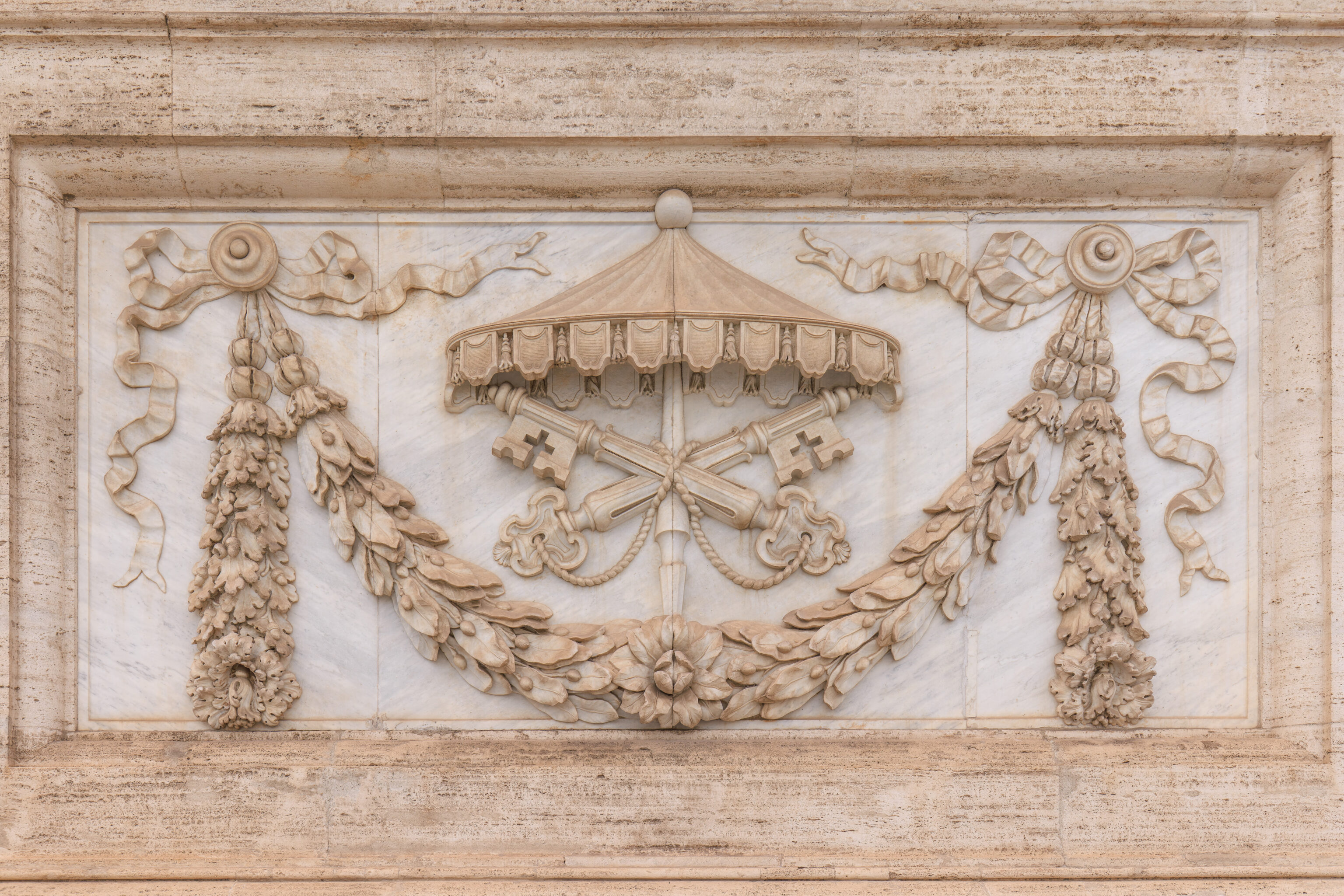
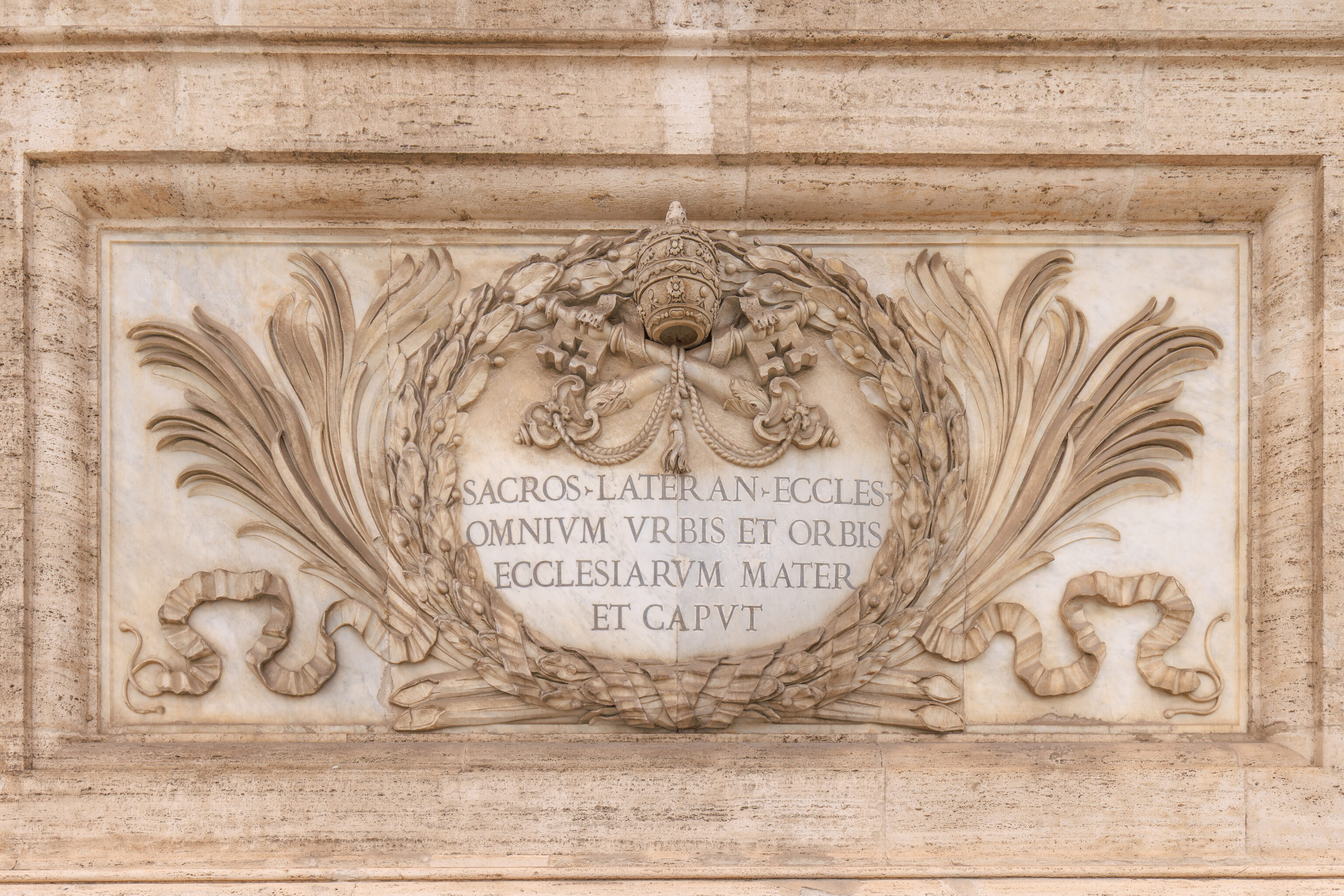
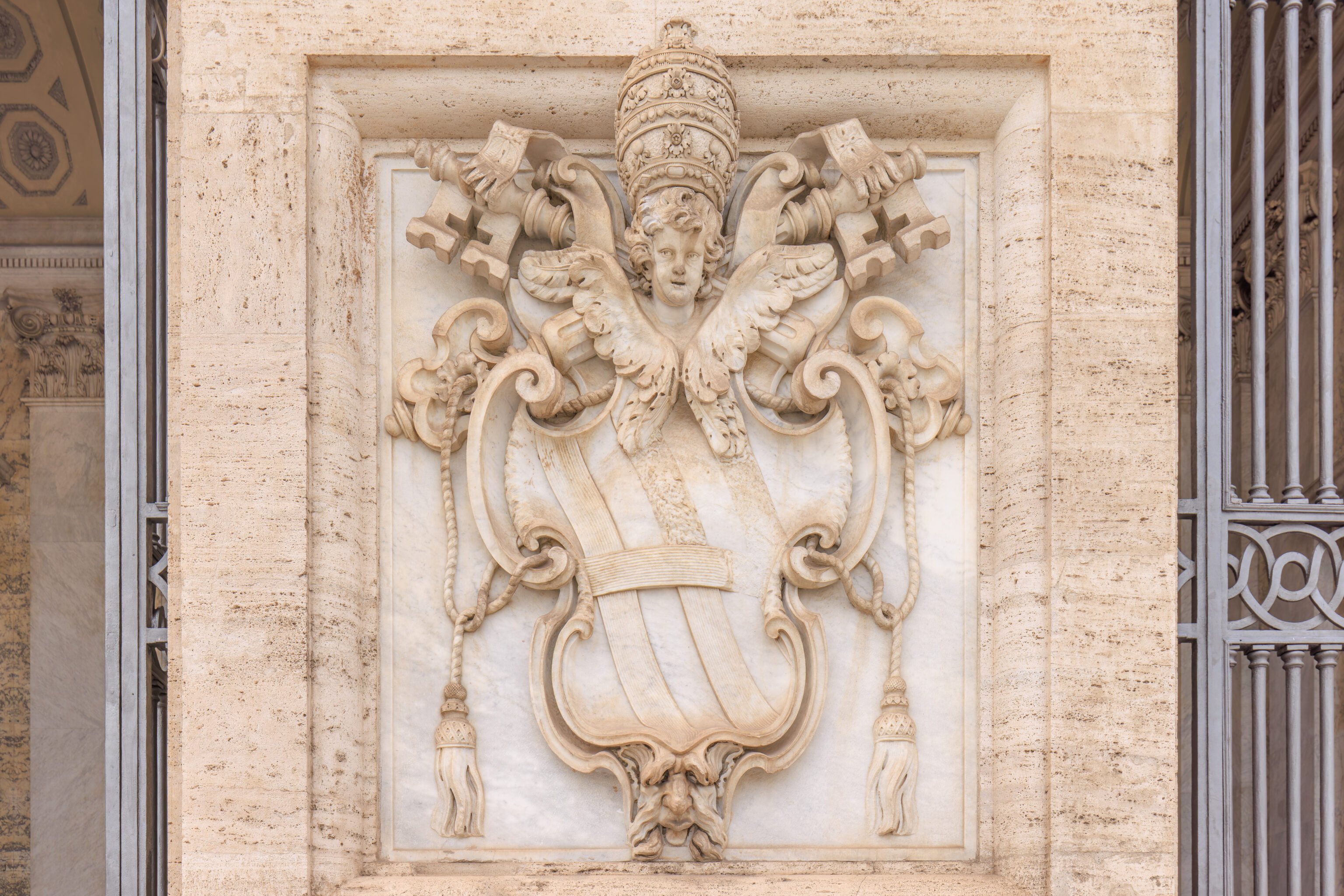
There are decorative elements carved into the basilica’s stone exterior.
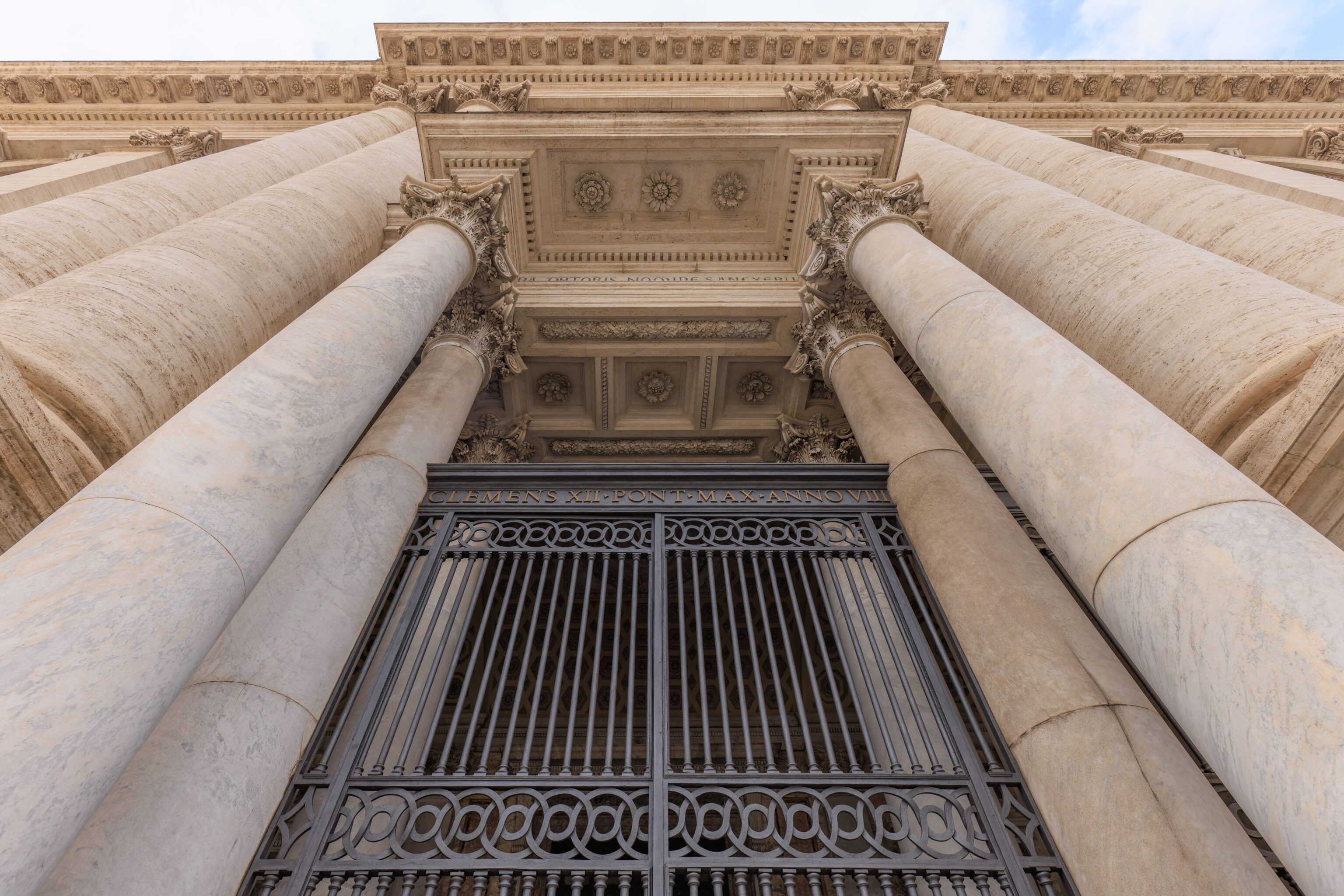
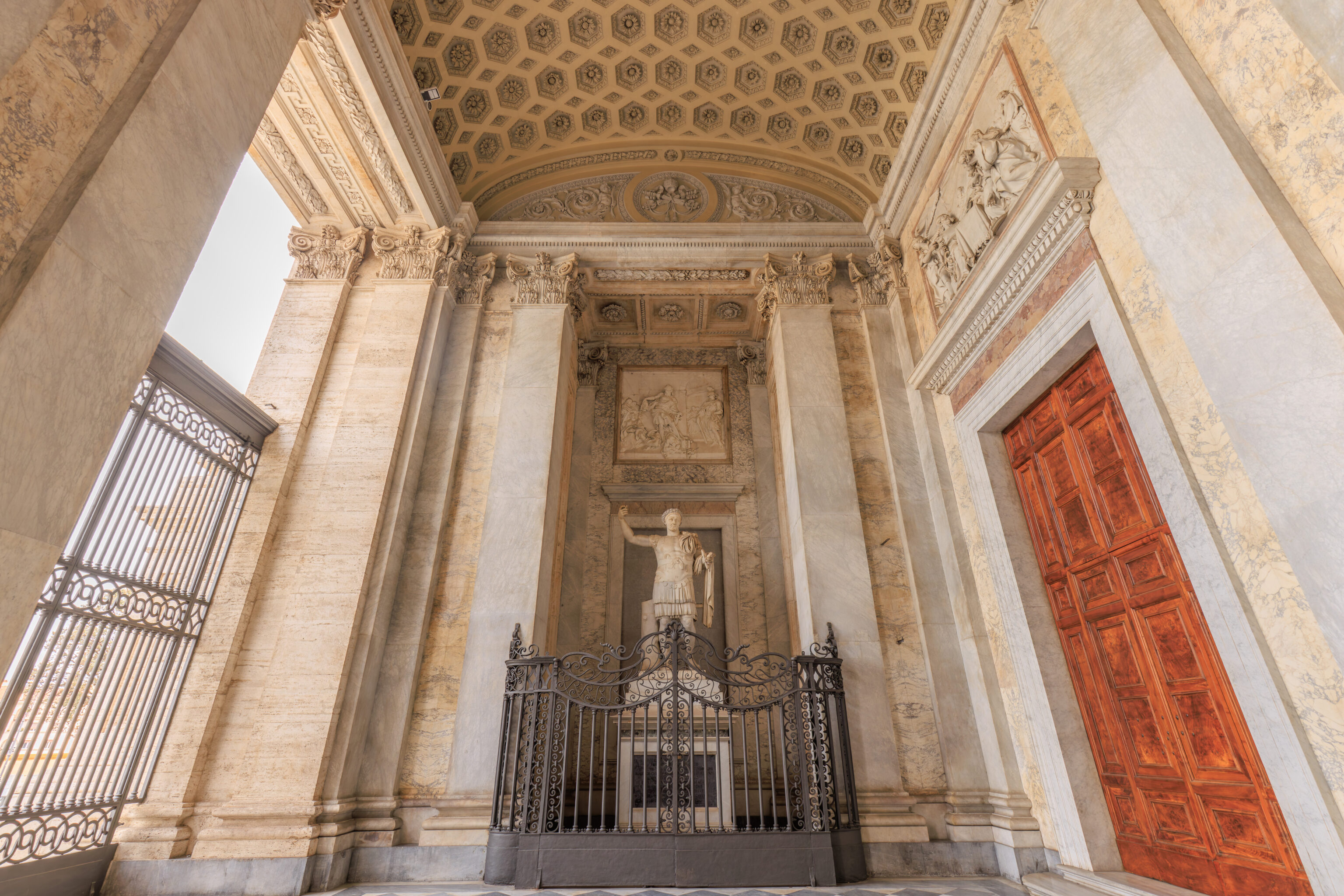
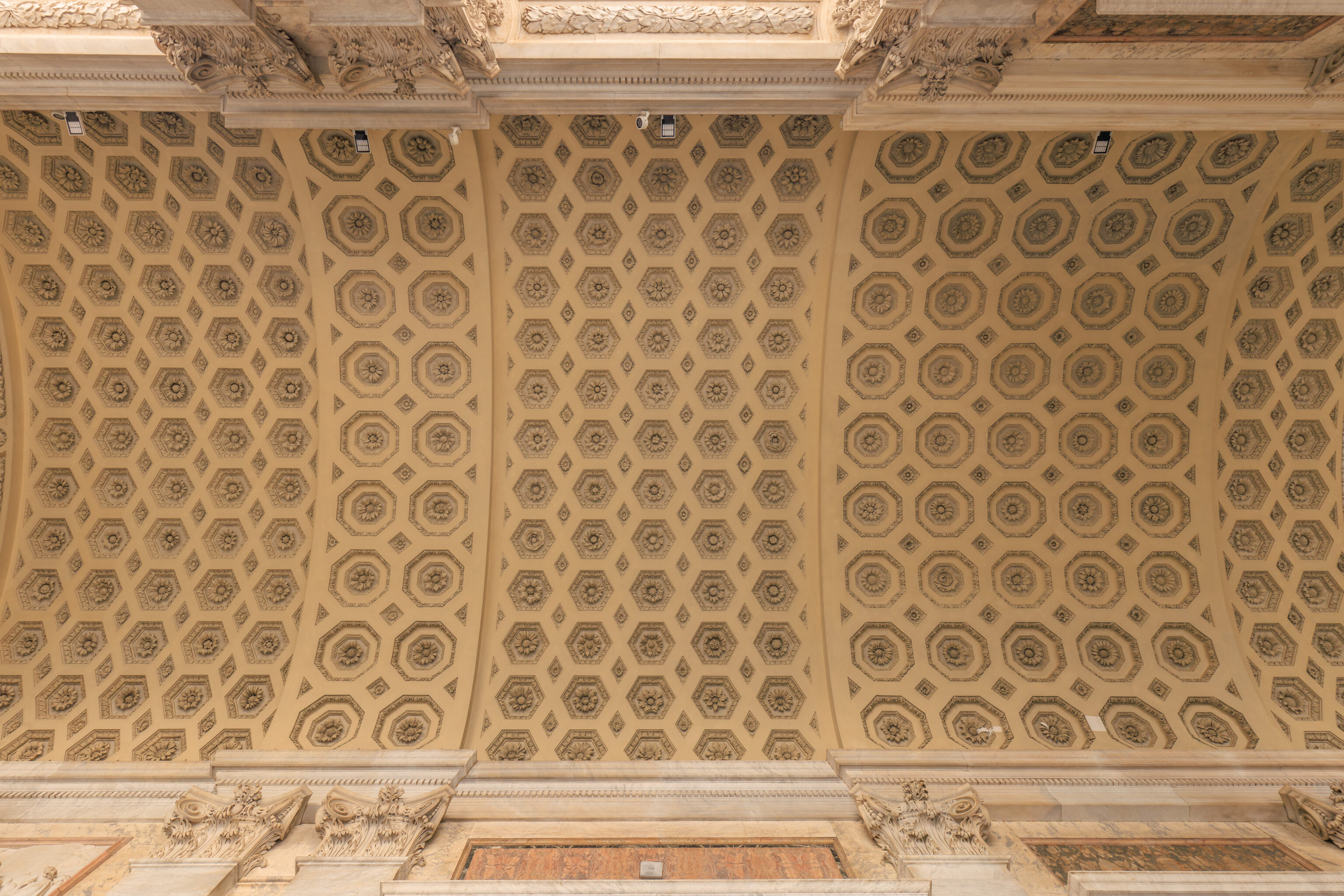
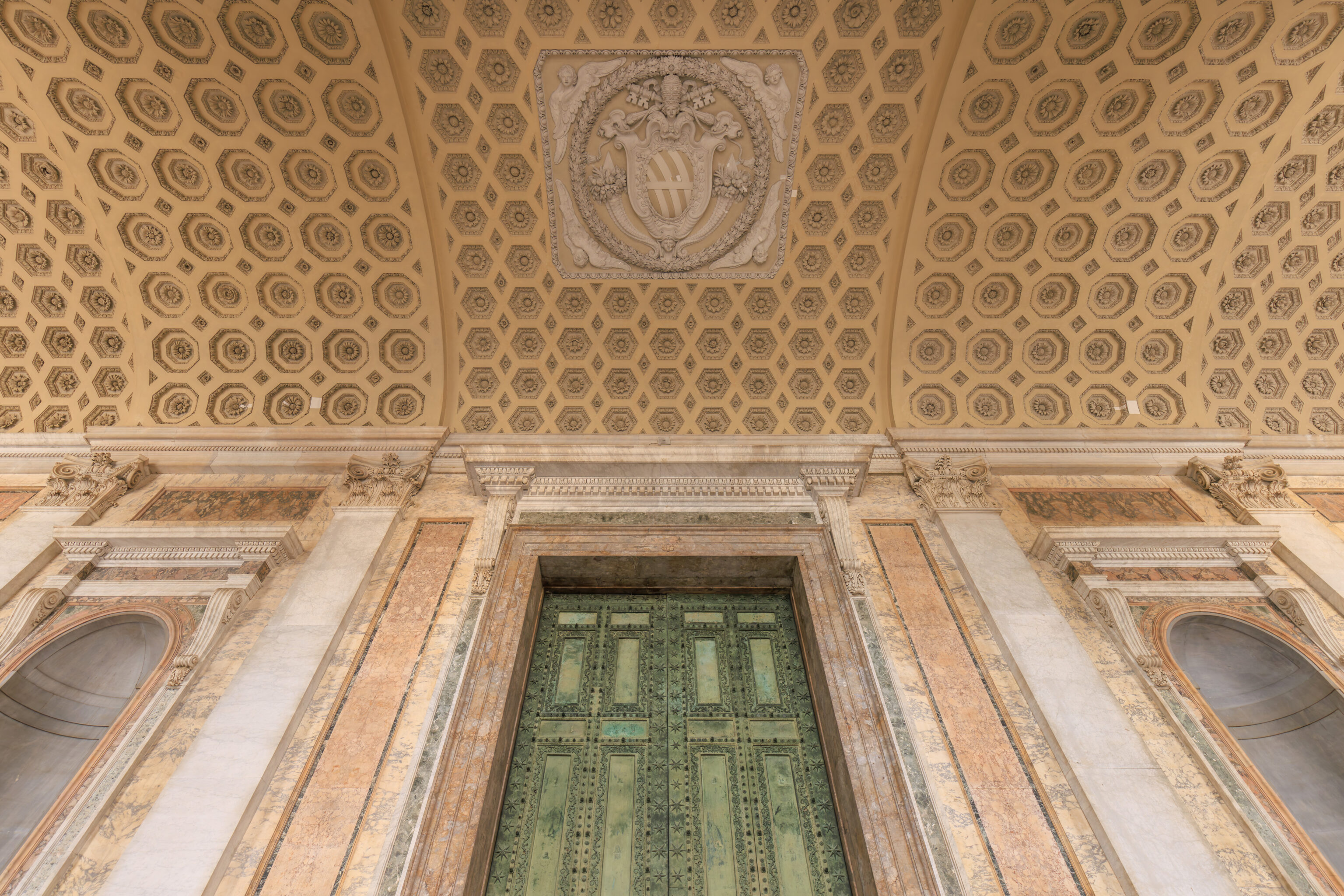
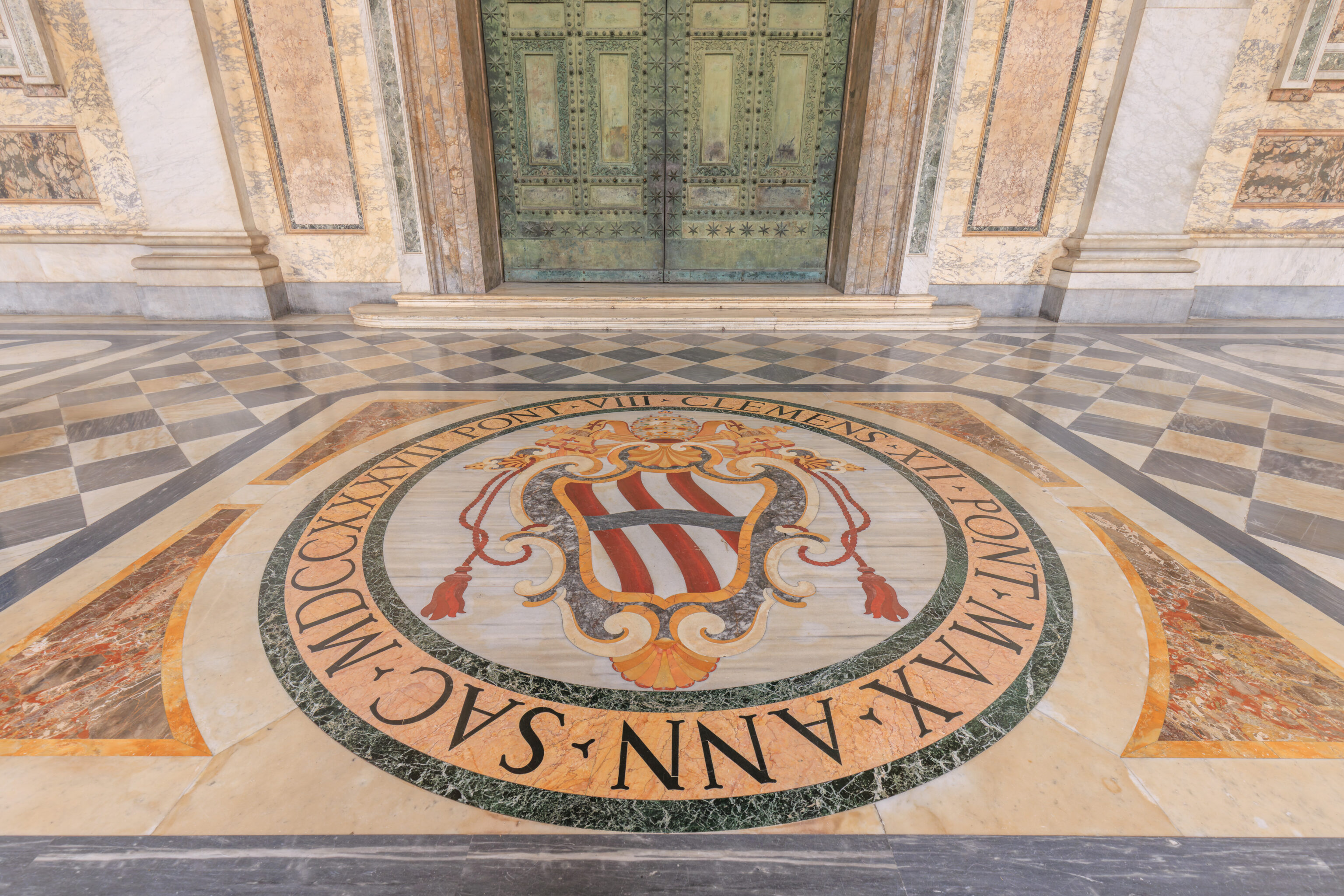
We walked in, first arriving in a hallway that runs along entire width of the front of the basilica. Architecturally, it seems that this may be considered a portico or narthex.
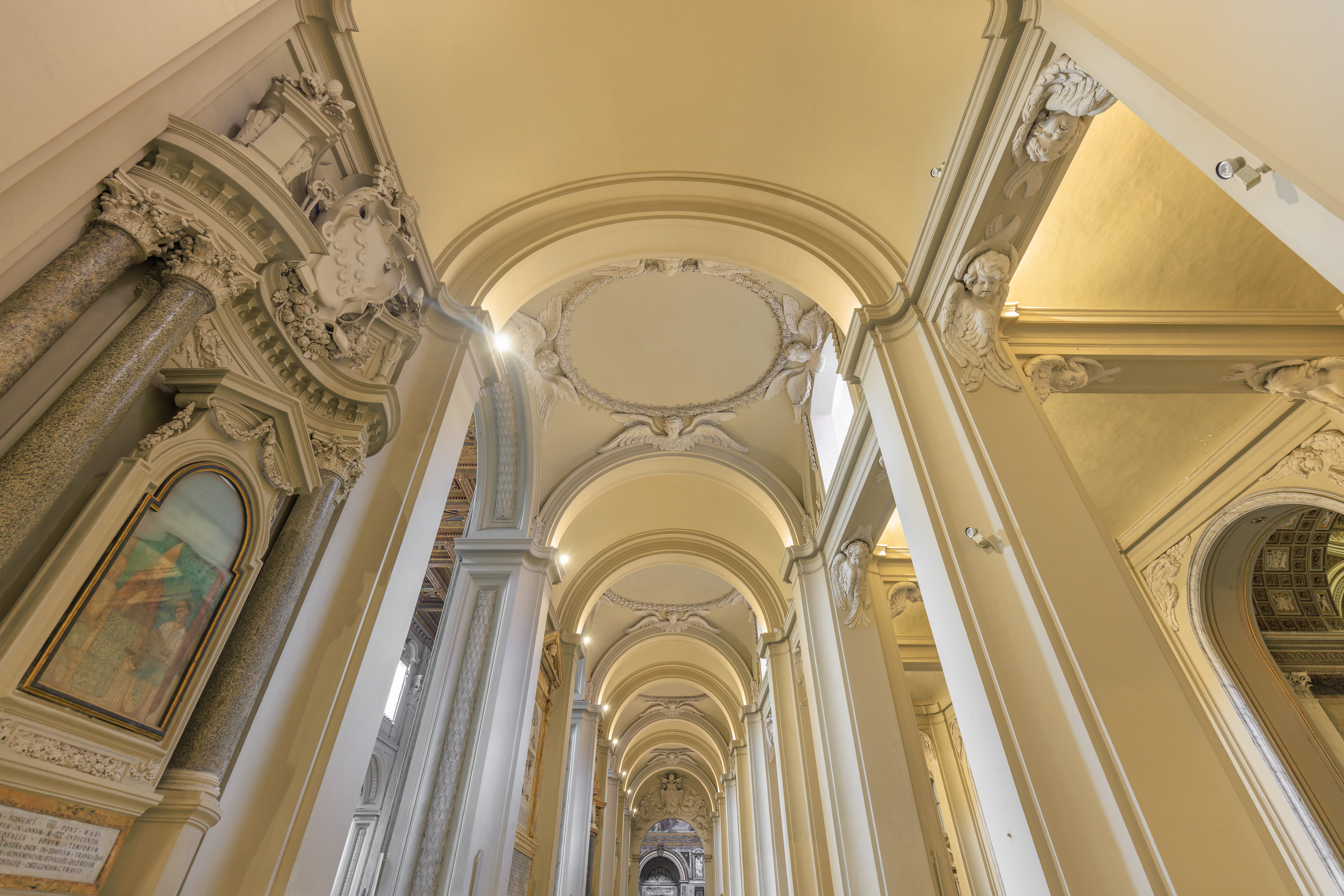
This is a very large basilica. It has double aisles on either side of the nave. We entered via the inner aisle to the right of the nave.
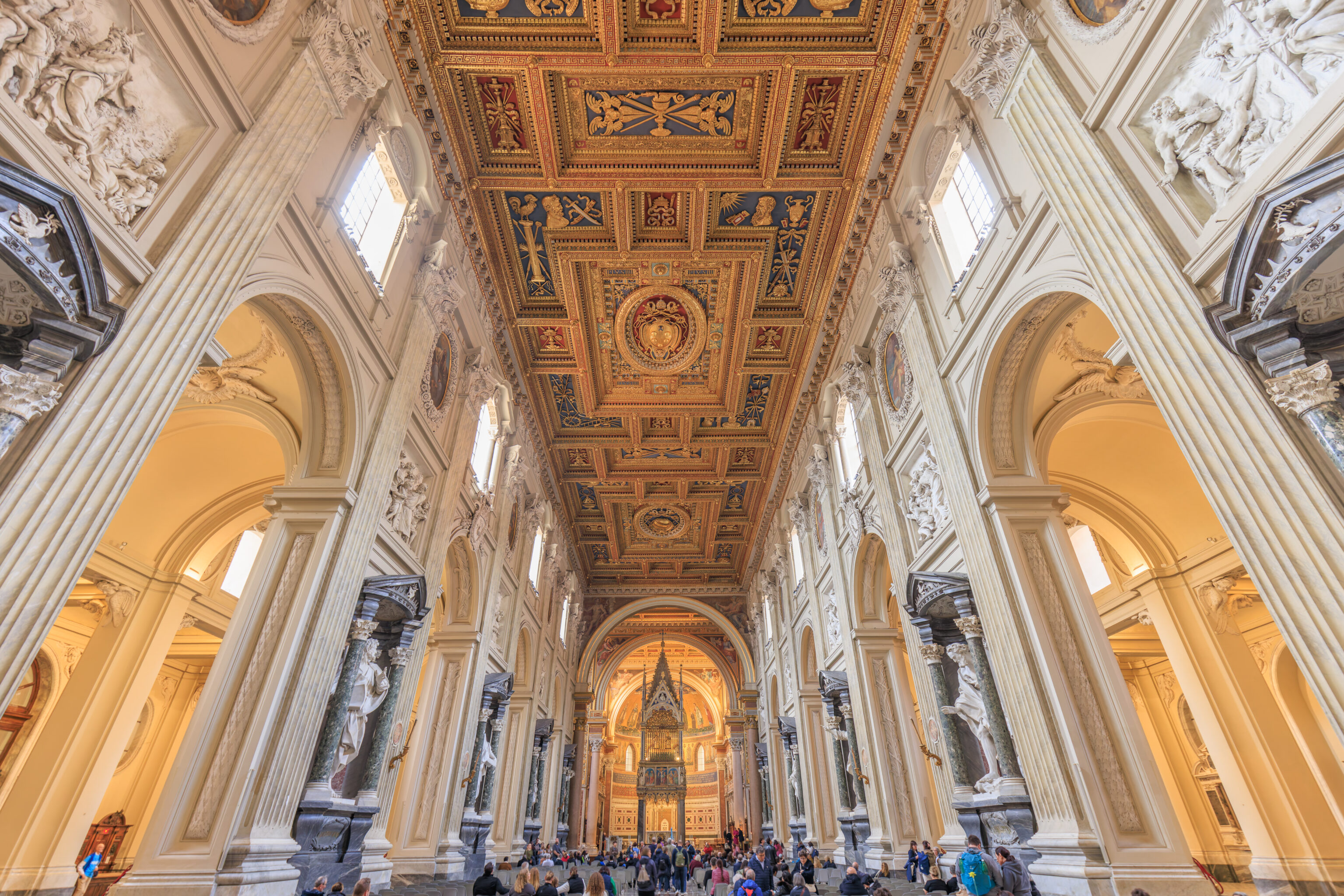
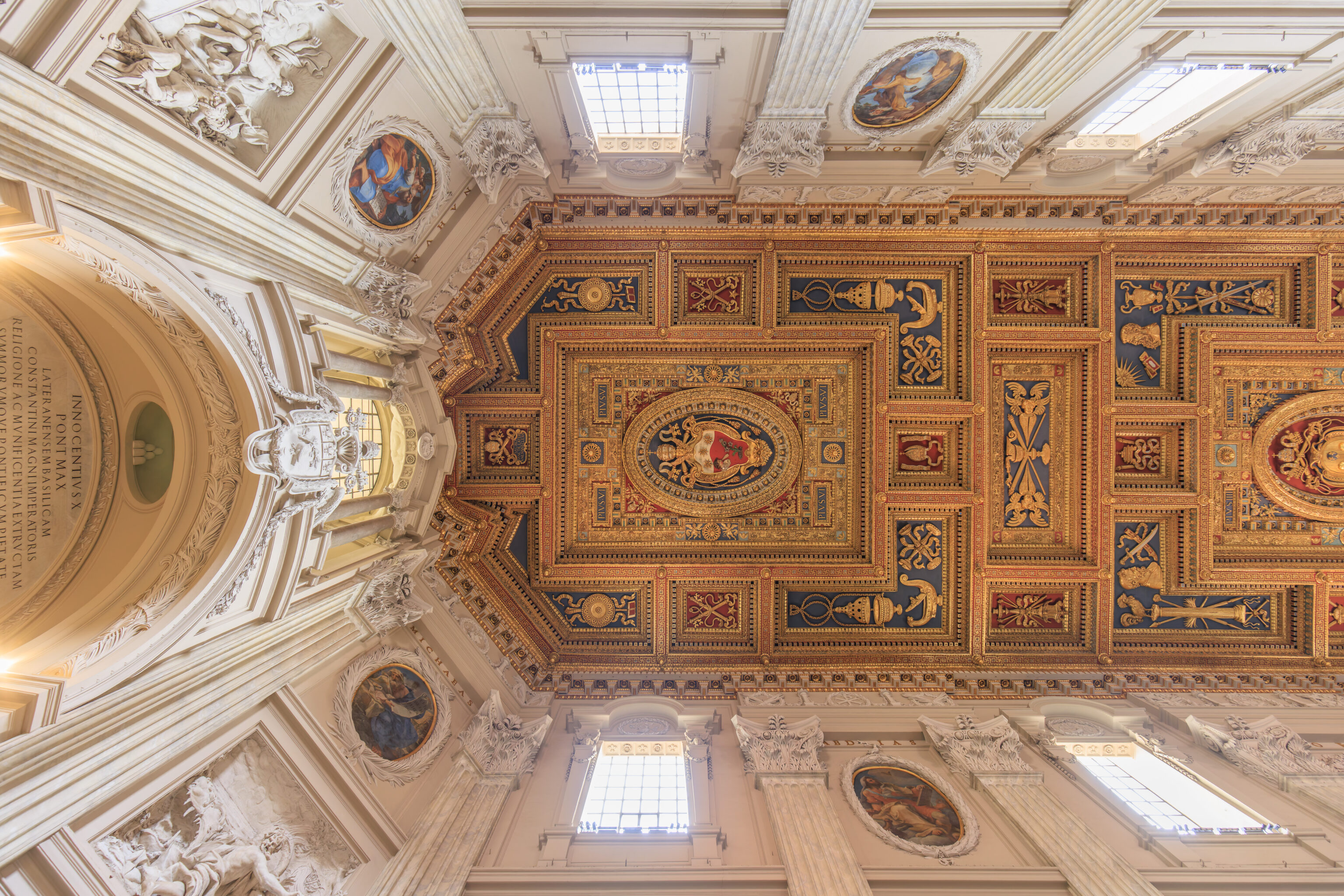
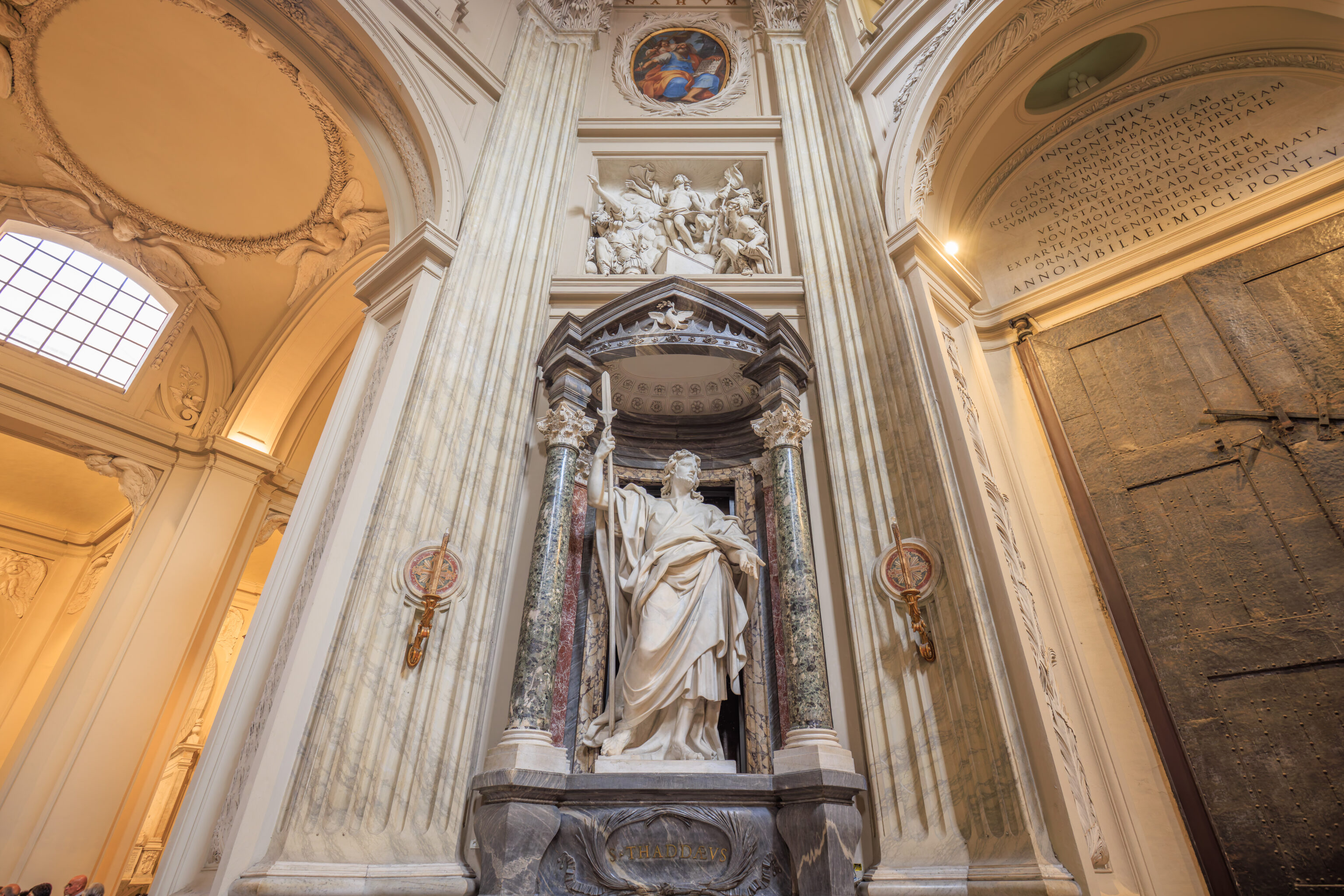
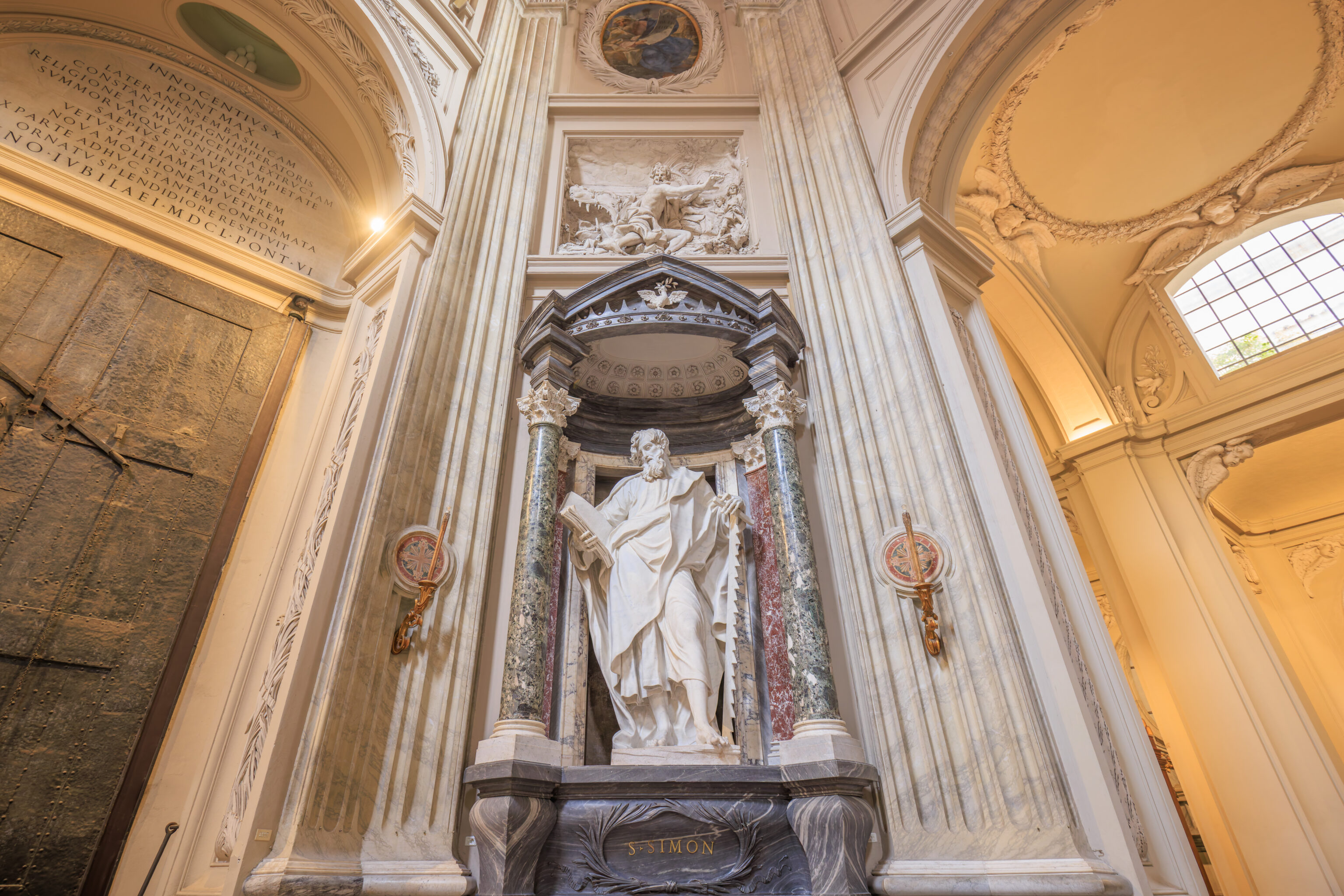
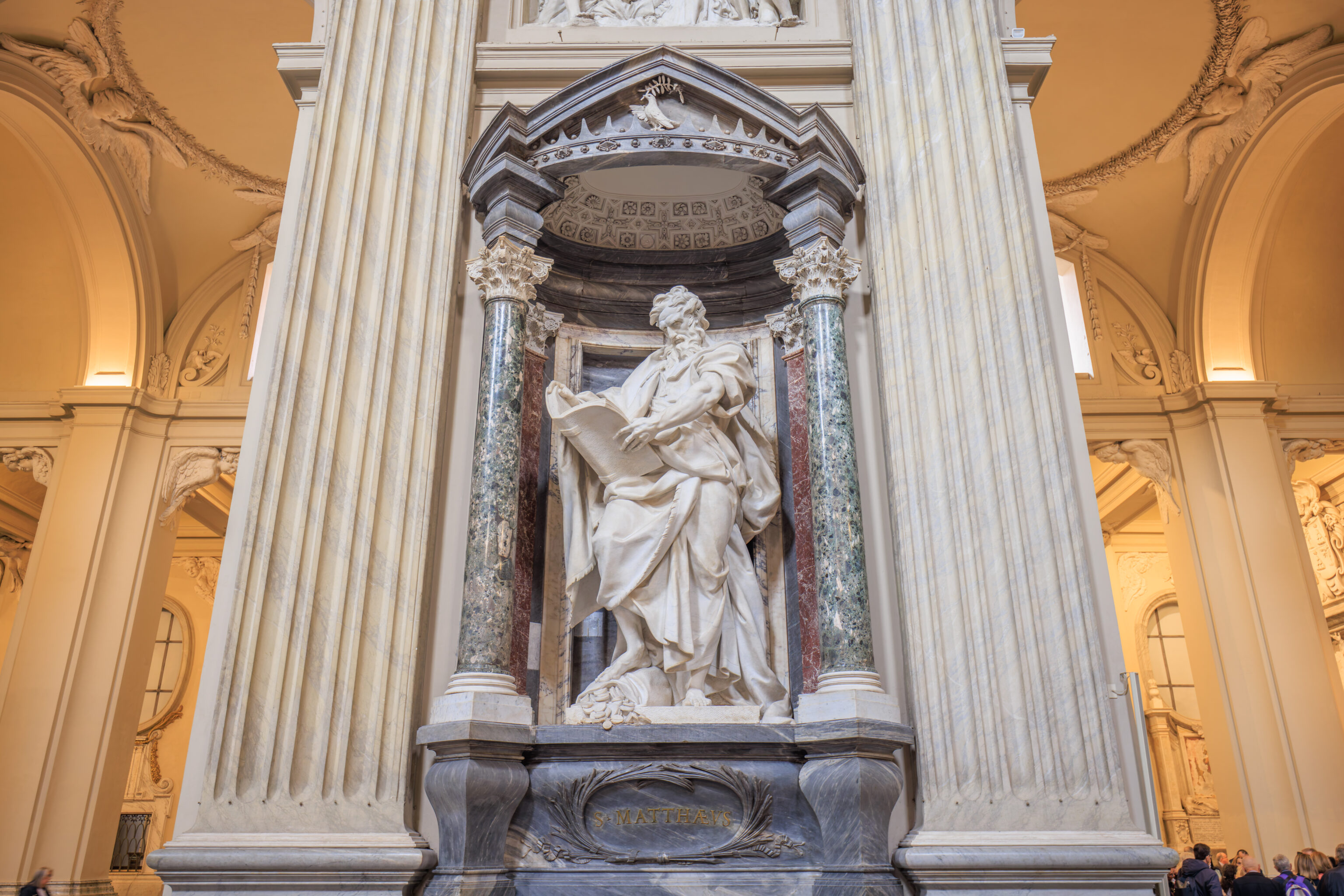
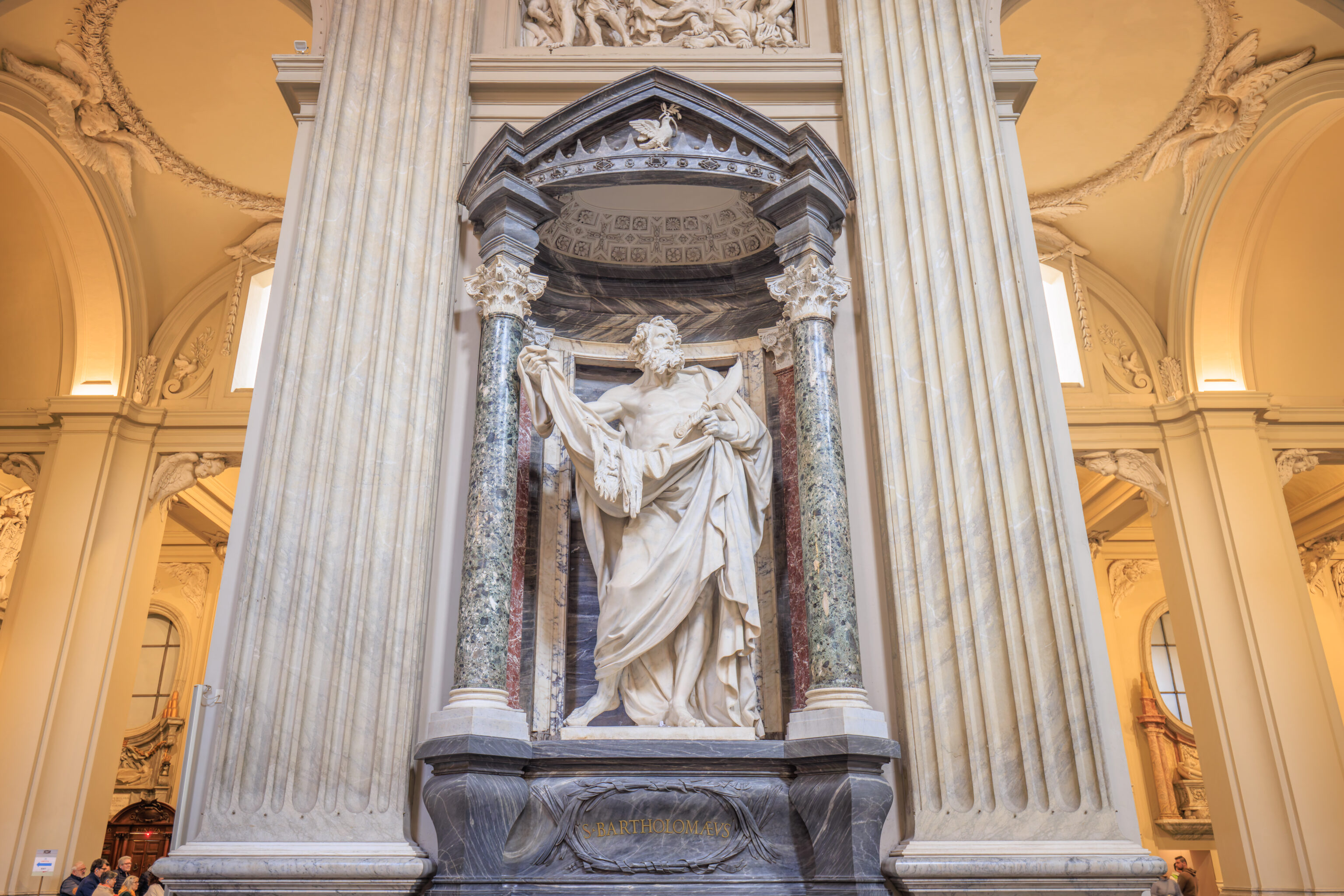
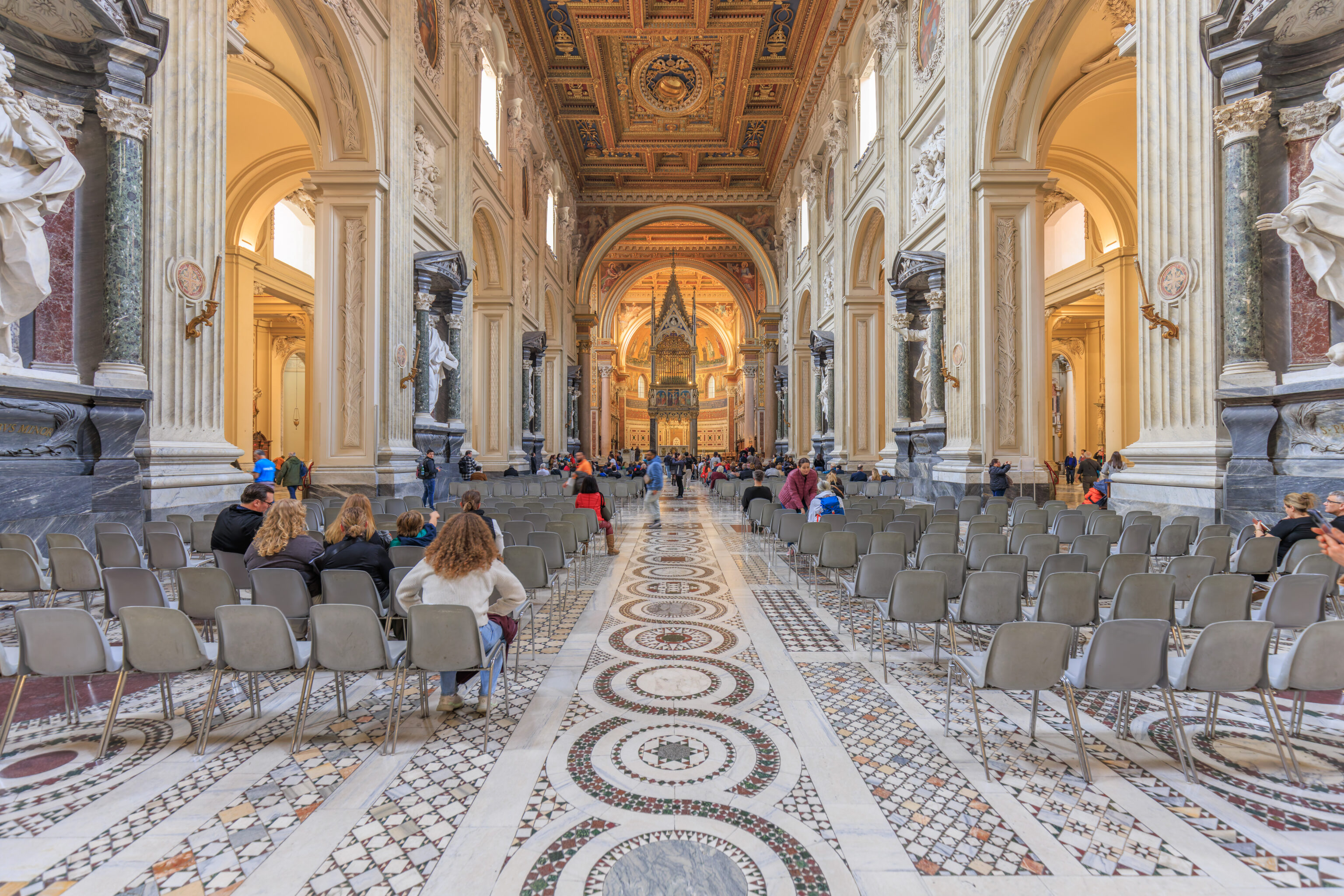
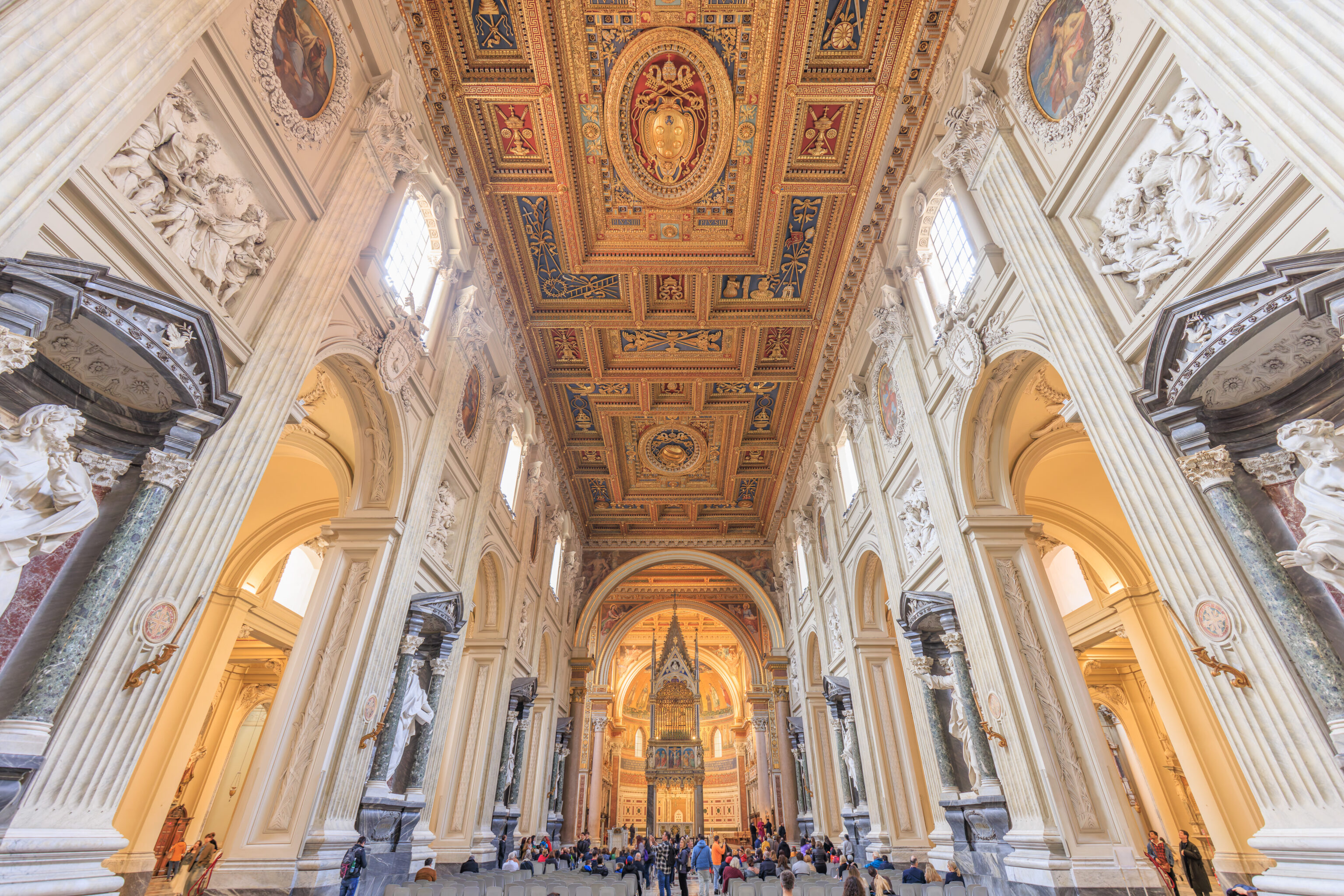
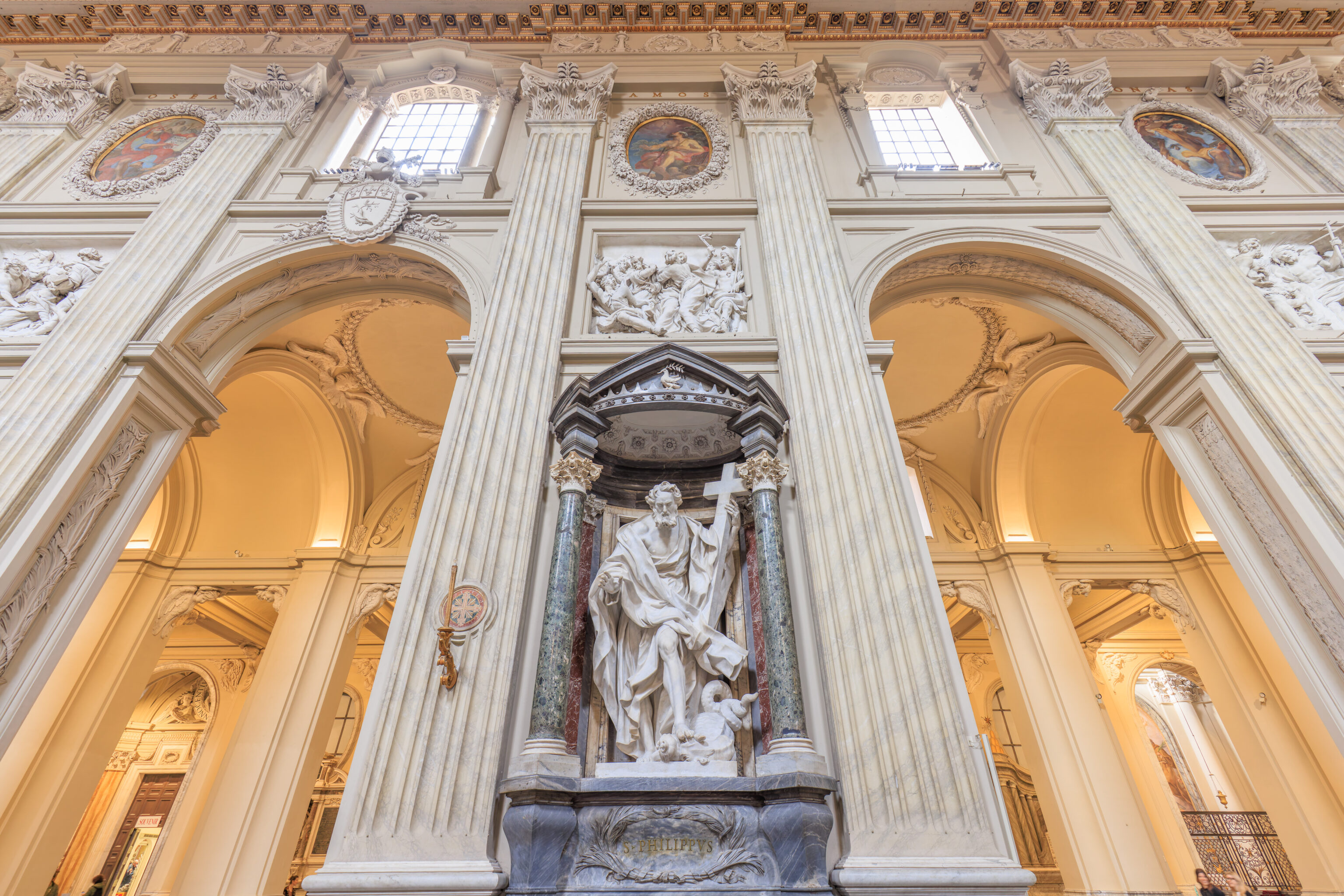
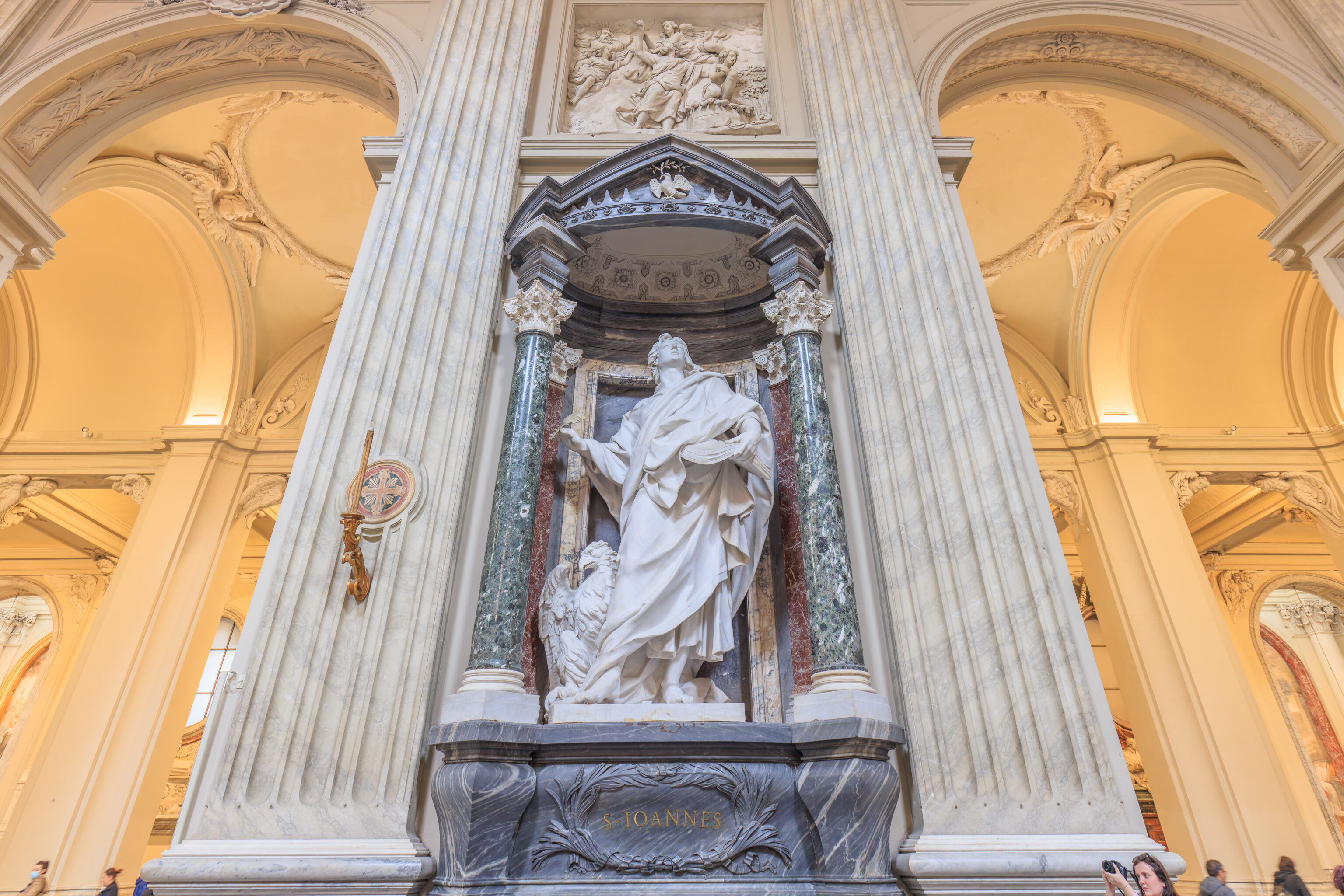
This basilica is huge and grand on a scale that we haven’t seen before. It is quite spectacular yet not overdone.
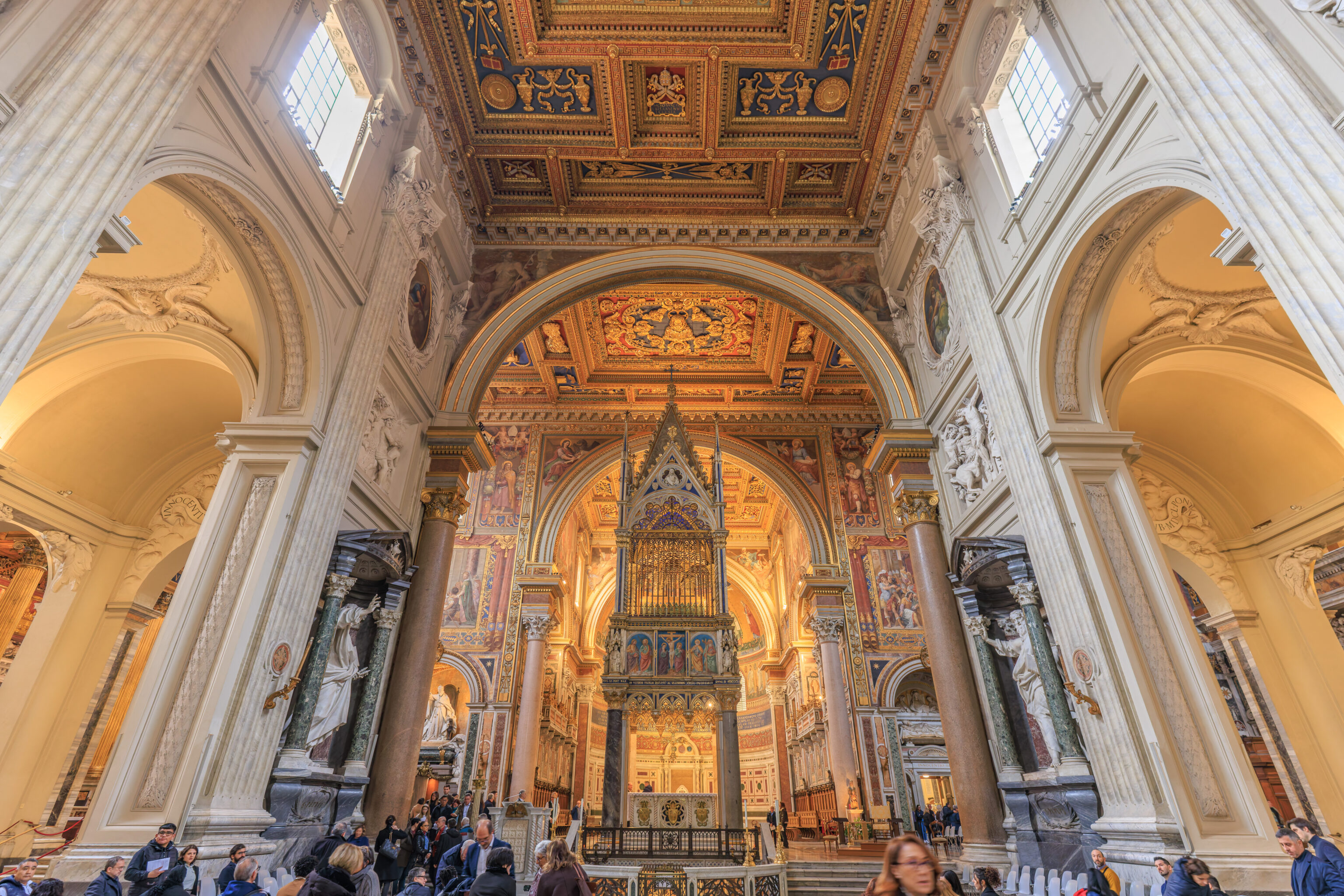
This was as far as we could go in the nave. The canopy structure in front of us is a baldachin, a term meaning a canopy over an altar or throne.
We noticed something was going on at the altar end of the basilica. Was there a service starting?
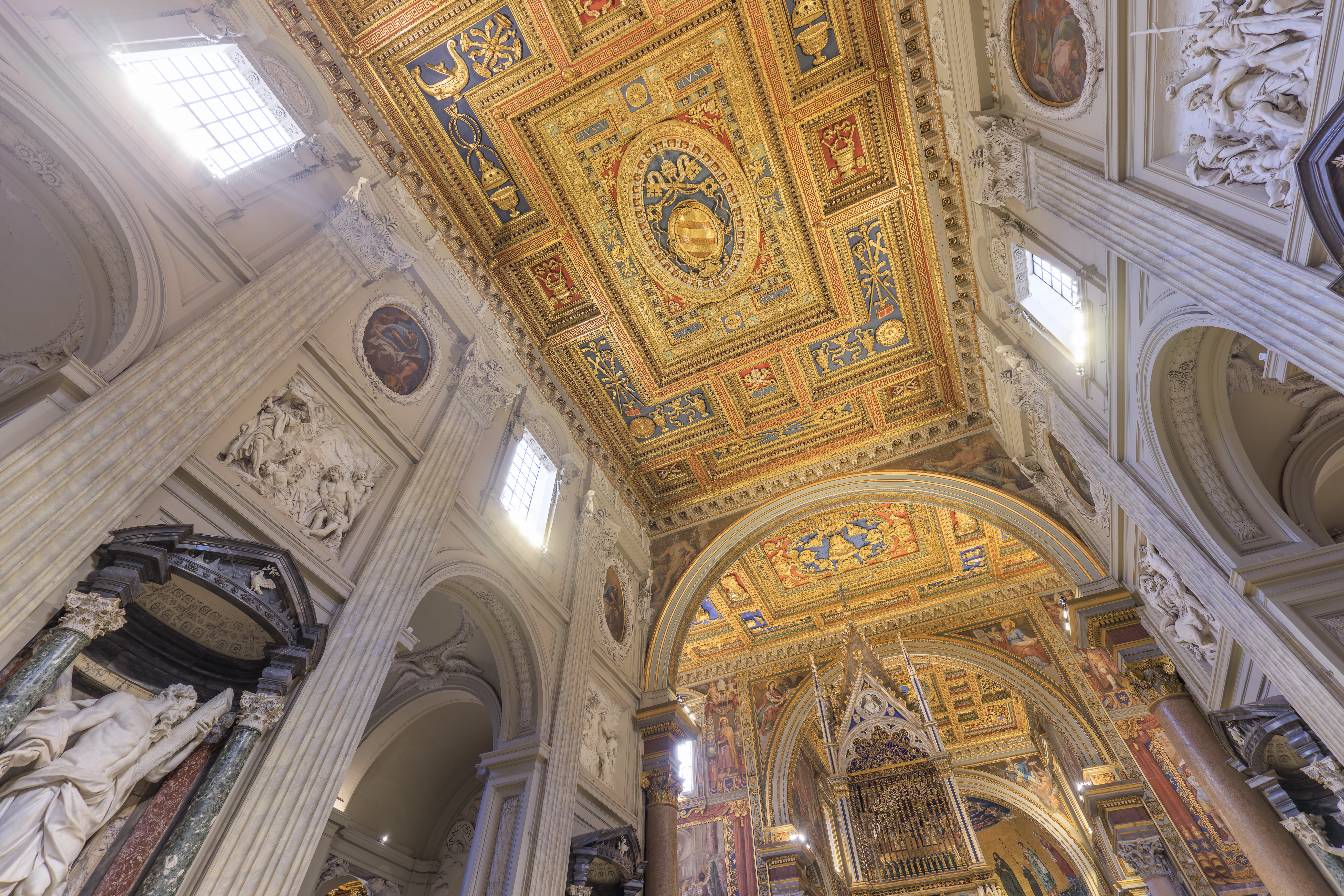
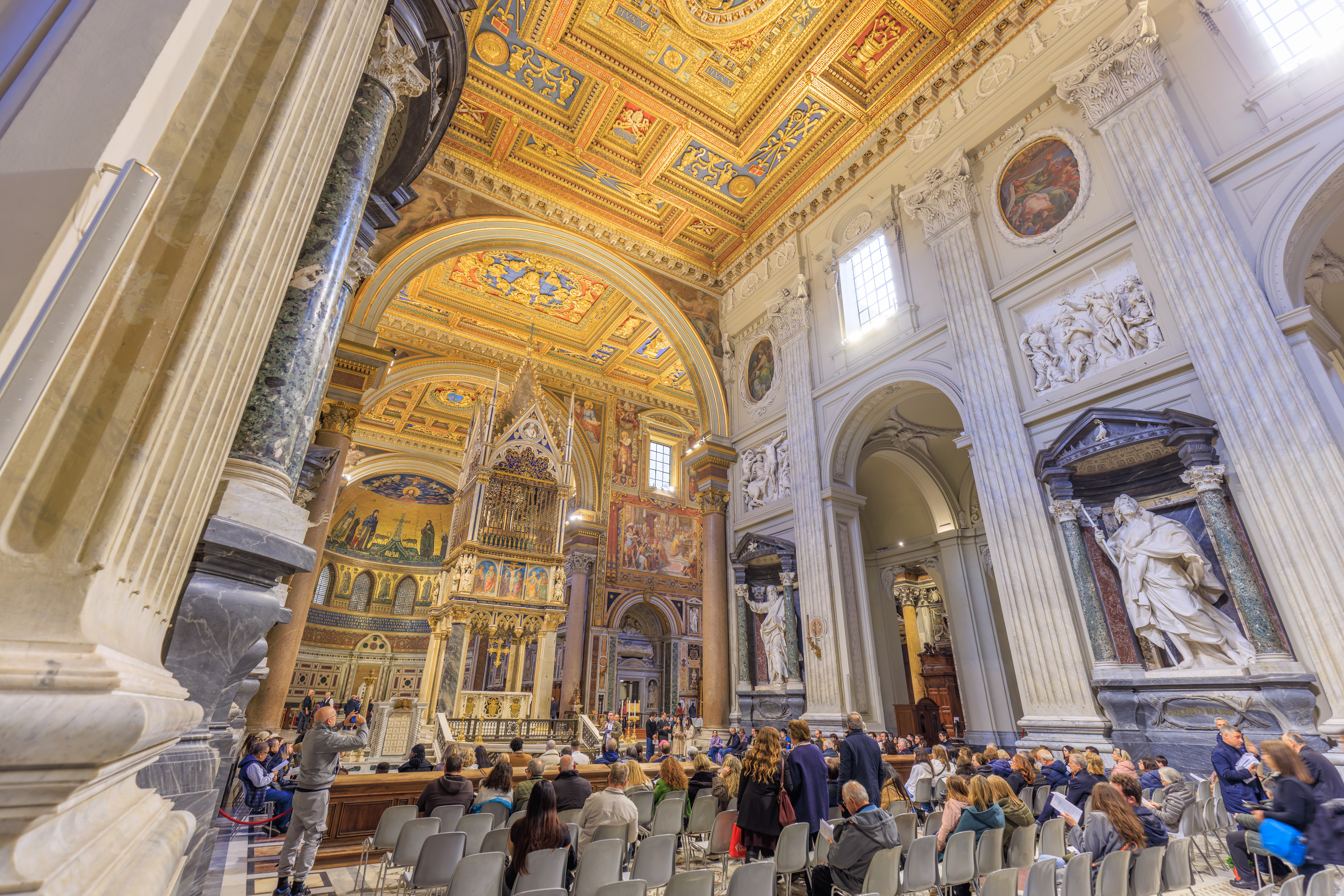
A set of interior lights turned on, making it noticeably brighter inside.
We picked up a program from a man who was handing them out at the rear of the first section of seating in the nave, which indicated in Italian that this was the First Sunday of Lent Holy Mass with Rite of Election. We decided to sit at the rear of the section and watch.
A procession walked in from the side and went up to the area around the altar.
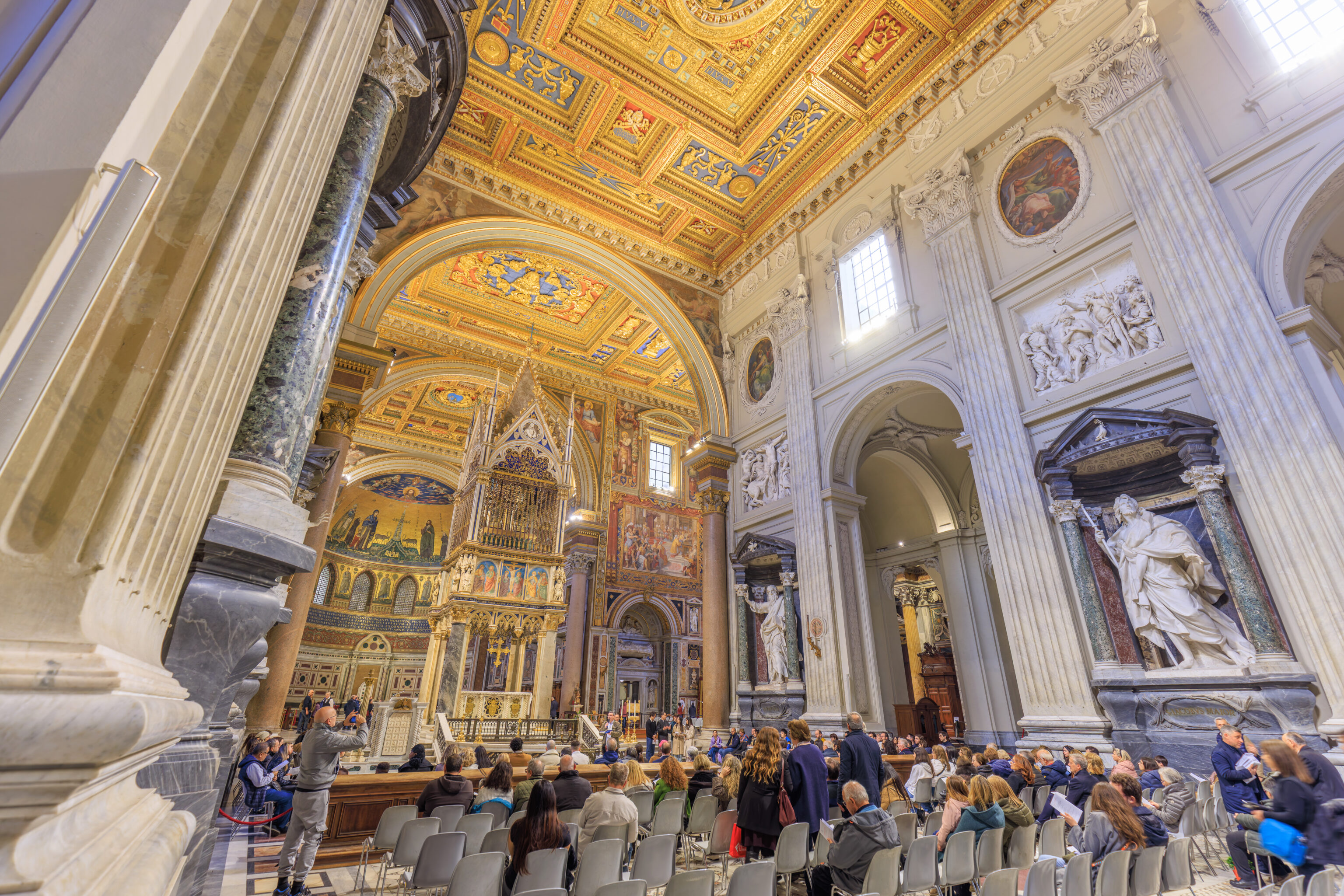
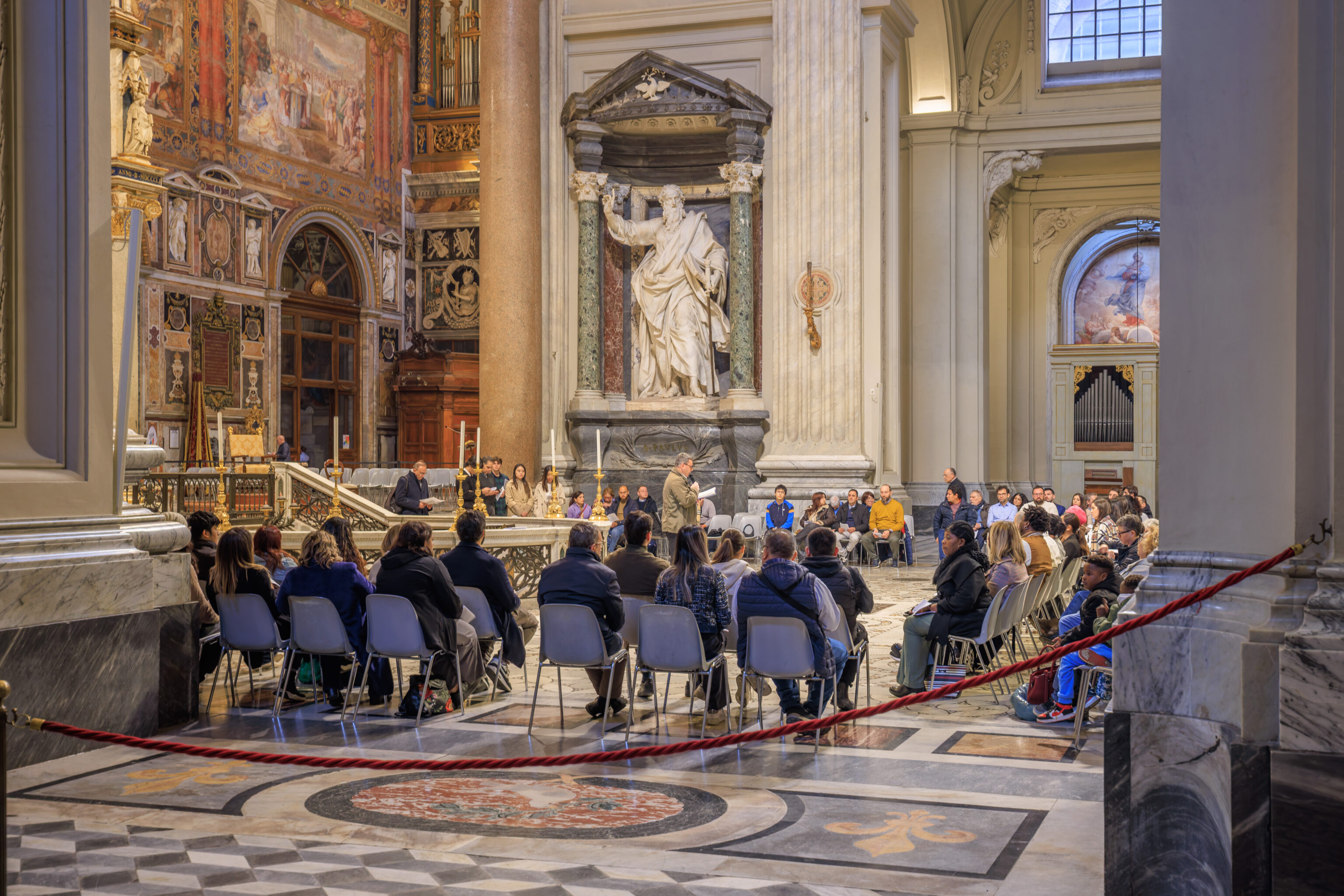
Part of the service included a number of people seated in the roped off area in front of the altar. While we don’t speak nearly enough Italian to really understand what was going on, it did seem to be that these people were joining the Catholic Church. This seems like it was part of the Rite of Election, described on Wikipedia as the Order of Christian Initiation of Adults. The program for the service indicates that they will be formally registered as catechumens with the church and will be baptized during Easter, after Lent.
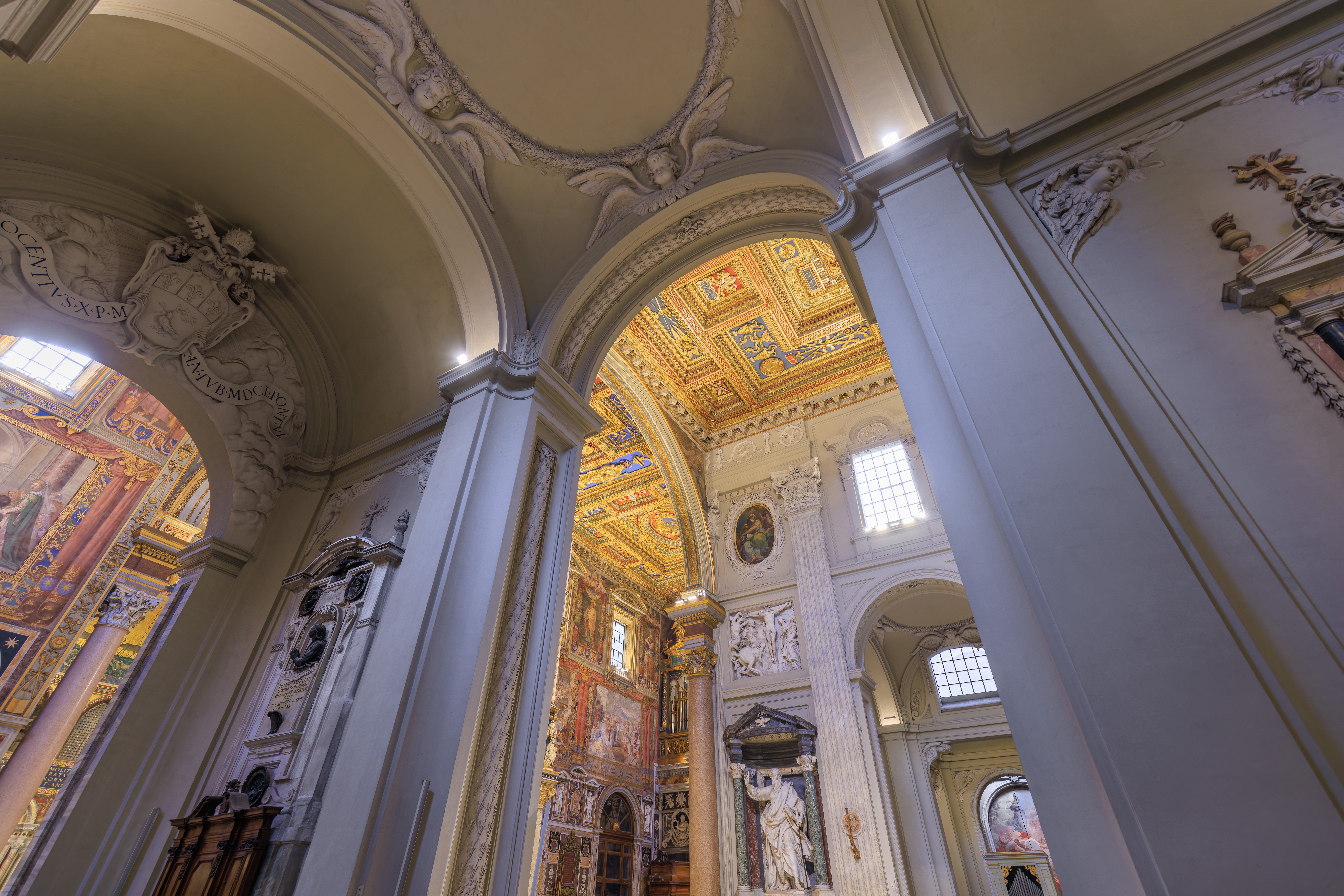
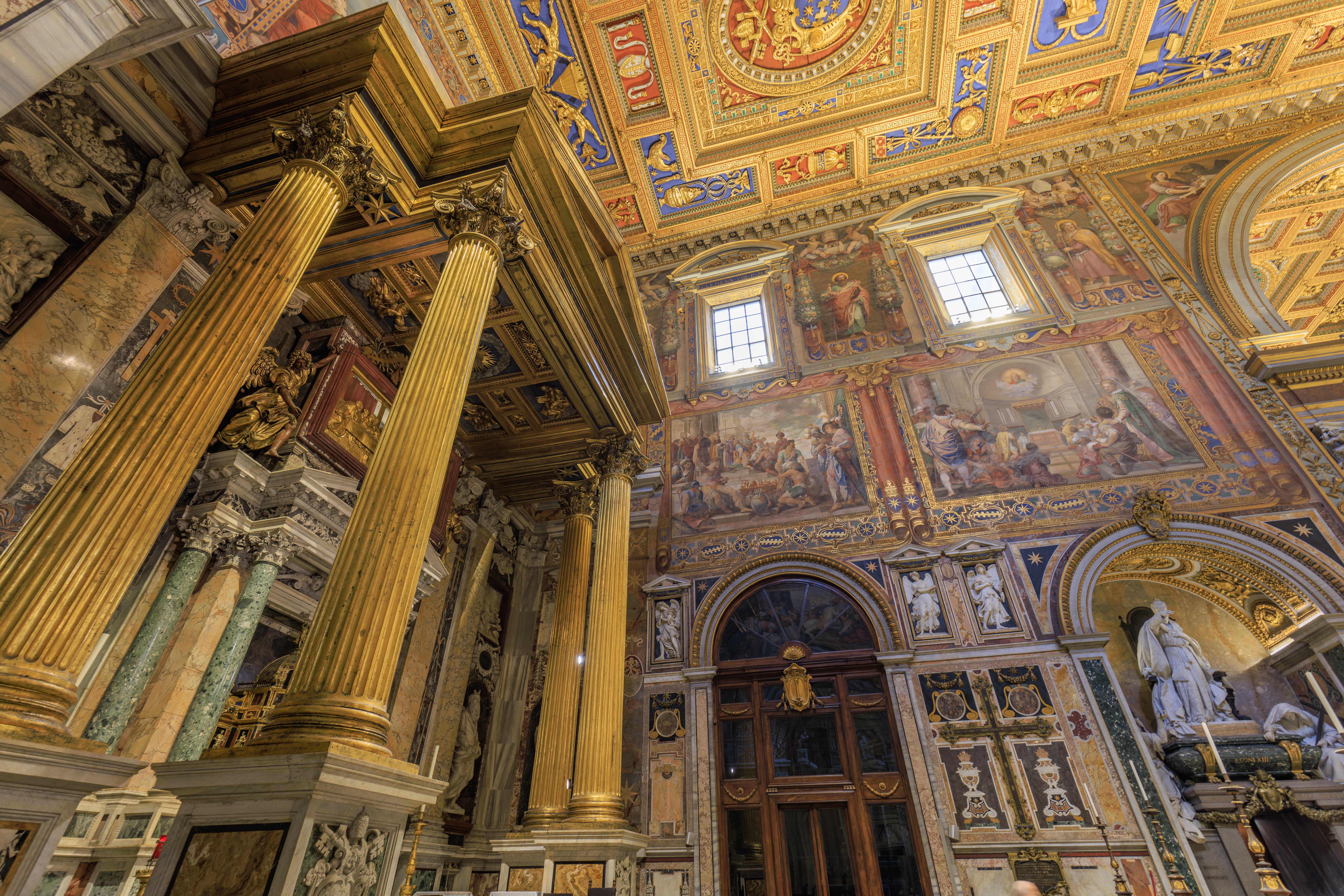
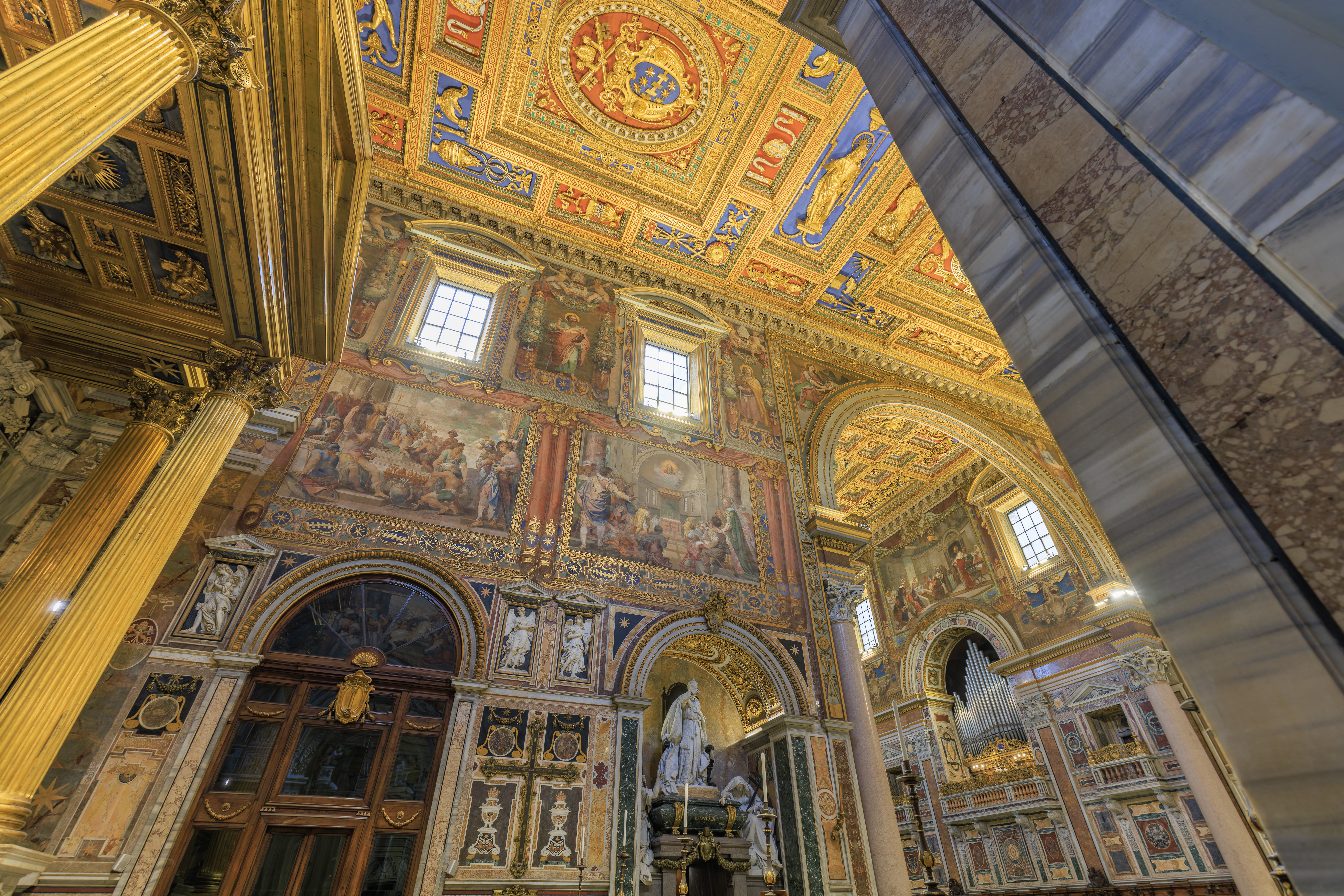

We walked around the basilica a bit more while the service was taking place near the altar. It is a huge place and there were many tourists like us present.
We returned to the nave and watched the service from the rows well to the rear. They did put up a sign indicating that the sections closest to the altar were for believers who were attending the mass.
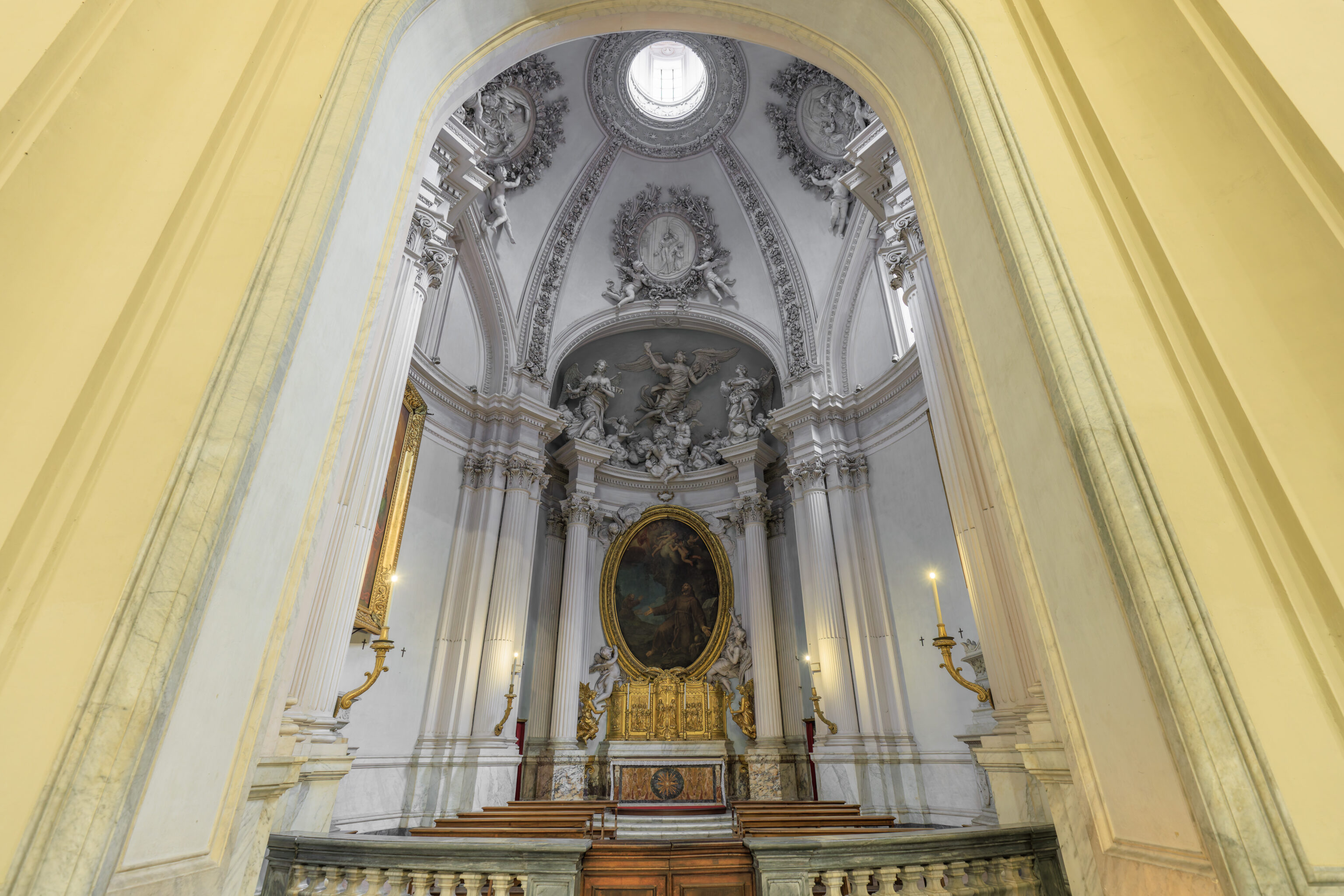
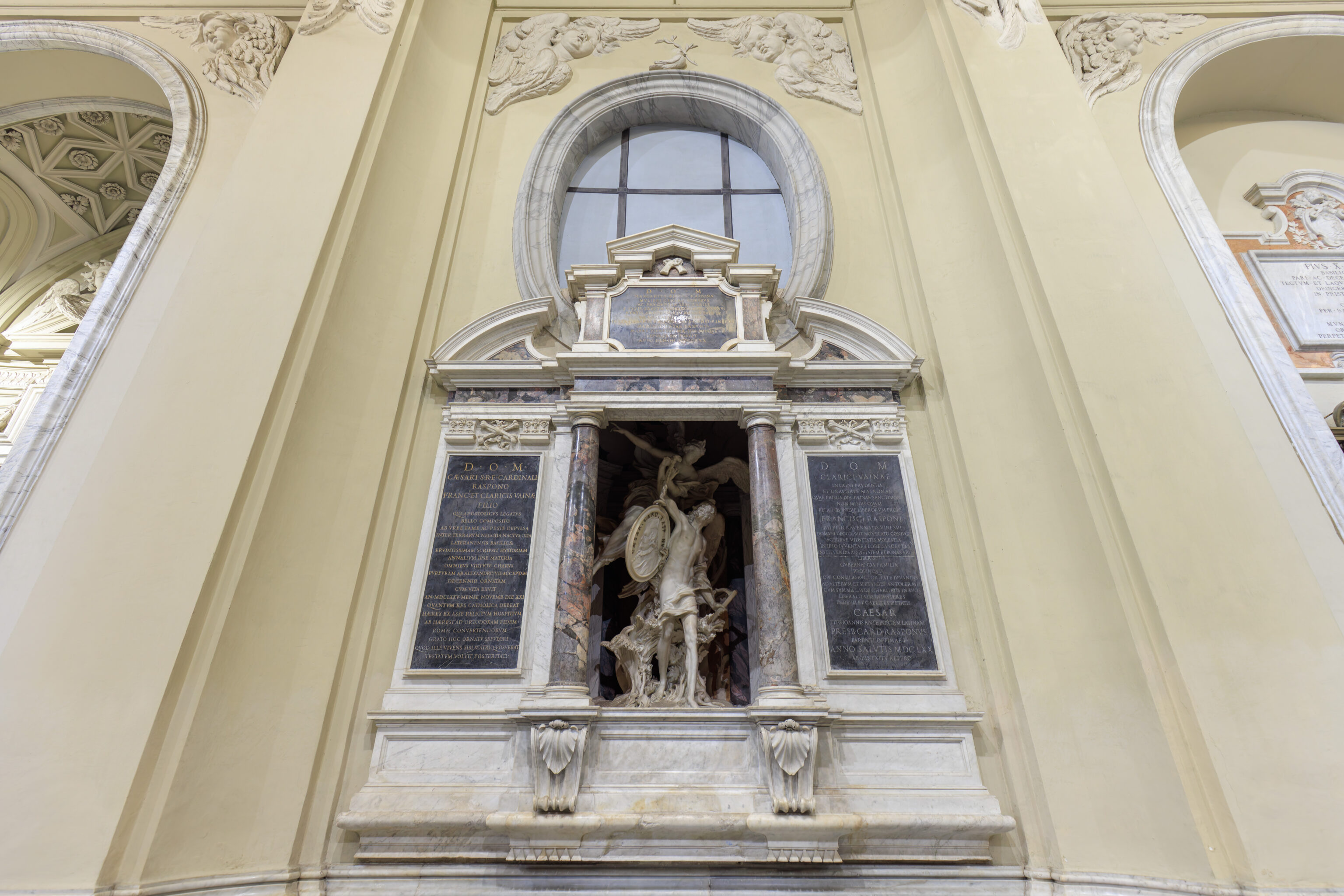
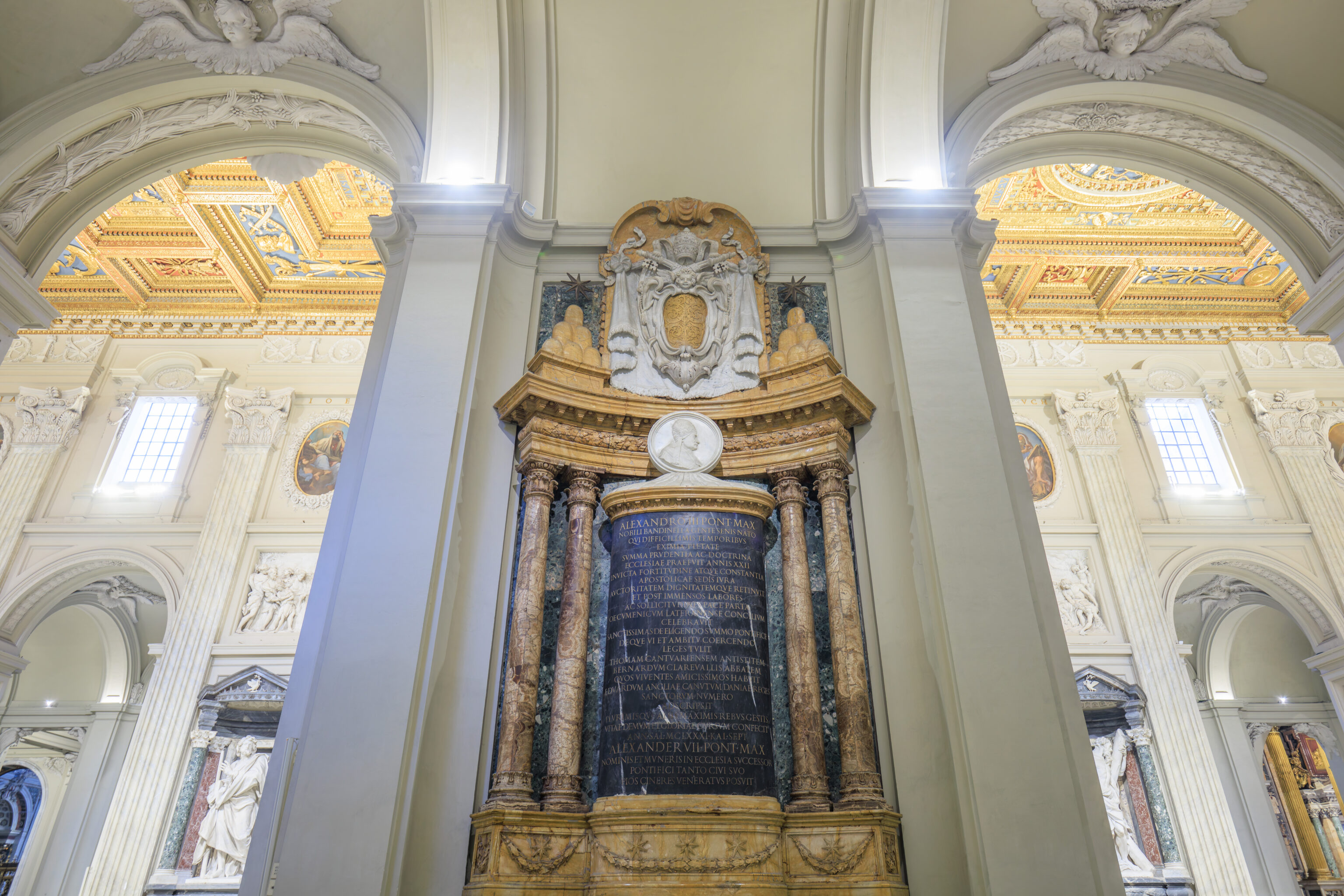
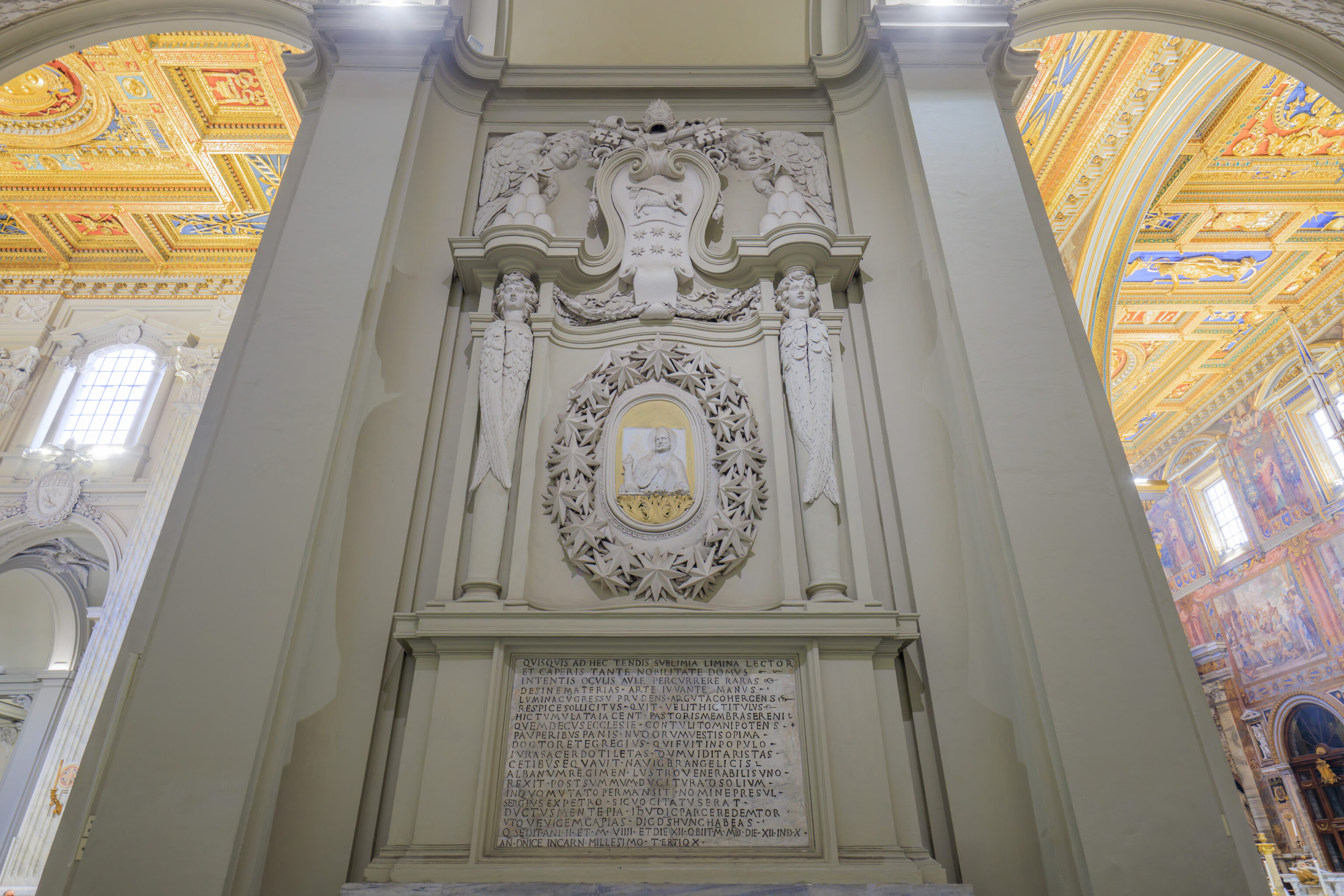
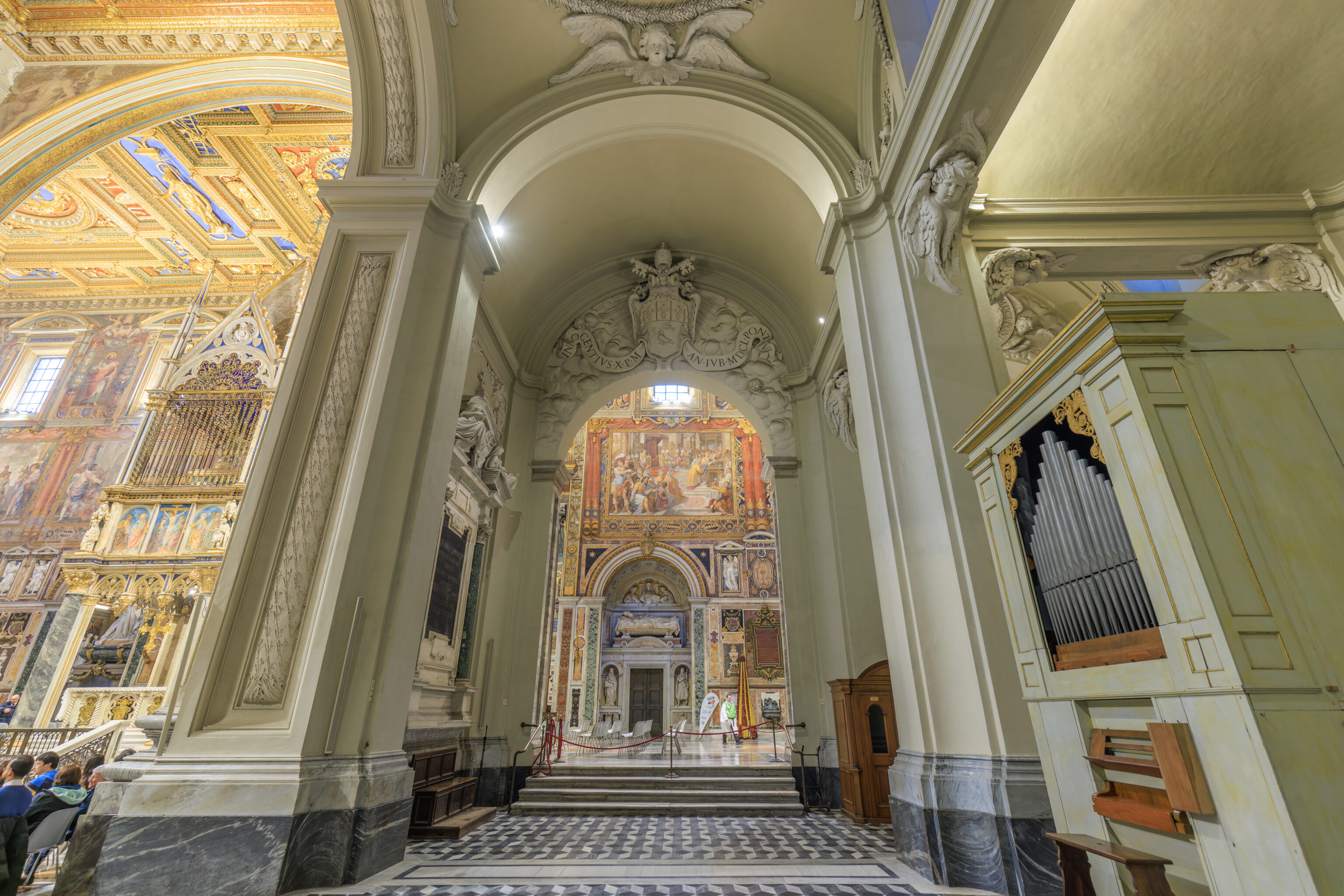
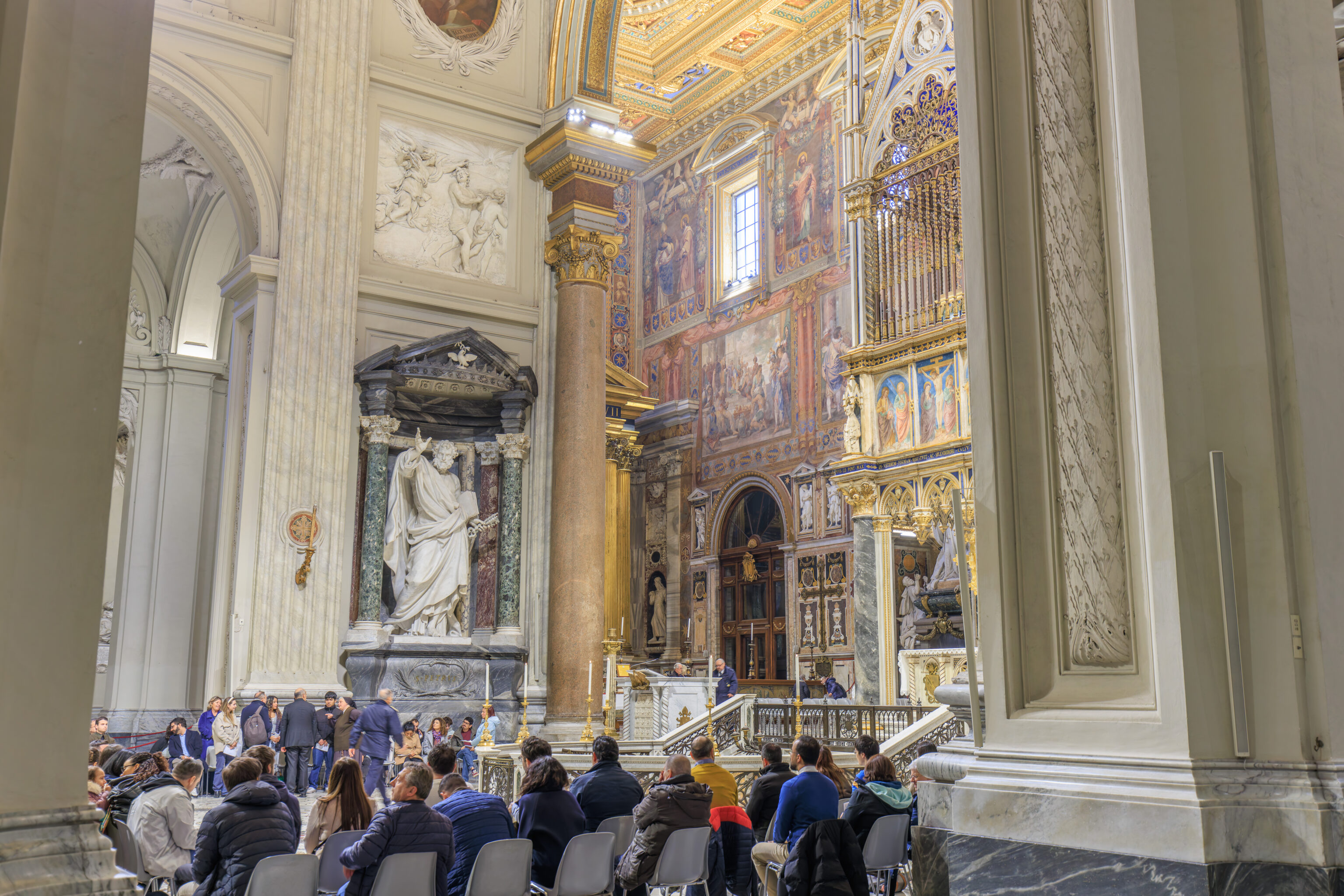
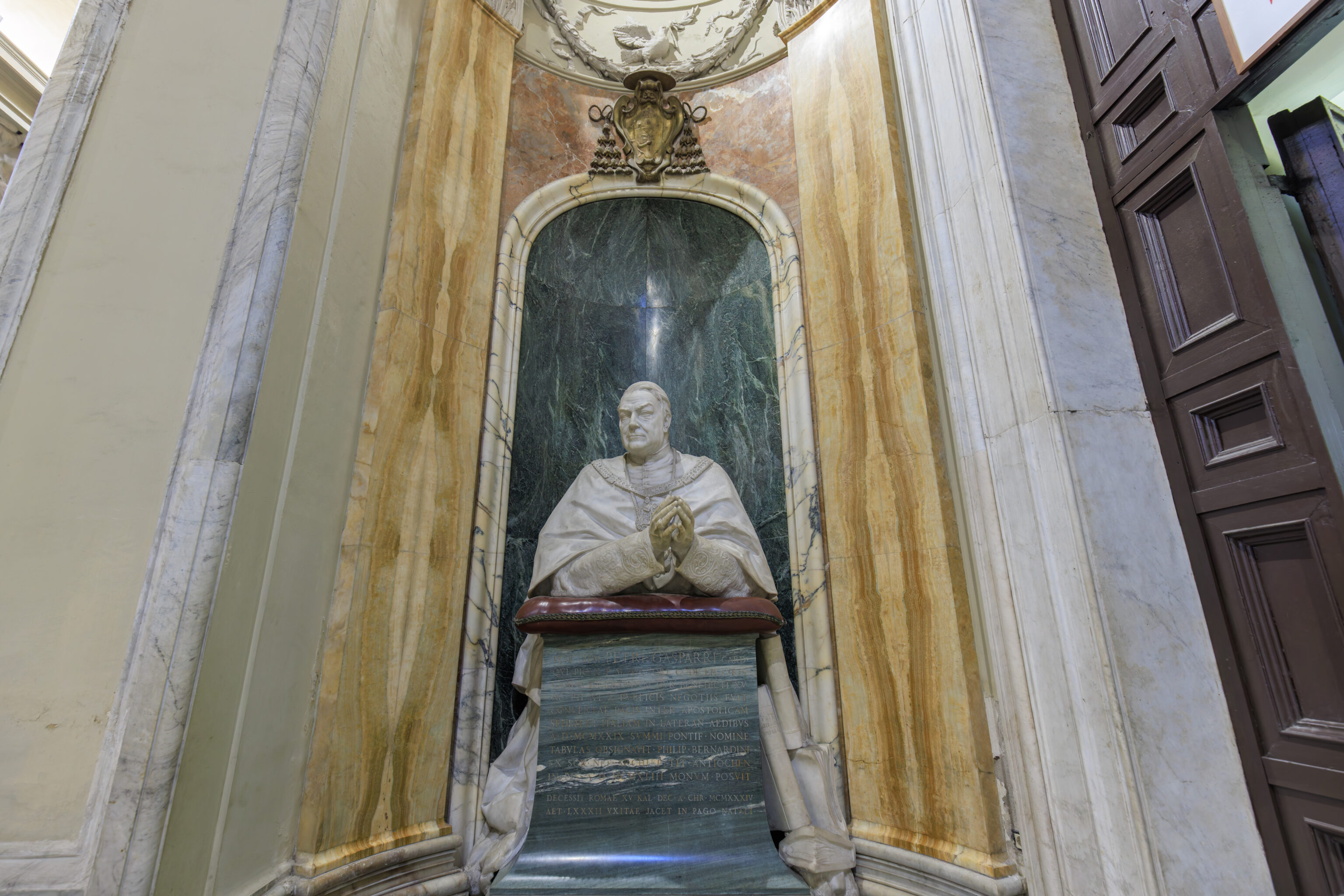
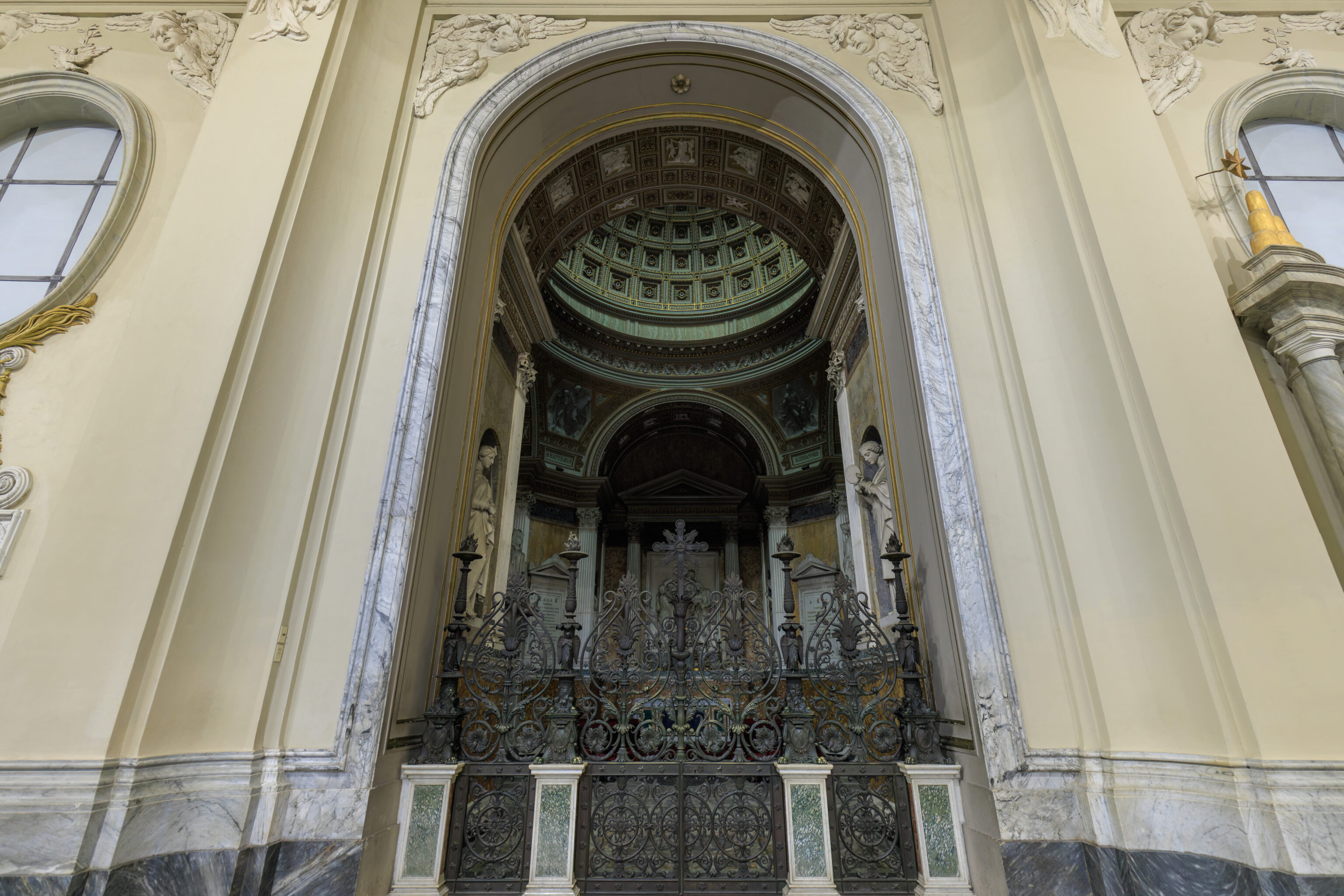
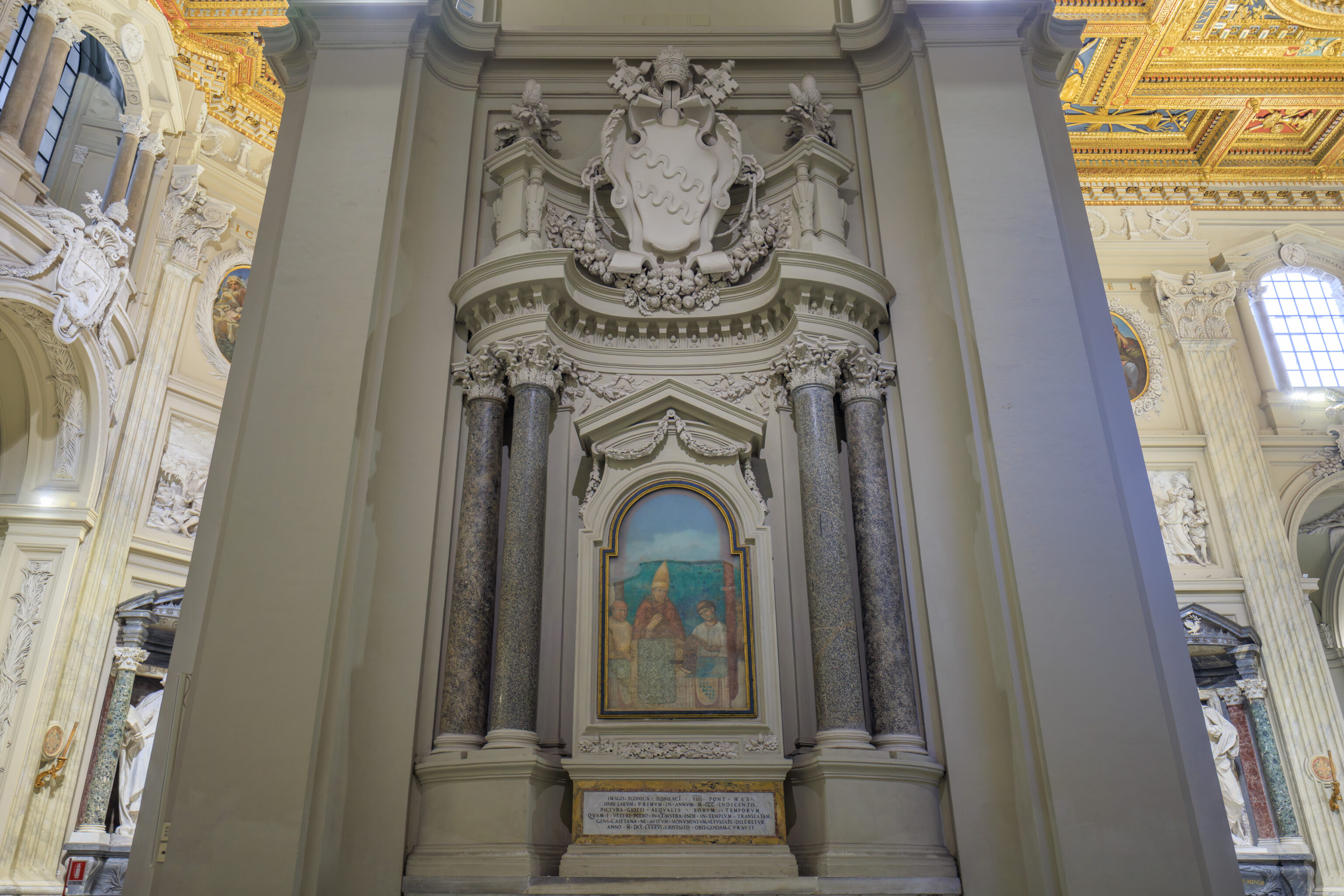
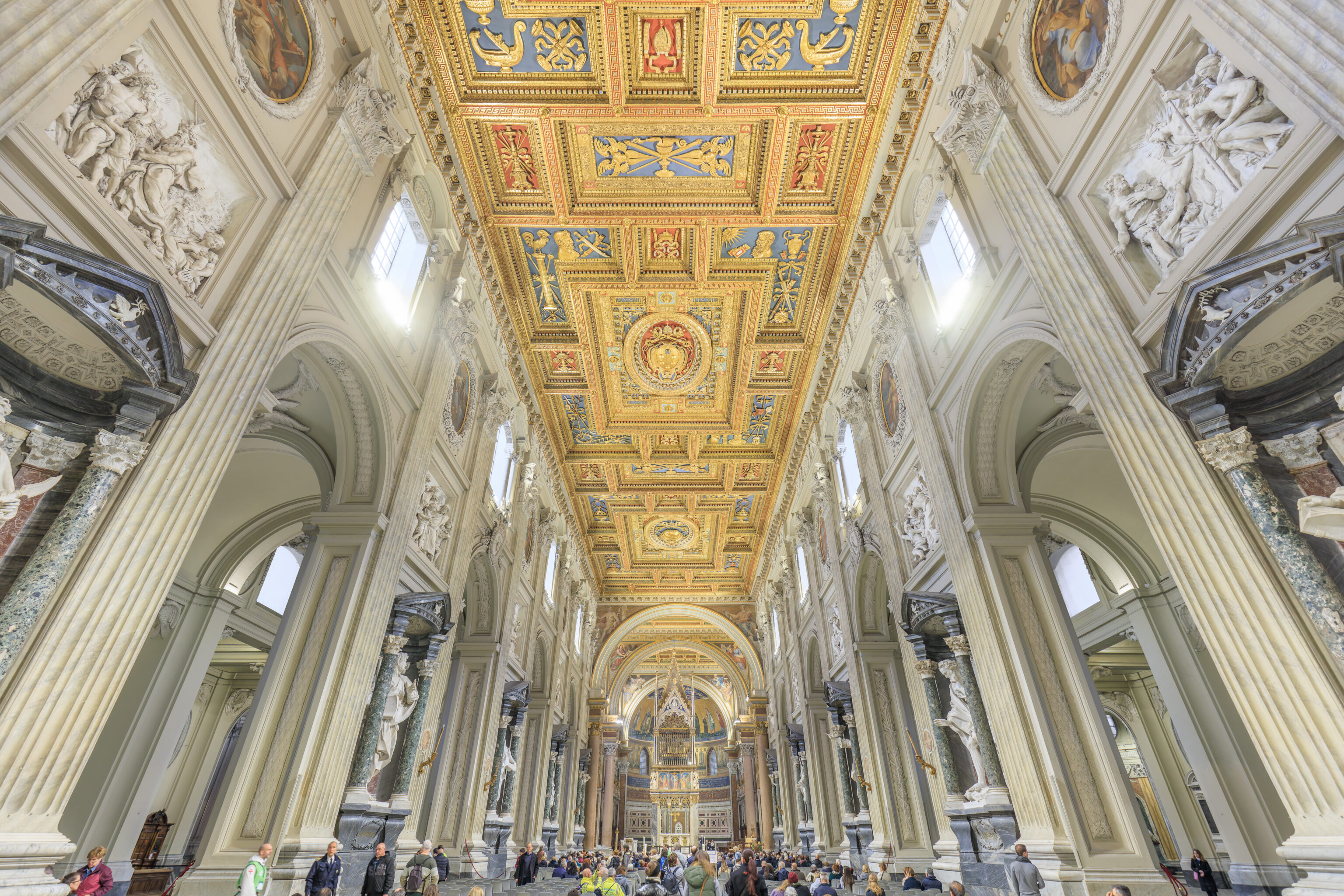
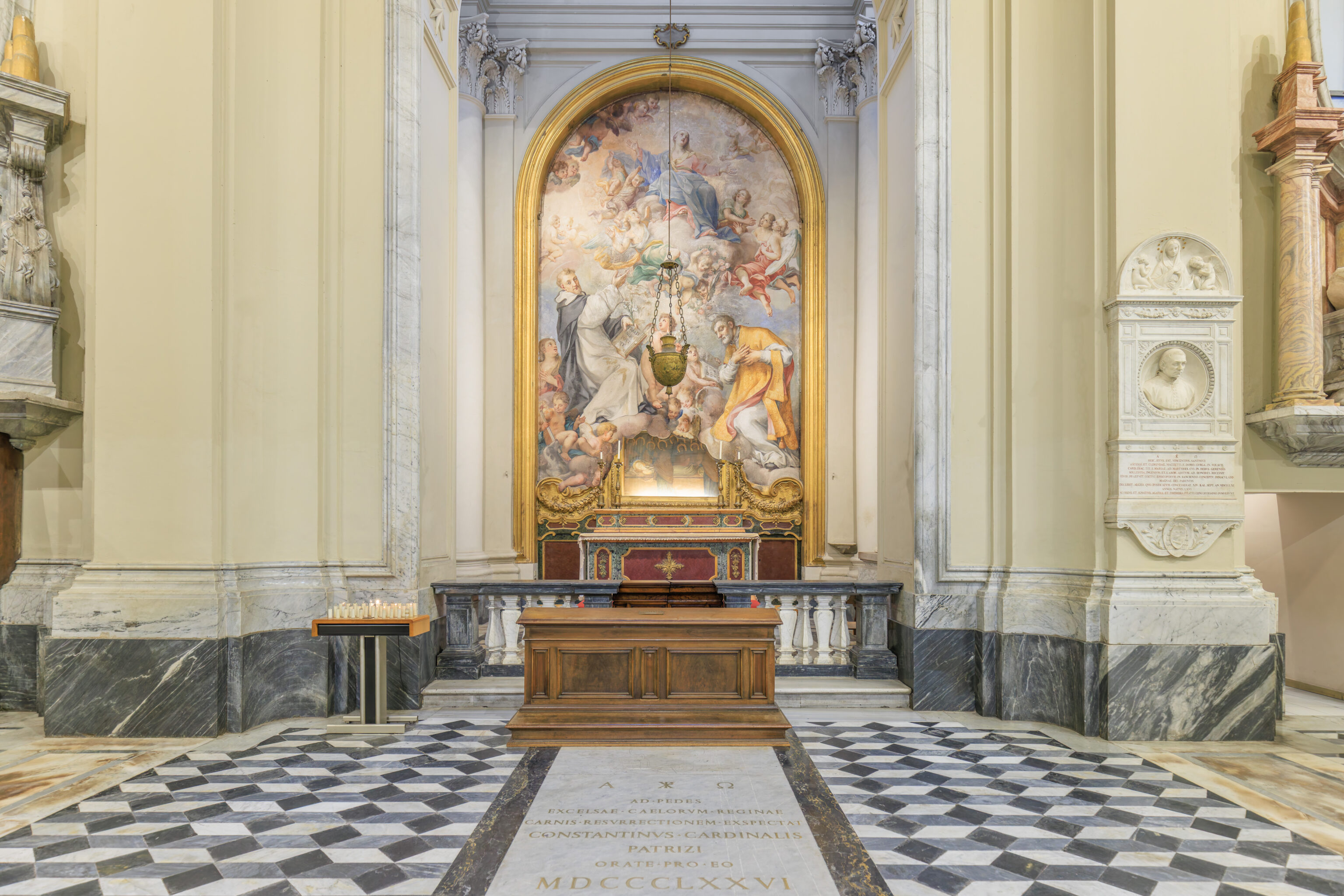
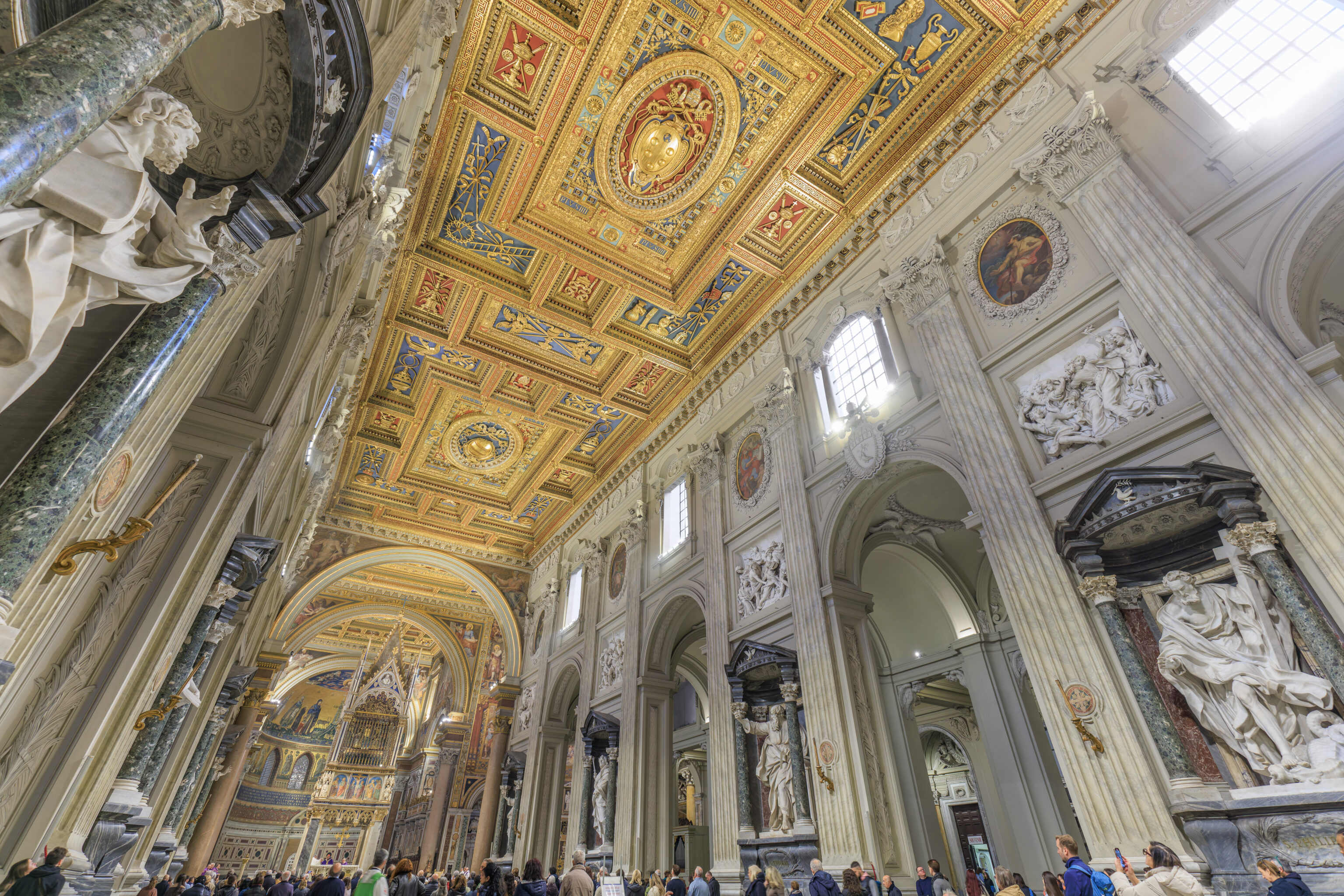
We continued walking through the vast basilica while keeping an eye on what was going on with the service.
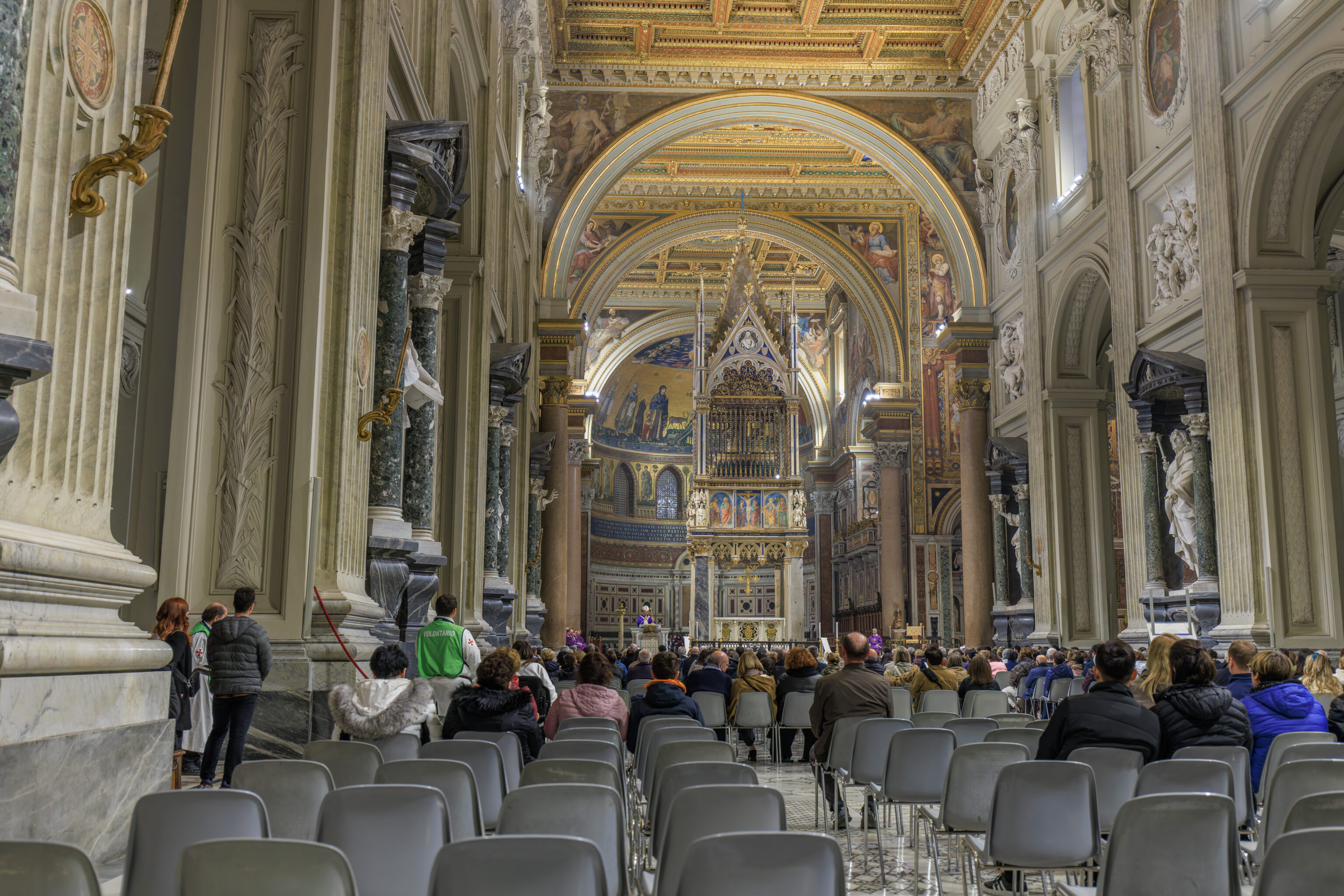
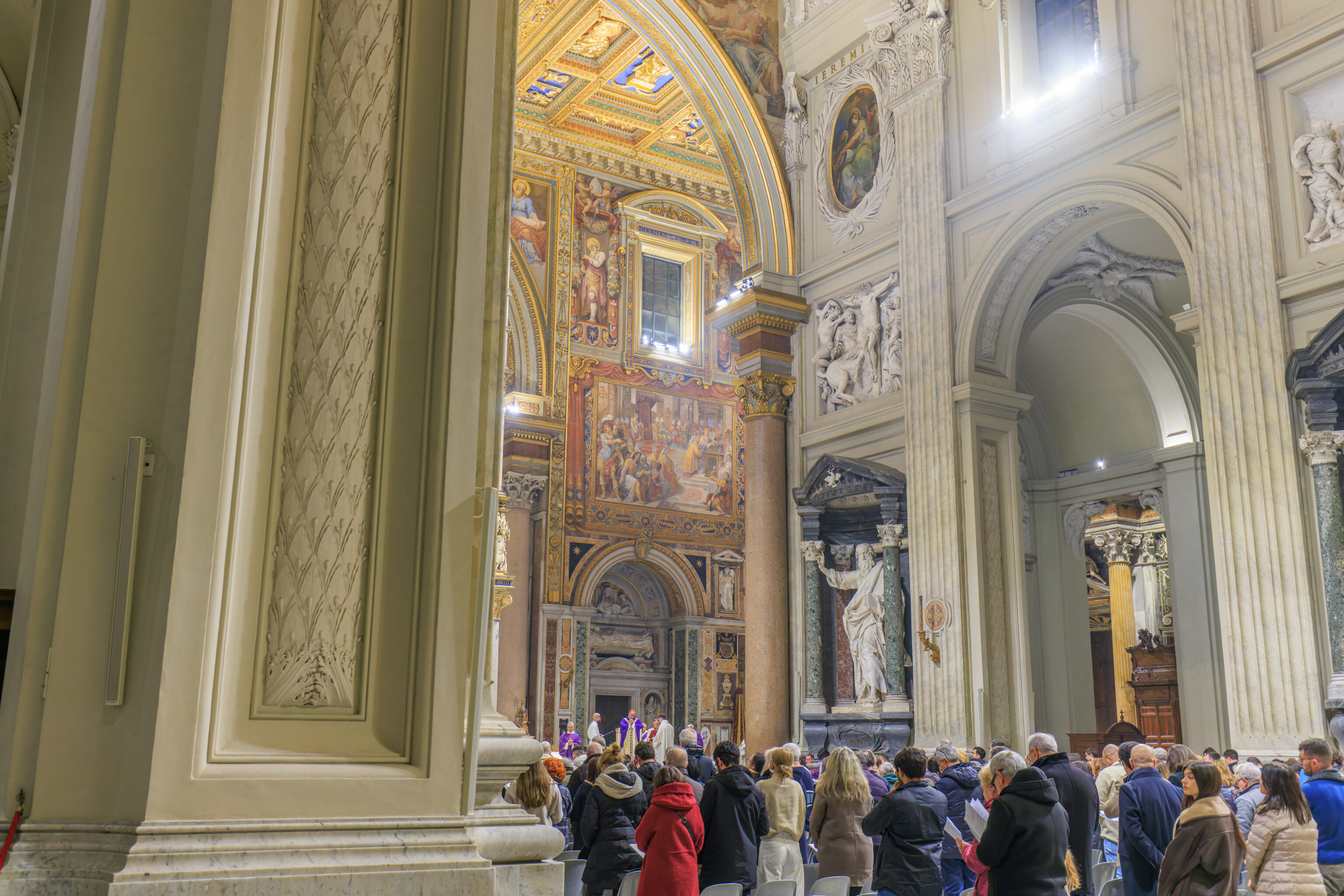
The man in the purple robes, seen with both a red cap (zuchetto) and a mitre, is possibly a cardinal and/or bishop. But he is not the Bishop of Rome as the Bishop of Rome is the Pope and Pope Francis is currently still in the hospital.
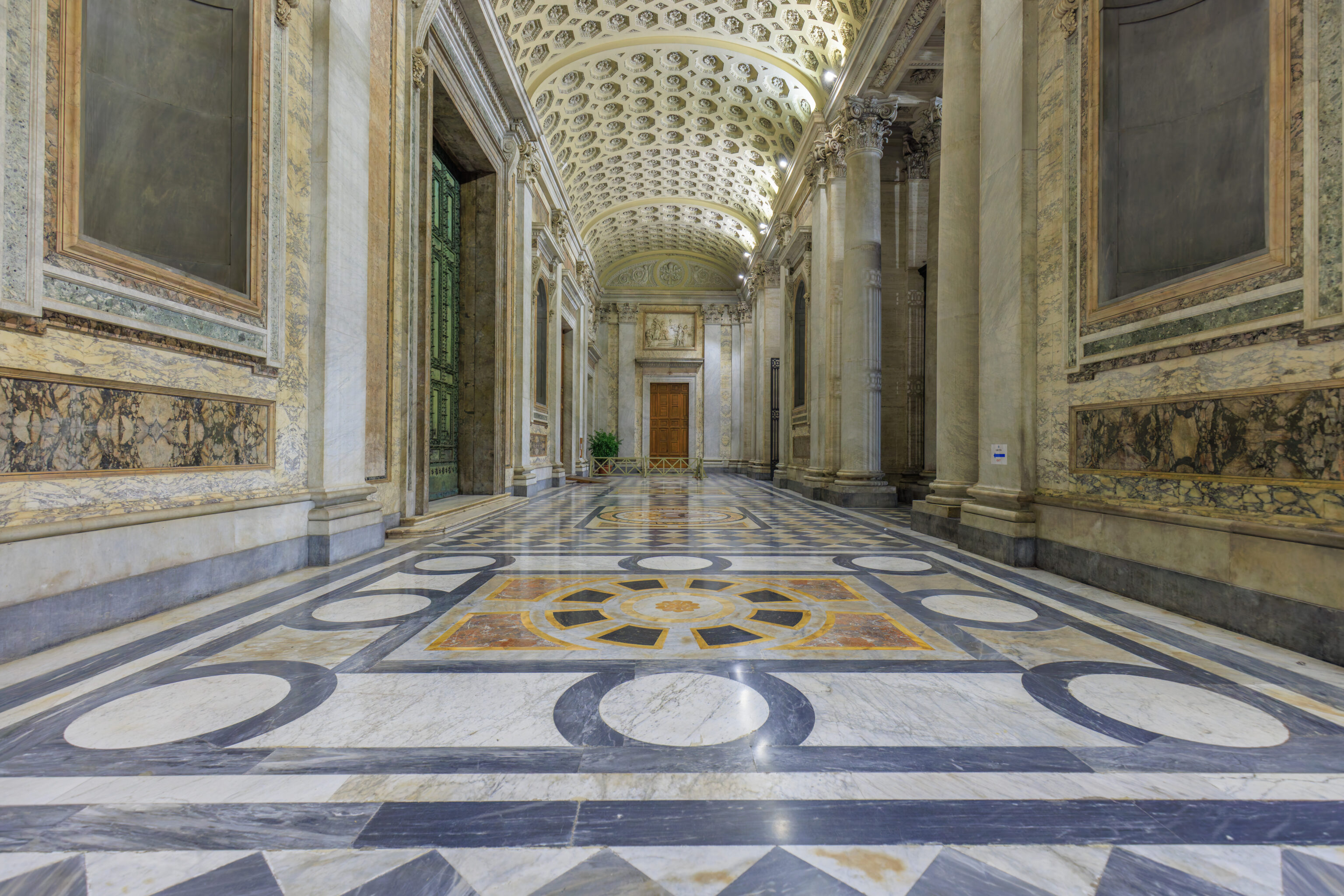
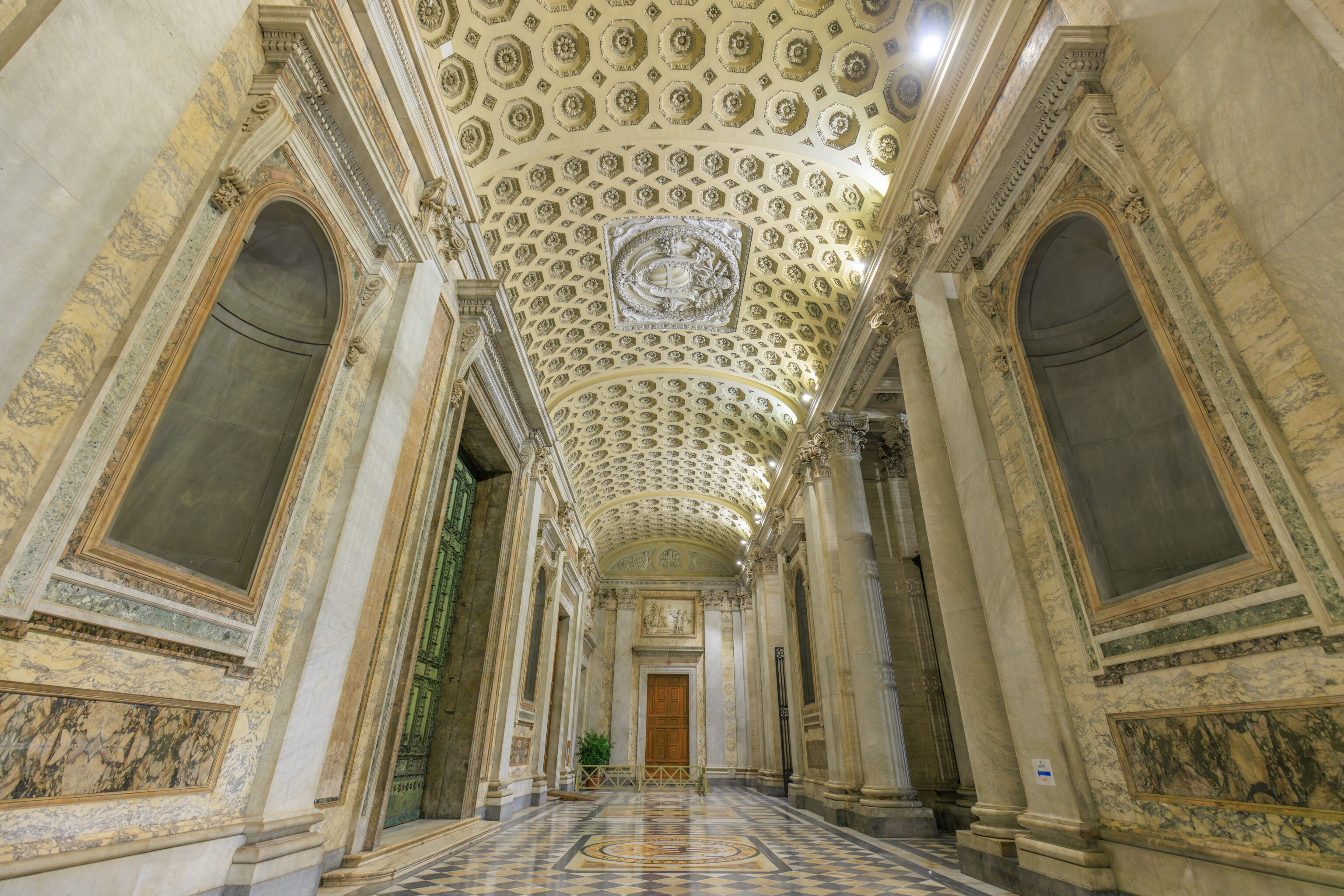
The service was still ongoing as we headed out at around 6:30pm. By now, there were significantly less tourists around.
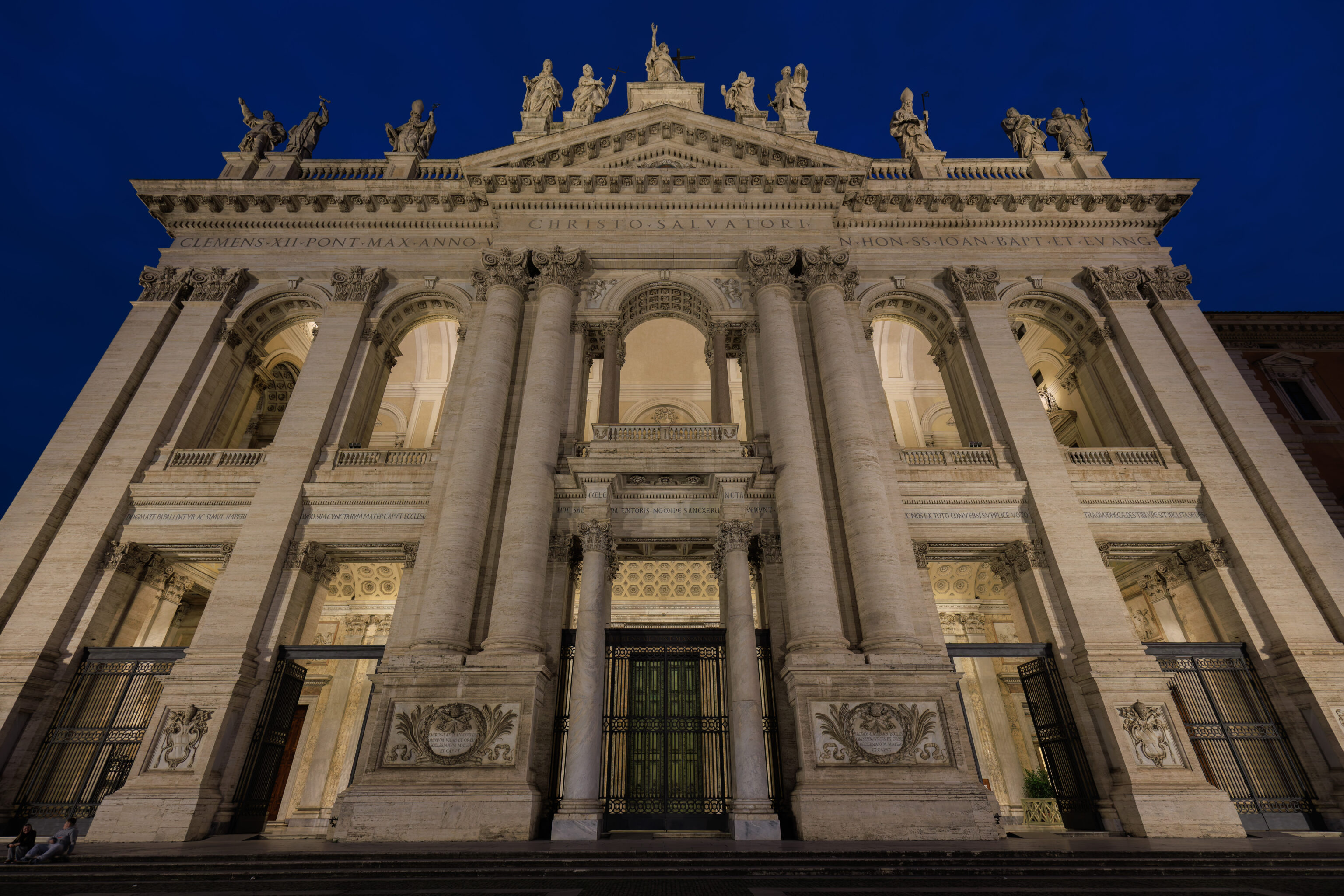
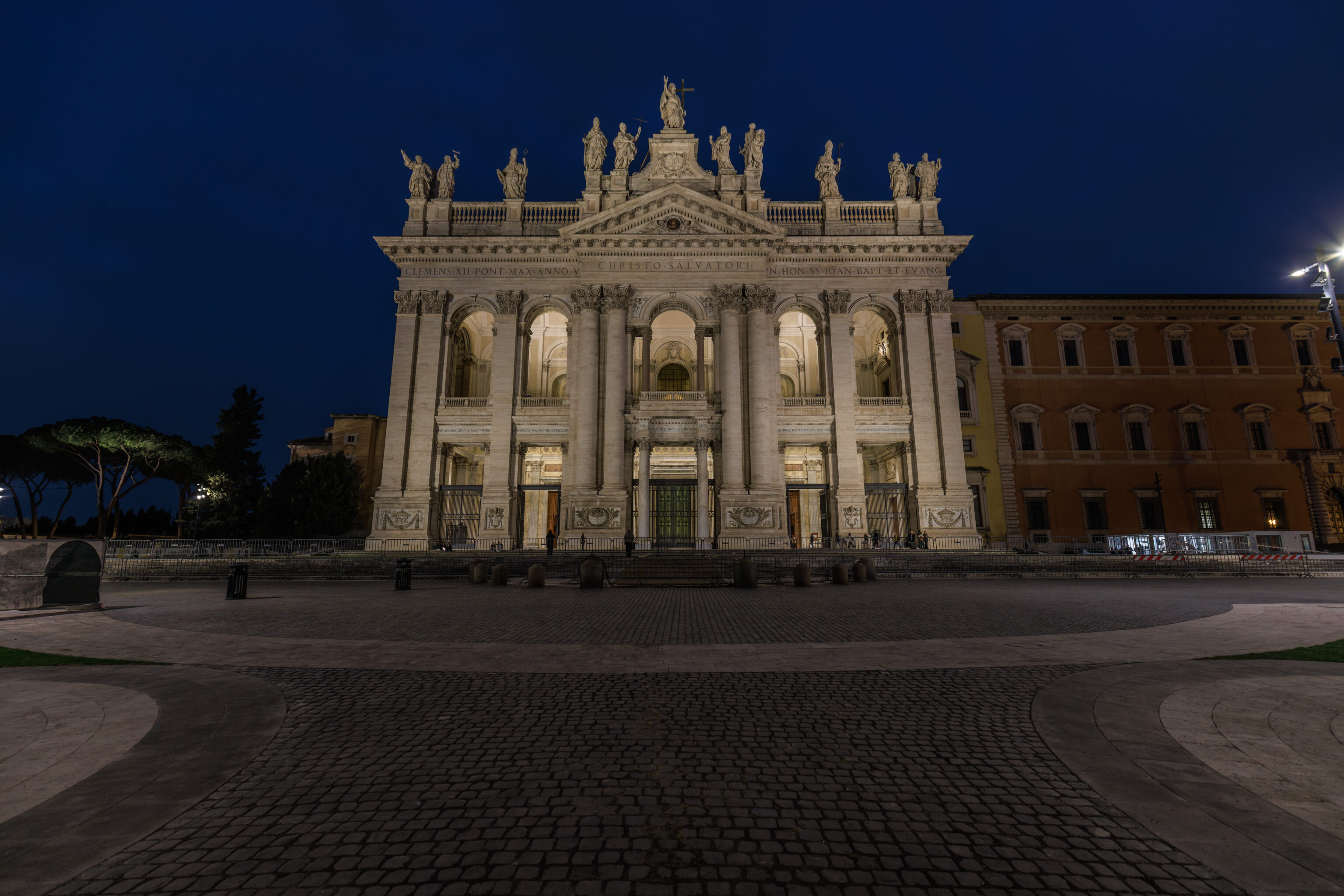
It was dark when exited the basilica.
Back to the W
We decided to return to the W via the Metro as the San Giovanni station is on Line A (Orange) which stops at Barberini near the W.
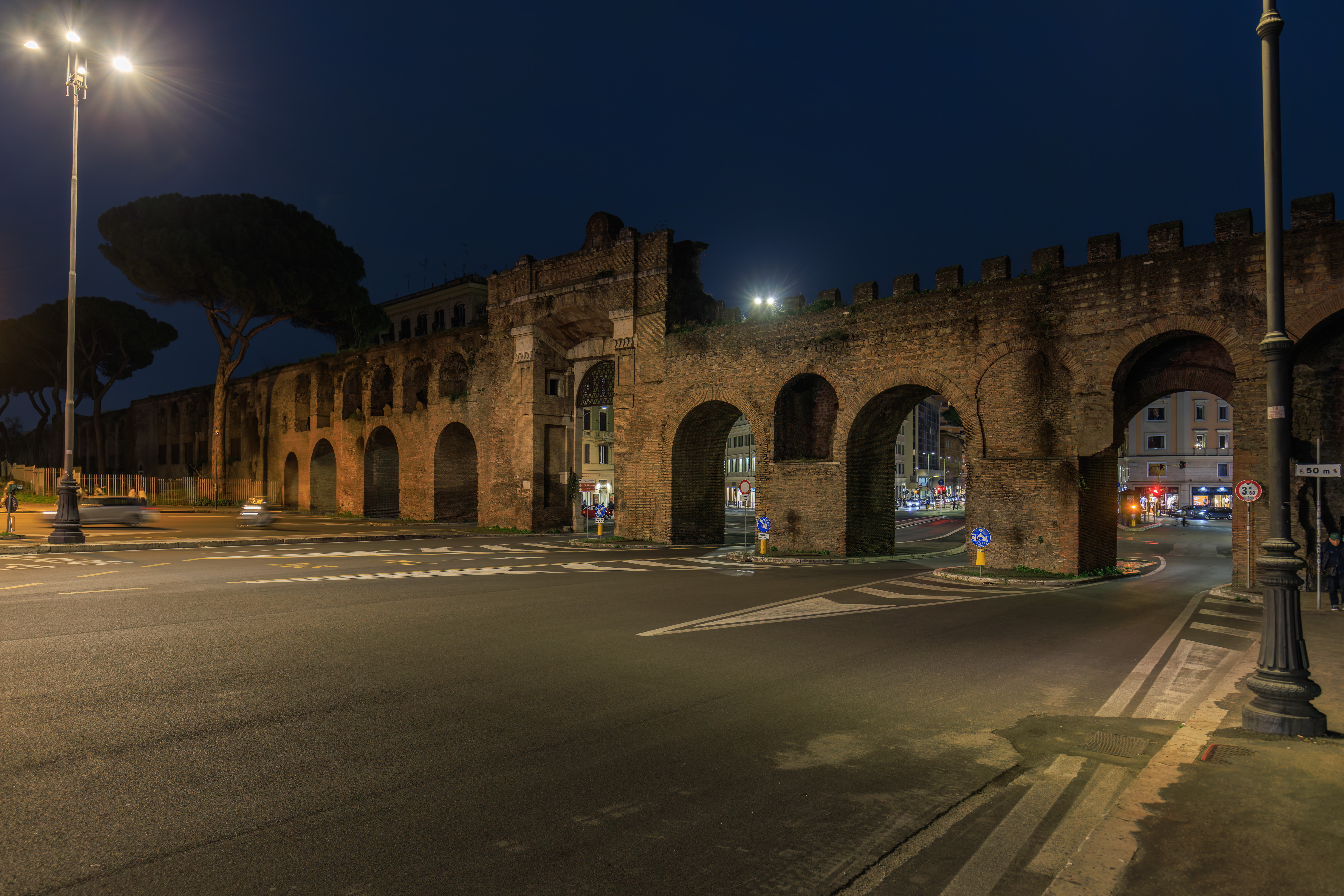
We walked through the Aurelian Wall though the Porta San Giovanni just to the east of the basilica.
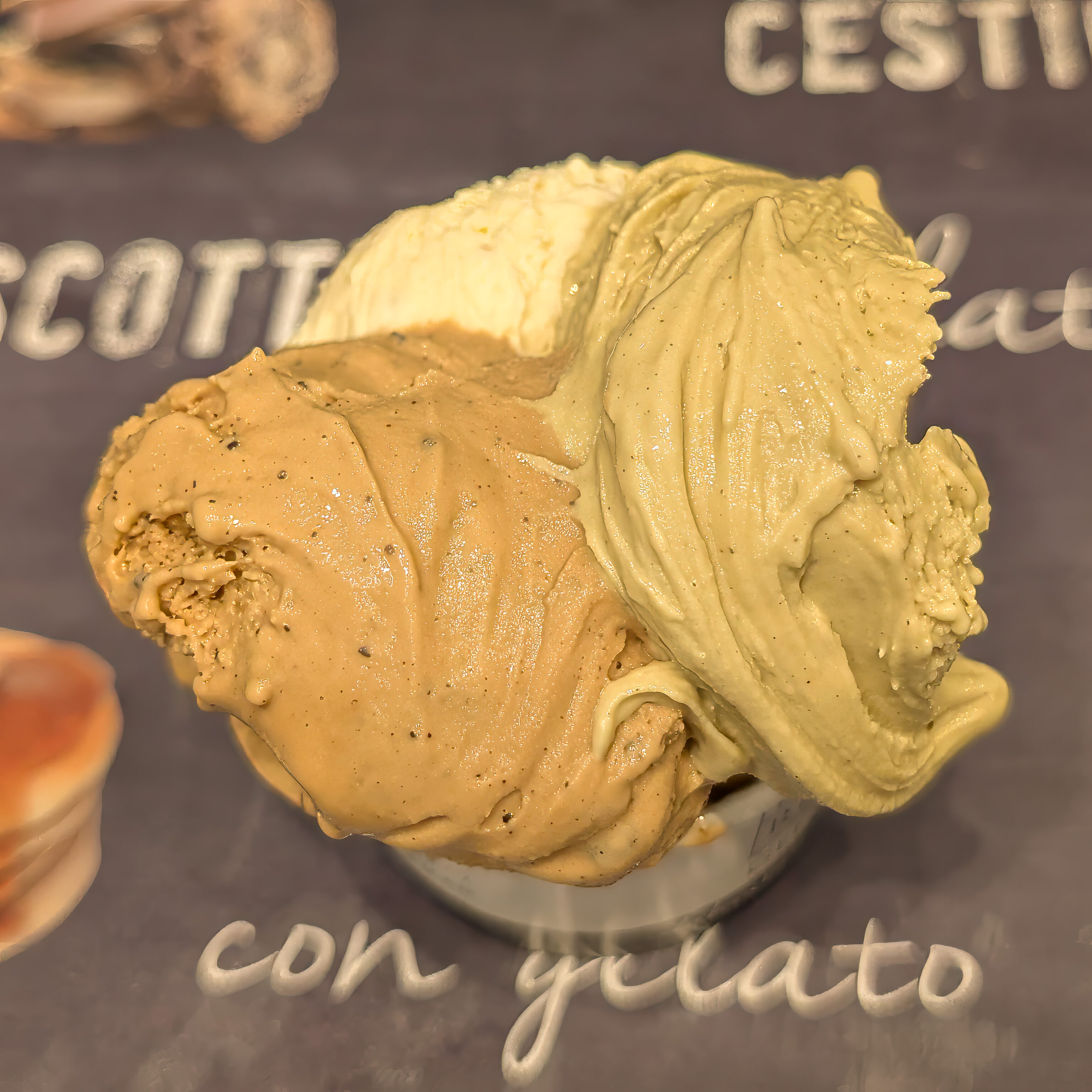
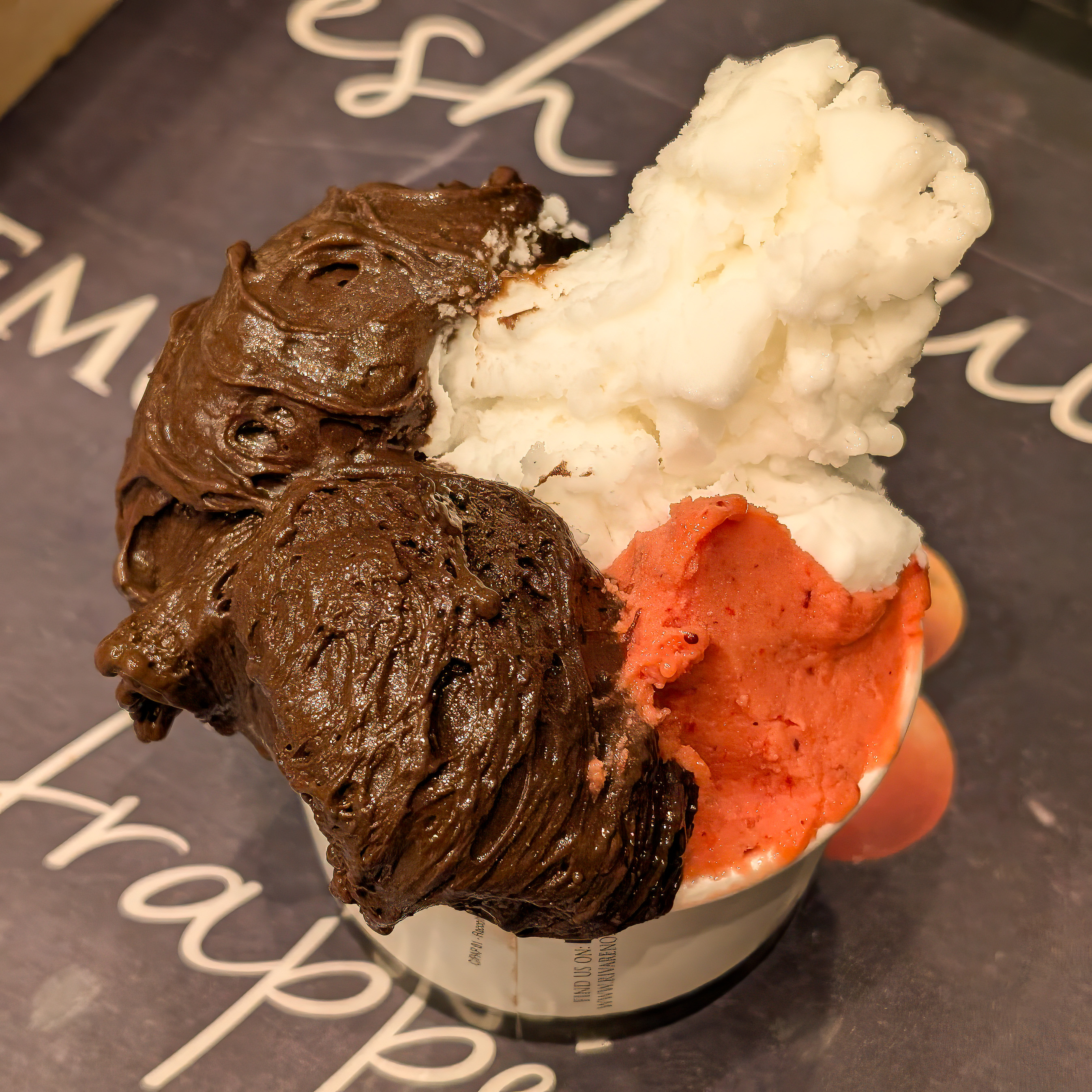
We decided to get some gelato before going down into the Metro station. We visited RivaReno which was on the same block as the station. RivaReno is a small gelato chain from Milan with one of the founders having learned how to make gelato in Bologna.
After ordering one gelato with 4 scoops, it was so good that we ordered a second, something we rarely do. We ended up trying eight flavors total – coffee, orange, pistachio, pine seed, lemon, strawberry, black chocolate, and chocolate with rum. Probably the new best we’ve had!
Other than their Italian locations, they have some shops around the world and are opening one in New York City.
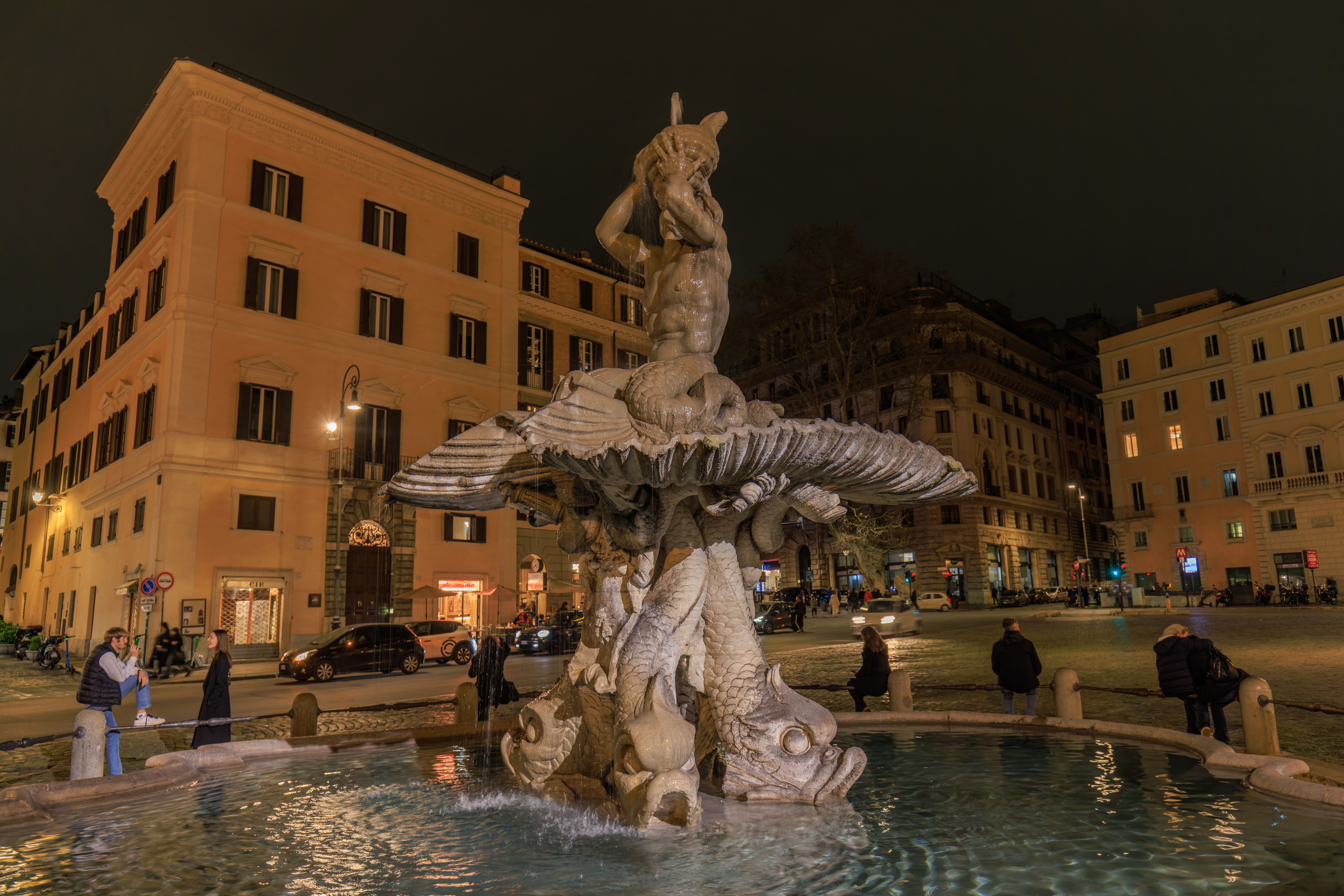
After taking the Metro to the Barberini station, we decided to check out the Piazza Barberini which is more or less directly above the station. This fountain, the Fontana del Tritone (Triton Fountain), dates back to the 17th century. The sculpture includes the thre bees that are make up the Barberini coat of arms.
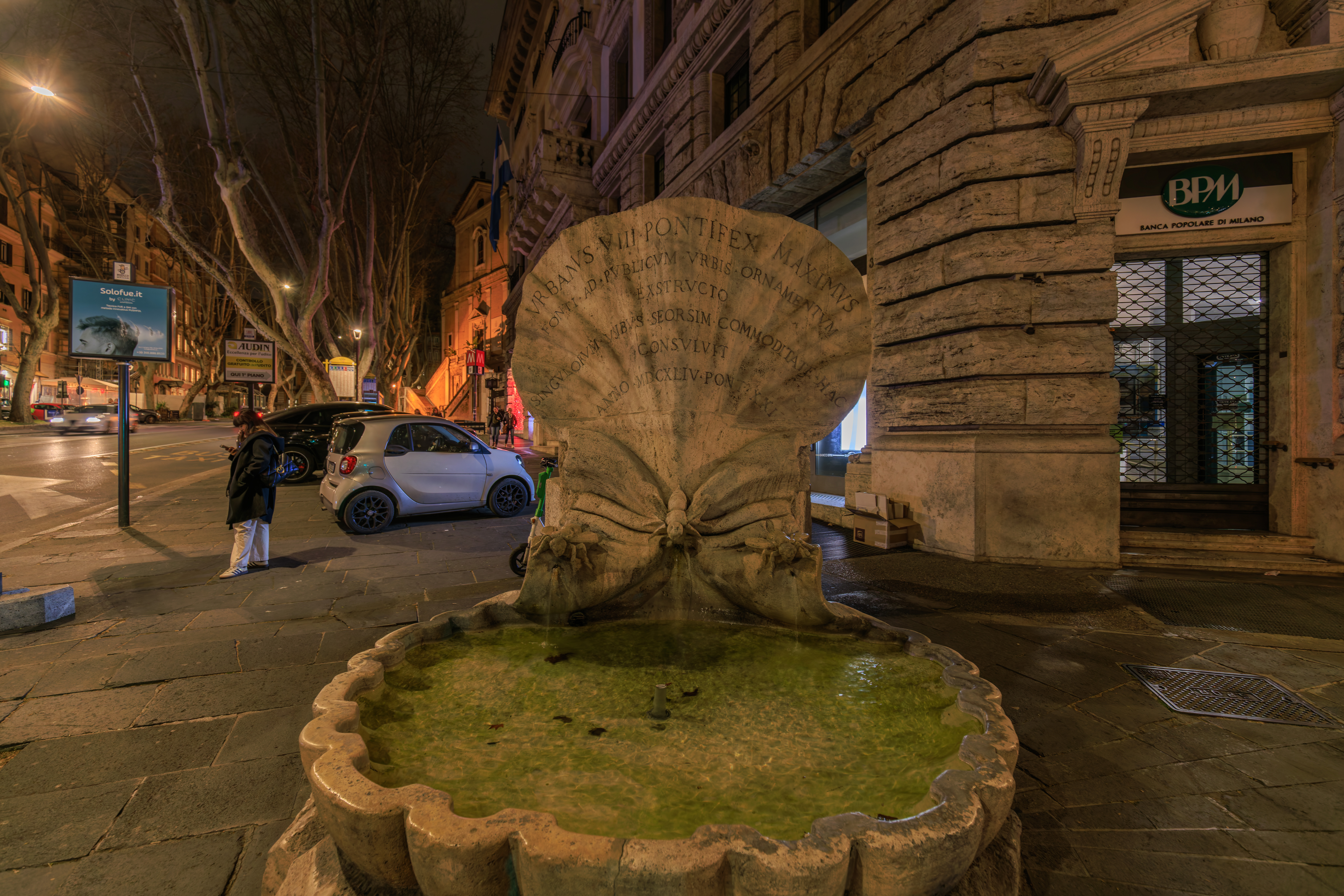
This smaller nearby fountain is the Fontana delle Api (Fountain of the Bees). It was intended to be used as a horse trough. It is unfortunately a replica of the original from the 17th century as it was disassembled and placed in storage with most of the pieces lost.

We visited a nearby market, Pam, before heading back to the W. We ended up buying some raspberries and some Italian chocolate bars.
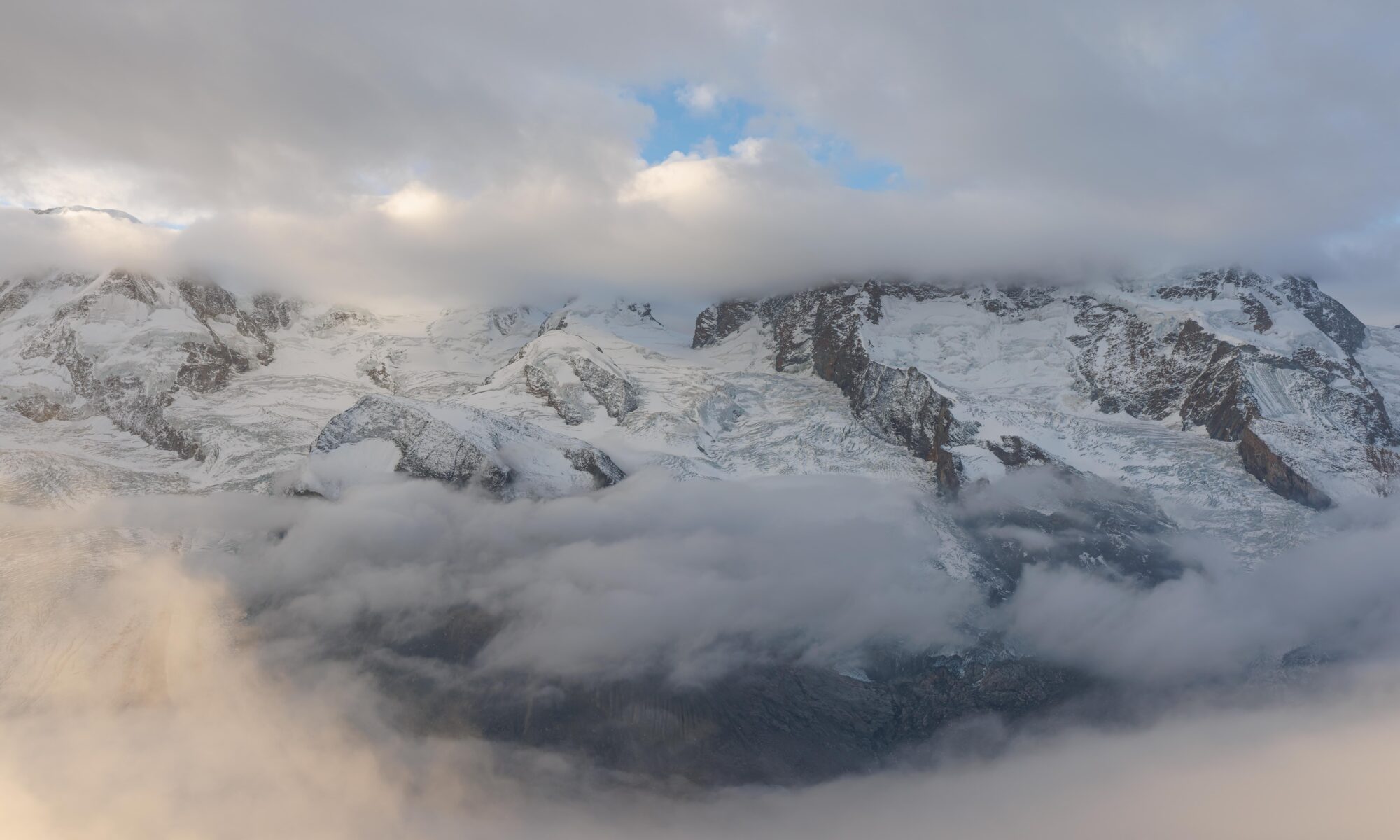
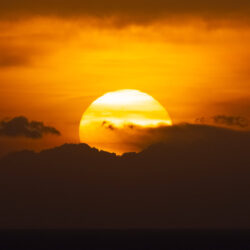
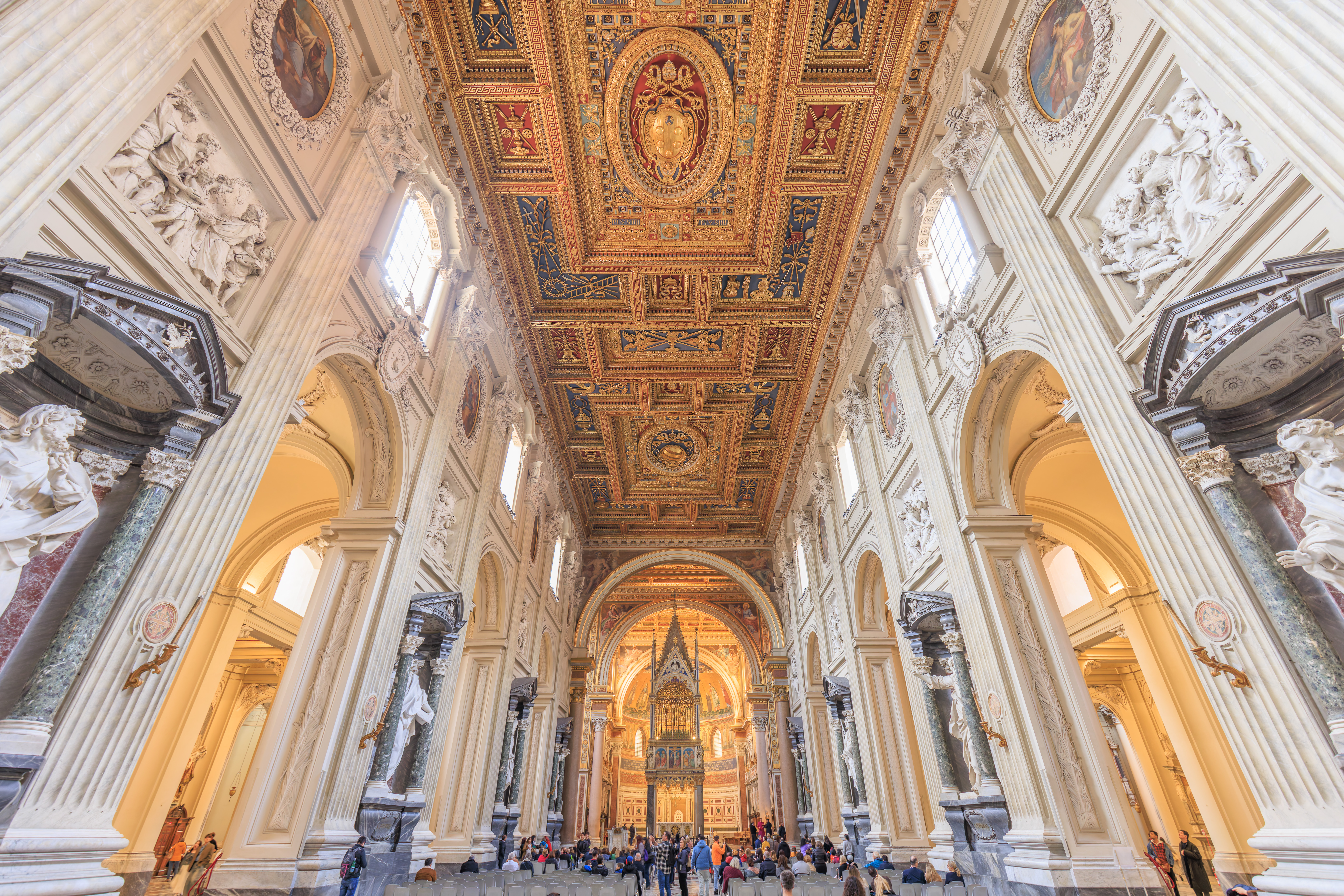
2 Replies to “Vittorio Emanuele II and the Basilica di San Giovanni in Laterano”